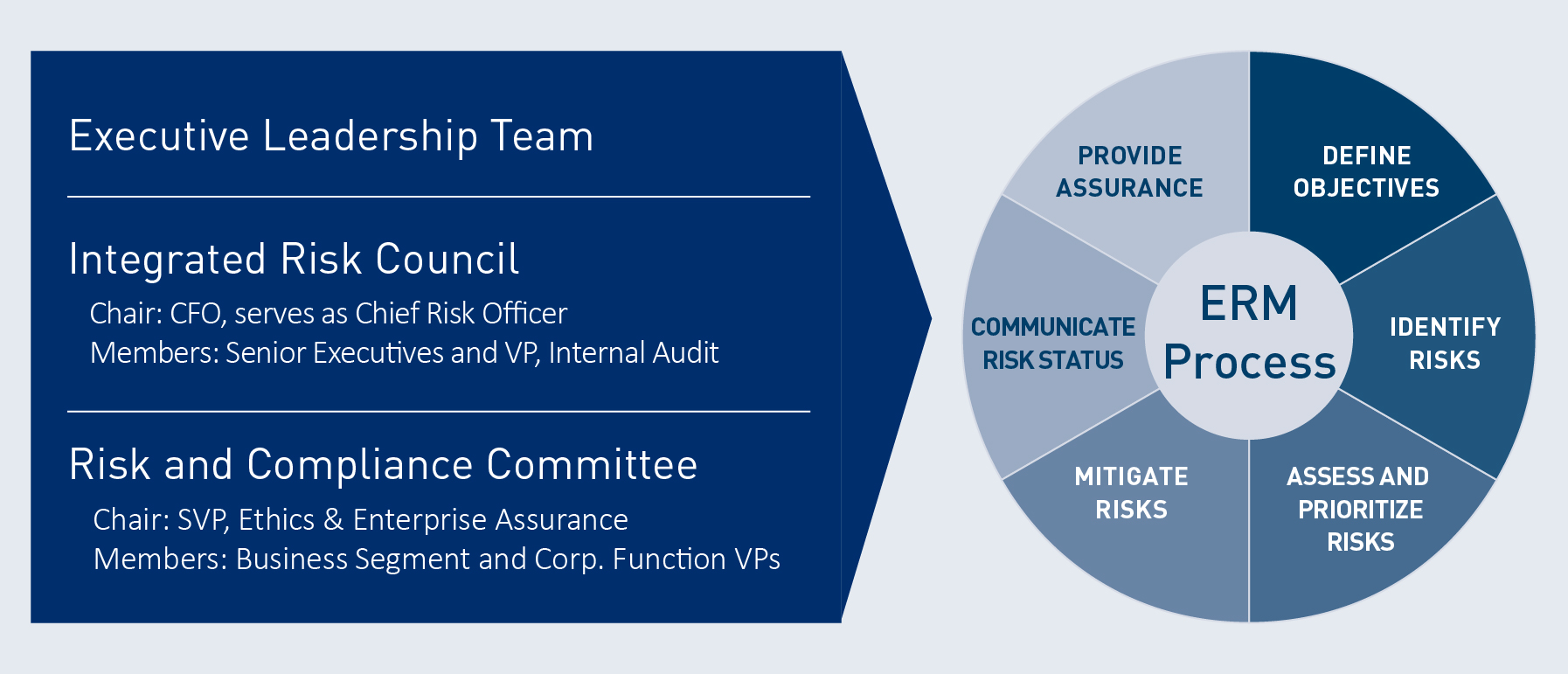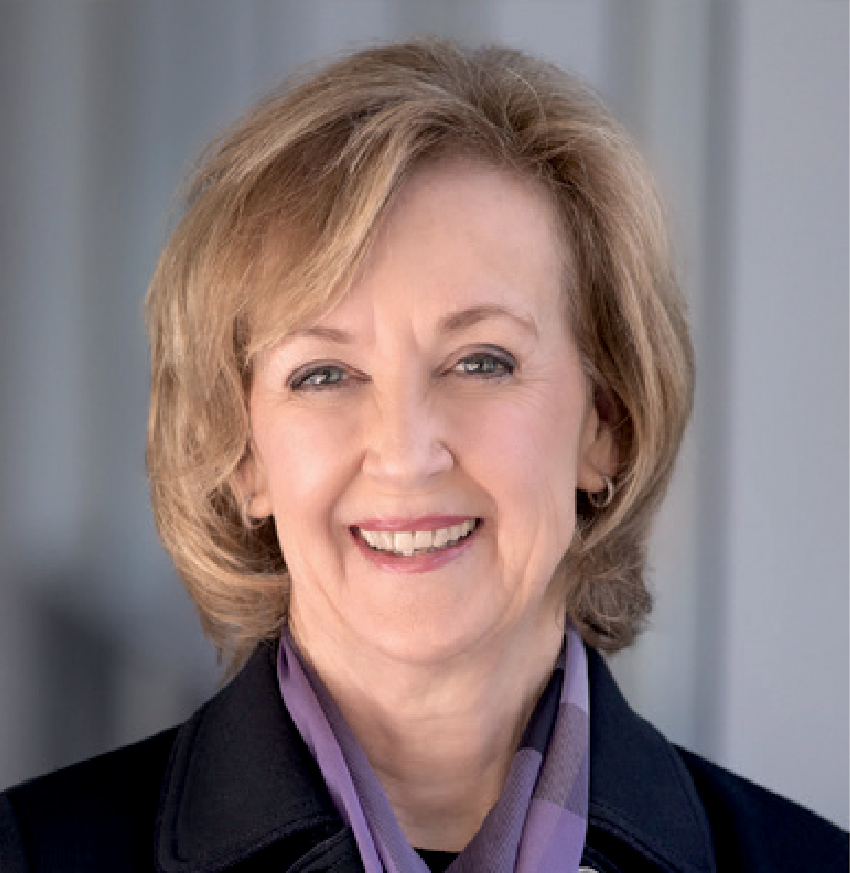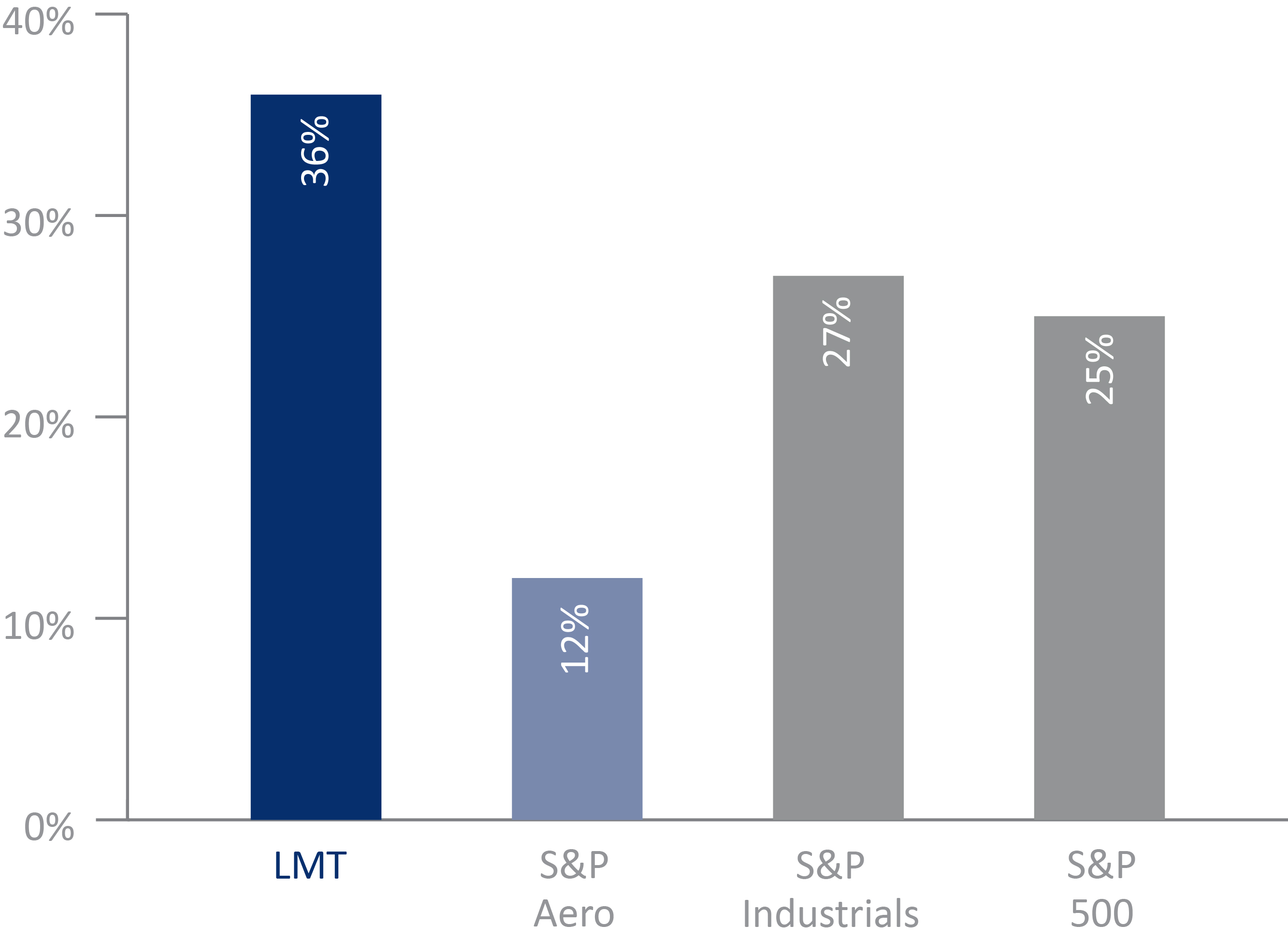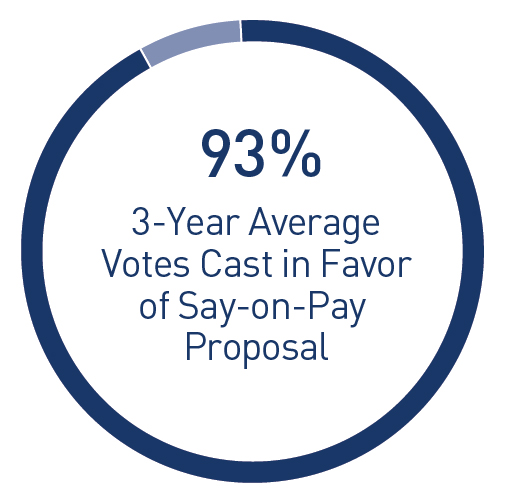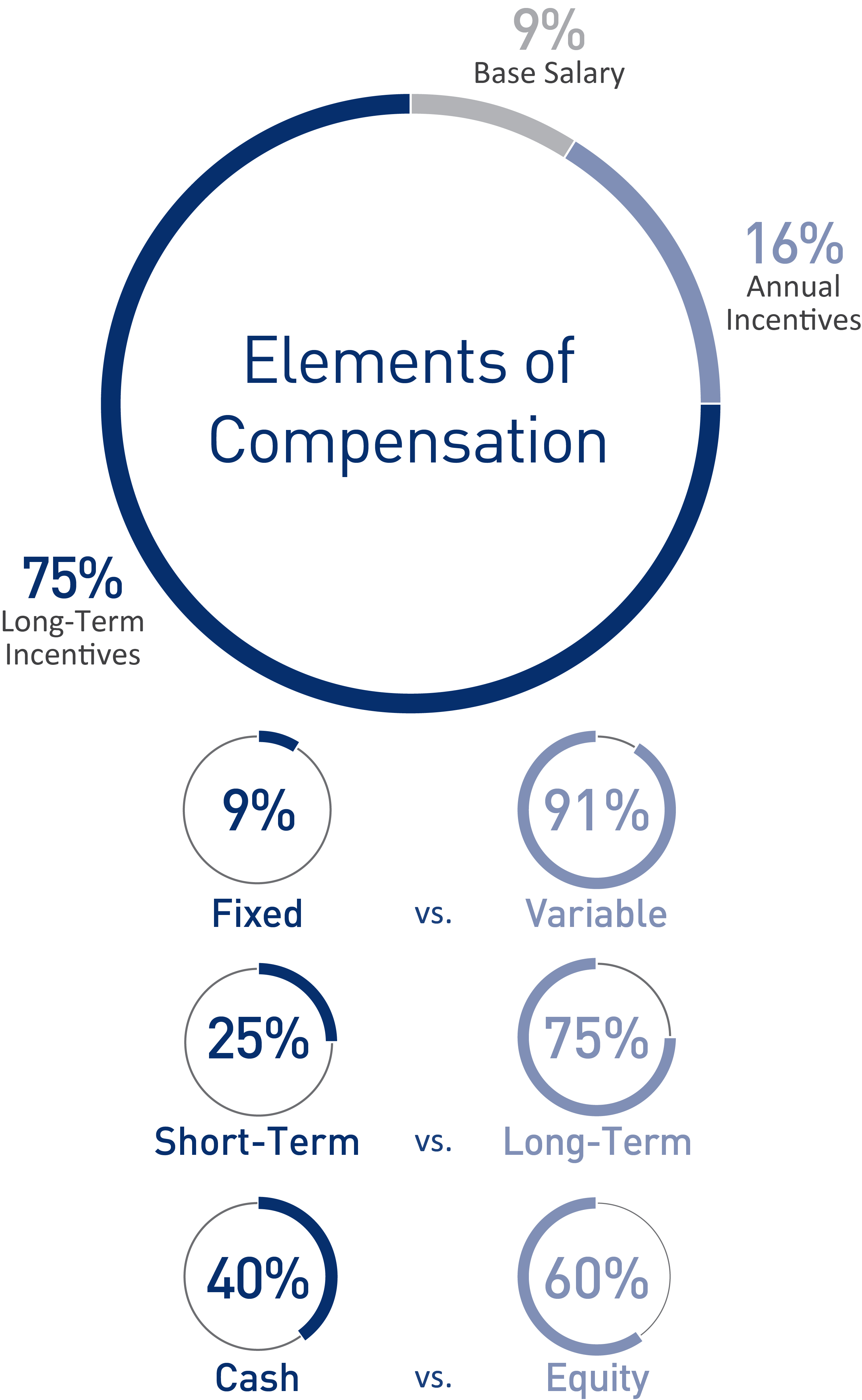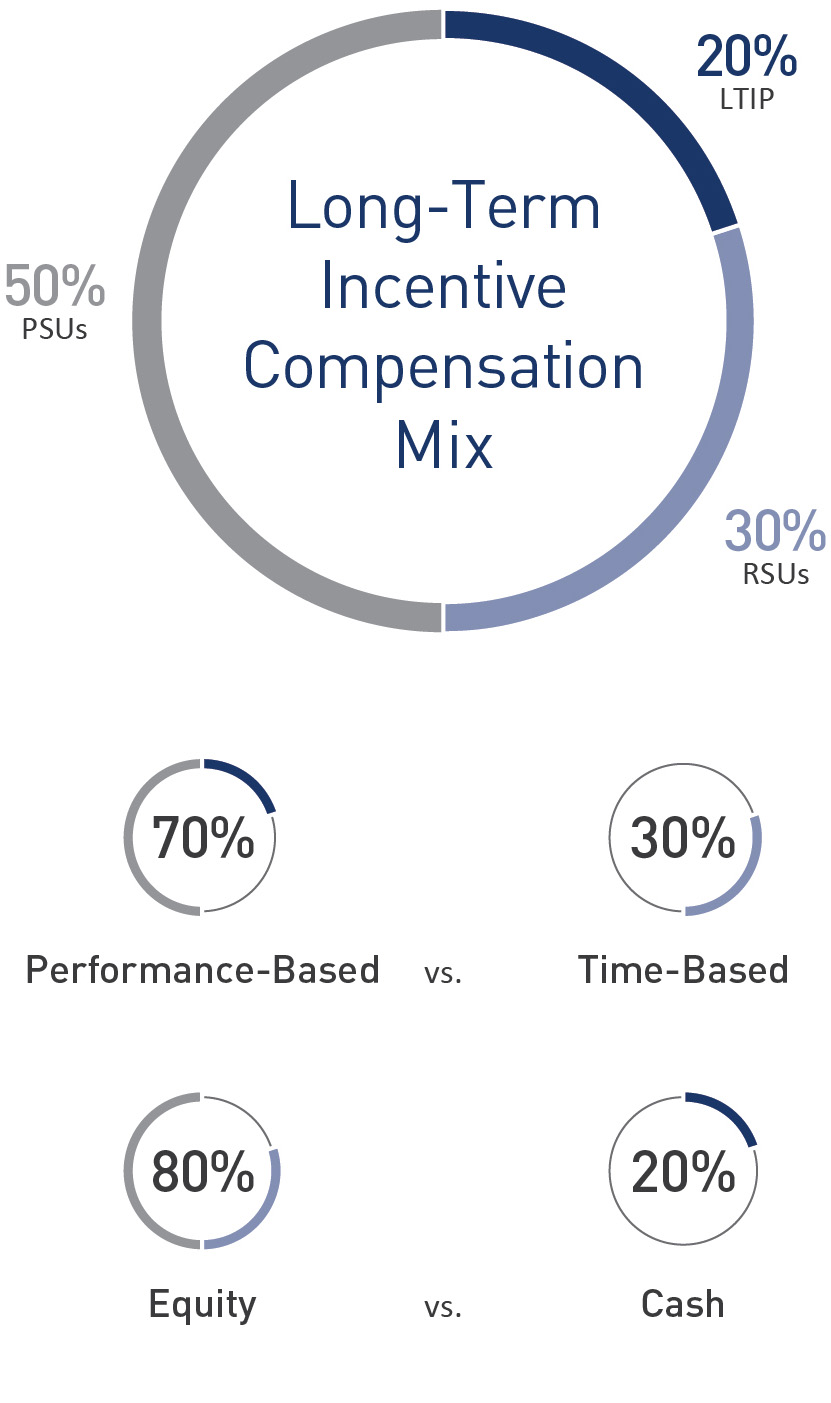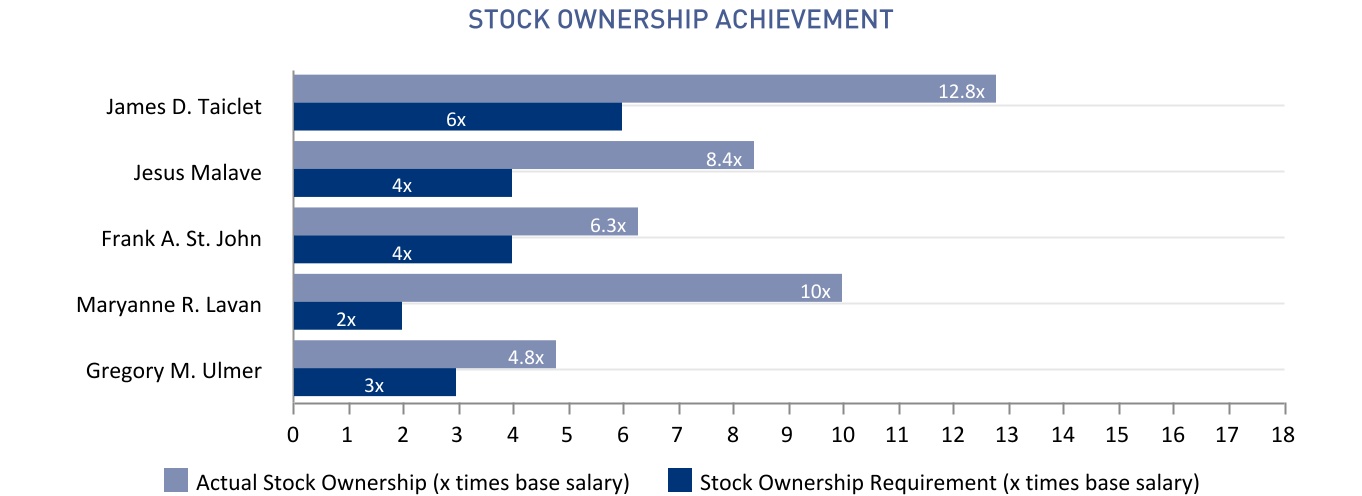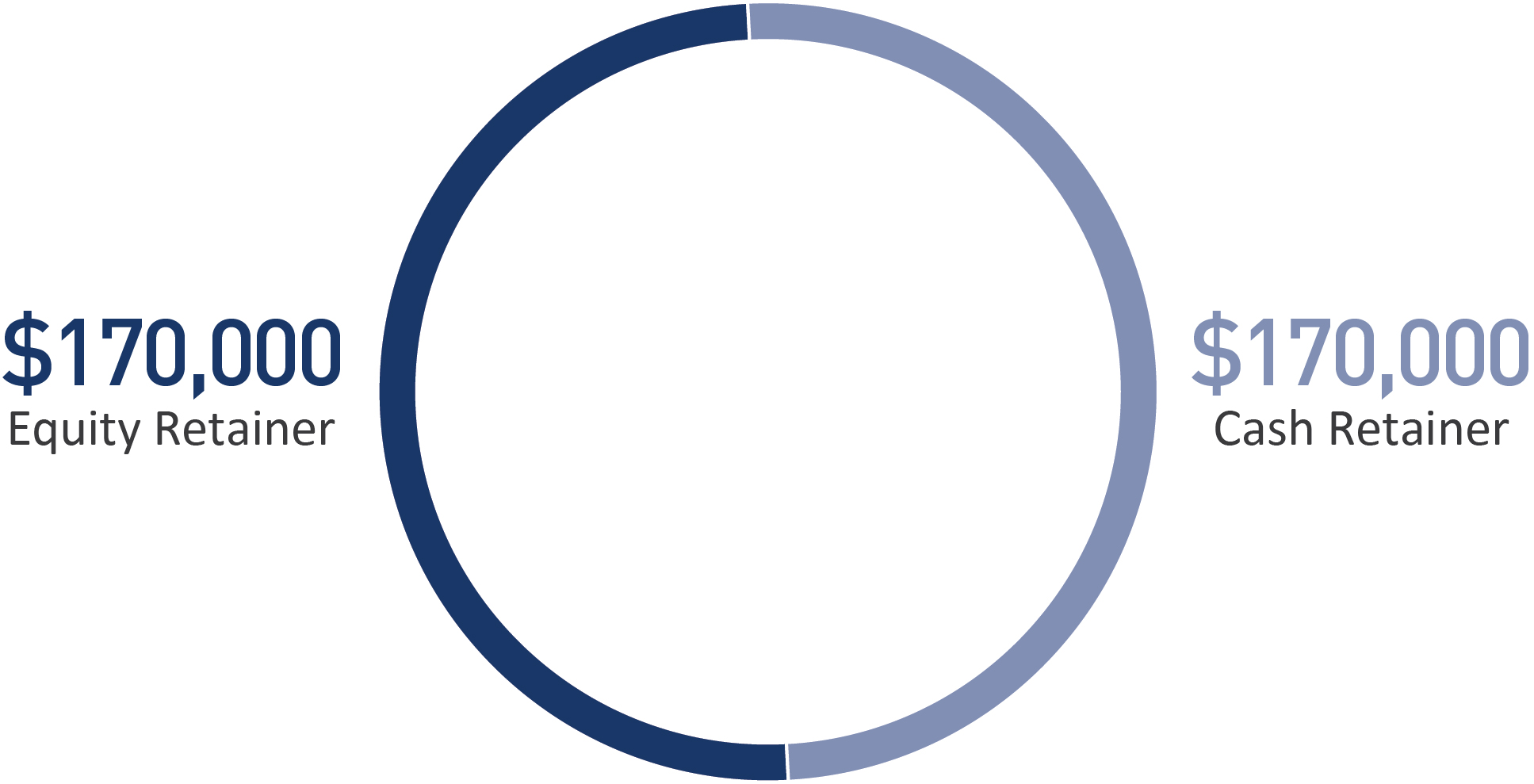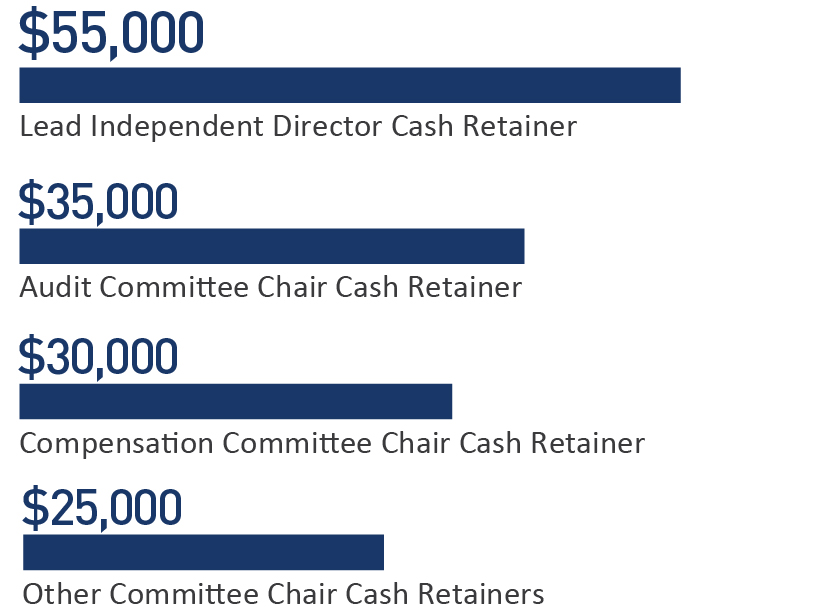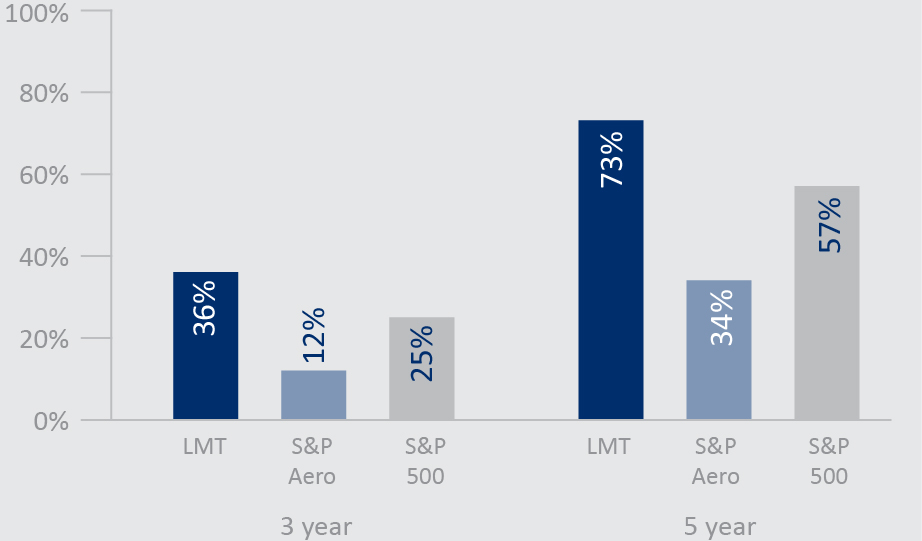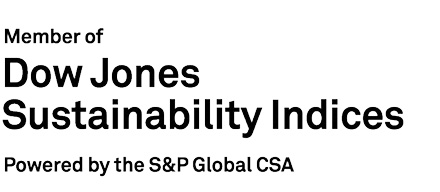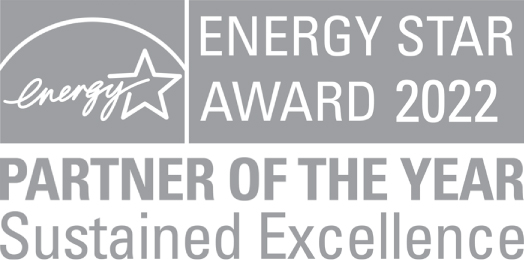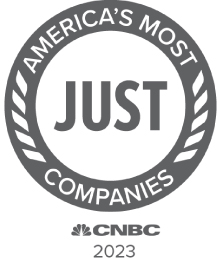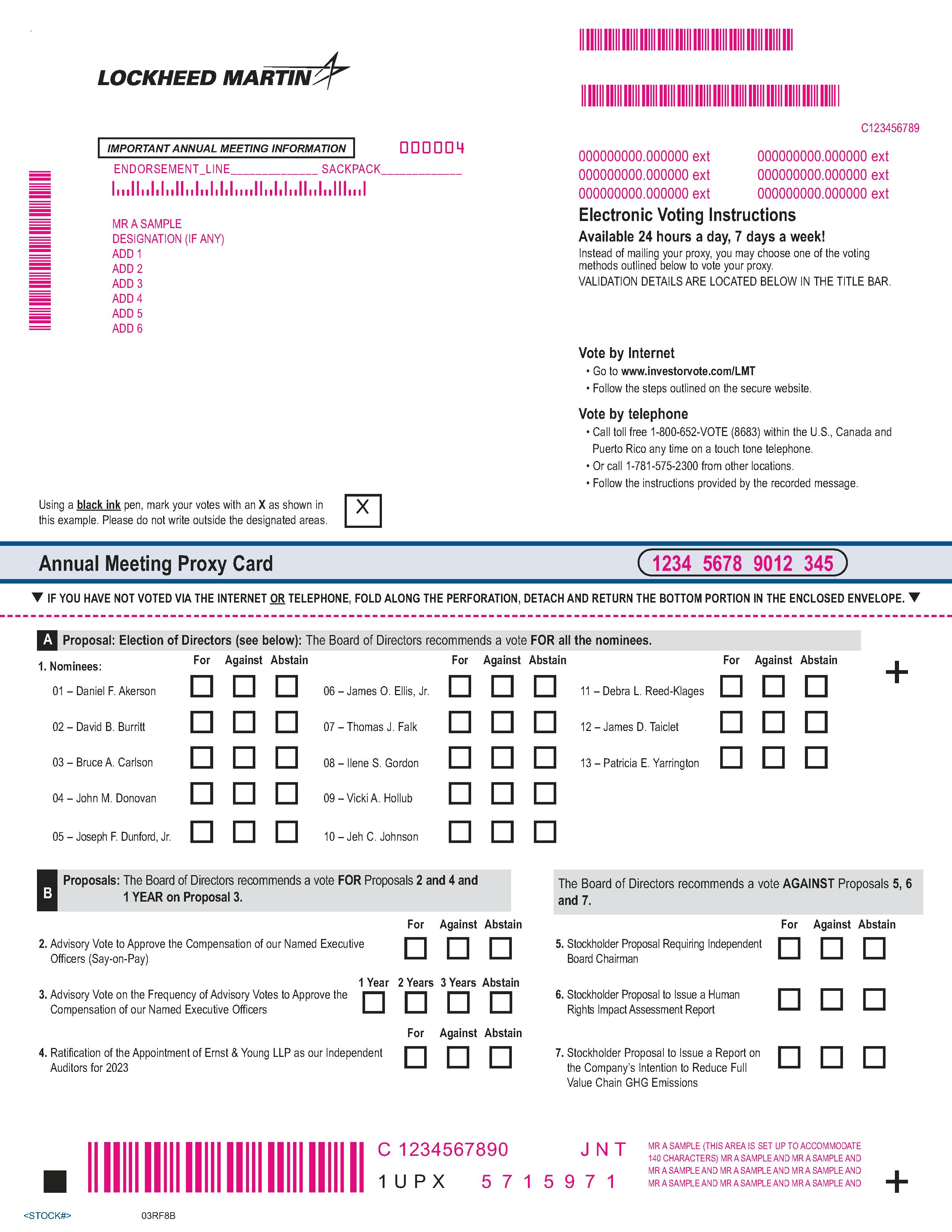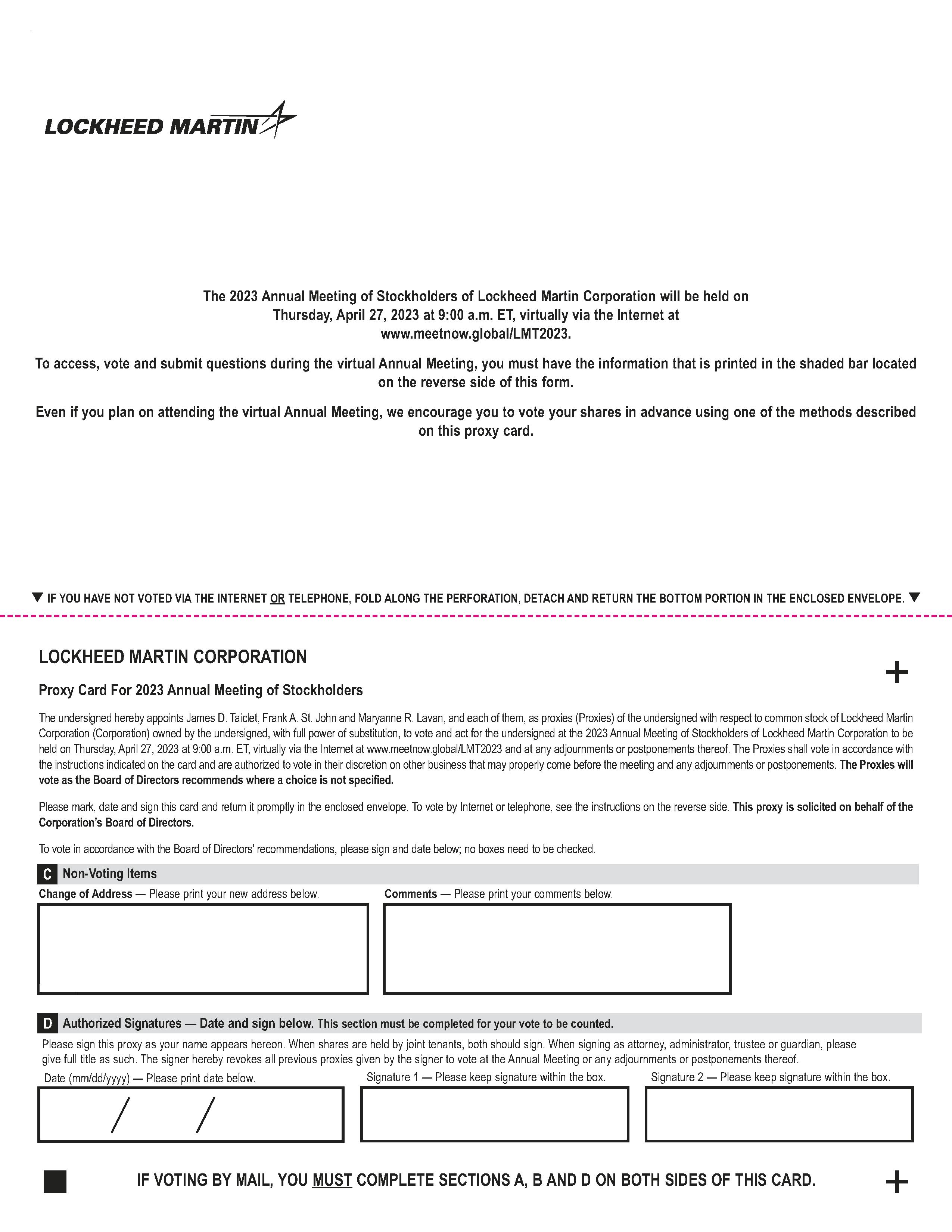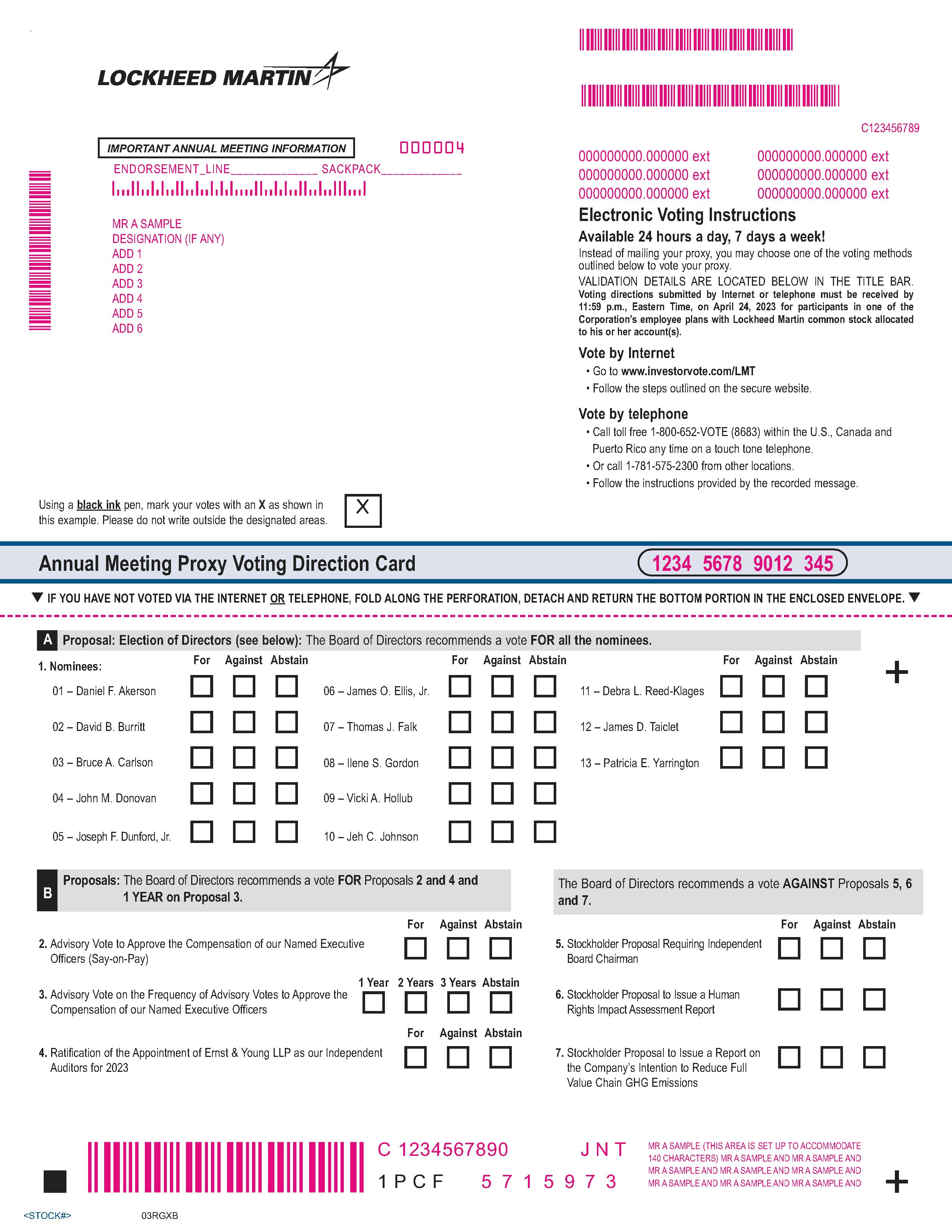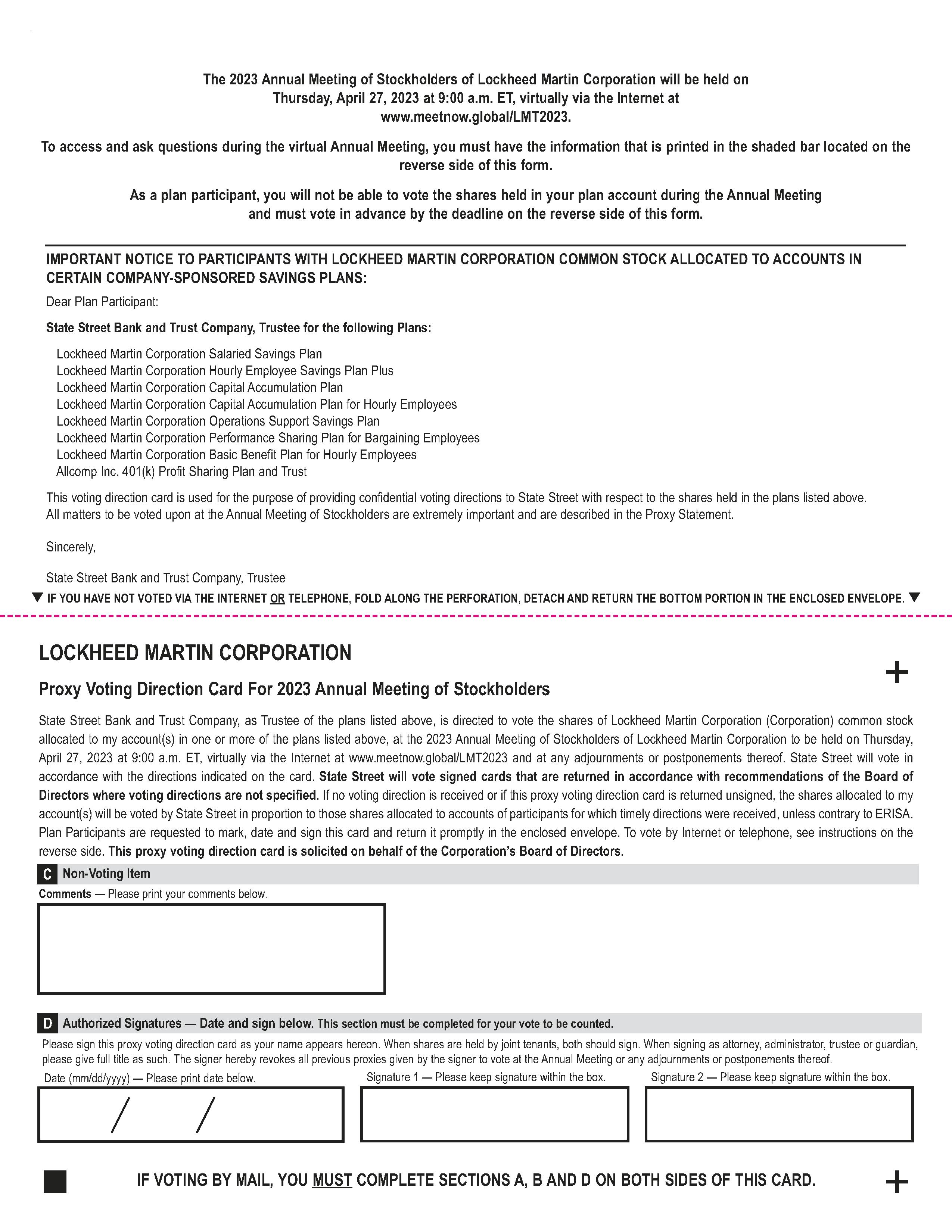LOCKHEED MARTIN CORPORATION0000936468DEF 14Afalse00009364682022-01-012022-12-310000936468lmt:TaicletMember2022-01-012022-12-31iso4217:USD0000936468lmt:HewsonMember2022-01-012022-12-31xbrli:pure0000936468lmt:TaicletMember2021-01-012021-12-310000936468lmt:HewsonMember2021-01-012021-12-3100009364682021-01-012021-12-310000936468lmt:TaicletMember2020-01-012020-12-310000936468lmt:HewsonMember2020-01-012020-12-3100009364682020-01-012020-12-3100009364682020-06-152020-12-3100009364682020-01-012020-06-140000936468ecd:PeoMemberlmt:AdjustmentExclusionOfChangeInPensionValueMemberlmt:TaicletMember2022-01-012022-12-310000936468ecd:PeoMemberlmt:AdjustmentExclusionOfStockAwardsMemberlmt:TaicletMember2022-01-012022-12-310000936468ecd:PeoMemberlmt:TaicletMemberlmt:AdjustmentInclusionOfPensionServiceCostMember2022-01-012022-12-310000936468ecd:PeoMemberlmt:AdjustmentEquityAwardAdjustmentsMemberlmt:TaicletMember2022-01-012022-12-310000936468ecd:PeoMemberlmt:AdjustmentExclusionOfChangeInPensionValueMemberlmt:TaicletMember2021-01-012021-12-310000936468ecd:PeoMemberlmt:AdjustmentExclusionOfStockAwardsMemberlmt:TaicletMember2021-01-012021-12-310000936468ecd:PeoMemberlmt:TaicletMemberlmt:AdjustmentInclusionOfPensionServiceCostMember2021-01-012021-12-310000936468ecd:PeoMemberlmt:AdjustmentEquityAwardAdjustmentsMemberlmt:TaicletMember2021-01-012021-12-310000936468ecd:PeoMemberlmt:AdjustmentExclusionOfChangeInPensionValueMemberlmt:TaicletMember2020-01-012020-12-310000936468ecd:PeoMemberlmt:AdjustmentExclusionOfStockAwardsMemberlmt:TaicletMember2020-01-012020-12-310000936468ecd:PeoMemberlmt:TaicletMemberlmt:AdjustmentInclusionOfPensionServiceCostMember2020-01-012020-12-310000936468ecd:PeoMemberlmt:AdjustmentEquityAwardAdjustmentsMemberlmt:TaicletMember2020-01-012020-12-310000936468ecd:PeoMemberlmt:AdjustmentExclusionOfChangeInPensionValueMemberlmt:HewsonMember2020-01-012020-12-310000936468ecd:PeoMemberlmt:AdjustmentExclusionOfStockAwardsMemberlmt:HewsonMember2020-01-012020-12-310000936468ecd:PeoMemberlmt:HewsonMemberlmt:AdjustmentInclusionOfPensionServiceCostMember2020-01-012020-12-310000936468ecd:PeoMemberlmt:AdjustmentEquityAwardAdjustmentsMemberlmt:HewsonMember2020-01-012020-12-310000936468lmt:AdjustmentExclusionOfChangeInPensionValueMemberecd:NonPeoNeoMember2022-01-012022-12-310000936468lmt:AdjustmentExclusionOfStockAwardsMemberecd:NonPeoNeoMember2022-01-012022-12-310000936468ecd:NonPeoNeoMemberlmt:AdjustmentInclusionOfPensionServiceCostMember2022-01-012022-12-310000936468lmt:AdjustmentEquityAwardAdjustmentsMemberecd:NonPeoNeoMember2022-01-012022-12-310000936468lmt:AdjustmentExclusionOfChangeInPensionValueMemberecd:NonPeoNeoMember2021-01-012021-12-310000936468lmt:AdjustmentExclusionOfStockAwardsMemberecd:NonPeoNeoMember2021-01-012021-12-310000936468ecd:NonPeoNeoMemberlmt:AdjustmentInclusionOfPensionServiceCostMember2021-01-012021-12-310000936468lmt:AdjustmentEquityAwardAdjustmentsMemberecd:NonPeoNeoMember2021-01-012021-12-310000936468lmt:AdjustmentExclusionOfChangeInPensionValueMemberecd:NonPeoNeoMember2020-01-012020-12-310000936468lmt:AdjustmentExclusionOfStockAwardsMemberecd:NonPeoNeoMember2020-01-012020-12-310000936468ecd:NonPeoNeoMemberlmt:AdjustmentInclusionOfPensionServiceCostMember2020-01-012020-12-310000936468lmt:AdjustmentEquityAwardAdjustmentsMemberecd:NonPeoNeoMember2020-01-012020-12-310000936468ecd:PeoMemberlmt:EquityAwardsGrantedDuringTheYearUnvestedMemberlmt:TaicletMember2022-01-012022-12-310000936468lmt:EquityAwardsGrantedInPriorYearsUnvestedMemberecd:PeoMemberlmt:TaicletMember2022-01-012022-12-310000936468ecd:PeoMemberlmt:EquityAwardsGrantedDuringTheYearVestedMemberlmt:TaicletMember2022-01-012022-12-310000936468ecd:PeoMemberlmt:EquityAwardsGrantedInPriorYearsVestedMemberlmt:TaicletMember2022-01-012022-12-310000936468ecd:PeoMemberlmt:EquityAwardsThatFailedToMeetVestingConditionsMemberlmt:TaicletMember2022-01-012022-12-310000936468ecd:PeoMemberlmt:EquityAwardsValueOfDividendsAndOtherEarningsPaidAdjustmentMemberlmt:TaicletMember2022-01-012022-12-310000936468ecd:PeoMemberlmt:EquityAwardsGrantedDuringTheYearUnvestedMemberlmt:TaicletMember2021-01-012021-12-310000936468lmt:EquityAwardsGrantedInPriorYearsUnvestedMemberecd:PeoMemberlmt:TaicletMember2021-01-012021-12-310000936468ecd:PeoMemberlmt:EquityAwardsGrantedDuringTheYearVestedMemberlmt:TaicletMember2021-01-012021-12-310000936468ecd:PeoMemberlmt:EquityAwardsGrantedInPriorYearsVestedMemberlmt:TaicletMember2021-01-012021-12-310000936468ecd:PeoMemberlmt:EquityAwardsThatFailedToMeetVestingConditionsMemberlmt:TaicletMember2021-01-012021-12-310000936468ecd:PeoMemberlmt:EquityAwardsValueOfDividendsAndOtherEarningsPaidAdjustmentMemberlmt:TaicletMember2021-01-012021-12-310000936468ecd:PeoMemberlmt:EquityAwardsGrantedDuringTheYearUnvestedMemberlmt:TaicletMember2020-01-012020-12-310000936468lmt:EquityAwardsGrantedInPriorYearsUnvestedMemberecd:PeoMemberlmt:TaicletMember2020-01-012020-12-310000936468ecd:PeoMemberlmt:EquityAwardsGrantedDuringTheYearVestedMemberlmt:TaicletMember2020-01-012020-12-310000936468ecd:PeoMemberlmt:EquityAwardsGrantedInPriorYearsVestedMemberlmt:TaicletMember2020-01-012020-12-310000936468ecd:PeoMemberlmt:EquityAwardsThatFailedToMeetVestingConditionsMemberlmt:TaicletMember2020-01-012020-12-310000936468ecd:PeoMemberlmt:EquityAwardsValueOfDividendsAndOtherEarningsPaidAdjustmentMemberlmt:TaicletMember2020-01-012020-12-310000936468ecd:PeoMemberlmt:EquityAwardsGrantedDuringTheYearUnvestedMemberlmt:HewsonMember2020-01-012020-12-310000936468lmt:EquityAwardsGrantedInPriorYearsUnvestedMemberecd:PeoMemberlmt:HewsonMember2020-01-012020-12-310000936468ecd:PeoMemberlmt:EquityAwardsGrantedDuringTheYearVestedMemberlmt:HewsonMember2020-01-012020-12-310000936468ecd:PeoMemberlmt:HewsonMemberlmt:EquityAwardsGrantedInPriorYearsVestedMember2020-01-012020-12-310000936468ecd:PeoMemberlmt:EquityAwardsThatFailedToMeetVestingConditionsMemberlmt:HewsonMember2020-01-012020-12-310000936468ecd:PeoMemberlmt:EquityAwardsValueOfDividendsAndOtherEarningsPaidAdjustmentMemberlmt:HewsonMember2020-01-012020-12-310000936468lmt:EquityAwardsGrantedDuringTheYearUnvestedMemberecd:NonPeoNeoMember2022-01-012022-12-310000936468lmt:EquityAwardsGrantedInPriorYearsUnvestedMemberecd:NonPeoNeoMember2022-01-012022-12-310000936468lmt:EquityAwardsGrantedDuringTheYearVestedMemberecd:NonPeoNeoMember2022-01-012022-12-310000936468ecd:NonPeoNeoMemberlmt:EquityAwardsGrantedInPriorYearsVestedMember2022-01-012022-12-310000936468lmt:EquityAwardsThatFailedToMeetVestingConditionsMemberecd:NonPeoNeoMember2022-01-012022-12-310000936468ecd:NonPeoNeoMemberlmt:EquityAwardsValueOfDividendsAndOtherEarningsPaidAdjustmentMember2022-01-012022-12-310000936468lmt:EquityAwardsGrantedDuringTheYearUnvestedMemberecd:NonPeoNeoMember2021-01-012021-12-310000936468lmt:EquityAwardsGrantedInPriorYearsUnvestedMemberecd:NonPeoNeoMember2021-01-012021-12-310000936468lmt:EquityAwardsGrantedDuringTheYearVestedMemberecd:NonPeoNeoMember2021-01-012021-12-310000936468ecd:NonPeoNeoMemberlmt:EquityAwardsGrantedInPriorYearsVestedMember2021-01-012021-12-310000936468lmt:EquityAwardsThatFailedToMeetVestingConditionsMemberecd:NonPeoNeoMember2021-01-012021-12-310000936468ecd:NonPeoNeoMemberlmt:EquityAwardsValueOfDividendsAndOtherEarningsPaidAdjustmentMember2021-01-012021-12-310000936468lmt:EquityAwardsGrantedDuringTheYearUnvestedMemberecd:NonPeoNeoMember2020-01-012020-12-310000936468lmt:EquityAwardsGrantedInPriorYearsUnvestedMemberecd:NonPeoNeoMember2020-01-012020-12-310000936468lmt:EquityAwardsGrantedDuringTheYearVestedMemberecd:NonPeoNeoMember2020-01-012020-12-310000936468ecd:NonPeoNeoMemberlmt:EquityAwardsGrantedInPriorYearsVestedMember2020-01-012020-12-310000936468lmt:EquityAwardsThatFailedToMeetVestingConditionsMemberecd:NonPeoNeoMember2020-01-012020-12-310000936468ecd:NonPeoNeoMemberlmt:EquityAwardsValueOfDividendsAndOtherEarningsPaidAdjustmentMember2020-01-012020-12-31000093646832022-01-012022-12-31000093646812022-01-012022-12-31000093646822022-01-012022-12-31000093646842022-01-012022-12-31000093646852022-01-012022-12-31
UNITED STATES
SECURITIES AND EXCHANGE COMMISSION
Washington, D.C. 20549
SCHEDULE 14A
Proxy Statement Pursuant to Section 14(a) of the
Securities Exchange Act of 1934
(Amendment No. )
| | | | | | | | | | | |
| ☑ | | Filed by the Registrant |
| ☐ | | Filed by a Party other than the Registrant |
| | | |
| Check the appropriate box: |
| ☐ | | Preliminary Proxy Statement |
| ☐ | | Confidential, For Use of the Commission Only (as permitted by Rule 14a-6(e)(2)) |
| ☑ | | Definitive Proxy Statement |
| ☐ | | Definitive Additional Materials |
| ☐ | | Soliciting Material under § 240.14a-12 |
Lockheed Martin Corporation
(Name of Registrant as Specified in its Charter)
(Name of Person(s) Filing Proxy Statement, if Other Than the Registrant)
| | | | | | | | | | | |
| Payment of Filing Fee (Check all boxes that apply): |
| ☑ | | No fee required |
| ☐ | | Fee paid previously with preliminary materials |
| ☐ | | Fee computed on table in exhibit required by Item 25(b) per Exchange Act Rules 14a-6(i)(1) and 0-11 |
Notice of 2023 Annual Meeting of Stockholders
| | | | | | | | | | | | | | | | | | | | | | | | | | |
| Voting Matters and Board Recommendations | | | |
| | |
| Lockheed Martin Virtual
Annual Meeting When:
Thursday, April 27, 2023, 9:00 a.m. EDT Live Webcast Access:
Online audio webcast at: www.meetnow.global/LMT2023 (You may log in beginning at 8:30 a.m. EDT) Who Can Vote:
Stockholders of record at the close of business on February 24, 2023 are entitled to vote. Whether or not you plan to attend the Annual Meeting, we encourage you to vote and submit your proxy in advance of the meeting by one of the methods described below. See Frequently Asked Questions beginning on page 91 for additional information regarding accessing the Annual Meeting and how to vote your shares. |
| Proposal 1 | | Election of 13 Directors | | FOR | |
| | | See page 6 for further information. | each Director Nominee | |
| Proposal 2 | | Advisory Vote to Approve the Compensation of our Named Executive Officers (Say-on-Pay) | | FOR | |
| | | See page 39 for further information. | | | |
| Proposal 3 | | Advisory Vote on the Frequency of
Votes to Approve the Compensation of our Named Executive Officers | | FOR | |
| One Year | |
| | | | |
| | | See page 40 for further information. | | |
| Proposal 4 | | Ratification of the Appointment of Ernst & Young LLP as our Independent Auditors for 2023 | | FOR | |
| | | See page 79 for further information. | | | |
| Proposals 5 - 7 | | Stockholder Proposals as described in the proxy statement, if properly presented | | AGAINST | |
| | See pages 82-90 for further information. | | | |
| | | | | | | | |
| | | | | | | | |
The 2023 Annual Meeting will be conducted exclusively online through a live audio webcast to facilitate stockholder attendance and to enable stockholders to participate fully and equally, regardless of size of holdings, resources or physical location. Our 2022 Annual Report, which is not part of the proxy soliciting materials, is enclosed if the proxy materials were mailed to you and is also available online at www.edocumentview.com/LMT. The proxy materials or a Notice of Internet Availability were first sent to stockholders on or about March 14, 2023. We will consider the seven proposals above and any other matters that may properly come before the meeting. Your vote is extremely important. Please vote at your earliest convenience to ensure the presence of a quorum at the meeting. Promptly voting your shares in accordance with the instructions you receive will save the expense of additional solicitation. | | How to Vote in Advance: |
| | Via Internet:
At the website listed on the Notice of Internet Availability, proxy card or voting instruction form you received. |
| | |
| | By Telephone:
Call the telephone number provided on the proxy card or voting instruction form you received. |
| | |
| | By Mail:
Mark, date and sign your proxy card or voting instruction form and return it in the accompanying postage prepaid envelope. |
Sincerely,
Maryanne R. Lavan
Senior Vice President, General Counsel and Corporate Secretary
March 14, 2023
| | |
|
Important Notice Regarding the Availability of Proxy Materials for the Annual Meeting of Stockholders to be Held on April 27, 2023: The 2023 Proxy Statement and 2022 Annual Report are available at www.edocumentview.com/LMT. |
|
Letter from Your Board of Directors
| | | | | | | | |
March 14, 2023 Dear Stockholders: | | |
We hope you will join us at our virtual 2023 Annual Meeting of Stockholders on April 27, 2023. We encourage your attendance and engagement as we cover management and stockholder proposals as well as respond to your questions and comments. As we embark on a journey of enterprise-wide transformation and leadership in global security, we are committed to our company’s core values. These values inspire and unite our 116,000 teammates from diverse cultures and backgrounds across more than 30 countries. Every day, we work to meet the needs of the U.S. Government and its allies as we focus on deterrence through networked capabilities. Our customers’ need for joint all-domain operations is shaping Lockheed Martin to be fast, agile and innovative pathfinders to keep our customers “ahead of ready.” We are accelerating the delivery of 21st Century Security solutions to meet our customers’ hardest challenges. In this 2023 Proxy Statement, you will see we are doing this as responsible corporate citizens focused on positive outcomes and as global stewards for sustainable and ethical business practices. We are confident in our company’s strategy for long-term growth, which comes not only through continuing to innovate and deliver for our customers, but also through the choices we make and the methods we use to accomplish our goals. As a Board, we actively partnered with management to oversee progress in key areas aligned with our strategy and core values, and we are proud of the following 2022 achievements: •Customer Mission Success: We completed 94% of targeted Mission Success events. These are events such as key deliveries, flight tests and demonstrations that we identified at the beginning of the year as important to our customers and our program performance. •Stockholder Value: We created significant stockholder value, returning $10.9 billion to stockholders through dividend payments and share repurchases and achieving one- and three-year total stockholder returns of 40% and 36%, respectively. •OneLM Transformation (1LMX): We invested $400 million in digital and business transformation as part of a multi-year program to transform our processes and deliver capability to our customers that will enhance our speed, agility, insights and value. •R&D and Capital Investments: We increased our company-funded research and development and capital investments to meet emerging challenges and help accelerate the delivery of capabilities our customers need. •Supply Chain: We made progress on our transformation efforts designed to increase savings, improve supplier performance, increase organizational efficiency and decrease supply chain risk and developed an enterprise-wide approach for increasing multi-tier supply chain risk management. •Military & Veteran Support: Veterans make up a fifth of our workforce. We donated more than $9.6 million to ensure service members, veterans and their families are prepared, well-supported and enabled to fully participate and thrive in society. | | |
| |
|
| |
Do What’s Right | |
| |
| |
| Respect Others | |
| |
| |
| Perform with Excellence | |
| |
| | | | | | | | |
•Employee Culture: We launched several learning curriculums focused on preparing our leaders and workforce to effectively navigate change and adapt to new ways of working with an emphasis on inclusion and flexibility. Lockheed Martin’s focused efforts around culture, transformation, leadership development and the employee experience contributed to our ranking as the top Aerospace and Defense Employer and 11th best company overall in the 2022 Forbes World’s Best Employers survey. •Internal Audit and Enterprise Risk Management: We enhanced enterprise assurance through increased use of data analytics and automated risk surveillance. •Environmental: We accelerated our 2030 decarbonization goals, restated them on an absolute basis, and updated the baseline year, increasing our targets to 36% reduction of carbon and 40% use of renewables. We also published a climate lobbying assessment report in response to investor interest. •Human Rights: We continued to engage with our investors on human rights issues and published an updated Human Rights Report providing greater transparency into our policies, programs and commitments related to human rights. •Governance and Board of Directors: We have 38% gender and ethnic diversity among our Board nominees. During 2022, we updated our Governance Guidelines to make explicit the Board’s commitment to diversity in our Board member searches. •Stockholder Engagement: We solicited ongoing feedback from investors through our year-round stockholder engagement program, which in 2022 included engagements with stockholders representing nearly half of our outstanding shares. Our energy, ingenuity and values have made us the world’s leader in integrated deterrence. In this Proxy Statement, you will learn more about our Board and governance practices, our approach to Environmental, Social, and Governance (ESG) topics, our executive compensation structure and other important aspects of our company. It is an honor to serve as your Board of Directors and we are thankful for your continued trust. Your vote is important to us and we encourage you to promptly cast your votes in consideration of our recommendations. With respect and gratitude, Your Lockheed Martin Board of Directors |
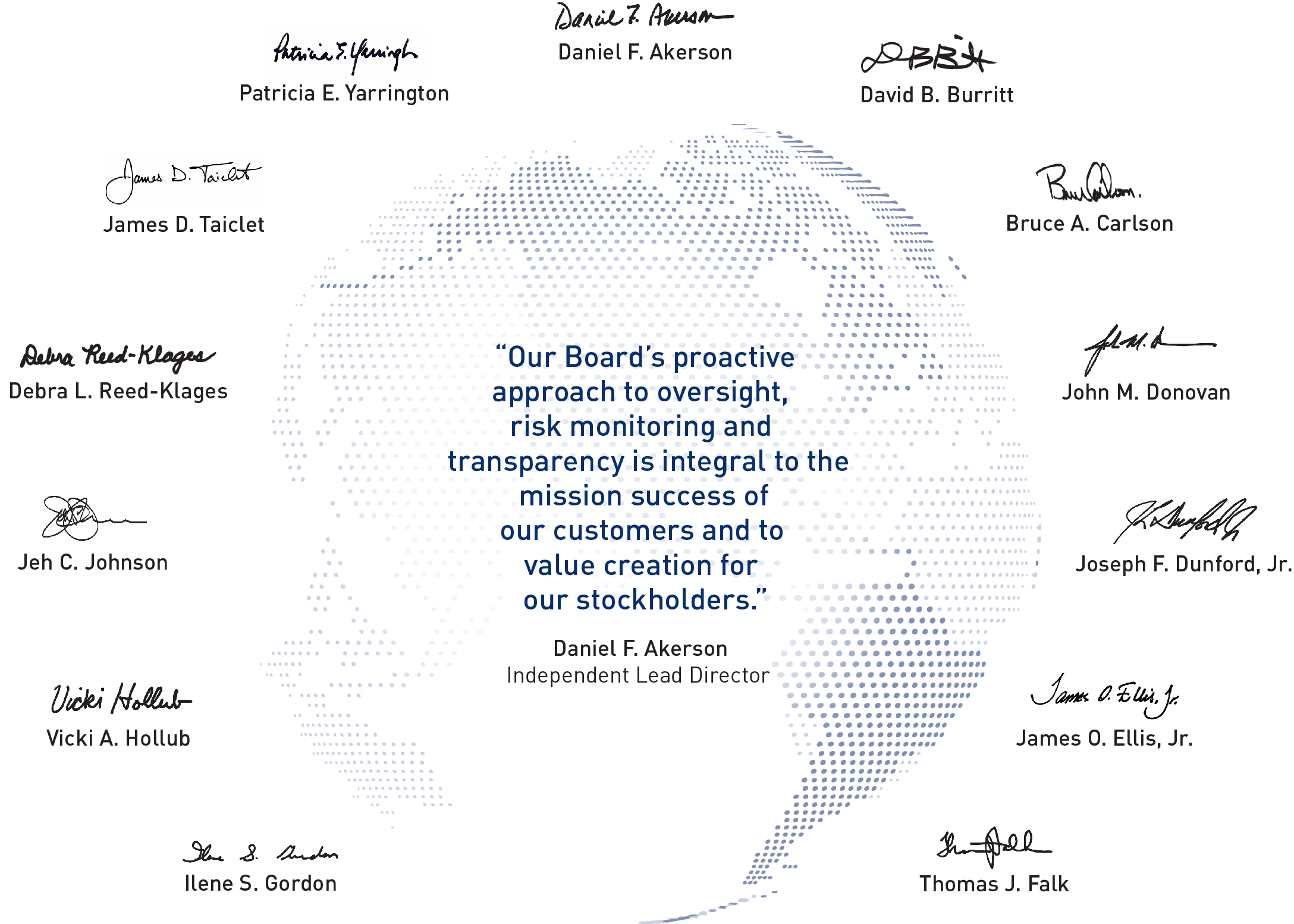
Table of Contents
| | | | | | | | | | | |
| | | |
| Frequently Requested Information | |
| | | |
| | | |
| | | |
| | | |
| | | |
| | | |
| | | |
| | | |
| | | |
| | | |
| | | |
| | | |
| | | |
| | | |
| | | |
| | | |
| | | |
| | | |
| | | |
| | | |
| | | |
| | | |
| | | |
| | | |
| | | |
| | | |
| | | |
| | | |
| | | |
| | | |
| | | |
| | | |
| | | |
About Lockheed Martin
Lockheed Martin Corporation (Lockheed Martin, the Company, us or we) (NYSE: LMT) is a global security and aerospace company principally engaged in the research, design, development, manufacture, integration and sustainment of advanced technology systems, products and services. We also provide a broad range of management, engineering, technical, scientific, logistics, system integration and cybersecurity services. We serve both U.S. and international customers with products and services that have defense, civil and commercial applications, with our principal customers being agencies of the U.S. Government.
| | | | | | | | | | | |
Financial Strength: 2022 Results | Industry-Leading Portfolio (2022 Sales) |
| |
| $27.0B AERONAUTICS |
| |
| $11.3B MISSILES AND FIRE CONTROL |
| |
| |
| 73% 5-year Total Stockholder Return | | $16.2B ROTARY AND MISSION SYSTEMS |
| |
| |
| 7% Increase to Annual Dividend | | $11.5B SPACE |
| |
| $5.7B Net Earnings |
| |
| | | | | | | | | | | | | | | | | |
| Countries with 250+ Employees | People |
| | | | | |
| 100,000+ United States | | 1,500+ United Kingdom | | 116,000 Total Employees |
| | | | | |
| 1,500+ Poland | | 1,250+ Canada | | 60,000 Engineers, Scientists and IT Professionals |
| | | | | |
| 1,000+ Australia | | 250+ New Zealand | | More than one in five employees is a veteran |
| | | |
Employee data as of December 31, 2022
| | | | | | | | |
| www.lockheedmartin.com | 2023 Proxy Statement | 1 |
Strategic Objectives
Our Mission: Enhance defense, security and scientific discovery by delivering reliable, innovative and affordable solutions for our customers’ most daunting challenges.
| | | | | | | | | | | | | | | | | | | | | | | | | | | | | | | | |
| | | | | | | | | | |
| | | | | | | | | | |
| Lead | Innovate | Drive | Grow | |
| | | | | | | | | | |
| our industry with our customers to deliver superior 21st Century Security capability | to rapidly deliver capability through technology development, commercial technology application and new business models | operational excellence throughout the Company and efficiency throughout the industry | organically through franchise program captures, international expansion and through capital and acquisition investments that support our strategic goals | |
| | | | | | | | | | |
| | | | | | | | | | |
| KEY ENABLERS | |
| | DISCRIMINATING TECHNOLOGY | | DIGITAL TRANSFORMATION | | STRATEGIC PARTNERSHIPS | | FISCAL DISCIPLINE | |
| | | | | | | | | | |
| | | | | | | | | | |
| | | | | TALENT & CULTURE | | | |
21st Century Security
Lockheed Martin’s vision for 21st Century Security is to accelerate the adoption of advanced networking and leading-edge technologies into our national defense enterprise, while enhancing the performance and value of our platforms and products for our customers. The aim of 21st Century Security is to integrate new and existing systems across all domains with advanced, open-architecture networking and operational technologies to make forces more agile, adaptive and unpredictable. A few of the key enabling technologies that we are prioritizing to make 21st Century Security a reality are listed below:
| | | | | | | | | | | | | | |
| | | | |
ARTIFICIAL INTELLIGENCE AND AUTONOMY | HYPERSONICS | DIRECTED ENERGY | EDGE COMPUTING | SPECTRUM DOMINANCE |
Sustainability
At Lockheed Martin, we foster innovation, integrity and security to protect the environment, strengthen communities and propel responsible growth. We integrate environmental, social and governance practices throughout our business and our employees actively strengthen the quality of life where we live and work. In 2022 we updated the two carbon-related goals shown below, which will accelerate our carbon reduction and renewable energy strategies. See the Environmental, Social and Governance section starting on page 32 for more information on our Sustainability efforts.
| | | | | | | | | | | | | | | | | | | | | | | |
| | Carbon Reduction | | | | Renewable Energy | |
| | | | | |
| By 2030, reduce Scope 1 and 2 absolute carbon emissions by 36% from a 2020 baseline. | | | By 2030, match 40% of electricity used across Lockheed Martin global operations with electricity produced from renewable sources. | |
| | | |
Proxy Statement Voting Roadmap
This voting roadmap highlights selected information on each of the proposals and does not contain all of the information that you should consider in deciding how to vote your shares. Refer to the full descriptions of each proposal prior to voting.
| | | | | | | | | | | | | | | | | | | | | | | |
| PROPOSAL 1 | | | | | | |
| | | | | | | |
| Election of Directors The Board has nominated the following 13 directors for election to the Board: | | The Board recommends a vote FOR each director nominee | |
| Daniel F. Akerson Joseph F. Dunford, Jr. Vicki A. Hollub Patricia E. Yarrington | David B. Burritt James O. Ellis, Jr. Jeh C. Johnson | Bruce A. Carlson Thomas J. Falk Debra L. Reed-Klages | John M. Donovan Ilene S. Gordon James D. Taiclet | |
| See page 6 | | | | |
| | | | | | | |
Director Nominee Qualifications and Attributes
| | | | | | | | | | | | | | | | | | | | | | | | | | | | | | | | | | | | | | |
| BOARD DIVERSITY | | BOARD REFRESHMENT | | BOARD INDEPENDENCE |
38% Gender and Ethnic Diversity | | 7 New Directors in Past 5 Years | 67 Average Age | | 12 Independent |
| | | | | | | | | | | |
| Female | | | 0-5 years | | 60 – 65 | | |
| | | | | | | | |
| African-American | | | 6-10 years | | 66 – 70 | | |
| | | | | | | |
| Veteran | | | 11+ years | | 71 – 75 | | |
| | | | | | | | | | |
| | | | 7 Years Average Tenure | | |
| | | | | | | | | | | | | | |
| CORE COMPETENCIES | | | | |
|
| CEO Leadership Experience | Senior Military /
Government Experience | Financial Expertise | Environmental, Social and Governance Expertise | Cybersecurity Expertise |
| | | | |
8 Directors | 4 Directors | 9 Directors | 10 Directors | 4 Directors |
| | | | | | | | | | | | | | | | | | | | | | | |
| STRATEGIC SKILLS ENHANCED IN THE PAST 5 YEARS |
| | | | | | | |
| Lead | Innovate | Drive | Grow |
| | | | | | | |
| 21st Century Security /Defense Industry Transformation | | AI, Autonomy, Advanced Comms, Hypersonics, Space | | Operational Execution and Efficiency | | International Business
Expansion |
| | | | | | | |
| 5G.MIL®/ Digital & Networking Open Architecture | | Business and Digital Transformation | | Supply Chain
Excellence | | Business Model / Commercial Partnerships |
See page 8 for a matrix of the nominees’ individual strategic skills, core competencies and attributes followed by a description of each skill and competency.
| | | | | | | | |
| www.lockheedmartin.com | 2023 Proxy Statement | 3 |
Proxy Statement Voting Roadmap
| | | | | | | | | | | | | | | | | |
| PROPOSAL 2 | | | | |
| | | | | |
| Advisory Vote to Approve the Compensation of our Named Executive Officers (Say-On-Pay) See page 39 | | The Board recommends a vote FOR this proposal | |
| | | | | |
Executive Compensation Highlights
Our executive compensation program, underpinned by our pay-for-performance philosophy, delivers compensation to our named executive officers (NEOs) that is intrinsically and strongly linked to Company performance.
In February 2022, the Compensation Committee approved the 2022 incentive opportunities for NEOs. There were no changes to our overall annual or long-term incentive plan design for 2022. However, the Compensation Committee approved the use of Free Cash Flow to replace Cash From Operations and Performance Cash under the annual and long-term incentive plans, respectively. Use of Free Cash Flow better aligns with the Company’s strategy as it incorporates capital expenditures. The Compensation Committee also approved environmental, social and governance as a distinct category under the strategic and operational goals of our annual incentive program for 2022.
| | | | | | | | |
| | |
| 2022 CEO TARGET OPPORTUNITY MIX | | 2022 ANNUAL INCENTIVE |
| | Component Weightings and Achievements |
| | |
| | |
3-YEAR SAY-ON-PAY RESULTS | | 2020-2022 LONG-TERM INCENTIVES |
| | Component Weightings and Achievements |
| |
| | *See Appendix A for the definitions of Non-GAAP measures. |
Compensation Best Practices
| | | | | | | | | | | | | | |
| | |
| Best Practices in Our Programs | | | Practices We Do Not Engage In or Allow |
•Pay aligns with performance •Market-based (50th percentile) approach for determining NEO target pay levels •Caps on annual and long-term incentives, including when Total Stockholder Return (TSR) is negative •Clawback policy on variable pay •Double-trigger provisions for change in control •Robust stock ownership requirements •Low equity burn rate and dilution •No payment of dividends or dividend equivalents on unvested equity awards •ESG goals included under our annual incentive plan | | •No employment agreements •No option backdating, cash-out of underwater options or repricing (no employee options granted since 2012) •No gross-ups upon a change in control •No individual change in control agreements •No automatic acceleration of unvested incentive awards in the event of termination •No enhanced retirement formula or inclusion of long-term incentives in pensions •No enhanced death benefits for executives •No hedging or pledging of Company stock |
Proxy Statement Voting Roadmap
| | | | | | | | | | | | | | | | | |
| PROPOSAL 3 | | | | |
| | | | | |
| Advisory Vote on the Frequency of Advisory Votes to Approve the Compensation of our NEOs See page 40 | | The Board recommends a vote FOR an ANNUAL stockholder advisory vote | |
| | | | | |
We are required by law to hold an advisory vote on the frequency of Say-on-Pay votes every six years. Stockholders may vote to hold the advisory vote on Say-on-Pay every one, two or three years. In 2017, our stockholders voted in favor of holding Say-on-Pay votes annually, which the Board adopted as its standard. In light of investor expectations and prevailing market practice, we ask stockholders to support the continuation of a frequency period of “ONE YEAR” (an annual vote) for future votes on Say-on-Pay.
| | | | | | | | | | | | | | | | | |
| PROPOSAL 4 | | | | |
| | | | | |
| Ratification of Appointment of Independent Auditors See page 79 | | The Board recommends a vote FOR this proposal | |
| | | | | |
The Audit Committee has appointed Ernst & Young LLP (Ernst & Young), an independent registered public accounting firm, as the independent auditors to perform an integrated audit of the Company’s consolidated financial statements and internal control over financial reporting for the year ending December 31, 2023. The Board believes obtaining stockholder ratification of the appointment is a sound corporate governance practice and recommends that stockholders ratify the appointment of Ernst & Young because it continues to perform at a high level and remains independent and objective.
| | | | | | | | | | | | | | | | | |
| PROPOSALS 5-7 | | | | |
| | | | | |
| Stockholder Proposals (in each case, if properly presented at the meeting) See pages 82-90 | | The Board recommends a vote AGAINST each of the stockholder proposals | |
| | | | | |
Each stockholder proposal in this Proxy Statement is followed by the response of the Board. For reasons set forth in the responses, the Board believes each stockholder proposal is not in the best interest of the stockholders and recommends a vote AGAINST each proposal, if properly presented at the meeting.
| | | | | | | | |
| www.lockheedmartin.com | 2023 Proxy Statement | 5 |
Proposal 1
| | | | | | | | | | | | | | | | | |
| | | | | |
| Election of Directors | | The Board recommends a vote FOR each director nominee | |
| | | | | |
The Board, upon the recommendation of the Nominating and Corporate Governance Committee, has nominated the following 13 directors for election to the Board for a one-year term. If elected, each director will hold office until the 2024 Annual Meeting and until their successor is elected and qualified. Please see the following pages for additional information on the director nominees.
| | | | | | | | | | | | | | | | | | | | | | | | | | | | | | | | |
| BOARD LEADERSHIP | | | | | | |
| CHAIRMAN | | INDEPENDENT LEAD DIRECTOR | | | | | | |
| James D.
Taiclet Age: 62
Director
Since: 2018 | | | Daniel F.
Akerson Age: 74
Director
Since: 2014 | | | David B.
Burritt Age: 67
Director
Since: 2008 | | | Bruce A.
Carlson Age: 73
Director
Since: 2015 |
| | | Independent | | | Independent | | | Independent | |
Chairman, President & CEO,
Lockheed Martin Corporation Committees: None Other Public Boards: None | | Retired Chairman & CEO, General Motors Company Committees: N* Other Public Boards: NOVONIX Limited | | President & CEO, United States
Steel Corporation (U.S. Steel) Committees: A, N Other Public Boards: U.S. Steel (Executive) | | Retired United States Air
Force General Committees: C, N Other Public Boards: None |
| John M.
Donovan Age: 62
Director
Since: 2021 | | | Joseph F.
Dunford, Jr. Age: 67
Director
Since: 2020 | | | James O.
Ellis, Jr. Age: 75 Director
Since: 2004 | | | Thomas J.
Falk Age: 64
Director
Since: 2010 |
| Independent | | | Independent | | | Independent | | | Independent | |
Retired CEO, AT&T Communications, LLC Committees: A**, C Other Public Boards: Palo Alto Networks (Lead Independent Director; Nominating & Governance*; Compensation and People; Security) | | Senior Managing Director & Partner of Liberty Strategic Capital; Retired United States Marine Corps General; Former Chairman of the Joint Chiefs of Staff Committees: C**, N Other Public Boards: Satellogic Inc. | | Retired President and Chief Executive Officer of the Institute of Nuclear Power Operations Committees: A, C* Other Public Boards: Dominion Energy, Inc.
| | Retired Chairman & CEO,
Kimberly-Clark Corporation Committees: A*, M Other Public Boards: None |
| Ilene S.
Gordon Age: 69
Director
Since: 2016 | | | Vicki A.
Hollub Age: 63
Director
Since: 2018 | | | Jeh C.
Johnson Age: 65
Director
Since: 2018 | | |
|
| Independent | | | Independent | | | Independent | | | | |
Retired Chairman & CEO, Ingredion Incorporated Committees: A, M* Other Public Boards: International Paper Company (Governance*; Executive; Management Development & Compensation) | | President & CEO,
Occidental Petroleum Corporation Committees: M, N Other Public Boards: Occidental | | Partner at Paul, Weiss, Rifkind, Wharton & Garrison LLP; Former Secretary of Homeland Security Committees: C, N Other Public Boards: MetLife, Inc. (Audit; Governance & Corp. Responsibility) and U.S. Steel (Audit; Corp. Governance & Sustainability) | |
|
| Debra L.
Reed-Klages Age: 66
Director
Since: 2019 | | | Patricia E. Yarrington Age: 66 Director Since: 2021 | | | | | A Audit C Classified Business and Security M Management Development and Compensation N Nominating and Corporate Governance * Chair ** After the Annual Meeting, Mr. Donovan will become Chair of the Compensation Committee and step down from the Audit Committee and Mr. Dunford will become Chair of the Classified Business and Security Committee |
| Independent | | | Independent | | | | |
Retired Chairman, President & CEO,
Sempra Energy Committees: M, N
Other Public Boards: Chevron Corporation (Audit*);
Caterpillar Inc. (Presiding Director; Executive Committee; Nominating and Governance Committee*) | | Retired Chief Financial Officer, Chevron Corporation Committees: A, M Other Public Boards: None | | | |
Proposal 1: Election of Directors
Board Composition and Effectiveness
Our Board seeks to operate with the highest degree of effectiveness, supporting a dynamic boardroom culture that encourages diverse, independent thought and intelligent debate on critical matters to achieve a higher level of success for the Company and its stockholders. This requires the right mix of people who bring diverse perspectives, characteristics, business and professional experiences, and competencies, as well as professional integrity, sound judgment and collegiality. This provides the foundation for robust dialogue, informed advice and collaboration in the boardroom.
The 13 director nominees are all incumbent directors. Through the annual self-evaluation process, including one-on-one discussions with the independent Lead Director, the Board determined that the director nominees possess the skills and experience to continue providing effective oversight of the Company. Each director nominee was originally selected through our Board Nomination process described on page 27 and continues to be well-qualified to serve the Company’s and stockholders’ interests. The strategic skills, core competencies and certain attributes of the nominees are set forth on the following page followed by individual biographies. In addition, each nominee has demonstrated their commitment to devote sufficient time to their service on the Board and are in compliance with our overboarding policy. All nominees other than Jim Taiclet, our Chairman, President and CEO, are independent.
Commitment to Board Diversity | | | | | | | | | | | |
At Lockheed Martin, we recognize diversity and inclusion as a business imperative and strategic asset to our investors. We believe that our business accomplishments are a result of the efforts of our employees around the world, and that a diverse employee population will result in a better understanding of our customers’ needs. Our success with a diverse workforce also informs our views about the value of a board of directors that has persons of diverse skills, experiences and backgrounds. Diversity in skills and backgrounds ensures that the widest range of options and viewpoints are expressed in the boardroom. To this end, the Board seeks to identify candidates with areas of knowledge or experience that will expand or complement the Board’s existing expertise in overseeing a technologically-advanced global security and aerospace company. In September 2022, the Board amended the Corporate Governance Guidelines (Governance Guidelines) to make explicit the Governance Committee’s commitment to actively seeking out highly-qualified women and individuals from minority groups as well as candidates with diverse backgrounds, experiences and skills as part of each search the Company undertakes. The Nominating and Corporate Governance Committee implements these guidelines in the identification and review of Board candidates and assesses the effectiveness of these guidelines by including questions regarding the diversity of the Board membership in the Board’s annual self-evaluation. The current composition of our Board and recent refreshment reflects those efforts and the importance of diversity to our Board. Over the past five years, our Board’s gender and racial/ethnic diversity has been enhanced with the additions of Pat Yarrington (2021), Debra Reed-Klages (2019), Vicki Hollub (2018) and Jeh Johnson (2018). We have also added two veterans over the past five years and new Board members have collectively enhanced each of the core competencies and strategic skills outlined on the following page. | | |
|
| | |
| 38% | |
| Gender and Ethnic Diversity
31% Women 8% African American 38% Veterans | |
| | | |
| | | |
Board Attendance
| | | | | | | | | | | |
Our Board is committed to their Board service. In 2022, there were six Board meetings. Directors are expected to attend all Board meetings and meetings of the committees on which they serve. All directors on the Board during 2022 attended more than 75 percent of the total Board and committee meetings to which they were assigned and overall attendance of the Board as a whole was 99 percent. Board members are also encouraged to attend the annual meeting of stockholders and all director nominees for the 2023 Annual Meeting attended the 2022 Annual Meeting. | | |
|
| | |
| 99% | |
| Average attendance of directors as a group at Board and committee meetings during 2022 | |
| | | |
| | | |
| | | | | | | | |
| www.lockheedmartin.com | 2023 Proxy Statement | 7 |
Proposal 1: Election of Directors
Director Nominees’ Strategic Skills, Core Competencies and Attributes
The following chart summarizes the strategic skills and core competencies that the Board considers valuable to effective governance and successful oversight of our corporate strategy and illustrates how the director nominees individually and collectively represent these key skills and competencies. Descriptions of the skills and competencies are on the following page. The lack of an indicator for a particular item does not mean that the director does not possess that skill or competency; rather, the indicator represents that the item is a core skill or competency of that director. The chart also provides the personal attributes of the director nominees. Director nominees are listed by tenure in descending order from left to right.
| | | | | | | | | | | | | | | | | | | | | | | | | | | | | | | | | | | | | | | | | | | | | | | |
| | | | | | | | | | | | | | | |
| Lead | | | | | | | | | | | | | | |
21st Century Security / Def. Ind. Transformation | l | | | l | | | | l | l | | l | | l |
| | | | | | | | | | | | | |
| | | | | | | | | | | | | |
5G.MIL / Digital & Networking Open Archit. | | | | | | | | | l | | | | l |
| | | | | | | | | | | | | |
| Innovate | | | | | | | | | | | | | | |
AI, Autonomy, Advanced Comms, Hypersonics, Space | l | | | | l | | | | l | | l | | l |
| | | | | | | | | | | | | |
| | | | | | | | | | | | | |
Business and Digital Transformation | | | l | l | | | | | l | | | l | l |
| | | | | | | | | | | | | |
| Drive | | | | | | | | | | | | | | |
Operational Execution and Efficiency | l | l | l | l | l | l | l | l | l | l | l | l | l |
| | | | | | | | | | | | | |
| | | | | | | | | | | | | |
Supply Chain Excellence | | l | l | l |
| | l | | l | l | | | |
| | | | | | | | | | | | | |
| Grow | | | | | | | | | | | | | | |
International Business Expansion | l | l | l | l | | l | l | l | l | | l | l | l |
| | | | | | | | | | | | | |
| | | | | | | | | | | | | |
Business Model /Commercial Partnerships | | l | l | l | | l | l | | l | l | | | l |
| | | | | | | | | | | | | |
| | | | | | | | | | | | | |
M&A Expertise | | | l | l | | l | l | l | l | l | | l | l |
| | | | | | | | | | | | | |
| | | | | | | | | | | | | | | |
| Senior Leadership Experience (most senior position held) | Four-Star Admiral | CEO | Chair and CEO | Chair and CEO | Four-Star General | Chair and CEO | CEO | Cabinet Sec. | Chair and CEO | Chair and CEO | Four-Star General | CFO | CEO |
| | | | | | | | | | | | | | |
| | | | | | | | | | | | | | |
| Financial Expertise | | l | l | l | | l | l | | l | l | | l | l |
| | | | | | | | | | | | | | |
| | | | | | | | | | | | | | |
| Environment, Social and Governance Expertise | | l | l | l | l | l | l | l | l | l | | l | |
| | | | | | | | | | | | | | |
| | | | | | | | | | | | | | |
| Cybersecurity Expertise | | | | | | | | l | l | | l | | l |
| | | | | | | | | | | | | | |
| | | | | | | | | | | | | | |
| Senior Military / Government Experience | l | | | | l | | | l | | | l | | |
| | | | | | | | | | | | | | |
| | | | | | | | | | | | | | | |
| Race / Ethnicity | White | White | White | White | White | White | White | Black | White | White | White | White | White |
| | | | | | | | | | | | | | |
| | | | | | | | | | | | | | |
| Veteran of the U.S. Armed Forces | l | | | l | l | | | | l | | l | | |
| | | | | | | | | | | | | | |
| | | | | | | | | | | | | | |
| Gender (Male / Female) | M | M | M | M | M | F | F | M | M | F | M | F | M |
| | | | | | | | | | | | | | |
| | | | | | | | | | | | | | |
| Age | 75 | 67 | 64 | 74 | 73 | 69 | 63 | 65 | 62 | 66 | 67 | 66 | 62 |
| | | | | | | | | | | | | | |
| | | | | | | | | | | | | | |
| Tenure (rounded years) | 18 | 15 | 13 | 9 | 8 | 7 | 5 | 5 | 5 | 3 | 3 | 2 | 1 |
| | | | | | | | | | | | | | |
| | | | | | | | | | | | | | |
| | 11+ years | 6-10 years | 1-5 years |
| | | | | | | | | | | | | | |
Proposal 1: Election of Directors
Description of Strategic Skills, Core Competencies and Attributes
The core competencies and strategic skills that we value for the Board align with our mission and strategic objectives to Lead, Innovate, Drive and Grow to make 21st Century Security a reality. We believe the Board is more effective by collectively having a mix of these core competencies and strategic skills and these have been enhanced through recent refreshment.
| | | | | | | | | |
| | | |
21st Century Security / Defense Industry Transformation | We are increasingly confronting an evolving threat landscape that is demanding advanced capabilities and a need for better predictability and capacity faster than ever before. Our 21st Century Security strategy is about taking the best of defense and commercial technology to make forces agile, adaptive and unpredictable, so that they stay ready for any mission - today and in the future. Directors with experience in leading transformation and in the defense, commercial and telecom sectors provide important perspectives as we aim to execute industry partnerships and lead bringing these sectors together to deliver transformational capabilities for national defense. |
| |
| |
5G.MIL / Digital & Networking Open Architecture | Lockheed Martin's 5G.MIL solutions integrate military communications with tactical gateway capabilities (.MIL) and enhanced 5G technology to enable seamless, resilient and secure connectivity and data flow across all battlefield assets. Directors with industry experience or technological expertise contribute to an understanding of network-enabled technologies and open architectures to enable our 21st Century Security vision. |
| |
| | |
AI, Autonomy, Adv. Comms, Hypersonics, Space | Technologies such as Artificial Intelligence, Autonomy, Advanced Communications, Hypersonics and Space are key technology priorities for the Company. Directors with technology backgrounds contribute to an understanding of these technology priorities and our oversight of key investments in these areas. |
| |
| |
Business and Digital Transformation | Directors with experience in business processes and systems and their evolution provide valuable insights as we execute our mission-driven business and digital transformation program that is critical to innovate and deliver the speed, agility and insights our customers need. |
| |
| | |
Operational Execution and Efficiency | Our future success requires us to drive a culture of operational excellence, efficiency and consistent performance. Directors with experience in areas such as complex manufacturing and other large, complicated operations contribute to the understanding of these challenges. |
| |
| |
Supply Chain Excellence | Lockheed Martin has a diverse and complex multi-tiered supply chain that is critical to our success. Directors with expertise in the management of the upstream and downstream relationships with suppliers and customers provide important perspectives on managing supply chain challenges and driving its affordability and resiliency. |
| |
| | |
International Business Expansion | We are a global business with a presence in more than 50 countries. One of our key growth priorities is to expand our business internationally. Directors with experience understanding the complexities and risks of international business help the Company to achieve its international objectives. |
| |
| |
Business Model /Commercial Partnerships | A key element of our 21st Century Security strategy is to collaborate with innovative commercial companies outside of the traditional aerospace and defense industry to leverage their technologies for military applications as well as to develop new business models for the defense industry. Directors with commercial experience contribute to an understanding of these new business models and related growth opportunities. |
| |
| |
M&A Expertise | We look to leverage inorganic growth and portfolio alignment by pursuing strategically aligned targets with ventures, acquisitions and other investments as well as dispositions. Directors with mergers and acquisitions experience contribute to the Board’s understanding of these opportunities. |
| |
| | | |
| Senior Leadership Experience | All directors have senior leadership experience. We look to have a balance of directors with public company CEO leadership experience, public company CFO experience and other experience managing large, complex organizations. |
| | |
| | |
| Financial Expertise | All directors have the ability to understand financial statements. Directors who qualify as an “audit committee financial expert” have additional education and experience that enables them to provide additional oversight of financial statements and capital allocation decisions as well as important financial metrics in measuring our performance. |
| | |
| | |
| Environment, Social and Governance Expertise | Directors with environmental, social and governance experience, including employee safety and health, climate-related risks, political risks and cybersecurity, play an important role in the Board’s oversight of risks and the Company’s sustainability initiatives. |
| | |
| | |
| Cybersecurity Expertise | Directors with experience in cybersecurity, intelligence and data protection, including U.S. cybersecurity policy and the U.S. Government’s cybersecurity efforts and cybersecurity threats, contribute to the Board’s oversight of cybersecurity risks and digital transformation efforts. |
| | |
| | |
| Senior Military / Government Experience | Directors with experience serving in senior military or government roles bring an important perspective and understanding of our customers and relevant policy issues. |
| | |
| | | |
| Race / Ethnicity, Veteran, Gender, Age, Tenure | Our Board believes a balance of director diversity and tenure is a strategic asset to our investors. See the discussion of Board Composition on page 7. Directors who are veterans of the U.S. Armed Forces also contribute to an understanding of our customers and mission. |
| | |
| | | | | | | | |
| www.lockheedmartin.com | 2023 Proxy Statement | 9 |
Proposal 1: Election of Directors
Director Nominees
| | | | | | | | | | | | | | | | | | | | | | | | | | | | | |
| | | | | | | | | |
| | | | | | | | | |
| | | | Biography Vice Chairman of The Carlyle Group from March 2014 to December 2015. Mr. Akerson was Chairman of the Board of Directors and Chief Executive Officer of General Motors Company from January 2011 until his retirement in January 2014. Prior to joining General Motors, he was a Managing Director of The Carlyle Group, serving as the Head of Global Buyout from July 2009 to August 2010 and as Co-Head of U.S. Buyout from June 2003 to June 2009. Mr. Akerson previously served as Chairman of the U.S. Naval Academy Foundation from 2015 until 2021 and served on the board of directors of KLDiscovery Inc. from December 2019 until January 2020 and CommScope Holding Company, Inc. from April 2019 until December 2020. Experience, Strategic Skills and Core Competencies •Core leadership skills and experience with the demands and challenges of the global marketplace •Extensive operating, marketing and senior management experience in a succession of major companies in challenging, highly competitive industries •Enterprise risk management, financial, investment and mergers and acquisitions expertise |
| | | |
| Daniel F. Akerson Age 74 Director since 2014 Independent Lead Director Committees Nominating and Corporate Governance, Chair Other Public Boards* NOVONIX Limited | | |
| | |
| | |
| | | | 21st Century Security / Defense Industry Transformation | | Business and Digital Transformation | | Business Model / Commercial Partnerships |
| | | | CEO Leadership
Experience | | Environment, Social and Governance Expertise | | Financial Expertise |
| | | | International Business Expansion | | M&A Expertise | | Operational Execution and Efficiency |
| | | | Supply Chain Excellence | | | | |
| | | | | | | | | |
| | | | | | | | | | | | | | | | | | | | | | | | | | | | | |
| | | | | | | | | |
| | | | | | | | | |
| | | | Biography President and Chief Executive Officer of United States Steel Corporation (U.S. Steel) since May 2017. Mr. Burritt was also named to U.S. Steel’s board of directors at that time. Mr. Burritt previously served as President and Chief Operating Officer of U.S. Steel from February 2017 to May 2017; Chief Financial Officer from September 2013 to May 2017; and Executive Vice President from September 2013 to February 2017. Prior to joining U.S. Steel, Mr. Burritt served as Chief Financial Officer of Caterpillar Inc. until his retirement in 2010, after more than 32 years with the company. Experience, Strategic Skills and Core Competencies •Expertise in public company accounting, risk management, disclosure, financial system management, manufacturing and commercial operations and business transformation from roles as CEO and CFO at U.S. Steel and CFO and Controller at Caterpillar Inc. •Over 40 years’ experience with the demands and challenges of the global marketplace from his positions at U.S. Steel and Caterpillar Inc. |
| | | |
| David B. Burritt Age 67 Director since 2008 Independent Director Committees Audit; Nominating and Corporate Governance Other Public Boards* U.S. Steel | | |
| | |
| | |
| | | | Business Model / Commercial Partnerships | | CEO and CFO Leadership
Experience | | Environment, Social and Governance Expertise |
| | | | Financial Expertise | | International Business Expansion | | Operational Execution and Efficiency |
| | | | Supply Chain Excellence | | | | |
| | | | | | | | | |
* Other public board committees are listed on page 6.
Proposal 1: Election of Directors
| | | | | | | | | | | | | | | | | | | | | | | | | | | | | |
| | | | | | | | | |
| | | | | | | | | |
| | | | Biography Retired U.S. Air Force General, Mr. Carlson has been chairman of Utah State University’s Space Dynamics Laboratory Guidance Council since June 2013 and chairman of its board of directors since 2018. Previously, Mr. Carlson served as the 17th Director of the National Reconnaissance Office from 2009 until 2012. He retired from the U.S. Air Force in 2009 after more than 37 years of service, including service as Commander, Air Force Materiel Command at Wright-Patterson AFB, Ohio; Commander, Eighth Air Force at Barksdale AFB, Louisiana; and Director for Force Structure, Resources and Assessment (J-8) for the Joint Staff. Mr. Carlson previously served on the board of directors of Benchmark Electronics Inc. from July 2017 until October 2021. Experience, Strategic Skills and Core Competencies •Industry-specific expertise and knowledge of our core customer, including aircraft and satellite development and acquisition experience from his service in senior leadership positions with the military •Experience with the demands and challenges associated with managing large organizations from his service as a Commander and Joint Staff Director of the Joint Chiefs and the National Reconnaissance Office •Skilled in executive management, logistics and military procurement |
| | | |
| Bruce A. Carlson Age 73 Director since 2015 Independent Director Committees Classified Business and Security; Nominating and Corporate Governance Other Public Boards None | | |
| | |
| | |
| | | | AI, Autonomy, Advanced Comms, Hypersonics, Space | | Environment, Social and Governance Expertise | | Operational Execution and Efficiency |
| | | | Senior Military / Government Experience | | | | |
| | | | | | | | |
| | | | | | | | | |
| | | | | | | | | | | | | | | | | | | | | | | | | | | | | |
| | | | | | | | | |
| | | | | | | | | |
| | | | Biography Retired Chief Executive Officer of AT&T Communications, LLC, a wholly-owned subsidiary of AT&T Inc. Mr. Donovan served as CEO from August 2017 until his retirement in October 2019. He was Chief Strategy Officer and Group President of AT&T Technology and Operations from January 2012 through August 2017, and Chief Technology Officer of AT&T Inc. from April 2008 through January 2012. He is a member of the President’s National Security Telecommunications Advisory Committee. Experience, Strategic Skills and Core Competencies •Expertise in technology and innovation, including the transition to 5G networks, artificial intelligence and machine learning •Skilled in overseeing global information, software development, supply chain, network operations and big data organizations •Experience in cybersecurity, including Lead Independent Director of a leading cybersecurity company and Cybersecurity & Infrastructure Security Agency (CISA) committee leadership |
| | | |
| John M. Donovan Age 62 Director since 2021 Independent Director Committees* Audit; Classified Business and Security Other Public Boards** Palo Alto Networks | | |
| | |
| | |
| | | | 21st Century Security / Defense Industry Transformation | | 5G.MIL / Digital & Networking Open Architecture | | AI, Autonomy, Advanced Comms, Hypersonics, Space |
| | | | Business and Digital Transformation | | Business Model / Commercial Partnerships | | CEO Leadership
Experience |
| | | | Cybersecurity Expertise | | Financial Expertise | | International Business Expansion |
| | | | M&A Expertise | | Operational Execution and Efficiency | | |
| | | | | | | | |
| | | | | | | | | |
* Effective after the Annual Meeting and assuming his re-election, Mr. Donovan will become a member and the Chair of the Compensation Committee and step down from the Audit Committee.
** Other public board committees are listed on page 6.
| | | | | | | | |
| www.lockheedmartin.com | 2023 Proxy Statement | 11 |
Proposal 1: Election of Directors
| | | | | | | | | | | | | | | | | | | | | | | | | | | | | |
| | | | | | | | | |
| | | | | | | | | |
| | | | Biography Retired U.S. Marine Corps General, Mr. Dunford has served as a senior managing director and partner of Liberty Strategic Capital and as a member of the firm’s investment committee since February 2022. Previously, he served as the 19th Chairman of the Joint Chiefs of Staff from 2015 until his retirement in September 2019. His previous assignments include serving as the 36th Commandant of the Marine Corps and the Commander of all U.S. and NATO Forces in Afghanistan. He is a Senior Fellow at the Belfer Center, Harvard University, and Chairman of the Board of the Semper Fi and America’s Fund. Experience, Strategic Skills and Core Competencies •Industry-specific expertise and knowledge of our core customer from his service in senior leadership positions with the military •Experience with the demands and challenges associated with managing large organizations from his service as a Commander and Chairman of the Joint Chiefs of Staff •Skilled in executive management, logistics, military procurement and cybersecurity threats |
| | | |
| Joseph F. Dunford, Jr. Age 67 Director since 2020 Independent Director Committees* Classified Business and Security; Nominating and Corporate Governance Other Public Boards** Satellogic Inc. | | |
| | |
| | |
| | | | 21st Century Security / Defense Industry Transformation | | AI, Autonomy, Advanced Comms, Hypersonics, Space | | Cybersecurity Expertise |
| | | | International Business Expansion | | Operational Execution and Efficiency | | Senior Military / Government Experience |
| | | | | | | | |
| | | | | | | | | |
| | | | | | | | | | | | | | | | | | | | | | | | | | | | | |
| | | | | | | | | |
| | | | | | | | | |
| | | | Biography Admiral Ellis has served as an Annenberg Distinguished Fellow at the Hoover Institution at Stanford University since 2014. Previously, he served as President and Chief Executive Officer of the Institute of Nuclear Power Operations from May 2005 until his retirement in May 2012. Mr. Ellis retired from active duty in July 2004 after serving as Admiral and Commander, United States Strategic Command, Offutt Air Force Base, Nebraska. He formerly served as a director of Level 3 Communications, Inc. from March 2005 to November 2017. Experience, Strategic Skills and Core Competencies •Industry-specific expertise and knowledge of our core customers from his service in senior leadership positions with the military and the private sector •Expertise in aeronautical and aerospace engineering, information technology and emerging energy issues; classified program expertise •Over 40 years’ experience in managing and leading large and complex technology-focused organizations, in large part as a result of serving for 35 years as an active duty member of the United States Navy |
| | | |
| James O. Ellis, Jr. Age 75 Director since 2004 Independent Director Committees* Audit; Classified Business and Security, Chair Other Public Boards** Dominion Energy, Inc. | | |
| | |
| | |
| | | | 21st Century Security / Defense Industry Transformation | | AI, Autonomy, Advanced Comms, Hypersonics, Space | | International Business Expansion |
| | | | Operational Execution and Efficiency | | Senior Military / Government Experience | | |
| | | | | | | | |
| | | | | | | | | |
* Effective after the Annual Meeting and assuming his re-election, Mr. Dunford will become Chair of the Classified Business and Security Committee. Mr. Ellis will remain a member of the Committee.
** Other public board committees are listed on page 6.
Proposal 1: Election of Directors
| | | | | | | | | | | | | | | | | | | | | | | | | | | | | |
| | | | | | | | | |
| | | | | | | | | |
| | | | Biography Executive Chairman of Kimberly-Clark Corporation from January 2019 through December 2019. Having served 36 years at Kimberly-Clark Corporation, Mr. Falk was Chairman of the Board and Chief Executive Officer from 2003 until December 2018; Chief Executive Officer from 2002 and President and Chief Operating Officer from 1999 to 2002. Experience, Strategic Skills and Core Competencies •Experience with the demands and challenges associated with managing global organizations from his experience as Chairman and Chief Executive Officer of Kimberly-Clark Corporation •Knowledge of financial system management, public company accounting, disclosure requirements and financial markets •Skilled in manufacturing, human capital management, compensation, governance and public company boards |
| | | |
| Thomas J. Falk Age 64 Director since 2010 Independent Director Committees Audit, Chair; Management Development and Compensation Other Public Boards None | | |
| | |
| | |
| | | | Business and Digital Transformation | | Business Model / Commercial Partnerships | | CEO Leadership
Experience |
| | | | Environment, Social and Governance Expertise | | Financial Expertise | | International Business Expansion |
| | | | M&A Expertise | | Operational Execution and Efficiency | | Supply Chain Excellence |
| | | | | | | | |
| | | | | | | | |
| | | | | | | | | |
| | | | | | | | | | | | | | | | | | | | | | | | | | | | | |
| | | | | | | | | |
| | | | | | | | | |
| | | | Biography Executive Chairman of the Board of Ingredion Incorporated from January 2018 through July 2018. Previously, Ms. Gordon was Chairman of the Board, President and Chief Executive Officer of Ingredion Incorporated from May 2009 through December 2017. Ingredion Incorporated is a publicly traded corporation that manufactures food ingredients globally. Ms. Gordon served as a director of International Flavors & Fragrances, Inc. from February 2021 to February 2023. Experience, Strategic Skills and Core Competencies •Experience with the demands and challenges associated with managing global organizations from her experience as Chairman, President and Chief Executive Officer of Ingredion Incorporated •Knowledge of financial system management, public company accounting, disclosure requirements and financial markets •Skilled in marketing, human capital management, compensation, governance and public company boards |
| | | |
| Ilene S. Gordon Age 69 Director since 2016 Independent Director Committees* Audit; Management Development and Compensation, Chair Other Public Boards** International Paper Company | | |
| | |
| | |
| | | | Business Model / Commercial Partnerships | | CEO Leadership
Experience | | Environment, Social and Governance Expertise |
| | | | Financial Expertise | | International Business Expansion | | M&A Expertise |
| | | | Operational Execution and Efficiency | | | | |
| | | | | | | | |
| | | | | | | | |
| | | | | | | | | |
* Effective after the Annual Meeting and assuming his re-election, Mr. Donovan will become a member and the Chair of the Compensation Committee. Ms. Gordon will remain a member of the Committee.
** Other public board committees are listed on page 6.
| | | | | | | | |
| www.lockheedmartin.com | 2023 Proxy Statement | 13 |
Proposal 1: Election of Directors
| | | | | | | | | | | | | | | | | | | | | | | | | | | | | |
| | | | | | | | | |
| | | | | | | | | |
| | | | Biography President and Chief Executive Officer of Occidental Petroleum Corporation (Occidental), an international oil and gas exploration and production company, since April 2016. Having served more than 30 years at Occidental, Ms. Hollub served as President and Chief Operating Officer from 2015 to 2016; Senior Executive Vice President, Occidental and President, Oxy Oil and Gas - Americas from 2014 to 2015; and Executive Vice President, Occidental and Executive Vice President, U.S. Operations and Oxy Oil and Gas from 2013 to 2014. Experience, Strategic Skills and Core Competencies •Broad insight and experience with the demands and challenges associated with managing global organizations from her experience as President and Chief Executive Officer of Occidental and more than three decades in executive and operational roles •Expertise in the Middle East region and Latin America •Skilled in enterprise risk management, environmental, safety and sustainability, including leading carbon capture, utilization and storage and other decarbonization initiatives |
| | | |
| Vicki A. Hollub Age 63 Director since 2018 Independent Director Committees Management Development and Compensation; Nominating and Corporate Governance Other Public Boards* Occidental | | |
| | |
| | |
| | | | Business Model / Commercial Partnerships | | CEO Leadership
Experience | | Environment, Social and Governance Expertise |
| | | | Financial Expertise | | International Business Expansion | | M&A Expertise |
| | | | Operational Execution and Efficiency | | Supply Chain Excellence | | |
| | | | | | | | |
| | | | | | | | |
| | | | | | | | | |
| | | | | | | | | | | | | | | | | | | | | | | | | | | | | |
| | | | | | | | | |
| | | | | | | | | |
| | | | Biography Partner at the international law firm of Paul, Weiss, Rifkind, Wharton & Garrison LLP, and co-head of the Cybersecurity and Data Protection practice, since January 2017. Previously, Mr. Johnson served as U.S. Secretary of Homeland Security from December 2013 to January 2017; and as General Counsel of the U.S. Department of Defense and as General Counsel of the U.S. Department of the Air Force. Mr. Johnson is presently a director of the Council on Foreign Relations, and formerly served as a director of PG&E Corporation from May 2017 to March 2018. Experience, Strategic Skills and Core Competencies •Expertise in national security, leadership development and organizational preparedness from his service as U.S. Secretary of Homeland Security •Industry-specific expertise and insight into our core customers, including requirements for acquisition of products and services, from prior senior leadership positions with the military •Experience with large organization management and assessing human resources, equipment, cybersecurity, and financial requirements, as well as reputational risks |
| | | |
| Jeh C. Johnson Age 65 Director since 2018 Independent Director Committees Classified Business and Security; Nominating and Corporate Governance Other Public Boards* MetLife, Inc. U.S. Steel | | |
| | |
| | |
| | | | 21st Century Security /Defense Industry Transformation | | Cybersecurity Expertise | | Environment, Social and Governance Expertise |
| | | | International Business Expansion | | M&A Expertise | | Operational Execution and Efficiency |
| | | | Senior Military / Government Experience | | | | |
| | | | | | | | |
| | | | | | | | | |
* Other public board committees are listed on page 6.
Proposal 1: Election of Directors
| | | | | | | | | | | | | | | | | | | | | | | | | | | | | |
| | | | | | | | | |
| | | | | | | | | |
| | | | Biography Retired in December 2018 as Executive Chairman of Sempra Energy. Ms. Reed-Klages served as Chairman, President and Chief Executive Officer of Sempra Energy from March 2017 to May 2018; Chairman and Chief Executive Officer of Sempra Energy from December 2012 to March 2017; and Chief Executive Officer of Sempra Energy from June 2011 to December 2012. Previously, Ms. Reed-Klages served as an Executive Vice President of Sempra Energy and as President and Chief Executive Officer of SDG&E and SoCalGas, Sempra Energy’s regulated California utilities. Ms. Reed-Klages was also previously President, Chief Operating Officer and CFO of SDG&E and SoCalGas. She previously served on the boards of directors of Halliburton Company from January 2001 to September 2018 and Oncor Electric Delivery Company LLC during 2018. Experience, Strategic Skills and Core Competencies •Experience with the demands and challenges associated with managing global organizations from her experience as Chairman, President and Chief Executive Officer of Sempra Energy •Skilled in enterprise risk management, environmental, safety and sustainability •Knowledge of financial system management, compensation, governance and public company board experience |
| | | |
| Debra L. Reed-Klages Age 66 Director since 2019 Independent Director Committees Management Development and Compensation; Nominating and Corporate Governance Other Public Boards* Chevron Corporation Caterpillar Inc. | | |
| | |
| | |
| | | | Business Model / Commercial Partnerships | | CEO Leadership
Experience | | Environment, Social and Governance Expertise |
| | | | Financial Expertise | | M&A Expertise | | Operational Execution and Efficiency |
| | | | Supply chain Excellence | | | | |
| | | | | | | | |
| | | | | | | | | |
| | | | | | | | | | | | | | | | | | | | | | | | | | | | | |
| | | | | | | | | |
| | | | | | | | | |
| | | | Biography Chairman since March 2021 and President and Chief Executive Officer of Lockheed Martin since June 2020. Previously, Mr. Taiclet served as Chairman, President and Chief Executive Officer of American Tower Corporation from February 2004 until March 2020 and Executive Chairman from March 2020 to May 2020. Prior to that, Mr. Taiclet served as President of Honeywell Aerospace Services, a unit of Honeywell International and as Vice President, Engine Services at Pratt & Whitney, a unit of United Technologies Corporation. Experience, Strategic Skills and Core Competencies •Effective leadership and executive experience as Chairman, President and CEO of Lockheed Martin Corporation and American Tower Corporation •Expertise in management at large-scale, multinational corporations, including regulatory compliance, corporate governance, capital markets and financing, strategic planning and investor relations •Industry-specific expertise from service as a U.S. Air Force officer and pilot and as an executive at Lockheed Martin, Honeywell Aerospace Services and Pratt & Whitney |
| | | |
| James D. Taiclet Age 62 Director since 2018 Chairman, President and CEO Committees None Other Public Boards None | | |
| | |
| | |
| | | | 21st Century Security / Defense Industry Transformation | | 5G.MIL / Digital & Networking Open Architecture | | AI, Autonomy, Advanced Comms, Hypersonics, Space |
| | | | Business and Digital Transformation | | Business Model / Commercial Partnerships | | CEO Leadership
Experience |
| | | | Cybersecurity Expertise | | Environment, Social and Governance Expertise | | Financial Expertise |
| | | | | International Business Expansion | | M&A Expertise | | Operational Execution and Efficiency |
| | | | | Supply Chain Excellence | | | | |
| | | | | | | | | |
* Other public board committees are listed on page 6.
| | | | | | | | |
| www.lockheedmartin.com | 2023 Proxy Statement | 15 |
Proposal 1: Election of Directors
| | | | | | | | | | | | | | | | | | | | | | | | | | | | | |
| | | | | | | | | |
| | | | | | | | | |
| | | | Biography Retired Vice President and Chief Financial Officer of Chevron Corporation, one of the world’s leading integrated energy companies. Ms. Yarrington served as CFO of Chevron from January 2009 until her retirement in March 2019. During her 38 years at Chevron, she also served as Vice President and Treasurer from 2007 through 2008, Vice President of Policy, Government and Public Affairs from 2002 to 2007 and Vice President of Strategic Planning from 2000 to 2002. Previously, Ms. Yarrington served on the boards of directors of Chevron Phillips Chemical Company LLC (a 50-50 joint venture with Phillips 66) and the Federal Reserve Bank of San Francisco, serving as the Chairman of the Bank’s board from 2013 to 2014. Experience, Strategic Skills and Core Competencies •Expertise in public company accounting, risk management, disclosure, and financial system management from her role as CFO at Chevron •Over 38 years of experience with the demands and challenges of the global marketplace from her positions at Chevron |
| | | |
| Patricia E. Yarrington Age 66 Director since 2021 Independent Director Committees Audit; Management Development and Compensation Other Public Boards None | | |
| | |
| | |
| | | | Business and Digital Transformation | | CFO Leadership Experience | | Environment, Social and Governance Expertise |
| | | | Financial Expertise | | International Business Expansion | | M&A Expertise |
| | | | Operational Execution and Efficiency | | | | |
| | | | | | | | | |
| | | | | | | | | |
Corporate Governance
We believe that good corporate governance strengthens the Board and management, enhances public trust and is integral to achieving long-term stockholder value. This section provides an overview of Lockheed Martin’s corporate governance policies and practices.
Our Alignment with Governance Standards
In 2018, we signed on to the Commonsense Principles 2.0, which are intended to provide a basic framework for sound, long-term oriented governance. Our governance practices also comply with the Investor Stewardship Group (ISG) Corporate Governance Principles for U.S. Listed Companies. Below, we identify each of the ISG’s governance principles and how our practices are aligned.
| | | | | | | | | | | |
| | | |
Principle 1: Boards are accountable to stockholders | | | |
| | |
|  Annual election of directors Annual election of directors Majority voting standard for uncontested director elections Majority voting standard for uncontested director elections  Directors not receiving majority support must tender resignation to Board for consideration Directors not receiving majority support must tender resignation to Board for consideration |  Market-standard proxy access right for stockholders Market-standard proxy access right for stockholders  No poison pill No poison pill  Full disclosure on corporate governance and Board practices Full disclosure on corporate governance and Board practices |
| | | |
| | | |
| | | |
Principle 2: Stockholders should be entitled to voting rights in proportion to their economic interest | |  One class of voting stock One class of voting stock  “One share, one vote” standard “One share, one vote” standard | |
| | | |
| | | |
| | | |
Principle 3: Boards should be responsive to stockholders and be proactive in order to understand their perspectives | |  Proactive, year-round engagement with stockholders, including participation of independent directors as appropriate Proactive, year-round engagement with stockholders, including participation of independent directors as appropriate  Engagement topics during 2022 included: Board composition, diversity and refreshment, stockholder rights, climate risks and related climate change goals, workforce diversity and inclusion, executive compensation, human rights and our Human Rights Report, the conflict in Ukraine, lobbying and political spending and other environmental, social and governance (ESG) matters Engagement topics during 2022 included: Board composition, diversity and refreshment, stockholder rights, climate risks and related climate change goals, workforce diversity and inclusion, executive compensation, human rights and our Human Rights Report, the conflict in Ukraine, lobbying and political spending and other environmental, social and governance (ESG) matters |
| | | |
| | | |
| | | |
Principle 4: Boards should have a strong, independent leadership structure | |  Engaged independent Lead Director Engaged independent Lead Director  Annual review of Board leadership structure Annual review of Board leadership structure  Independent chairs of all Board committees Independent chairs of all Board committees | |
| | | |
| | | |
| | | |
Principle 5: Boards should adopt structures and practices that enhance their effectiveness | |  12 of 13 director nominees are independent; all Board committees are fully independent 12 of 13 director nominees are independent; all Board committees are fully independent  Four directors are women; one director is an African-American male Four directors are women; one director is an African-American male  Significant Board refreshment yielding a diverse mix of skills and experiences Significant Board refreshment yielding a diverse mix of skills and experiences Annual Board and committee self-assessments Annual Board and committee self-assessments |  2022 updates to Governance Guidelines make explicit the Company’s commitment to actively seek out gender and ethnically diverse Board candidates 2022 updates to Governance Guidelines make explicit the Company’s commitment to actively seek out gender and ethnically diverse Board candidates  Board access to officers and employees Board access to officers and employees  2022 Board attendance of 99% 2022 Board attendance of 99% Overboarding policy ensures Board members can devote sufficient time to the Company Overboarding policy ensures Board members can devote sufficient time to the Company |
| | | |
| | | |
| | | |
Principle 6:
Boards should develop management incentive structures that are aligned with the long-term strategy of the company | |  Compensation programs actively reviewed by the Board and include short- and long-term goals tied to the long-range plan and that underpin our long-term strategy Compensation programs actively reviewed by the Board and include short- and long-term goals tied to the long-range plan and that underpin our long-term strategy |
| | | |
| | | | | | | | |
| www.lockheedmartin.com | 2023 Proxy Statement | 17 |
| | | | | | | | | | | | | | | | | | | | |
Board Leadership Structure | | | | | | |
| | | | | | |
The Board believes the independent directors should have the flexibility to respond to changing circumstances and choose the board leadership structure that best fits the Company’s needs as they evolve over time. As a result, the roles of the Chairman and the CEO have been split from time to time to facilitate leadership transitions and at other times have been combined. The independent directors elected Mr. Taiclet as Chairman in March 2021. Prior to that, the roles were separated while former CEO Marillyn Hewson served as Executive Chairman to assist in the CEO transition. The Board reviews the Company’s leadership structure, including the responsibilities of the independent Lead Director, at least annually to determine the most appropriate structure for effective oversight of the Company’s strategic priorities and Board functioning. As part of this process, in 2022, the Board reviewed benchmarking data of the leadership structure of other large companies and industry peers and investor views on the separation of the roles. At present, the Board believes that the combination of the roles, along with the robust authority given to the experienced independent Lead Director, effectively represents the interests of stockholders by maintaining the appropriate level of independence, oversight and responsibility. The Board consists entirely of independent directors, other than Mr. Taiclet, and exercises a strong, independent oversight function through frequent executive sessions, independent Board committees and an experienced independent Lead Director with clearly delineated and comprehensive duties. The Board believes that presenting a single face to our customers through the combined Chairman and CEO role is valuable and that unified Board and management leadership best positions the Company to successfully implement its strategy, particularly in the current dynamic and challenging geopolitical and economic environment. Further, the combined Chairman and CEO role facilitates real-time, transparent communication with the Board on critical business matters. The Board believes that Mr. Taiclet, who is a former independent Board member and a veteran with deep knowledge of complex industries and our primary customer, is well qualified for the role of Chairman and that the Board operates effectively and efficiently under his leadership. The independent directors will continue to review the leadership structure on an ongoing basis, at least annually, to ensure that it continues to meet the needs of the Company and supports the generation of stockholder value over the long term. | | | | | |
| | | | | |
| | | | |
| | Chairman, President and CEO James D. Taiclet | | |
| | Independent Lead Director; Governance Committee Chair Daniel F. Akerson Elected annually by independent directors | | |
| | | | |
| | Other Committee Chairs Thomas J. Falk (Audit) James O. Ellis, Jr. (CBS) Ilene S. Gordon (Compensation) All committees are fully independent | | |
| | | | | |
| | | | |
| | Stockholders and other interested parties may communicate with the independent Lead Director at Lead.Director@lmco.com | | |
| | | |
| | | |
| | | |
| | | | | |
Independent Lead Director’s Role The Board has structured the independent Lead Director’s role to enhance the functioning of the Board and with sufficient authority to provide a counterbalance to management. The independent Lead Director has prescribed responsibilities specified in the Bylaws and Governance Guidelines or as otherwise assigned by the Board. The independent Lead Director’s responsibilities include: •Leadership of independent directors — preside as Chair at Board meetings while in executive sessions of the non-management directors or executive sessions of the independent directors or if the Chairman is not present; determine the frequency and timing of executive sessions of non-management directors; lead discussions of the Chairman and CEO’s performance; •Board meeting agendas and schedules — approve Board and committee meeting topics and schedules, including consulting with the Chairman and committee chairs; review and approve all Board and committee agendas (in collaboration with each committee chair); provide input to management on the scope and quality of information sent to the Board; •Board refreshment and evaluations — together with the Chairman, assist the Governance Committee with recruitment of directors and extend invitations to potential directors to join the Board; lead the Board’s annual self-assessment process; •Board committees — act as liaison between the Board and management and among the directors and the committees of the Board; serve as an ex officio member of each committee, if not otherwise a member of the committee; •Stockholder communications — serve as the point of contact for stockholders and others to communicate with the Board, including meeting with investors as appropriate; •Board consultants — recommend to the Board and committees the retention of advisors and consultants who report directly to the Board; and •Board special meetings — authority to call a special meeting of the Board or of the independent directors at any time, at any place and for any purpose. |
Considerations in Selecting the Current Independent Lead Director
In accordance with our Bylaws and Governance Guidelines, the independent members of the Board annually elect one of the independent directors to serve as the Lead Director by the affirmative vote of a majority of the directors who have been determined to be “independent” for purposes of the New York Stock Exchange (NYSE) listing standards. The Board’s nominee for independent Lead Director, Dan Akerson, has been elected annually to serve as independent Lead Director since 2019. The Board believes that his significant experience with global operations and organizations undergoing a strategic transition makes him well-qualified to provide independent oversight of the opportunities and risks currently facing the Company.
Mr. Akerson meets frequently with Mr. Taiclet to provide independent oversight and provide feedback and direction from the independent Board members. Mr. Akerson leads the Board’s annual self-evaluation and annually conducts one-on-one meetings with each independent director to seek feedback on Board and Company operations and priorities and the Chairman and CEO’s performance, and may also provide input on the design of the Board itself. Mr. Akerson is also deeply engaged with Board refreshment and interviews all potential candidates in addition to the Chairman. Mr. Akerson also leads discussions of the independent directors on CEO and management succession planning.
Annually, the Board analyzes risks to the Company through an in-depth strategy review and advises on the Company’s strategy to effectively manage those risks. In leading a discussion of the independent directors as part of this review, Mr. Akerson is well-positioned to elicit independent Board member views on the Company’s strategy and risk management and require Board consideration of any risk matters. As chair of the Governance Committee and an ex officio member of each other committee, Mr. Akerson has insight into and oversight of all matters before the Board.
Executive Sessions
Generally, each Board and committee meeting agenda includes an executive session of the non-management directors, who are all independent. The Governance Guidelines require that at least three Board meetings per year will include an executive session of the non-management directors. In 2022, every Board meeting included an executive session. In most cases, these sessions included a discussion of CEO performance. The independent Lead Director presides during the executive sessions of the Board, and reports to the Chairman and CEO on all relevant matters, or invites the Chairman and CEO to join the executive session for further discussion, as appropriate. The respective chairman of each committee presides during the committee executive sessions.
Committees of the Board of Directors
The Board has four standing committees: Audit, Classified Business and Security (CBS Committee), Management Development and Compensation (Compensation Committee), and Nominating and Corporate Governance (Governance Committee). Charters for each committee are available on the Company’s website at www.lockheedmartin.com/corporate-governance. The Board may establish other standing or special committees as may be necessary to carry out its responsibilities.
In February of each year, the Governance Committee reviews the membership, tenure, leadership and commitments of each of the committees and considers possible changes given the qualifications and skill sets of members on the Board or a desire for committee rotation or refreshment. The Governance Committee also takes into consideration the membership requirements and responsibilities set forth in each of the respective committee charters and the Governance Guidelines. The Governance Committee recommends to the Board any proposed changes to committee assignments and leadership. The Governance Committee also reviews the operation of the Board generally.
2022-2023 Committee Membership Changes
At the June 2022 Board meeting, upon the recommendation of the Governance Committee, the Board added Ms. Reed-Klages to the Governance Committee and added Mr. Donovan to the Audit Committee, replacing Ms. Reed-Klages. Mr. Vincent R. Stewart joined the CBS Committee in July 2022 and served through his resignation from the Board effective January 1, 2023.
2023-2024 Committee Membership Changes
At the February 2023 Board meeting, upon the recommendation of the Governance Committee, the Board elected Mr. Dunford as Chair of the CBS Committee and Mr. Donovan as a member and the Chair of the Compensation Committee, each effective after the Annual Meeting and assuming their re-election. Mr. Donovan will no longer serve as a member of the Audit Committee following his election to the Compensation Committee.
| | | | | | | | |
| www.lockheedmartin.com | 2023 Proxy Statement | 19 |
Audit Committee
| | | | | | | | | | | | | | | | | |
| | | | |
| | | | | |
| Thomas J. Falk, Chair David B. Burritt John M. Donovan* James O. Ellis, Jr. Ilene S. Gordon Patricia E. Yarrington All Audit Committee members are independent within the meaning of the NYSE listing standards, applicable SEC regulations and our Governance Guidelines. In addition, the Board has determined that all members are financially literate within the meaning of the NYSE listing standards and that all members, except Mr. Ellis, meet the SEC’s criteria as audit committee “financial experts.” | | 2022 Focus Areas | Meetings in 2022: 4 |
| | •Business Segment and Program Performance •Enterprise Risk Management and 2022 Audit Plan; Internal Audit Transformation •Critical Audit Matters Related to Revenue Recognition and Pension Estimates; Pension De-Risking Strategy |
| | Roles and Responsibilities of the Committee The Audit Committee assists the Board in fulfilling its oversight responsibilities relating to the integrity of the financial statements and compliance with legal and regulatory requirements. The Audit Committee has oversight of the Company’s internal audit plan and reviews risks and opportunities to management’s long-term strategy as identified by the Company’s enterprise risk management processes. It is directly responsible for the appointment, compensation, retention, oversight and termination of the Company’s independent auditors, Ernst & Young LLP (Ernst & Young). The Audit Committee also reviews the Company’s policies regarding derivatives and the financial status, investment performance and funding of the Company’s post-retirement benefit plans. The Audit Committee meets privately with management, internal audit, and Ernst & Young. The functions of the Audit Committee are further described in the “Audit Committee Report” on page 81. |
|
| | | |
* Mr. Donovan joined in June 2022 and will serve until the Annual Meeting. Ms. Reed-Klages served until June 2022.
Classified Business and Security Committee
| | | | | | | | | | | | | | | | | |
| | | | |
| | | | |
| James O. Ellis, Jr., Chair* Bruce A. Carlson John M. Donovan* Joseph F. Dunford, Jr. Jeh C. Johnson All CBS Committee members are independent within the meaning of the NYSE listing standards and our Governance Guidelines and hold high-level security clearances. | | 2022 Focus Areas | Meetings in 2022: 3 |
| | •Classified Program Risk Oversight and Alignment with Company’s Strategy •Support to Supply Chain Risk Management •Security of Personnel, Facilities and Data |
| | Roles and Responsibilities of the Committee The CBS Committee assists the Board in fulfilling its oversight responsibilities relating to the Company’s classified business activities and the security of personnel, facilities and data (including classified cybersecurity matters). The CBS Committee consists of directors who possess the appropriate security clearance credentials, at least one of whom must be a member of the Audit Committee, none of whom are officers or employees of the Company and all of whom are free from any relationship that, in the opinion of the Board, would interfere with the exercise of independent judgment as a member of the CBS Committee. |
|
| |
* Effective after the Annual Meeting and assuming his re-election, Mr. Dunford will become the Chair of the CBS Committee. Mr. Ellis will remain a member of the CBS Committee. In addition to the listed members above, Mr. Vincent R. Stewart served on the Committee from July 2022 until January 2023.
Management Development and Compensation Committee
| | | | | | | | | | | | | | | | | |
| | | | |
| | | | |
| Ilene S. Gordon, Chair* Thomas J. Falk Vicki A. Hollub Debra L. Reed-Klages Patricia E. Yarrington All Compensation Committee members are independent within the meaning of the NYSE listing standards, applicable SEC regulations and our Governance Guidelines. | | 2022 Focus Areas | Meetings in 2022: 4 |
| | •Strategic and Operational Performance •Talent Management and Succession Planning •Pay for Performance |
| | Roles and Responsibilities of the Committee The Compensation Committee reviews and approves the corporate goals and objectives relevant to the compensation of the CEO and other executive officers, evaluates the performance of the CEO and, either as a committee or together with the other independent members of the Board, determines and approves the compensation philosophy and levels for the CEO and other executive officers. The Compensation Committee does not delegate its responsibilities with respect to compensation that is specific to the executive officers. For other employees and for broad-based compensation plans, the Compensation Committee may delegate authority to the CEO or the Senior Vice President and Chief Human Resources Officer, subject to certain limits. Additional information regarding the role of the Compensation Committee and our compensation practices and procedures is provided under the captions “Compensation Committee Report” on page 39 and “Compensation Discussion and Analysis (CD&A)” beginning on page 41. |
| | | |
|
| |
* Effective after the Annual Meeting and assuming his re-election, Mr. Donovan will become a member and the Chair of the Compensation Committee. Ms. Gordon will remain a member of the Compensation Committee.
Nominating and Corporate Governance Committee
| | | | | | | | | | | | | | | | | |
| | | | |
| | | | |
| Daniel F. Akerson, Chair David B. Burritt Bruce A. Carlson Joseph F. Dunford, Jr. Vicki A. Hollub Jeh C. Johnson Debra L. Reed-Klages* All Governance Committee members are independent within the meaning of the NYSE listing standards, applicable SEC regulations and our Governance Guidelines. | | 2022 Focus Areas | Meetings in 2022: 4 |
| | •Board Recruitment and Refreshment; Board Diversity •2025 Sustainability Management Plan Goals and Progress, Including Climate Goals •Oversight of Product Safety and Employee Safety and Health Efforts •Human Rights Risk Oversight |
| | Roles and Responsibilities of the Committee The Governance Committee develops and implements policies and practices relating to corporate governance, including our Governance Guidelines. The Governance Committee assists the Board by selecting candidates to be nominated to the Board, making recommendations concerning the composition of Board committees and overseeing the annual evaluation of the Board and its committees. The Governance Committee reviews and recommends to the Board the compensation of directors. Our executive officers do not play a role in determining director pay. The Governance Committee assists the Board in fulfilling its oversight efforts in corporate responsibility, corporate culture, human rights, environmental stewardship (including climate change), political contributions and lobbying expenditures, ethical business practices, community outreach, philanthropy, diversity, inclusion and equal opportunity, sustainability, and health and safety programs. The Governance Committee monitors compliance and recommends changes to our Code of Conduct. The Governance Committee also has oversight over the Company’s policies and processes for the safety of the Company’s products and services. |
| | | |
|
| |
* Ms. Reed Klages joined in June 2022.
| | | | | | | | |
| www.lockheedmartin.com | 2023 Proxy Statement | 21 |
Board Role and Responsibilities
Board Role in Strategic Planning
The Board is involved in strategic planning and review throughout the year. Additionally, every September/October, the Board meets in a half-day session dedicated to a discussion of the Company’s strategy, one-year plan and three-year long-range plan. The Chairman, President and CEO regularly reviews developments against the Company’s strategic framework at Board meetings and provides updates between regularly-scheduled sessions, as necessary. This schedule corresponds to management’s annual schedule for developing the long-range plan and gives the Board the opportunity to provide input while the long-range plan is being developed and to monitor progress on the plan. In addition:
•the Board (or the appropriate committee) reviews the progress and challenges to the Company’s strategy and approves specific initiatives, including acquisitions and divestitures over a certain monetary threshold;
•the Board (or the appropriate committee) reviews trends identified as significant risks and topical items of strategic interest such as human capital strategy and cybersecurity on a regular basis;
•the Board’s annual schedule includes at least one meeting per year at a different Company facility where directors can tour the operations, engage directly with employees and experience first-hand the Company’s culture; and
•each business segment executive vice president presents an operations review to the Board and each business segment financial officer presents a financial review to the Audit Committee on a rotating basis.
Board Oversight of Risk
Core Board responsibilities include assessing corporate risk tolerance and monitoring management’s processes for identifying and mitigating risks to ensure the Company’s risk exposure is consistent with its strategic objectives. All of our directors have risk management expertise.
| | | | | | | | | | | | | | | | | | | | | | | | | | | | | | | | | | | |
| | | | | | | | | | | |
Board of Directors While the Board is ultimately responsible for risk oversight, the committees possess primary responsibility for certain risk management oversight, as shown below. The full Board retains primary oversight over areas such as capital structure/allocation, cybersecurity and business and people strategy that are not primarily overseen by a committee. The Board receives regular reports from committees and management covering risks. |
| | | | | | | | | | | |
| | | | | | | | |
| | | | | | | | | | | |
| | | | | | | | | | | |
Audit Committee Oversight of financial, legal and compliance risks; the enterprise risk management process, including risk identification, risk assessment and risk management; evaluation of management’s risk mitigation performance; and pension liability risks | | Management Development and Compensation Committee Oversight of executive succession planning and incentive compensation risks | | | Classified Business and Security Committee Oversight of classified programs and security of personnel, facilities and data-related risks including classified cybersecurity, security of suppliers and the global supply chain within the classified business | | Nominating and Corporate Governance Committee Oversight of corporate governance, ethical conduct, sustainability, environmental stewardship (including climate change), corporate culture, health and safety programs and community and public relations |
| | | | | | | | | | | |
| | | | | | | | | | | |
| | | | | | | | | | | |
| | | | | | | | | | | |
Management Management is responsible for enterprise risk management and the day-to-day handling and mitigation of risks. Corporate executives provide the Board and its committees with reports on enterprise-wide risk, and business segment management provides reports covering segment business and strategic risks. The CFO, who is also the Chief Risk Officer, reports to the Board at every meeting. Each of the Company’s four business segment executive vice presidents reports to the Board annually, which reports include a discussion of risks. Additionally, the executive leadership team participates in an annual discussion with the Board as part of the strategy review. The Company’s enterprise risk management program is discussed on the following page. |
| | | | | | | | |
Enterprise Risk Management
Management is responsible for our Enterprise Risk Management function (ERM), which is designed to (i) provide assurance that key strategic, operational and growth risks are identified and effectively managed; (ii) support the development and implementation of sound risk management practices and risk-informed decision making; (iii) drive risk awareness across the Company; and (iv) create a sustainable risk-based culture. The ERM structure and process is outlined below.
ERM manages risk primarily through risk identification, risk assessment and risk controls and mitigation. Two primary components of the enterprise risk management process are an annual enterprise risk assessment and a biennial compliance risk assessment.
•The enterprise risk assessment is prepared annually by engaging over 1,500 leaders across the Company, including senior executives and internal audit. ERM uses the results of this engagement to prepare an enterprise risk matrix focusing on the top identified risks, and assigns risk owners and recommended mitigation plans, which are then tracked. The risks assessed are generally ones that could materialize over a one-to-three-year horizon. We also monitor emerging risks, assessed to have reduced immediacy, identified from internal sources, external benchmarking and participation in professional organizations.
•The compliance risk assessment is conducted every two years and involves a survey of approximately 800 subject matter experts on compliance risks and the review of external risk benchmarking. It is focused on specialized areas of compliance risk whereas the enterprise risk assessment encompasses strategic and operational risks.
Each of these assessments and recommended mitigation actions are reviewed by the Risk and Compliance Committee and Integrated Risk Council, which are detailed below, and are reported to the Audit Committee.
Risk management is not ERM’s responsibility alone. We view enterprise risk management as inextricably linked with an internal control environment and have an overarching policy that covers both internal control and enterprise risk management. We also have other key processes designed to reduce risk, including executive planning panel reviews of proposals, disclosure controls committee reviews of risks, and comprehensive external and internal audit processes.
| | |
|
The Risk and Compliance Committee and the Integrated Risk Council Management formally reviews enterprise risk management through a Risk and Compliance Committee (RCC) and an Integrated Risk Council (IRC), as well as periodically during executive leadership team meetings. The RCC meets on a quarterly basis and its primary purpose is to (i) oversee the Company’s enterprise risk management program and report to the IRC; (ii) support the Lockheed Martin strategic planning process through identification and management of key risks and opportunities; (iii) provide a forum for business segment and corporate functional representatives to communicate, coordinate and collaborate on their respective risk management activities; and (iv) provide a forum for approval of the Company’s mandatory business conduct and compliance training. In 2022, we formally assigned specific responsibilities for oversight of elements of our sustainability initiatives to the RCC, further enhancing the integration of our sustainability and risk management programs. Our Audit Committee Chair has participated in an RCC meeting. The next level of review in the process is the smaller IRC, which provides a more strategic perspective. The IRC primarily oversees the RCC and reviews the enterprise risk management activities to conduct strategic, operational and compliance risk management; its members inform other senior executives and the Board of those efforts. |
|
| | | | | | | | |
| www.lockheedmartin.com | 2023 Proxy Statement | 23 |
Board Oversight of Succession Planning
Our Board is actively engaged in management succession planning and views CEO succession planning as one of its core responsibilities. Annually, the Board meets to review our succession strategy and leadership pipeline for key roles, taking into account the Company’s long-term corporate strategy. CEO succession planning discussions are led by the independent Lead Director and the Board members have direct access to and interaction with members of senior management and high-potential future leaders as part of this succession planning. This activity includes informal and one-on-one settings to enable directors to personally assess potential candidates and cultivate future leaders. The Board of Directors maintains a succession plan for the CEO and other key members of management and has a contingency plan if the CEO were to depart unexpectedly. The Company has a corporate policy imposing a mandatory retirement age of 65 for all executive officers other than the CEO. The CEO’s tenure is at the discretion of the independent members of the Board, which are free to consider all relevant factors.
Board Oversight of ESG
The Board and its committees exercise broad oversight over issues important to the Company, including ESG topics. The discussion of the Board’s oversight of sustainability, people strategy, workforce diversity and inclusion, cybersecurity, political and policy activities and human rights are discussed in the “Environmental, Social and Governance” section on page 32. The Board’s oversight of governance issues is discussed throughout the “Corporate Governance” section.
Our Stockholder Engagement Program
Board’s Commitment to Engagement. We conduct extensive governance reviews and stockholder outreach throughout the year in addition to our engagements through Investor Relations on financial and business topics. Our integrated engagement team is led by our Corporate Secretary’s office and includes representatives from Ethics and Enterprise Assurance, Environment, Safety, Health and Sustainability, Executive Compensation and Diversity and Inclusion. Depending on the circumstance, our independent Lead Director or other directors may engage in these conversations with stockholders. The Governance Committee oversees our stockholder engagement efforts on behalf of the Board. We recognize the value of building informed and meaningful relationships with our investors that promote increased transparency and accountability. Our Governance Guidelines outline our stockholder engagement program.
Responsiveness to Stockholders. Accountability to our stockholders continues to be an important component of the Company’s success. We take accountability seriously and seek feedback through stockholder engagement to understand investor views and preferences, including feedback relating to stockholder proposals. In 2022, we received an advisory proposal from John Chevedden to reduce the threshold for calling special stockholder meetings. Although the proposal received a significant level of stockholder support, a majority of our stockholders supported the Board’s recommendation and voted against a change. Given the level of support for the proposal, we engaged with investors on this issue to better understand their concerns and considered their feedback in our decision to maintain our current practice. We look forward to continued engagement and dialogue to ensure our stockholder rights continue to meet the needs and expectations of our wide range of investors. In 2022, we were responsive to stockholders regarding an advisory proposal on human rights, which received approximately 20% stockholder support. See Proposal 6 for details on our actions and engagement in response to the 2022 stockholder proposals on human rights.
| | | | | |
Stockholder Outreach. In seeking stockholder perspectives, our senior management team offered during 2022 to engage with a cross section of stockholders representing nearly a majority of our outstanding shares calculated as of December 31, 2022, and engaged with institutions representing 61% of our institutional shares. Our consistent, active and year-round dialogue with stockholders and other stakeholders enables our Board to consider a broad range of viewpoints in boardroom discussions. Stockholders’ views are communicated to the Board throughout the year and are instrumental in the development of our governance, compensation and environmental and social policies and inform our business strategy. Please see the summary below of principal governance-related engagement topics during 2022. | Engagement Highlights 65 Engagements 61% of Institutional Shares Outstanding 47% Outstanding Shares |
|
Investor Priorities. The Board recognizes the importance of ESG topics to our stockholders and continues to seek stockholder input on a range of ESG issues and practices in furtherance of enhancing long-term stockholder value. Below are some of the investor priorities discussed during 2022:
•Board Composition: Continued focus on Board refreshment, racial/ethnic and gender diversity, and appointing directors with relevant experience and skill sets that align with our long-term strategy;
•Climate and Environmental Stewardship: Assessment of our long-term strategy and shift to a low-carbon future, with a focus on environmental impacts of our products and operations; how we determine our sustainability priorities and measure progress within various investor recognized reporting frameworks (SASB, TCFD and GRI); and how sustainability and workforce diversity goals are linked to our annual incentive program through our strategic and operational commitments;
•Human Rights: Human rights policies and risk oversight, as detailed in our second Human Rights Report, published in October 2022 in response to stockholder engagement; and potential geopolitical impacts from the Russia-Ukraine conflict; and
•Human Capital Management: Focus on efforts to recruit, develop and retain a diverse and appropriately skilled workforce.
These investor discussions and the results of votes on the 2022 stockholder proposals yielded valuable feedback that was incorporated into the Board’s deliberations.
| | |
| Stockholder Engagement Cycle |
| | | | | | | | | | | | | | |
| | | | |
| | | | Topic Highlights •Climate / environmental stewardship •Board diversity and refreshment •Workforce diversity and inclusion •Human rights risks •Executive compensation •Lobbying and political spending •Stockholder proposals Key Participants •Executive Leadership •Senior Management •Subject Matter Experts (sustainability, executive compensation, diversity & inclusion) •Independent Directors (as needed) Methods of Engagement •Telephone/video conferences •Written correspondence & surveys •Annual meeting of stockholders •Investor meetings and conferences •Periodic investor days •Quarterly earnings calls |
•Solicit feedback on governance best practices and trends, executive compensation, human capital management, ESG matters and other topics of interest to stockholders •Discuss stockholder proposals with proponents and actions taken in response to votes •Respond to investor inquiries and requests for information or engagement | •Publish Annual Report, Proxy Statement and Sustainability Report •Issue TCFD, human rights and climate lobbying reports and publish EEO-1 data •Specific engagements with stockholders about the voting matters to be addressed at the annual meeting •Receive and publish voting results for management and stockholder proposals | |
| |
•Board responds, as appropriate, with continued discussions with stockholders •Board uses stockholder feedback to enhance our disclosures, governance practices, environmental and social policies and compensation programs | | •Discuss and evaluate voting results from annual meeting of stockholders •Stockholder input informs our Board’s consideration of governance and other practices | |
| | | |
| | | | |
| | | | | | | | |
| www.lockheedmartin.com | 2023 Proxy Statement | 25 |
Board Policies and Processes
Corporate Governance Guidelines
Our Governance Guidelines describe the framework within which the Board and its committees oversee the governance of the Company. The current Governance Guidelines are available on the Company’s website at www.lockheedmartin.com/corporate-governance.
The Governance Committee regularly assesses our governance practices, considering emerging external trends, practices and stockholder feedback, to implement best governance practices that it believes enhance the operation and effectiveness of the Board.
Our Governance Guidelines cover a wide range of subjects, including:
| | | | | |
| |
•The role of the Board and director responsibilities; •The role and responsibilities of the independent Lead Director; •Application of our Code of Ethics and Business Conduct (the Code of Conduct) to the Board; •Director nomination procedures and qualifications; •Director independence standards; •Director overboarding guidelines; •Policies for the review, approval and ratification of related person transactions; •Director orientation and continuing education; •Review by the Governance Committee of any change in job responsibilities of directors; | •Procedures for annual performance evaluations of the Board and its committees; •Director stock ownership guidelines; •Clawback policy for executive incentive compensation; •Policy prohibiting hedging and pledging of Company stock; •Majority voting for the election of directors and resignation procedures for directors who fail to receive a majority vote; •Process for director compensation review, specifically use of competitive data and input from independent compensation consultant; and •Stockholder engagement program; including that our independent Lead Director will consider requests to speak to investors and will engage or designate (in consultation with the Corporate Secretary) a director to engage with the requesting investors, if appropriate. |
| |
Oversight of Director Commitments
The Board recognizes that its members benefit from service on the boards of other companies and it encourages such service. The Board also believes, however, that it is critical that directors are able to dedicate sufficient time to their service on the Company’s Board. Directors must notify the CEO, independent Lead Director and Senior Vice President, General Counsel and Corporate Secretary before accepting an invitation to serve on the board of any other public company. The Governance Committee reviews and determines whether or not the position would affect the director’s ability to serve on the Company’s Board. The Governance Guidelines provide that, without obtaining the approval of the Governance Committee:
| | | | | | | | | | | | | | |
| | | | |
| | |
DIRECTORS A director may not serve on the boards of more than 4 public companies (including Lockheed Martin) | PUBLIC COMPANY CEO Active CEOs or equivalent may not serve on the boards of more than 3 public companies (including Lockheed Martin) | AUDIT COMMITTEE Audit Committee members may not serve on more than 3 public company audit committees (including Lockheed Martin) |
The Governance Committee also has oversight for reviewing new commitments or changes in responsibility that could potentially interfere with a director’s ability to perform its duties and responsibilities as a member of the Board, including conflicts of interest, independence or related person transactions, regulatory issues and time commitments. Directors should expect to resign upon any significant change in principal employment or responsibilities. The Governance Committee reviews and determines whether the change affects the director’s ability to continue on the Board, considering any potential conflicts of interest, independence or related person transactions, regulatory issues and time commitments.
Board Nomination Process
The Board regularly considers potential director candidates in anticipation of retirements, resignations and changing strategic priorities. Below is a description of the comprehensive, year-round process to select highly qualified candidates to our Board. We have no agreements obligating the Company to nominate a particular candidate as a director, and none of our directors represent a special interest or a particular stockholder or group of stockholders.
| | | | | | | | | | | | | | | | | |
| | | | Assess the Board’s needs The Governance Committee considers both the short- and long-term strategies of the Company to determine what current and future skills and experience are required of the Board in exercising its oversight function and in the context of our strategic priorities. Board succession planning is a topic on every Governance Committee meeting agenda. |
| 1 | | |
| | | |
| | | |
| | | | | |
| | | | Identify candidates When identifying and selecting director nominees, the Governance Committee screens and recommends candidates for nomination by the full Board. The Governance Committee identifies potential board candidates through two primary channels: •Internal executive search team: The Company’s internal executive search team sources and compiles a list of prospective candidates. •Informal networks: Board members may recommend potential candidates from their own business and professional networks to the Governance Committee for consideration. In identifying candidates, the Governance Committee actively seeks out diverse candidates as described under “Commitment to Board Diversity” on page 7. Director candidates also may be identified by stockholders and will be evaluated under the same criteria applied to other director nominees and considered by the Governance Committee. Information on the process and requirements for stockholder nominees may be found in Sections 1.10 and 1.11 of our Bylaws (available at www.lockheedmartin.com/corporate-governance). |
| 2 | | |
| | | |
| | | |
| | | | | |
| | | | Review and evaluate candidates Our Governance Guidelines (available at www.lockheedmartin.com/corporate-governance) list criteria against which the Governance Committee evaluates candidates. In addition, the Governance Committee considers, among other things: •input from the Board’s self-assessment process to prioritize areas of expertise that were identified; •investor feedback and perceptions; •alignment of the candidates’ skills and competencies to the Company’s future strategic challenges and opportunities; •the needs of the Board in light of expected Board retirements or resignations; •a balance between public company and government customer-related experience; •candidates’ gender and race/ethnicity; and •for incumbent directors, attendance, past performance on the Board, the director’s other time commitments and contributions to the Board and their respective committees. |
| 3 | | |
| | | |
| | | |
| | | | | |
| | | | | |
| | | | Interview candidates The Chairman and independent Lead Director interview candidates that the Governance Committee has determined satisfy the evaluation criteria and would add value to the Board. | |
| 4 | | | |
| | | | |
| | | | |
| | | | | |
| | | | Recommend candidate to the Board The Governance Committee recommends to the Board the candidate that best fits the needs of the Board at that time. Prior to any formal action, other independent members of the Board are offered the opportunity to interview the prospective candidate. | |
| 5 | | | |
| | | | |
| | | | |
| | | | | | | | |
| www.lockheedmartin.com | 2023 Proxy Statement | 27 |
Onboarding and Continuing Education
New directors are provided a comprehensive orientation about the Company, including our business operations, strategy and governance. New directors have one-on-one sessions with the CEO, other directors and other members of senior management. New Audit Committee members also have one-on-one sessions with the Company’s independent auditors. Members of our senior management regularly review with the Board the operating plan of each of our business segments and the Company as a whole. The Board also conducts periodic site visits to our facilities as part of its regularly scheduled Board meetings and directors are encouraged to visit sites on an ad hoc basis and meet one-on-one with members of senior management and other employees. Directors are encouraged to attend outside director continuing education programs sponsored by educational and other institutions to assist them in staying abreast of developments in corporate governance and critical issues relating to the operation of public company boards.
Annual Performance Assessment
The Board conducts a self-assessment of Board and committee performance and effectiveness on an annual basis. The self-assessment helps the Governance Committee to track progress in certain areas targeted for improvement from year-to-year and to identify ways to enhance the Board’s and its committees’ effectiveness. The evaluation process includes the following steps:
| | | | | | | | | | | | | | | | | | | | |
|
| | | | | | |
Open-ended questions to solicit candid feedback. Topics covered include: •Board meeting content, conduct, format and schedule •Board culture •Board leadership structure •Board composition and diversity •Board accessibility to management •Potential skills gaps for identifying board candidates •Committee effectiveness •Peer assessment to elicit feedback on individual director performance | | The independent Lead Director conducts separate, one-on-one discussions with each director to discuss any additional feedback or perspectives. | | The Governance Committee and each other committee and the full Board review the results of the evaluations in private session. The Board discussion is led by the independent Lead Director. The individual committee discussions are led by the individual committee chairs. Apart from the annual discussion, an executive session is scheduled at each meeting and any feedback from the independent directors is communicated to the Chairman by the independent Lead Director. | | Feedback incorporated in 2022: •Prioritization of Board discussion time with continued use of executive sessions •Continuation of mix of virtual and in person meetings in the Board schedule •Addition of meeting topics on artificial intelligence, cybersecurity, technology, digital transformation and ESG •Commitment to diversity in Board searches |
Consideration of Director Tenure
Board refreshment over time is critical to ensuring that the Board as a whole maintains an appropriate balance of tenure, diversity, skills and experience. The Board believes it is desirable to maintain a mix of longer-tenured, experienced directors that have developed increased knowledge and insight into the Company’s operations, and newer directors with fresh perspectives and new ideas. The Board’s Bylaws and Governance Guidelines provide that a director will retire at the annual meeting following their 75th birthday unless an exemption is granted by action of the Board. In considering whether to grant such an exemption, the Board will consider the expertise, experience, background and perspectives of the director and their ongoing contributions to the Board. We do not have term limits for directors as they may sometimes result in losing the contribution of experienced directors who have over time developed a deep understanding of the Company and its operations. Each director’s continued tenure will be re-considered annually as part of the annual Board self-evaluation and nomination process. The Board has undergone significant refreshment over the past several years and, for the first time in early 2023, the Board granted an exemption for Mr. James O. Ellis, Jr., who is 75, to be nominated for re-election at the 2023 Annual Meeting of stockholders in light of his significant expertise, experience, background, perspectives and ongoing contributions to the Board, particularly regarding our primary customer and our classified programs, taking into account the current needs of the Board in view of Mr. Stewart’s resignation on January 1, 2023.
Director Independence
| | | | | | | | | | | |
The Board has determined that all of our directors are independent under applicable NYSE listing standards, except Mr. Taiclet, our President and CEO. Under the NYSE listing standards and our Governance Guidelines, a director is not independent if the director has a direct or indirect material relationship with the Company. The Governance Committee annually reviews the independence of all directors and reports its findings to the full Board. The Board has adopted director independence guidelines that are included in our Governance Guidelines, which are available on the Company’s website at www.lockheedmartin.com/corporate-governance. These guidelines set forth certain relationships between the Company and directors and their immediate family members or affiliated entities, which the Board, in its judgment, has deemed to be material or immaterial for purposes of assessing a director’s independence. If a director has a relationship with the Company that is not addressed in the independence guidelines, then the independent members of the Board would determine whether or not the relationship is material. 2022 Independence: In determining that each of the non-management directors is independent, the Board considered the relationships described under “Certain Relationships and Related Person Transactions of Directors, Executive Officers and 5 Percent Stockholders” on the following page, each of which were determined to be immaterial to each individual’s independence. The Governance Committee and Board considered that the Company, in the ordinary course of business, purchases products and services from, or sells products and services to, companies or subsidiaries or parents of companies at which some of our directors (or their immediate family members) are or have been directors, officers or other employees and to other institutions with which some of these individuals have or have had relationships. These relationships included: Mr. Burritt (National Association of Manufacturers); Mr. Carlson (The Utah State University Space Dynamics Laboratory); Mr. Donovan (AT&T Inc. (family member’s employer)); Mr. Dunford (K&L Gates LLP (family member’s employer) and The Atlantic Council); Mr. Ellis (Blue Origin, LLC (family member’s employer), Dominion Energy Inc., the Economist Group (family member’s employer) and Stanford University (family member’s employer)); Mr. Falk (FIS Global (family member’s employer)); Ms. Gordon (International Flavors and Fragrances, Inc. and International Paper Company); Mr. Johnson (Center for a New American Security and MetLife, Inc.); Ms. Reed-Klages (The Boeing Company (family member’s employer) and Caterpillar Inc.); and Mr. Stewart (Goldman Sachs Bank USA and KBR). In determining that these relationships did not affect the independence of those directors, the Board considered that none of the directors had any direct or indirect material interest in, or received any special compensation in connection with, the Company’s business relationships with those entities. In addition to their consideration of these ordinary course of business transactions, the Governance Committee and the Board relied upon the director independence guidelines included in our Governance Guidelines to conclude that contributions to a tax-exempt organization by the Company did not create any direct or indirect material interest for the purpose of assessing director independence. The Governance Committee also concluded that all members of each of the Audit, Compensation and Governance Committees are independent within the meaning of our Governance Guidelines and NYSE listing standards, including the additional independence requirements applicable to members of the Audit Committee and Compensation Committee. | | |
|
| | |
| DIRECTOR NOMINEE INDEPENDENCE | |
| | |
| 92% | |
| Independent | |
| | |
| | |
| Independent Directors* Daniel F. Akerson David B. Burritt Bruce A. Carlson John M. Donovan Joseph F. Dunford, Jr. James O. Ellis, Jr. Thomas J. Falk Ilene S. Gordon Vicki A. Hollub Jeh C. Johnson Debra L. Reed-Klages Patricia E. Yarrington
Non-Independent Director James D. Taiclet
* Vincent R. Stewart served from July 2022 through January 1, 2023 and was independent. | |
| | |
| | | | | | | | |
| www.lockheedmartin.com | 2023 Proxy Statement | 29 |
Related Person Transaction Policy
The Board has approved a written policy and procedures for the review, approval and ratification, if necessary, of transactions among the Company and its directors, executive officers and their related interests. A copy of the policy is available on the Company’s website at www.lockheedmartin.com/corporate-governance. Under the policy, the Governance Committee shall conduct a reasonable prior review and oversight of all related person transactions (as defined in the policy). The Governance Committee may approve related person transactions at its discretion, if deemed fair and reasonable to the Company and not inconsistent with the interest of the Company and its stockholders. This may include situations where the Company provides products or services to related persons on an arm’s length basis on terms comparable to those provided to unrelated third parties. Any director who participates in or is the subject of an existing or potential related person transaction may not participate in the decision-making process of the Governance Committee with respect to that transaction, except if approved by unanimous written consent. The Governance Committee will prohibit any related person transaction that it determines to be inconsistent with the interests of the Company and its stockholders.
Under the policy, and consistent with applicable SEC regulations and NYSE listing standards, a related person transaction is any transaction in which the Company was, is or will be a participant, where the amount involved exceeds $120,000, and in which a related person had, has, or will have a direct or indirect material interest. A related person includes any director or director nominee, any executive officer of the Company, any person who is known to be the beneficial owner of more than five percent of any class of the Company’s voting securities, or an immediate family member of any person described above.
Our policy requires each director and executive officer to complete an annual questionnaire to identify his or her related interests and persons, and to notify the Company of changes in that information. Based on that information, the Company maintains a master list of related persons for purposes of tracking and reporting related person transactions.
Although it is the policy that all related person transactions be pre-approved, the Governance Committee has the authority to ratify a transaction if identified after it has occurred or commenced using the same standards of review. The Governance Committee has also pre-approved certain categories of transactions or relationships as set forth in the policy. If the Governance Committee declines to approve or ratify a transaction, the related person transaction is referred to management to make a recommendation to the Governance Committee concerning whether the transaction should be terminated or amended in a manner that is acceptable to the Governance Committee.
Certain Relationships and Related Person Transactions of Directors, Executive Officers and 5 Percent Stockholders
The following transactions or relationships are considered to be “related person” transactions under our corporate policy and applicable SEC regulations and NYSE listing standards. We currently employ approximately 116,000 employees and have an active recruitment program for soliciting job applications from qualified candidates. We seek to hire the most qualified candidates and consequently do not preclude the employment of family members of current directors or executive officers. The following non-executive Lockheed Martin employees are related to directors, executive officers or former executive officers: (i) Scott A. Cahill, the son of Timothy S. Cahill, Executive Vice President, Missiles and Fire Control, is employed as a software engineer (2022 salary of $127,807 and annual cash incentive award of $6,187; 2023 base salary of $135,978); (ii) William J. Drennen, III, the brother-in-law of our former chief accounting officer, is employed as a senior staff systems engineer (2022 salary of $185,013 and annual cash incentive award of $13,731; 2023 base salary of $187,899); and (iii) Dr. Scott Carlson, the son of Bruce Carlson, is employed as a senior staff aeronautical engineer (2022 salary of $170,645 and annual cash incentive award of $19,554; 2023 base salary of $169,647). They each may be eligible to earn an incentive award for 2023 applicable to employees at their level and may participate in other employee benefit plans and arrangements that generally are made available to other employees at the same level (including health, welfare, vacation and retirement plans). Their respective compensation was established in accordance with the Company’s employment and compensation practices applicable to employees with equivalent qualifications, experience, and responsibilities and the Board and executive officers of the Company did not have any direct involvement in setting their individual compensation.
From time to time, the Company has purchased services in the ordinary course of business from financial institutions that beneficially own five percent or more of our common stock. In 2022, the Company paid approximately $4,553,407 to State Street Company and its affiliates (including State Street Bank and Trust Company) (collectively, State Street) for investment management, custodial, benefit plan administration and credit facility fees; approximately $443,466 to The Vanguard Group, Inc. for investment management fees; and approximately $216,173 to BlackRock, Inc. and its affiliates for investment management fees. A portion of the fees included in the amounts paid to State Street, The Vanguard Group and BlackRock, Inc. are estimated based on a percentage of net asset value under management.
Accountability to Stockholders
Director Stock Ownership Guidelines
To align their interests with the long-term interests of our stockholders, non-employee directors have five years from the time they join the Board to achieve stock ownership levels (common stock or stock units) equivalent to five times the annual cash retainer. As of December 31, 2022, each non-employee director met the stock ownership guidelines or is on track to timely satisfy them. Mr. Taiclet, as CEO, is subject to the stock ownership requirements described in “Stock Ownership Requirements for Key Employees” on page 55.
Majority Voting Policy for Director Elections
The Company’s Charter and Bylaws provide for simple majority voting. Pursuant to the Governance Guidelines, in any uncontested election of directors, any incumbent director who receives more votes “AGAINST” than votes “FOR” is required to offer his or her resignation for Board consideration.
The Board will act on a tendered resignation within 90 days following certification of the stockholder vote for the annual meeting and will promptly disclose its decision and rationale as to whether to accept the resignation (or the reasons for rejecting the resignation, if applicable) in a press release, in a filing with the SEC, or by other public announcement, including a posting on the Company’s website.
If a director’s resignation is accepted by the Board, or if a nominee for director who is not an incumbent director is not elected, the Board may fill the resulting vacancy or may decrease the size of the Board pursuant to the Company’s Bylaws. The Board may not fill any vacancy so created with a director who was nominated but not elected at the annual meeting by the vote required under the Company’s Bylaws.
Stockholder Right to Amend Bylaws
Our Bylaws provide the Company’s stockholders the right to amend the Bylaws by the vote of a majority of the votes entitled to be cast. The authority of the stockholders and the Board to amend the Bylaws is subject to the provisions of the Company’s Charter and applicable statutes. Our Bylaws can be found on the Company’s website at www.lockheedmartin.com/corporate-governance.
Proxy Access
Our Bylaws permit a stockholder or a group of up to 20 stockholders who together have owned at least three percent of the Company’s outstanding common stock continuously for three years to nominate for election by the Company’s stockholders and include in the Company’s proxy solicitation materials for its annual meeting up to the greater of two directors or 20 percent of the number of directors in office at the time of the proxy access deadline described on page 96.
Stockholder Right to Call Special Meeting
Any stockholder who individually owns 10 percent, or stockholders who in the aggregate own 25 percent, of the outstanding common stock may demand the calling of a special meeting to consider any business properly brought before the stockholders. Our Bylaws do not restrict the timing of a request for a special meeting. The only subject matter restriction is that the Company is not required to call a special meeting to consider a matter that is substantially the same as a matter voted on at a special meeting within the preceding 12 months unless requested by stockholders entitled to cast a majority of the votes at the special meeting.
No Poison Pill
The Company does not have a stockholder rights plan, otherwise known as a “poison pill.” Through our Governance Guidelines, the Board has communicated that it has no intention of adopting one at this time and, if it were to consider adoption of a full or limited stockholder rights plan, the Board would seek stockholder ratification within 12 months of the date of adoption.
| | | | | | | | |
| www.lockheedmartin.com | 2023 Proxy Statement | 31 |
Environmental, Social and Governance (ESG)
Lockheed Martin has a longstanding commitment to good corporate citizenship, which is embodied in our Code of Conduct and our core values—Do What’s Right, Respect Others, and Perform with Excellence. The Board recognizes the importance of ESG topics to some of our stockholders and continues to seek stockholder input on a range of ESG issues and practices in furtherance of enhancing long-term stockholder value. See “Our Stockholder Engagement Program” on page 24 for more information. This section summarizes Lockheed Martin’s approach to key topics that are of importance to our Company and that we understand from outreach are important to some of our stockholders. For further information on Lockheed Martin’s approach to governance, see “Corporate Governance” starting on page 17.
Sustainability Program
Lockheed Martin’s sustainability program is built around fostering innovation, integrity and security across our platforms and services. We strengthen communities, steward the environment and grow responsibly. We integrate sustainability throughout our business strategy, including in operations and product and service innovations. Our 2025 Sustainability Management Plan (SMP) provides the framework for this integration, and our efforts are guided by our corporate sustainability policy with strong oversight by our Board.
Sustainability Governance Structure
We take an integrated approach to managing corporate culture, ethics and business integrity, governance, and sustainability issues through a risk management lens. Our formal sustainability governance structure is depicted below and its elements are collectively responsible for guiding and implementing our SMP. In 2022, we formally designated the Risk and Compliance Committee (RCC) as the vice president level committee with specific responsibilities for oversight of elements of our sustainability initiatives, further enhancing the integration of our sustainability and risk management programs. See “Enterprise Risk Management” on page 23 for more information on the RCC and enterprise risk management generally. The Governance Committee is responsible for ultimate oversight of our sustainability program, including regular reviews of performance against the SMP. The Governance Committee also approves the Company’s Code of Conduct and reviews our annual sustainability reporting and our topical reporting such as the 2021 and 2022 Human Rights Reports and the Climate Lobbying Report, which are available on our website.
| | | | | | | | | | | |
| | | |
| | | |
Board of Directors
Chairman, President and CEO Nominating and Corporate Governance Committee | Executive Leadership Team Chairman, President and CEO
Chief Operating Officer Chief Financial Officer SVP Business Functions Executive VPs Business Segments | Risk and Compliance Committee Chair: Senior Vice President, Ethics and Enterprise Assurance
Vice Presidents of business segment and corporate functions | Sustainability Management Team Chair: Director of Sustainability
Directors and Senior Managers responsible for functions related to specific sustainability management plan goals |
| | | |
Monitors the Company’s adherence to our Code of Ethics and Business Conduct and oversees performance in corporate sustainability, employee safety and health, ethical business practices and diversity and inclusion. | Oversees the sustainability program and enables business segment and functions to pursue and implement opportunities and practices that support the sustainability policy. | Oversees enterprise risk management to inform Executive Leadership Team and the Board on risk management efforts and provides a forum to review and guide enterprise sustainability initiatives and provide input on SMP execution. | Reviews SMP progress and opportunities for program enhancement and shares internal and external insights and best practices. |
Environmental, Social and Governance
ESG Reporting
| | | | | |
| Lockheed Martin has been recognized globally for our sustainability efforts and disclosures. We publish annual sustainability reporting which is prepared in accordance with the Global Reporting Initiative (GRI) Standards and undergoes third-party assurance. We also maintain a dedicated sustainability website and an ESG portal that serves as an online repository for our ESG-related disclosures, guidelines, policies and webpage links, including select GRI and Sustainability Accounting Standards Board (SASB) indicators. In 2020, we published our first Climate-Related Risk and Opportunity Assessment report, aligned with the Task Force on Climate-Related Financial Disclosure (TCFD) recommendations, and expect to publish an update in 2023. | |
Sustainability Management Plan
Our 2025 SMP, developed through an extensive core issues assessment using stakeholder input and industry trends and released in 2020, defines our sustainability goals and drives our progress toward them. As depicted below, the SMP is centered around four strategic priorities, each of which has subsidiary core issues. The 2025 SMP includes goals and key performance indicators (KPIs) established for each core issue that reflect stakeholder feedback, internal and external trends, and the continued evolution of our business to create value well into the future. These metrics help focus our efforts in the areas that provide value to our stakeholders and our business. We comprehensively report our progress on the SMP goals in our annual sustainability report, which will be published in April 2023.
Climate & Environmental Stewardship
At Lockheed Martin, climate risks and opportunities impact our long-term resiliency as a leader in global security and aerospace. The Board recognizes that companies have a role in meeting the challenge of mitigating and adapting to climate change risks. We seek to understand and address climate risks while leveraging opportunities to foster a strong business model for the future. The upcoming update to our TCFD-aligned Climate-Related Risk and Opportunity Assessment report will include further refinement and quantitative scenario analysis. In addition, as described below, in 2022 we updated and accelerated our carbon reduction strategy to further align with emerging best practices. See our Board’s response to Proposal 7 for additional details on our climate stewardship activities.
| | | | | | | | |
| www.lockheedmartin.com | 2023 Proxy Statement | 33 |
Environmental, Social and Governance
Accelerating Our Carbon Reduction Strategy
In 2021, at the request of our Board, we began exploring opportunities to take more aggressive action to reduce our carbon emissions and increase our commitment to renewable energy sources. We conducted an analysis of our operational footprint, technical opportunities and investment requirements, with the support of subject matter experts across all responsible functions including sustainability, facilities and finance as well as energy subject matter experts, and with the engagement of each business segment. This analysis concluded in 2022 and resulted in leadership approval and Board concurrence with two updated carbon-related goals which will accelerate our carbon reduction and renewable energy strategies.
| | | | | | | | | | | | | | | | | | | | | | | |
| | Carbon Reduction | | | | Renewable Energy | |
| | | | | |
| By 2030, reduce Scope 1 and 2 absolute carbon emissions by 36% from a 2020 baseline. | | | By 2030, match 40% of electricity used across Lockheed Martin global operations with electricity produced from renewable sources. | |
| | | |
Our new 2030 goals demonstrate our ongoing commitment to improve our carbon strategy and accelerate our carbon reduction efforts. Our new carbon reduction goal represents a shift from intensity-based emissions models to a commitment in absolute terms and from an updated baseline year. We benchmarked industry-leading absolute contraction models in developing our new goal. Our new carbon emissions reduction goal represents an acceleration of our carbon reduction efforts compared to our previous commitment and aligns with globally recognized absolute contraction models. Our updated renewable energy goal also reflects an increased level of investment from our previous commitment. Beginning in 2023, we will update our associated Go Green operational goals to reflect these updated commitments.
Supplier Engagement
Lockheed Martin works closely with suppliers to strengthen our communities and foster responsible growth. Lockheed Martin’s efforts and accomplishments in these areas during the year-long measuring period ended September 30, 2022 included the following:
| | | | | | | | | | | | | | | | | | | | | | | | | | | | | | | | | | | | | | | | | | | | | | | | | | | | | | | | |
| | | | | | | | | | | | | | | | | | |
| 25.3 percent or $6.1 billion of supplier spend was awarded to 7,588 small businesses including: | | Received an “Exceptional” rating from the Defense Contract Management Agency (DCMA) for small business performance on Department of Defense contracts | | | |
| | | | | | | | | | | | | |
| | | |
| | | | | | | | | | | | | |
| | | | | | | | | | | | | |
| $1.1B awarded to woman-owned businesses (both large and small) | | $759.3M awarded to veteran-owned businesses (both large and small) | | $139.5M awarded to Alaskan Native and Tribally Owned Corporations | | $290.1M awarded to 241 service-disabled veteran-owned small businesses | | |
| | | | | | | | | | | | | | | | | | |
In 2022, we conducted a Supply Chain Sustainability Assessment, expanding our pool of supplier voices from the last assessment in 2019 to include a broader range of business sizes, particularly medium-sized suppliers. Findings were shared with all Lockheed Martin supply chain professionals to expand awareness of our sustainability focus. One immediate positive outcome resulting from the assessment was Lockheed Martin’s Ethics organization kicking off the next phase of our Ethics Supplier Mentoring Program for 25 suppliers who expressed interest in the program in their assessment responses. In addition, the assessment indicated a 100% increase from the 2019 assessment in suppliers with sustainability strategies or plans, demonstrating recognition among our suppliers of the growing importance of sustainability. Finally, Lockheed Martin took part in a collaborative industry request for proposal for a reusable sustainability assessment solution that was conducted by the International Aerospace Environmental Group (IAEG), of which Lockheed Martin is an active member. In 2022, IAEG expanded its charter scope from an exclusive focus on environmental topics to allow for broader ESG matters to ensure effectiveness in addressing business-critical ESG topics throughout the aerospace value stream. Lockheed Martin participated on the IAEG work group established for ESG aerospace engagement and through which the industry searched to identify the best third-party solution for a reusable sustainability assessment.
Environmental, Social and Governance
Our People Strategy
Human capital is a critical business asset at Lockheed Martin. Due to the specialized nature of our business, our performance depends on identifying, attracting, developing, motivating and retaining a highly skilled workforce in multiple areas, including engineering, science, manufacturing, information technology, cybersecurity, business development and strategy and management. Our human capital management strategy, which we refer to as our people strategy, is tightly aligned with our business needs and technology strategy.
During 2022, our human capital efforts were focused on continuing to accelerate the transformation of our technology for workforce management through investments in upgraded systems and processes, and continuing to increase our ability to meet the quickly changing needs of the business, all while maintaining a respectful, challenging, supportive and inclusive working environment. We use a variety of human capital measures in managing our business, including: workforce demographics; hiring metrics; talent management metrics, including retention rates of top talent; and diversity metrics with respect to representation, attrition, hiring, promotions and leadership.
Our people strategy focuses on three key priorities: Maximize Talent; Advance Technology; and Optimize Culture. In 2023 and beyond, we will continue to execute on the Lockheed Martin people strategy and its three strategic imperatives to accelerate transformation.
| | | | | | | | | | | | | | | | | | | | | | | |
| | | | | | | |
| MAXIMIZE TALENT | | | ADVANCE TECHNOLOGY | | | OPTIMIZE CULTURE |
•Acquire and Retain Top Diverse Talent at All Levels •Elevate Technical Talent to Accelerate 21st Century Security Vision •Increase Executive Successor Pipeline •Deliver Agile Employee and Leader Development •Develop and Deploy Competitive Total Rewards Solutions | | •Modernize Human Capital Systems to Drive Process Efficiency •Transform Secured Collaboration Tools and Facilities •Increase Data Analytic Capability and Transparency •Transform the Hiring and Enhance New Employee Experience | | •Strengthen Inclusion, Engagement, Diversity and Belonging •Evolving our culture to accelerate cross business segment collaboration and our business strategy •Accelerate LMForward (a multi-faceted initiative for long-term work and facility solutions for the future) •Cultivate Union and Represented Employee Engagement and Collaboration •Leverage Multi-Media Communications to Deepen Employee Mission Connection |
Workforce Diversity and Inclusion
We view diversity and inclusion (D&I) as a business imperative that it is key to our future success. To actively attract, develop and retain a diverse workforce and evolve our inclusive culture, we support a robust D&I enterprise strategy, provide tailored education and engagement programs, and maintain dedicated resources in all our Business Segments, domestically and internationally.
We have focused our D&I initiatives on employee recruitment, including financial contributions to and student recruitment from Minority-Serving Institutions, employee training and development, such as efforts focused on expanding the diverse talent pipeline, and employee engagement, including through participation in our employee Business Resource Groups (BRGs). Our BRGs are a strategic enabler of our D&I strategy. They are voluntary, employee-led groups that are open to all employees while focusing on workplace issues specific to racial/ethnic, gender, sexual orientation/gender identity, disability or veteran status. The BRGs foster a diverse and inclusive workplace aligned with our organizational mission, values, goals and business practices and drive awareness and change within our organization. Our commitment to the BRGs is demonstrated through our assignment of executive sponsors, our investments in programming, and the formal policies and management we have established to support their governance. Several of our Board members have participated in our BRGs, including Mr. Dunford (MilVets Forum) and Mr. Johnson (Black Excellence Council). In addition, Mr. Taiclet engages with each BRG via their annual leadership forums. The Company’s Executive Inclusion Council, comprised of the Company’s most senior leaders, reinforces D&I strategies as imperative business drivers through advocating and supporting D&I within their business segment and key functions.
| | | | | | | | |
| www.lockheedmartin.com | 2023 Proxy Statement | 35 |
Environmental, Social and Governance
We also strive to be inclusive in our recruitment process by working to attract and create pathways for diverse talent by partnering with Minority-Serving Institutions, strengthening STEM pipelines and providing our recruiters with tools to recruit inclusively and equitably.
Through these and other focused efforts, we have improved the diversity of our overall U.S. workforce and within leadership positions, specifically in the representation of women, people of color and people with disabilities. Additionally, veteran representation in our workforce remains outstanding, at almost four times the current annual national percentage of veterans in the civilian workforce.
Employee Profile (as of December 31, 2022):
| | | | | | | | | | | | | | |
| Women(a) | People of Color(a) | Veterans(a) | People with Disabilities(a) |
| Overall | 23 | % | 30 | % | 21 | % | 11 | % |
Executives(b) | 25 | % | 16 | % | 21 | % | 11 | % |
(a)Based on employees who self-identify. Includes only U.S. employees and expatriates except for women, which also includes local country nationals. Excludes casual workers, interns/co-ops and employees of certain subsidiaries and joint ventures.
(b)Executive is defined as director-level (one level below vice president) or higher.
In addition to these diversity metrics, we publish our annual EEO-1 report data on our website and expect to continue to do so each year when available. Publication of our EEO-1 data increases transparency and demonstrates our responsiveness to investors.
Our 2022 diversity and inclusion achievements include:
| | | | | | | | | | | | | | | | | | | | | | | |
| | | | | | | |
| RECRUITING TOP TALENT | | | FOSTERING AN INCLUSIVE WORKPLACE | | | SUPPORTING STEM EDUCATION |
•Continued improvement of workforce diversity, specifically in the representation of women and people of color, as compared to industry benchmarks •Selected #1 among Top Supporters of Historically Black College & University Engineering Institutions for 8th consecutive year | | •Became a signatory of the Disability:IN CEO Letter on Disability Inclusion •Recognized as a Best Place to Work for LGBT Equality on the Human Rights Campaign’s Corporate Equality Index for 13th consecutive year •Selected #3 for Top 50 Employers in Women Engineer Magazine •Ranked #5 on Forbes’ Best Employers for Veterans List | | •Contributed nearly $19 million into nonprofit programs focused on STEM career readiness and access, particularly for those groups historically underrepresented in STEM disciplines •Of these contributions, $2.4 million supported Minority-Serving Institutions to enhance student recruitment/retention and summer bridge programs and other computational science, cyber and engineering efforts |
| | | | | | | |
| | |
|
Board Oversight of People Strategy and Diversity and Inclusion The Board of Directors is actively engaged in the oversight of human capital management and strategy. Our human capital management strategy, which we refer to as our people strategy, is tightly aligned with and enables achievement of our business strategy. There are various ways we measure progress toward the achievement of our human capital objectives. First, we regularly conduct an employee engagement survey to gauge employee satisfaction and to understand the effectiveness of our people strategy and assess employees’ intent to continue their employment. The Board reviews these survey results. Additionally, the Senior Vice President and Chief Human Resources Officer updates the Board on the Company’s people strategy on an annual basis, reporting on measures we use to manage our workforce, including workforce demographics, hiring metrics, talent management metrics, including retention rates of top talent, and diversity metrics with respect to representation, attrition, hiring, promotions and leadership. Talent management and workforce diversity and inclusion criteria are included in the strategic and operational performance commitments under management’s annual incentive program. Board members also are active partners in the development of our workforce, engaging and spending time with our high-potential leaders at Board meetings and other events. |
|
Environmental, Social and Governance
Cybersecurity
Cybersecurity Protections. We have an extensive global information security organization led by our Chief Information Security Officer whose mission is to protect our systems and data, including a Computer Incident Response Team (CIRT) to defend against cyber attacks and conduct annual training for our employees on the protection of sensitive information, including testing intended to prevent the success of “phishing” attacks. Additionally, we partner with our defense industrial base peers, government agencies and cyber associations to share intelligence to further defend against cyber attacks. We also have a corporate-wide counterintelligence and insider threat detection program to proactively identify external and internal threats and mitigate these threats in a timely manner.
Third-Party Certifications. Lockheed Martin maintains an enterprise ISO 27001 certification that undergoes annual surveillance auditing and recertification every three years. We have collaborated extensively with the U.S. Department of Defense (DoD) and across the defense industrial base on the Cybersecurity Maturity Model Certification (CMMC), the future model for data protection from the DoD, and believe we are well positioned to meet the requirements of CMMC. We also are preparing for a reassessment by the Defense Contract Management Agency’s Defense Industrial Base Cybersecurity Assessment Center (DIBCAC) of the Company’s compliance with regulatory requirements to protect Controlled Unclassified Information (CUI).
| | |
|
Board Oversight of Cybersecurity Cybersecurity is included in the Company’s enterprise risk management process and is overseen by the Board. The Board receives a briefing from senior leadership on cybersecurity and information security twice a year or more frequently as needed (either orally or in writing). The Classified Business and Security Committee also is briefed by senior management as needed on the cybersecurity of classified programs and information and the security of suppliers and the global supply chain within the Company’s classified business. Other than these classified business related cybersecurity items, the full Board has retained oversight of cybersecurity because of the importance to the Company and the heightened risk in the U.S. aerospace and defense industry. During 2022, the Board received regular updates on any potential cybersecurity impacts of the Russia-Ukraine conflict and the Company’s Shields Up Task Force, formed in response to the conflict. The Board also visited Lockheed Martin’s Security Intelligence Center to review the triad of people, intelligence and tradecraft that frames the Company’s cybersecurity approach. |
|
Political and Public Policy Activities
What we do. As a company, Lockheed Martin is committed to participating in the political and public policy process in a responsible and ethical way that serves the best interests of our stockholders and customers. We operate in the highly-regulated global security industry, and our operations are affected by the actions of elected and appointed officials at many levels of government. Our public policy activities include advocacy efforts at the federal and state levels, thought-leadership regarding global security trends, and other important issues impacting us and our customers, educational outreach and promotion, and other related activities. We only engage in political activities directly related to our core business interests, such as national defense, space exploration, alternative energy technologies, corporate taxes, export policy and international trade. Lockheed Martin contributes to public policy debates by participating in various trade and industry associations, as well as engaging directly in advocacy and grassroots communications efforts. In response to investor interest, during 2022 Lockheed Martin conducted an evaluation of the public policy positions of selected trade and industry associations of which we are members to assess their alignment with our sustainability policy and programs, including climate-related issues. The outcome of this effort was a Climate-Lobbying Assessment Report published on our website.
How we do it. Decisions regarding corporate political and public policy activities are managed by the Senior Vice President, Lockheed Martin Government Affairs, following coordination with individual Lockheed Martin elements in accordance with established policies and procedures, which are ultimately overseen by the Governance Committee. Any political or other public policy activity in which we engage, including political expenditures, complies with all internal policies and procedures, is made solely based upon the best interests of the Company and its stockholders, and is not based on personal agendas of individual directors, officers or employees. We comply with all applicable laws and regulations in connection with our political and public policy activities. Our political activities are audited on a regular basis, in accordance with our established audit schedule; and outside counsel provides regular guidance regarding compliance with applicable laws and regulation of political activities.
| | |
|
Board Oversight of Political and Public Policy Activities The Governance Committee oversees Lockheed Martin’s political and public policy activities, including its advocacy efforts, government affairs activities and political spending. The Governance Committee supervises the policies related to these activities to ensure the intended purposes of the activities and their related benefits are well-aligned with the Company’s strategy and driving long-term value. The Governance Committee receives regular reports from management on these matters and, in turn, supports accountability, transparency and public disclosure of corporate political expenditures and lobbying activities. To that end, the Company provides extensive information on its website about its political and public policy activities beyond what is required by law. |
|
| | | | | | | | |
| www.lockheedmartin.com | 2023 Proxy Statement | 37 |
Environmental, Social and Governance
Human Rights
Our Human Rights Policy and Principles
At Lockheed Martin, we believe that respect for human rights is an essential element of being a good corporate citizen and the long-term success of the Company. Our commitment to respecting human rights underlies our Code of Conduct, and our core values—Do What’s Right, Respect Others, and Perform with Excellence. This commitment applies to all employees, the Board, and others who represent or act for us. We also have a Human Rights Policy and have published two Human Rights Reports, which, along with our Code of Conduct, are available on our website. Our Human Rights Policy includes the following principles:
•Support human rights by treating employees with respect, promoting fair employment practices, providing fair and competitive wages and prohibiting harassment, bullying, discrimination, use of child or forced labor and trafficking in persons for any purpose.
•Uphold the laws applying to our business, wherever we operate.
•Seek to minimize the negative consequences of our business activities and decisions on our stakeholders, including by minimizing harm to the environment and conserving natural resources, promoting workplace safety, ensuring accuracy and transparency in our communications and delivering high-quality products and services.
•Contribute to economic and social well-being by investing our resources in innovative products and services, supporting charitable, philanthropic and social causes, participating appropriately in political affairs and public debate to advance and advocate our values (including engaging our customers to balance appropriately the sale and use of our technology against national and international interests) and promoting efforts to stop corrupt practices that interfere with markets, inhibit economic development and limit sustainable futures.
Our Human Rights Due Diligence Approach
Our human rights due diligence processes are embedded within our comprehensive operating and decision-making practices and procedures. They do not exist as a stand-alone procedure.
•We have robust procedures to ensure that new contracts meet our standards and values. Prospective commitments are reviewed to ensure that they fit our strategic direction, will uphold our reputation, and are structured for successful technical and financial performance. Each business segment has implemented proposal review and approval procedures that evaluate risks, and which can result in a decision not to bid at all. Proposals that involve the pursuit of an opportunity related to particular products or programs that carry increased risks require review of a multi-disciplinary corporate review committee that is chaired by our CFO and COO and includes our Senior Vice President, Ethics and Enterprise Assurance, who reports to the Governance Committee. Our Missiles and Fire Control (MFC) business segment created a Weapon System Review Council in 2020 and is solidifying the Council’s scope and authority through updated policies. This Council reviews MFC products and activities that may potentially raise human rights issues.
•We conduct risk-based anti-corruption due diligence, which may be subject to audits, before entering into relationships with third parties, including business development and strategic business consultants. We require international consultants to undergo training on our Code of Conduct and associated business conduct and anti-corruption policies. We will walk away from business rather than risk violating anti-corruption laws and our corporate values.
•Our robust trade compliance program is designed to ensure that sales of our products are conducted in accordance with all international trade laws and regulations of the United States and each foreign country in which we operate.
•We provide oversight of our standards and controls by providing mandatory training, including training on combating human trafficking, to our employees and trusted grievance mechanisms, providing resources and support to our suppliers, and aligning the interests of employees and suppliers within established frameworks. We encourage our employees, suppliers and the general public to report potential human rights violations through our anonymous ethics helpline. We also communicate our expectations to suppliers that they implement supply chain due diligence processes related to conflict minerals in their products.
Our Human Rights Reports, Human Rights Policy, Code of Conduct and Supplier Code of Conduct are available on our website.
| | |
|
Board Oversight of Human Rights The Board, through the Governance Committee, reviews and monitors the Company’s policies and procedures regarding corporate responsibility and human rights. The Governance Committee receives regular reports on 2025 Sustainability Management Plan progress, which includes goals related to human rights. The Governance Committee was briefed on the 2022 Human Rights Report. During 2022, one of our Board members met with the proponent of Proposal 7 to directly discuss and respond to their concerns. |
|
Executive Compensation
Proposal 2
| | | | | | | | | | | | | | | | | |
| | | | | |
| Advisory Vote to Approve the Compensation of our NEOs (Say-On-Pay) | | The Board recommends a vote FOR this proposal | |
| | | | | |
As required by Section 14A of the Securities Exchange Act of 1934, as amended, we ask our stockholders to vote annually to approve, on an advisory (non-binding) basis, the compensation of our named executive officers (NEOs) as described in detail in the Compensation Discussion and Analysis (CD&A) and the accompanying tables in the Executive Compensation section of this Proxy Statement. This vote is commonly known as Say-on-Pay.
Stockholders should review the entire Proxy Statement and, in particular, the CD&A beginning on page 41 and the Executive Compensation Tables beginning on page 58, for information on our executive compensation programs and other important items.
We believe that the information provided in this Proxy Statement demonstrates that our executive compensation programs are designed to link pay to performance. Accordingly, the Board recommends that stockholders approve the compensation of our NEOs by approving the following Say-on-Pay resolution:
RESOLVED, that the stockholders of Lockheed Martin Corporation approve, on an advisory basis, the compensation of the named executive officers identified in the “Summary Compensation Table,” as disclosed in the Lockheed Martin Corporation 2023 Proxy Statement pursuant to Item 402 of Regulation S-K, including the Compensation Discussion and Analysis, the compensation tables and the accompanying footnotes and narratives. This vote is not intended to address any specific item of compensation, but rather our overall compensation policies and procedures related to the NEOs. Although the results of the Say-on-Pay vote do not bind the Company, the Board will, as it does each year, continue to review the results carefully and plans to continue to seek the views of our stockholders throughout the year.
Compensation Committee Report
The Management Development and Compensation Committee makes recommendations to the Board of Directors concerning the compensation of the Company’s NEOs. We have reviewed and discussed with management the Compensation Discussion and Analysis that will be included in the Company’s Schedule 14A Proxy Statement, filed pursuant to Section 14(a) of the Securities Exchange Act of 1934, as amended. Based on that review and discussion, we recommended to the Board of Directors that the Compensation Discussion and Analysis be included in the Proxy Statement. The Board approved our recommendation.
| | | | | | | | | | | | | | |
| | | | |
Ilene S. Gordon Chairman | Thomas J. Falk | Vicki A. Hollub | Debra L. Reed-Klages | Patricia E. Yarrington |
| | | | | | | | |
| www.lockheedmartin.com | 2023 Proxy Statement | 39 |
Proposal 3
| | | | | | | | | | | | | | | | | |
| | | | | |
| Advisory Vote on the Frequency of Advisory Votes to Approve the Compensation of our NEOs | | The Board recommends a vote FOR an ANNUAL advisory vote | |
| | | | | |
We also are asking our stockholders to provide an advisory (non-binding) vote on how frequently stockholders should have an opportunity to vote on an advisory basis to approve the compensation of our NEOs. We are required by law to hold an advisory vote on the frequency of Say-on-Pay votes every six years and stockholders may vote to hold the advisory vote on Say-on-Pay every one, two or three years. Our stockholders were last provided with the opportunity to vote on the frequency of Say-on-Pay votes in 2017 and voted in favor of holding Say-on-Pay votes annually, which the Board adopted as its standard.
We recognize that the widely adopted standard is to hold Say-on-Pay votes annually. We also acknowledge current stockholder expectations and preferences regarding having the ability to express their views on the compensation of the Company’s NEOs on an annual basis. In light of investor expectations and prevailing market practice, we are asking stockholders to support the continuation of a frequency period of “ONE YEAR” (an annual vote) for future votes on Say-on-Pay.
Votes on the frequency for Say-on-Pay are advisory. Although your vote on this Say-on-Pay resolution does not bind the Company, the Board will review the results of the vote and investor feedback and will continue to review the advantages and disadvantages for each of the frequencies on Say-on-Pay votes regardless of the outcome of the vote.
Compensation Discussion and Analysis (CD&A)
This CD&A discusses the compensation decisions for the NEOs listed in the Summary Compensation Table on page 58. In 2022, the following leadership changes affected the NEOs:
•Jesus Malave was appointed as Chief Financial Officer on January 31, 2022;
•John W. Mollard served as Acting Chief Financial Officer from August 2021 until January 31, 2022 and then as Vice President and Treasurer until June 2022; he announced his plans to retire in June 2022 and served as a strategic advisor until his retirement on January 1, 2023 to assist in the transition; and
•Scott Greene transitioned to an advisory role on November 1, 2022 and retired on January 1, 2023, after serving as Executive Vice President, Missiles and Fire Control.
The NEOs currently serving are shown below and exclude Mr. Greene and Mr. Mollard.
| | | | | | | | | | | | | | | | | |
| | | | | |
James D. Taiclet Chairman, President and Chief Executive Officer Years of Service: 3 years | Jesus Malave Chief Financial Officer Years of Service: 1 year | Frank A. St. John Chief Operating Officer Years of Service: 36 years |
| | | | | | | | | | | |
| | | |
Maryanne R. Lavan Senior Vice President, General Counsel and Corporate Secretary Years of Service: 33 years | Gregory M. Ulmer Executive Vice President Aeronautics Years of Service: 27 years |
| | | | | | | | |
To assist stockholders in finding important information in the CD&A, sections are highlighted as follows: | | |
| Page(s) | |
| |
| |
| |
| |
| |
| |
| |
| |
| |
| | |
| | | | | | | | |
| www.lockheedmartin.com | 2023 Proxy Statement | 41 |
Executive Summary
Our 2022 Performance
| | | | | | | | | | | | | | | | | | | | |
In 2022, Lockheed Martin built upon our 21st Century Security vision and continued to deliver critical capabilities to our customers. Despite the residual impacts of the COVID-19 pandemic on our operations and our supply chain, we delivered solid financial results, including sales of approximately $66.0 billion, segment operating profit* of $7.2 billion, free cash flow* of $6.1 billion and ended the year with a backlog of $150 billion. We also continued our efforts to return cash to stockholders through dividends and share repurchases. During 2022, we returned $10.9 billion of cash to our stockholders, comprising $7.9 billion in share repurchases and $3.0 billion in cash dividends. We have increased our quarterly cash dividend for over 20 consecutive years, reflecting the long-term strength of our cash flow generation and our commitment to stockholders. These financial results, combined with our capital deployment, allowed us to deliver significant value creation to our stockholders, reflected in our one- and three-year total shareholder returns of 40% and 36%, respectively. From a strategic and operational perspective, the dedication and innovation of our Lockheed Martin team enabled the delivery of world-class products and services across all business segments. Our largest program, the F-35 Lightning II, continued to mature and expand around the globe. The U.S. Department of Defense finalized a $30 billion contract for the production and delivery of up to 398 F-35s. International interest also grew as Switzerland, Finland and Germany joined the program and several other nations expressed interest in joining as well. We also had strategic and operational accomplishments across our other business segments in 2022. The conflict in Ukraine put our Company in the global spotlight with several high-level customer visits and the United States committing support to Ukraine. In December, the U.S. Navy declared full-rate production of the CH-53K® helicopter, a decision which is expected to increase production to more than 20 helicopters annually in the coming years. Finally, in November, the Lockheed Martin-built Orion exploration-class spacecraft launched on NASA’s Artemis 1 and completed a 25.5-day mission. This flight was the first in a series of increasingly complex missions that will enable human exploration to the Moon and beyond. While we | | 2022 Financial Performance |
| | | | | |
| | | | | |
| Sales of $66B | | | Segment Operating Profit* of $7.2B | |
| | | | | |
| | | | | |
| Free Cash Flow* of $6.1B | | | Earnings per Share of $21.66 | |
| |
| 3-Year TSR |
| |
| |
| | | | | |
work to advance our strategic vision for the future of the defense enterprise, we are also implementing a sweeping internal business and digital transformation effort (our OneLM Transformation) to position the Company for future growth. Based on our actual results relative to the pre-established goals under our incentive programs, the 2022 annual incentive program paid out at 116% of target and the 2020-2022 Long-Term Incentive Performance awards (LTIP) and Performance Stock Units (PSUs) paid out at 147.5% of target for all NEOs. |
*See Appendix A for an explanation of Non-GAAP measures.
2022 Say-on-Pay Results and Investor Feedback
| | | | | | | | | | | | | | | | | | | | |
At our 2022 Annual Meeting, more than 93% of the votes cast by our stockholders approved our Say-on-Pay proposal. We meet with our investors throughout the year to understand the executive compensation topics that matter most to them and to seek their views on our existing policies and practices (please see “Our Stockholder Engagement Program” on page 24 for more specific details). Investors we engaged with during 2022 reacted positively to our pay governance and executive compensation programs. These investors overall indicated that they appreciate our current compensation structure, including our pay mix, and transparency as disclosed in our Proxy Statement. We consider the input of our stockholders, along with emerging best practices, to ensure alignment with our executive pay programs. We welcome feedback regarding our executive compensation programs and will continue to engage with our stockholders in 2023. | | 3-Year Say-on-Pay Results |
| |
| |
| |
Compensation Overview
Our executive compensation programs covering our NEOs are designed to attract and retain critical executive talent, to motivate behaviors that align with stockholders’ interests and to pay for performance. We use the 50th percentile of our comparator group (shown on page 45) as a benchmark to set target total compensation around the 50th percentile with modest variations due to market data fluctuations year-over-year. The Compensation Committee also considers experience, performance and value in role when setting target compensation levels for our NEOs, while allowing incentive payouts to exceed or fall below the target levels based upon actual performance. This outcome is consistent with our pay-for-performance philosophy to set pay and targets at market levels, but pay incentive compensation that reflects actual performance.
2022 CEO Compensation
| | | | | | | | |
2022 CEO Target Pay Mix. We believe that the compensation opportunities of our CEO should be predominantly variable, and the variable elements of the compensation package should tie to the Company’s long-term success and sustainable long-term total returns to our stockholders. As shown in the chart to the right, a significant portion of our CEO’s target compensation is variable and in the form of long-term incentives (LTI) with more than half of total target pay in the form of equity-based incentives. Base Salary. In 2022, Mr. Taiclet’s annual base salary was set at $1,751,000, which remained unchanged from 2021. 2022 Annual Incentive. Mr. Taiclet’s target annual incentive amount for 2022 was 190% of salary, or $3,326,900. 2022-2024 Long-Term Incentives. In 2022, Mr. Taiclet was granted an annual LTI award of $15,000,287, which was allocated 50% in PSUs, 30% in Restricted Stock Units (RSUs) and 20% in the cash-based LTIP. RSUs will cliff-vest after three years, while the payout of PSUs and LTIP will be based upon our results at the end of the three-year performance period relative to the three-year performance goals that were established in the beginning of 2022. Benefit and Retirement Plans. Mr. Taiclet is eligible for benefit and retirement programs, similar to other salaried employees. None of our NEOs received additional years of service credits or other forms of formula enhancements under our benefit or retirement plans. Mr. Taiclet does not participate in our pension plan. | | CEO Target Opportunity Mix * |
| |
| *Fixed vs. variable and cash vs. equity components are designated in the Compensation Elements table on page 47. We consider base salary and annual incentives as short-term pay and PSUs, LTIP and RSUs as long-term pay. Cash represents base salary, annual incentive target and LTIP target. We do not include retirement or other compensation components in the chart. |
| | | | | | | | |
| www.lockheedmartin.com | 2023 Proxy Statement | 43 |
Summary of Compensation Approach
Guiding Pay Principles
| | | | | | | | | | | | | | | | | | | | | | | | | | |
| | | | | | | | |
| | | | | | | | |
Attract, motivate and retain executive talent | | Market-based 50th percentile approach on target total compensation | | Link executive pay to Company performance | | Provide an appropriate mix of short-term vs. long-term pay and fixed vs. variable pay | | Align to stockholder interests and long-term Company value |
| | | | | | | | |
The compensation best practices described on page 4 also guide and shape our compensation approach.
Our Decision-Making Process
The Compensation Committee seeks input from our CEO and other members of our management team as well as input and advice from an independent compensation consultant to ensure the Company’s compensation philosophy and information relevant to individual compensation decisions are taken into account. Mr. Taiclet did not participate in the Board’s or the Compensation Committee’s deliberations on his compensation.
Independent Pay Governance
| | | | | | | | | | | | | | | | | | | | | | | | | | | | | | | | | | | | | | | | | | | | |
| | | | | | | | | | | | | | |
| | | | | | | | | | | | | | |
| | INDEPENDENT BOARD MEMBERS | | | | INDEPENDENT COMPENSATION COMMITTEE | | | | INDEPENDENT COMPENSATION CONSULTANT | | | | STOCKHOLDERS & OTHER KEY STAKEHOLDERS |
| | | | | | | | | | | | | | |
| | | | | | | | | | | | | | |
| Review and approve compensation of the CEO and review and ratify compensation of other NEOs. Review with management, at least annually, the succession plan for the CEO and other senior positions. | | | Reviews and approves incentive goals relevant to NEO compensation. Reviews and approves the compensation for each NEO. Recommends CEO compensation to the independent members of the Board. | | | Provides advice on executive pay programs, pay levels and best practices. Provides design advice on incentive vehicles and other compensation programs. | | | Provide feedback on various executive pay practices and governance during periodic meetings with management, which then is reviewed by and discussed with our independent Board members. |
| | | | | | | | | | | | | | |
| | | | | | | | | | | | | | | | | | | | |
| Role | Management | CEO | Management Compensation Consultant(1) | Independent Compensation Consultant(2) | Independent Compensation Committee | Independent Board Members |
| Peer Group / External Market Data and Best Practices for Compensation Design and Decisions | Reviews | Reviews | Develops | Develops /
Reviews | Reviews | — |
| Annual NEO Target Compensation | — | Recommends | — | Reviews | Approves | Ratify |
| Annual CEO Target Compensation | — | — | — | Advises | Recommends | Approve |
| Annual and Long-Term Incentive Measures, Performance Targets and Performance Results | Develops | Reviews | — | Reviews | Approves | Ratify |
| Long-Term Incentive Grants, Dilution, Burn Rate | Develops | Reviews | — | Reviews | Approves | Ratify |
| Risk Assessment of Incentive Plans | Reviews | Reviews | — | Develops | Reviews | — |
| Succession Plans | Develops | Reviews | — | — | — | Review |
(1)Aon and Willis Towers Watson.
(2)Meridian Compensation Partners (Meridian).
How We Determine Market Rate Compensation
For each of the principal elements of executive compensation, we determine the “market rate” as the size-adjusted 50th percentile of our comparator group of companies. Size-adjusted market rates are calculated for us by Aon, using revenue regression analysis. This statistical technique accounts for revenue size differences within the peer group and results in a market rate for all compensation elements consistent with our revenue relationship to our peers. We also may adjust the market rate to reflect differences in an executive’s job scope relative to the industry or the comparator group of companies, as appropriate.
Our incentive plans are designed so that actual performance in excess of established performance targets results in payouts above target and actual performance below established performance targets results in payouts below target or no payout.
How We Select the Comparator Group for Market Rate Purposes
The Compensation Committee annually reviews our comparator group to maintain relevancy and to ensure the availability of data, while seeking to avoid significant annual changes in the group to ensure a level of consistency. The criteria used to determine the comparator group is set forth below:
| | | | | | | | |
| | |
Set an Initial List of Companies Attributes •Traded on a major U.S. exchange •Similarity in annual revenue •Participation in Aon executive compensation survey | | Apply Refining Criteria to Select Final Comparator Group Refining Criteria •Industrial companies that face similar macro-economic pressures •Companies we compete with for executive talent •Companies with comparable executive officer positions |
| | |
The comparator group data presented to and considered by the Compensation Committee was developed from the proprietary results of the Aon executive compensation survey, subject to review by Meridian. All of the 2022 comparator group companies participated in the Aon survey. For 2022, Raytheon Technologies Corporation replaced the Raytheon Company and United Technologies Corporation, which merged in 2020. Our 2022 revenues represented the 69th percentile of the comparator group.
Lockheed Martin Comparator Group
| | | | | | | | |
| | |
| | |
| 2022 Comparator Group Companies |
| 3M Company | General Dynamics Corporation* | Northrop Grumman Corporation* |
| Caterpillar Inc. | General Electric Company | Raytheon Technologies Corporation* |
| Cisco Systems, Inc. | Honeywell International Inc.* | The Boeing Company* |
| Deere & Company | HP Inc. | United Parcel Service, Inc. |
| Dow Inc. | IBM Corporation | |
FedEx Corporation | Intel Corporation | |
*Aerospace & Defense Industry | | |
| | |
| | |
| 2022 Comparator Group Revenue Percentile |
| | |
|
| | | | | | | | |
| www.lockheedmartin.com | 2023 Proxy Statement | 45 |
Compensation and Risk
The Company’s executive and broad-based compensation programs are intended to promote decision-making that supports a pay for performance philosophy while mitigating risk by utilizing the following design features:
| | | | | |
| |
•Balance of fixed and variable pay opportunities •Multiple performance measures, multiple time periods and capped payouts under incentive plans •Stock ownership requirements •Risk oversight by independent Board committee •Incentive goals set at the enterprise or business segment level •Incentive plan caps on individual awards and pool size | •Moderate severance program that includes post-employment restrictive covenants •Institutional focus on ethical behavior •Annual risk assessment •Compensation Committee oversight of equity burn rate and dilution •Clawback policy •Anti-hedging and pledging policy |
| |
With the assistance of a risk assessment conducted by Meridian on an annual basis, the Compensation Committee concluded in 2022 that risks arising from our executive and broad-based incentive compensation programs are not reasonably likely to have a material adverse effect on the Company.
2022 Named Executive Officers’ Compensation
2022 Target Compensation
Our NEOs’ target compensation for 2022 is shown in the table below and is closely aligned to the market rate. When determining pay for our NEOs, the Compensation Committee considers the current market data in combination with other internal factors when setting annual target pay levels, such as changes to market data year-over-year, internal pay equity, individual performance, job scope and criticality to the Company.
| | | | | | | | | | | | | | | | | |
| | Annual Incentive | | |
| NEO | Base
Salary
($) | Target
% | Target
Amount
($) | 2022 Target LTI Value
($) | Total Target Direct
Compensation
($) |
| Mr. Taiclet | 1,751,000 | | 190 | | 3,326,900 | | 15,000,000 | | 20,077,900 | |
| Mr. Malave* | 960,000 | | 115 | | 1,104,000 | | 12,000,000 | | 14,064,000 | |
| Mr. Mollard** | 510,000 | | 70 | | 357,000 | | 1,300,000 | | 2,167,000 | |
| Mr. St. John | 1,000,000 | | 150 | | 1,500,000 | | 6,000,000 | | 8,500,000 | |
| Mr. Greene | 965,000 | | 115 | | 1,109,750 | | 4,000,000 | | 6,074,750 | |
| Ms. Lavan | 900,000 | | 110 | | 990,000 | | 3,600,000 | | 5,490,000 | |
| Mr. Ulmer | 965,000 | | 115 | | 1,109,750 | | 4,000,000 | | 6,074,750 | |
* Mr. Malave’s actual annual incentive target for 2022 was $1,013,260, pro-rated based on time served during 2022; approximately $8 million of target LTI value was to offset forfeited equity from his previous employer.
** Mr. Mollard’s 2022 compensation aligned with his role as VP and Treasurer.
CFO Transition
Mr. Mollard served as Acting Chief Financial Officer from August 2021 to January 2022 and transitioned into an advisory role until he retired January 1, 2023. As disclosed in our 2022 proxy statement, Mr. Mollard received a $500,000 one-time special RSU grant in February 2022 in recognition of his performance and service as Acting CFO and to retain him for the CFO transition during 2022. The award vested in December 2022, which was aligned with Mr. Mollard’s mandatory retirement date. The amount and the vesting period for this award was determined in consideration of the scope of CFO responsibilities Mr. Mollard assumed in addition to his existing duties as the VP and Treasurer of the Company, the time served as Acting CFO and his performance in that role, as well as the time needed to retain him during the transition period.
Effective January 31, 2022, Mr. Malave was appointed Chief Financial Officer. Mr. Malave was selected for this role given his extensive experience and performance track record in our industry and insight into our customers, which equipped him for this key role in a competitive talent landscape. Mr. Malave most recently held the positions of senior vice president and CFO for L3Harris. The
Compensation Committee based its recommendation for Mr. Malave’s compensation on its pay philosophy to set target compensation by reference to the “market rate” of the Company’s comparator group of companies.
Upon his termination of employment with his prior employer, Mr. Malave forfeited long-term incentive awards covering three separate cycles and his opportunity to earn an annual cash incentive award for 2021 performance. To offset the forfeited value of these awards, Mr. Malave was granted make-whole awards, which were allocated as follows: $750,000 cash sign-on bonus to offset forfeited 2021 annual incentive payout and an approximately $8 million long-term incentives grant to offset forfeited 2019, 2020 and 2021 awards. The value of Mr. Malave’s forfeited 2019 long-term incentive awards from his former employer was estimated to be approximately $4 million and was scheduled to be paid out around the time of his hire in early 2022. This forfeited award was replaced by a one-year time-based RSU grant. The remainder of his forfeited long-term incentive awards were replaced with a 70% performance-conditioned award with three-year cliff vesting.
2022 Compensation Elements
Our compensation programs are designed to provide a mix of short- and long-term compensation, fixed and variable pay and cash and equity-based compensation, as well as to reflect our philosophy of providing pay for performance. Benefit, retirement and perquisite programs are not included in our compensation elements below (information about these programs can be found later in this section).
| | | | | | | | | | | | | | | | | | | | | | | | | | | | | |
| Fixed | | Variable |
| | | |
| | | |
| Base Salary | + | Annual Incentive | + | Long-Term Incentives* |
| 50% PSUs | 20% LTIP | 30% RSUs |
| WHAT? | Cash | | Cash | | Equity | Cash | | Equity |
| WHEN? | Annual | | Annual | | 3-year
Performance Cycle | 3-year
Performance Cycle | | 3-year
Cliff Vesting |
HOW? Measures, Weightings & Payouts | Market rate, as well as internal pay equity, experience and critical skills | | 70% Financial 20% Sales, 40% Segment Operating Profit, 40% Free Cash Flow** 30% Strategic & Operational Key Goals: Enterprise Performance, New Business/Growth, Strategy, Environmental, Social and Governance Payout: 0-200% of target | | Relative TSR ROIC** Free Cash Flow** | (50%) (25%) (25%) | | Value delivered through long-term stock price performance |
•Award 0-200% of target # of shares •Relative TSR measure capped at 100% if TSR is negative •Value capped at 400% of stock price on date of grant x shares earned | | •Payout 0-200% of target •Relative TSR measure capped at 100% if TSR is negative | |
| WHY? | Provides competitive levels of fixed pay to attract and retain executives. | | Attracts and motivates executives by linking annual Company performance to an annual cash incentive. | | Creates strong alignment with stockholder interests by linking long-term pay to key performance metrics and stock price. Provides a balance of internal and market-based measures to assess long-term performance. | | Promotes retention of key talent and aligns executive and stockholder interests. |
* Reflects long-term incentive mix for the CEO, EVPs and SVPs; Mr. Mollard received a long-term incentive mix in 2022 of 10% PSUs, 40% LTIP and 50% RSUs based on his role as VP and Treasurer at the time of award.
** Refer to the next page for adjustments made to Free Cash Flow for compensation purposes and Appendix A for an explanation of Non-GAAP measures (Segment Operating Profit, ROIC and Free Cash Flow) as well as our disclosure regarding forward-looking statements concerning future performance or goals for future performance.
Base Salary
Base salaries are reviewed annually taking into account the market rate (50th percentile), the executive’s individual performance and internal pay equity.
2022 Annual Incentive
The 2022 annual incentive plan for our CEO, other NEOs and all other officers elected by the Board was based 70% on financial goals and 30% on strategic and operational goals measured at the enterprise level, as illustrated in the graphic below. Although the annual incentive plan uses a formulaic approach, the Compensation Committee retains discretion in administering the plan, which discretion includes choosing and approving goals, assessing strategic and operational results and modifying payouts based on business segment and individual performance for any officer elected by the Board, including the NEOs. The committee did not exercise any discretion in modifying payouts for the NEOs.
| | | | | | | | |
| www.lockheedmartin.com | 2023 Proxy Statement | 47 |
Under the terms of our annual incentive plan, the CEO’s annual incentive and the annual incentive for each of the other NEOs cannot exceed 0.3% and 0.2%, respectively, of Cash from Operations. Annual incentive payouts range from 0% to 200% of target.
2022 Annual Incentive Goals and Results
At its February 2022 meeting, the Compensation Committee approved enterprise-wide objectives for 2022 reflecting financial and strategic and operational goals. These goals are used as the Enterprise Component for all executives in the Company and serve as the only goals for the CEO, NEOs and all other officers elected by the Board. We have not made any modifications to our annual incentive goals in response to COVID-19. For 2022, the Compensation Committee approved the use of Free Cash Flow to replace Cash From Operations. The use of Free Cash Flow better aligns to Company strategy as it incorporates capital expenditures. Notably, by including a cash measure in both our annual and long-term incentive plans, the plans mitigate the risk of short-term cash strategies that do not create long-term value.
Financial Assessment (70% Weight). The financial targets under the annual incentive plan align with the guidance we disclosed publicly at the beginning of 2022. We believe this approach to setting the financial metrics for annual incentive purposes appropriately links compensation to our effectiveness in meeting our public commitments to our stockholders. Our financial commitments are established following the completion of our annual long-range planning process and are consistent with our long-range plan commitments. The long-range planning process includes reviews of the assumptions used by the business segments in generating their financial projections, such as industry trends and competitive assessments, current and future projected program performance levels and the risks and opportunities surrounding these baseline assumptions. The long-range plan on which our financial goals are based is tied to the business environment in which we operate and can vary year to year.
Our long-range plan values for Sales, Segment Operating Profit* and Free Cash Flow* are set forth in the 2022 outlook we provided publicly to investors in January 2022 and represent the target level (100% performance) for each of these metrics. Our 2022 goals were set with the same process and rigor as previous years, taking into account a more challenging operating environment, the renationalization of the Atomic Weapons Establishment by the U.K. Ministry of Defence in June 2021 and the elimination of the option to deduct for tax purposes research and development (R&D) expenditures in the year incurred beginning in 2022.
We established threshold payout levels (50% performance) and maximum (200% performance) around these targets based on a review of historical performance against long-range plan commitments for each of the three annual incentive metrics, which ensures the appropriate level of rigor on each of the threshold, target and maximum goals. We used straight-line interpolation between target and both minimum and maximum historical performance levels. The Compensation Committee reviewed the methodology and the targets established as part of its annual process during 2022.
For purposes of assessing performance under our annual incentive plan, Free Cash Flow must be adjusted to neutralize the impact from unplanned pension contributions (net of tax), acquisitions and divestitures greater than $1B in value, tax reform, unplanned changes in tax laws or interpretations of law related to the amortization of R&D expenditures for tax purposes, unplanned tax payments or benefits of divestitures, and changes in GAAP accounting standards. No adjustments were made for 2022.
| | | | | | | | | | | | | | | | | |
2022 Financial Measures | Weight | 2022 Goals ($) | Results ($) | Calculated Payout | Weighted Payout |
| Sales | 20% | 66,000M | 65,984M | 99.8% | 20% |
| Segment Operating Profit* | 40% | 7,175M | 7,219M | 106.1% | 42% |
| Free Cash Flow* | 40% | ≥ 6,000M | 6,132M | 108.8% | 44% |
Financial Payout Factor | | 106 | % |
*See Appendix A for definition of Non-GAAP measures.
Strategic & Operational Assessment (30% Weight). Our strategic and operational performance assessments are evaluated differently than financial performance assessments. For the 2022 performance year, a broad set of goals was established for our strategic and operational commitments at the beginning of the year, including goals tied to enterprise performance, new business and growth, strategy and ESG. Strategic and operational performance goals are both quantitative and qualitative in nature and measured against pre-established criteria using a scorecard approach. When determining the payout factor, the Compensation Committee considers the results and evaluates performance in totality. The strategic and operational performance goals and assessments are set forth below. The Compensation Committee reviewed these accomplishments and recommended the payout factor to recognize the Company’s strong operational performance in a highly competitive environment while undertaking and executing major strategic initiatives.
| | | | | | | | |
2022 Strategic & Operational Goals Summary | Assessment Summary Highlights |
| ENTERPRISE PERFORMANCE Achieve Mission Success milestones Execute programs to achieve customer commitments and increase stockholder value | •Orders of $80.4 billion; year-end backlog of $150 billion •Achieved key metrics while mitigating external factors, and completed 94% of mission success events •Returned $10.9 billion of cash to our stockholders through dividends and share repurchases •Achieved $368 million in Retained Savings across business segments and reduced Red Subcontracts •All business segments maintained or improved on-time-deliveries |
| NEW BUSINESS / GROWTH Shape and secure key Focus Program wins and achieve Keep Sold Program milestones Continue international expansion through increased orders and sales | •Competitive win rate on programs throughout the year (70% bids, 81% dollars) •Secured key F-35 international selections in Finland, Switzerland, Canada and Germany •Expanded the customer base for key franchises, including F-16, PAC-3 and H-60 •Significant growth in Command & Control, Intelligence Surveillance Reconnaissance (ISR) & Missile Warning |
| STRATEGY Assess portfolio on an ongoing basis to maximize stockholder value, which includes M&A activity, cost competitiveness, and other enterprise initiatives Execute 21st Century Security strategy to include technology development, demonstrations and commercial partnerships Drive infrastructure modernization, technology development and functional capability adoption to digitally transform the enterprise | •Aligned enterprise objectives and milestones with 21st Century Security strategic vision •Accelerated enterprise-wide business process and digital transformation •Established partnerships across technology focused domains and commercial 5G.MIL •Exceeded cost competitiveness goals •Multiple Demonstrations of Cross Domain Capabilities in partnership with operational customer exercises |
| ENVIRONMENTAL, SOCIAL AND GOVERNANCE Attract, develop and retain our premier workforce Protect Lockheed Martin, U.S. Government and 3rd Party data from cyber intrusion Ensure the safety and security of our products, services and workplace Steward our climate responsibly | •Continued to demonstrate success with a new, hybrid virtual environment •Increased leadership representation for women and people of color •No adverse cyber impacts despite heightened threat levels •Exceeded our retention goals and strengthened our entry-level pipeline by creating internships for over 2,400 students and hiring early career employees •Exceeded greenhouse gas reduction goals |
| | | | | | | | | | | |
Strategic & Operational Payout Factor | | 140 | % |
| | | | | | | | |
| www.lockheedmartin.com | 2023 Proxy Statement | 49 |
Summary of Annual Incentive Payout Calculations
The final payout factor and payout amounts for each of our NEOs, as determined by the Board, are shown below.
| | |
| Summary of 2022 Enterprise Performance & Overall Payout Factor |
| | | | | | | | | | | |
| Weight | 2022 Factors | Weighted Payout |
| Financial | 70% | 106% | 74% |
| Strategic & Operational | 30% | 140% | 42% |
Overall Payout Factor | | 116 | % |
| | | | | | | | | | | | | | | | | | | | | | | |
| Base Salary | Target % of Salary | Target Award | X | Overall Payout | = | Payout |
| NEO | ($) | (%) | ($) | Factor | ($) |
| Mr. Taiclet | 1,751,000 | 190 | 3,326,900 | 116% | | 3,859,200 |
Mr. Malave* | 960,000 | 115 | 1,013,260 | | 1,175,400 |
Mr. Mollard** | 510,000 | 70 | 357,000 | | 414,100 |
| Mr. St. John | 1,000,000 | 150 | 1,500,000 | | 1,740,000 |
| Mr. Greene | 965,000 | 115 | 1,109,750 | | 1,287,300 |
| Ms. Lavan | 900,000 | 110 | 990,000 | | 1,148,400 |
| Mr. Ulmer | 965,000 | 115 | 1,109,750 | | 1,287,300 |
* Mr. Malave’s target award and payout are prorated based on time served during 2022.
** Mr. Mollard’s 2022 compensation aligned with his role as VP and Treasurer.
2022 Long-Term Incentive Compensation
The following summary shows the 2022 LTI compensation mix for the CEO, EVPs and SVPs along with the principal terms of the awards. Mr. Mollard’s long-term incentive mix varied from other NEOs based on his role as Vice President and Treasurer at the time of grant.
| | | | | | | | |
| | |
|
PSUs (distributed in common stock): Performance Measures: Three-year Relative TSR (50%), ROIC (25%) & Free Cash Flow (25%) Caps: •200% of target shares •Relative TSR measure capped at 100% if the Company’s TSR is negative •Value capped at 400% of stock price on date of grant times shares earned |
|
|
|
RSUs (distributed in common stock): Vesting Schedule: RSUs cliff vest 100% three years after the grant date |
|
|
|
LTIP (paid in cash): Performance Measures: Three-year Relative TSR (50%), ROIC (25%) & Free Cash Flow (25%) Caps: •200% of target amount •Relative TSR measure capped at 100% if the Company’s TSR is negative •Individual payout capped at $10 million |
In determining the appropriate level of equity grants for 2022, the Compensation Committee took into consideration the long-term incentive market rate (50th percentile) along with a variety of other factors, including the number of awards outstanding and shares remaining available for issuance under the Company’s equity incentive plan, the number of shares that would be issued under contemplated awards over the range of potential performance achievement, the total number of the Company’s outstanding shares, the resulting implications for stockholder dilution and the number of shares granted to our executives year-over-year.
| | | | | |
| |
| |
| |
| PSU Awards (50% of the LTI award) |
|
| |
PSU awards generally are calculated by multiplying the overall target LTI award value (as shown in the table on page 46) by the 50% weighting assigned to the PSU portion (10% in the case of Mr. Mollard). The number of PSUs granted is determined based on the closing stock price of the Company’s common stock on the NYSE on the date of grant. Each NEO’s PSU target number of shares is determined as of the grant date of the award, and the actual number of shares earned at the end of the period is calculated based on our performance measured against the three financial metrics as follows: 50% Relative TSR, 25% ROIC and 25% Free Cash Flow.
The number of shares granted at the end of the cycle can range from 0% to 200% of the applicable target number of shares. If absolute TSR is negative at the end of the performance cycle, the payout factor for the Relative TSR measure is capped at 100%. In addition, the maximum value that can be earned under a PSU award is 400% of the stock price on the date of grant times the shares earned. The award calculation is formulaic pursuant to the provisions defined in the award agreement, and no discretion can be applied to the final number of shares granted, which is determined based on the performance outcomes relative to our pre-set goals. Participants also accrue deferred dividend equivalents on the shares earned, which are paid in cash following vesting of the underlying shares.
| | | | | |
| |
| |
| |
| RSU Awards (30% of the LTI award) |
|
| |
RSU awards are calculated by multiplying the overall target LTI award value (as shown in the table on page 46) by the 30% weighting assigned to the RSU portion (50% in the case of Mr. Mollard).
The number of RSUs granted is determined based on the closing stock price of the Company’s common stock on the NYSE on the date of grant. Deferred dividend equivalents are accrued during the vesting period and paid in cash following the vesting of the underlying shares.
| | | | | |
| |
| |
| |
| LTIP Awards (20% of the LTI award) |
|
| |
LTIP awards are cash-based and are calculated by multiplying the overall target LTI award value (as shown in the table on page 46) by the 20% weighting assigned to the LTIP portion (40% in the case of Mr. Mollard). Each NEO’s LTIP target is determined at the time of grant, and the actual award earned at the end of the three-year performance period is calculated based on the same performance measures as those used for the PSUs (50% Relative TSR, 25% ROIC and 25% Free Cash Flow).
Payouts can range from 0% to 200% of the applicable target. If absolute TSR is negative at the end of the performance cycle, the payout factor for the Relative TSR measure is capped at 100%. The award calculation is formulaic pursuant to the provisions defined in the award agreement, and no discretion can be applied to the final payout factor, which is determined based on the performance outcomes relative to our pre-set goals. For the 2022-2024 LTIP grants, any amount payable to a single participant in excess of $10 million will be forfeited.
| | | | | | | | |
| www.lockheedmartin.com | 2023 Proxy Statement | 51 |
Selection of LTI Performance Measures
The LTI performance metrics approved by the Compensation Committee are measures that we believe effectively support our long-term business and strategic goals and directly tie the long-term goals of our executive leadership team to the interests of our stockholders.
The measurements used for the financial component of our 2022 annual incentive plan (Sales, Segment Operating Profit and Free Cash Flow) also serve as the foundation for achieving our long-term goals such that we must consistently achieve or exceed the Company’s annual goals in order to achieve our LTI goals. The selected LTI performance metrics consist of Relative TSR (50% weight), ROIC (25% weight) and Free Cash Flow (25% weight). We chose these three metrics because we believe they represented good measures of value creation for the Company over a long-term period. We also applied equal weighting to the market-based measure of value creation, TSR, to the internal measures of value creation, Free Cash Flow and ROIC. For 2022, the Compensation Committee approved the use of Free Cash Flow to replace Cash From Operations and Performance Cash under the annual and long-term incentive plans. The use of Free Cash Flow better aligns to Company strategy as it incorporates capital expenditures.
With respect to Relative TSR, the Compensation Committee used a comparator group of 28 companies that generally met the following parameters as of January 1, 2022:
•Global Industry Classification Standard - GICS 2010 - Capital Goods
•Listed on a major U.S. index
•Revenue >$10B and Market cap >$5B
The Relative TSR Comparators for the 2022-2024 performance cycle are shown below:
| | | | | | | | |
| | |
| | |
| 2022-2024 Relative TSR Comparators |
| | |
| | | | | | | | |
| 3M Company | General Dynamics Corporation | Quanta Services, Inc. |
| AECOM | General Electric Company | Raytheon Technologies |
| AGCO Corporation | Honeywell International Inc. | Stanley Black & Decker, Inc. |
| Builders FirstSource, Inc. | Illinois Tool Works Inc. | Textron Inc |
| Carrier Global Corporation | Johnson Controls International plc | The Boeing Company |
| Caterpillar Inc. | L3Harris Technologies, Inc. | Trane Technologies plc |
| Cummins Inc. | Northrop Grumman Corporation | W.W. Grainger, Inc. |
| Deere & Company | Otis Worldwide Corporation | WESCO International, Inc. |
| Eaton Corporation plc | PACCAR Inc | |
| Emerson Electric Co. | Parker-Hannifin Corporation | |
| | |
Because the Relative TSR index is not perfectly aligned with the businesses in which Lockheed Martin operates and because any number of macro-economic factors that could affect market performance are beyond the control of the Company, we use ROIC and Free Cash Flow as internal measures that are directly affected by management’s decisions. While Relative TSR ensures a direct linkage between stockholder returns and realized compensation, ROIC measures how effectively we employ our capital over time, with Free Cash Flow providing the means for investment and value creation. Our internal financial metrics, ROIC and Free Cash Flow, are also critical because we believe these metrics are key drivers of long-term stockholder value. By including a cash measure in both our annual and long-term incentive plans, the plans mitigate the risk of short-term cash strategies that do not create long-term value.
In tandem, we believe that these metrics drive the behaviors of our management team in ways that are intended to create the most value for our stockholders.
Setting Performance Goals for PSUs and LTIP
Our long-range planning process is used to establish the target (100% level of payment) for the Free Cash Flow and ROIC metrics in the PSU and LTIP grants. In setting minimum and maximum levels of payment, we reviewed historical levels of performance against long-range plan commitments, and conducted sensitivity analyses on alternative outcomes focused on identifying likely minimum and maximum boundary performance levels. Levels between 100% and the minimum and maximum levels were derived using linear interpolation between the performance hurdles.
The specific Free Cash Flow and ROIC target values for the 2022-2024 PSU and LTIP grants are not publicly disclosed at the time of grant due to the proprietary nature and competitive sensitivity of the information. However, the method used to calculate the awards will be based on actual performance compared to the Company’s 2022-2024 targets, which use straight-line interpolation between points.
The individual award agreements require pre-specified adjustments to Free Cash Flow and ROIC to ensure that the ultimate payouts are not impacted to the benefit or detriment of management by specified events that would result in a difference between planned and actual financial results, such as changes in forecasted pension contributions, changes in accounting (GAAP) standards, impacts of an acquisition or divestiture valued at more than $1 billion, tax reform or changes in tax laws or interpretations of law related to the amortization of R&D expenditures for tax purposes, non-cash settlement charges associated with pension risk transfer transactions, unplanned tax payments or benefits associated with divestitures, or profit changes due to the timing or recognition of a loss on a specific strategic program approved by the Compensation Committee.
The Compensation Committee does not have discretion to adjust the results of the PSU and LTIP awards beyond the adjustments specified in the award agreements.
2022-2024 Performance Goals
| | | | | | | | | | | | | | | | | | | | | | | |
| Relative TSR (50%)* | | Free Cash Flow (25%) | | ROIC (25%) |
| Percentile Rank | Payout Factor | | Goals | Payout Factor | | Goals | Payout Factor |
| 75th – 100th | 200% | | Plan +30% | 200% | | Plan +12% | 200% |
| 60th | 150% | | |
| 50th (Target) | 100% | | Plan (Target) | 100% | | Plan (Target) | 100% |
| 40th | 50% | | |
| 35th | 25% | | Plan -15% | 25% | | Plan -10% | 25% |
| < 35th | 0% | | |
*2022-2024 Relative TSR performance is measured against our peers in the S&P GICS 2010 - Capital Goods, US-Indexed & with a revenue >$10B and market cap >$5B, totaling 28 peers (See Selection of LTI Performance Measures above for Relative TSR Comparators).
2020-2022 LTIP and PSU Awards
The cash-based LTIP and share-based PSU payouts for the three-year performance period ended December 31, 2022 shown below were calculated by comparing actual corporate performance for each metric for the period January 1, 2020 through December 31, 2022, against a table of payment levels from 0% to 200% (with the 100% payout level being considered target) established at the beginning of the performance period in February 2020. In September 2020, the Compensation Committee approved amendments to the LTIP and PSU awards granted in February 2020 to allow the Company to neutralize the impact of government stimulus and assistance programs enacted in response to COVID-19 and any non-cash settlement charges associated with pension risk transfer transactions. In February and June 2021, the Compensation Committee approved additional amendments to these awards to neutralize the impact of changes in tax laws or interpretations of law related to the amortization of R&D expenditures for tax purposes and the pension expense and funding provisions of the American Rescue Plan Act. Neutralizing the impact of these items ensures they do not affect payouts to a participant’s benefit or detriment.
| | | | | | | | | | | | | | | | | | | | | | | | | | | | | |
Performance Measure | Weight | Threshold 25% Payout) | | Target
(100% Payout) | | Maximum (200% Payout) | | Calculated Payout | Weighted Payout |
| Relative TSR | 50% | | 100.0% | 50.0% |
| Performance Cash* | 25% | | 189.9% | 47.5% |
| ROIC* | 25% | | 200.0% | 50.0% |
| Overall Payout Factor | 147.5% |
*See Appendix A for definition of Non-GAAP measures. Performance Cash represents the Company’s Cash from Operations adjusted for items as described in the PSU and LTIP award agreements.
| | | | | | | | |
| www.lockheedmartin.com | 2023 Proxy Statement | 53 |
Based on a weighted payout factor of 147.5%, the following table shows the payouts for 2020-2022 LTIP and PSU awards paid in 2023.
| | | | | | | | | | | | | | | | | |
NEO1 | LTIP Target ($) | LTIP Payout ($) | | PSUs Target (#) | Total Shares Distributed / Earned |
| Mr. Taiclet | 2,800,000 | 4,130,000 | | 18,321 | 27,024 |
Mr. Mollard2,3 | 300,000 | 442,500 | | 186 | 275 |
| Mr. St. John | 930,000 | 1,371,750 | | 6,049 | 8,924 |
Mr. Greene3 | 800,000 | 1,180,000 | | 4,926 | 7,266 |
| Ms. Lavan | 650,000 | 958,750 | | 4,226 | 6,234 |
Mr. Ulmer2 | 368,000 | 542,800 | | 240 | 354 |
(1)Excludes Mr. Malave who did not receive a 2020-2022 LTIP or PSU award.
(2)Reflects targets and payouts associated with the 2020-2022 awards received as Vice Presidents.
(3)PSU payout pro-rated based on days worked during the vesting period.
2023 Compensation
In February 2023, the Compensation Committee approved the 2023 target compensation for executives using the same approach they used for 2022 target compensation. There were no changes to our overall annual or long-term incentive plan design for 2023.
Other Compensation Matters
Our Use of Independent Compensation Consultants
The independent compensation consultant provides important information about market practices, the types and amounts of compensation offered to executives generally and the role of corporate governance considerations in making compensation decisions. The Compensation Committee’s charter authorizes it to retain outside advisors that it believes are appropriate to assist in evaluating executive compensation.
For 2022, the Compensation Committee continued to retain Meridian as an independent compensation consultant. In connection with its retention of Meridian, the Compensation Committee considered the following factors in assessing Meridian’s independence:
•Meridian’s services for the Company are limited to executive and director compensation.
•The compensation paid to Meridian is less than 1% of Meridian’s revenues.
•Meridian has business ethics and insider trading and stock ownership policies, which are designed to avoid conflicts of interest.
•Meridian employees supporting the engagement and their immediate family members do not own Lockheed Martin securities.
•Meridian employees supporting the engagement have no business or personal relationships with members of the Compensation Committee or with any Lockheed Martin executive officer.
At its February 2023 meeting, the Compensation Committee renewed the engagement of Meridian. At that time, Meridian confirmed the continuing accuracy of each of the factors described above.
The nature and scope of Meridian’s engagement was determined by the Compensation Committee and not limited in any way by management.
Policy Regarding Timing of Equity Grants
We have a corporate policy statement concerning the grant of equity awards. Under that policy:
•The Compensation Committee is responsible for determining the grant date of all equity awards to executive officers.
•No equity award may be backdated. A future date may be used if, among other reasons, the Compensation Committee’s action occurs in proximity to the release of earnings or during a trading blackout period.
•Equity plans explicitly prohibit repricing of stock options or paying cash for underwater stock options.
•Proposed equity awards are presented to the Compensation Committee in February of each year. Off-cycle awards may be considered in special circumstances, which may include hiring, retention or acquisition transactions.
Clawback and Other Protective Provisions
The Governance Guidelines include a clawback policy, which provides that if the Board of Directors determines that (i) an officer’s intentional misconduct, gross negligence or failure to report such acts by another person is a contributing factor in requiring us to restate any of our financial statements or constituted fraud, bribery or another illegal act (or contributed to another person’s fraud, bribery or other illegal act) that adversely impacts our financial position or reputation; (ii) an officer’s intentional misconduct or gross negligence causes severe reputational or financial harm to the Company; or (iii) an officer’s misappropriation of Lockheed Martin Proprietary Information causes, or is intended to cause, severe reputational or financial harm to the Company, then the Board shall take such action as it deems in the best interest of the Company and necessary to remedy the misconduct and prevent its recurrence. Among other actions, the Board may seek to recover or require reimbursement of amounts awarded to the officer in the form of an annual incentive or LTI award.
The clawback policy is incorporated into our annual incentive plan and in the award agreements for the long-term incentive awards, covering all variable incentive compensation. There were no events requiring Board consideration of a clawback action during 2022. If the Board recoups incentive compensation under the policy, management intends to disclose the aggregate amount of incentive compensation recovered, so long as the underlying event has already been publicly disclosed in our filings with the SEC. This disclosure would appear in the proxy statement following any such Board action and would provide the aggregate amount of recovery for each event if there is more than one applicable event. All executive-level award agreements also contain post-employment restrictive covenants, and compensation awarded under those agreements may be subject to clawback in the event an executive breaches any of the post-employment restrictive covenants.
In November 2022, the SEC issued a final rule requiring public companies to recover certain erroneously awarded incentive-based compensation in the event of an accounting restatement. We are evaluating the final rule and the NYSE’s associated proposed listing standards. We will adopt and implement a policy that complies with the final rule and listing standards by the applicable deadline.
Anti-Hedging and Anti-Pledging Policy
Our policies prohibit hedging and pledging of Lockheed Martin stock by all directors, officers and employees. Under our policies, Lockheed Martin directors, officers and employees may not purchase or sell derivative securities based on Lockheed Martin common stock or other Lockheed Martin securities. This policy also prohibits hedging or monetization transactions such as forward-sale contracts, equity swaps, collars and exchange funds, that are designed to hedge or offset any decrease in the market value of equity securities, lock in then-current market gains without the sale of the underlying security, or transactions in which the director or employee may divest aspects of the risks and rewards of ownership. This policy applies to shares of Lockheed Martin common stock that are either (i) granted to directors, officers or employees by Lockheed Martin as part of their compensation or (ii) otherwise held, directly or indirectly, by directors, officers or employees.
Stock Ownership Requirements for Key Employees
To better align their interests with the long-term interests of our stockholders, we expect our officers (including the NEOs) and other members of management to maintain an ownership interest in the Company based on the following guidelines:
| | | | | | | | | | | | | | | | | | | | |
| | | | | | |
| | | |
6x base salary for CEO and Chairman | 4x base salary for Chief Financial Officer and Chief Operating Officer | 3x base salary for Executive Vice Presidents | 2x base salary for Senior Vice Presidents and Elected Vice Presidents |
NEOs are required to achieve ownership levels within five years of assuming their role and must hold net shares from vested RSUs and PSUs until the value of the shares equals the specified multiple of base salary. The securities counted toward their respective target threshold include common stock, unvested RSUs, and stock units under our 401(k) plans and other deferral plans. Unvested PSUs do not count towards the stock ownership requirement. As of December 31, 2022, each of our NEOs had exceeded their respective ownership requirements, irrespective of whether they have been in their current role for five years. NEOs who are no longer executive officers as of December 31, 2022 are not included in the chart below.
| | | | | | | | |
| www.lockheedmartin.com | 2023 Proxy Statement | 55 |
Benefit, Retirement and Perquisite Programs
We offer other compensatory arrangements to our NEOs. The purpose for these benefits is to ensure security of executives, provide assistance with business-related expenses and be competitive with the other companies in our industry. Below is a summary of programs available to our NEOs. Further details are described in footnotes to the Summary Compensation Table on page 58.
Health, Welfare and Retirement Benefits. Our NEOs are eligible for savings, pension, medical, disability and life insurance benefits under the plans available to salaried, non-union employees. We offer supplemental pension and savings plans to make up for benefits that otherwise would be unavailable due to Internal Revenue Service (IRS) limits on qualified plans. These plans are restorative and do not provide an enhanced benefit. We also offer a plan for the deferral of short-term and long-term cash performance incentive compensation. Pension and supplemental pension plans that the NEOs participate in were completely frozen effective January 1, 2020. Mr. Taiclet and Mr. Malave do not participate in any Company pension or supplemental pension plan.
Perquisites and Security. Perquisites provided to the NEOs include executive physicals, relocation assistance (when applicable), personal travel on the corporate aircraft and gifts for retirement or years of service milestones (when applicable), as well as home and personal security as needed to address security concerns arising out of our business. We believe security is necessary and generally provided to executives within our industry given the nature of our business. In the event of a threat to an executive officer, the Classified Business and Security Committee reviews the security recommended by our Chief Security Officer, and approves accordingly. Furthermore, our Board has directed our CEO to use corporate aircraft for security reasons while on business and personal travel. Other NEOs may use the corporate aircraft for personal travel dependent upon circumstances and availability. During 2022, the Company responded to heightened security risks and direct threats involving our executive officers, requiring some of them to travel more frequently on the corporate aircraft as a mitigating measure. For 2022, personal use of the corporate aircraft for Mr. Taiclet amounted to $1,285,698. Of this amount, $324,135 related to flights that were exclusively personal in nature. The remainder is the incremental cost of flights that had a personal benefit but were associated with a Lockheed Martin business purpose; which includes the incremental cost of travel to the Company’s headquarters for business purposes from an out-of-state residence of $320,714, the incremental cost of $404,833 for re-positioning, or “deadhead,” flights associated with these flights given the home base of the corporate aircraft and flight crew, and the incremental cost of $236,016 for flights related to Lockheed Martin business originating or ending in a location other than the Company’s headquarters, including any deadheads.
Tax Assistance. We do not have agreements or severance arrangements that provide tax gross-ups for excise taxes imposed as a result of a change in control. In 2022, we provided tax assistance for taxable security expenses, relocation-related expenses in accordance with our relocation policies and travel expenses for a family member accompanying a NEO on travel determined to be business travel for tax purposes. In addition, we pay an amount estimated to cover the state income tax imposed on employees who became subject to income tax in a state other than their state of residence due to business travel. Tax assistance was provided for these items because the associated tax liability imposed on the executive would not have been incurred unless business reasons required the items to be provided or the executive to travel to the non-resident state.
Post-Employment, Change in Control, Divestiture and Severance Benefits
Our NEOs do not have employment agreements but participate in the Lockheed Martin Corporation Executive Severance Plan. Benefits are payable under this plan in the event of a Company-initiated termination of employment other than for cause. All of the NEOs are covered under the plan. The benefit payable in a lump sum under the plan is two weeks of basic severance plus a supplemental payment of one times the NEO’s base salary and the equivalent of one year’s target annual incentive. For the CEO, the multiplier is 2.99 instead of one. NEOs participating in the plan also receive a lump sum payment to cover the cost of medical, dental and vision benefits for one year in addition to outplacement and relocation services. To receive the supplemental severance benefit, the NEO must execute a release of claims and an agreement containing post-employment, non-compete and non-solicitation covenants identical to those included in our NEOs’ LTI award agreements.
With respect to LTI, upon certain terminations of employment, including death, disability, retirement, layoff, divestiture or a change in control, the NEOs may be eligible for continued or pro rata vesting on the normal schedule, immediate payment of benefits previously earned or accelerated vesting of LTI awards in full or on a pro rata basis. The type of event and the nature of the benefit determine which of these approaches will apply. The purpose of these provisions is to protect previously earned or granted benefits by making them available following the specified event. We view the vesting (or continued vesting) to be an important retention feature for senior-level employees. Because benefits paid at termination consist of previously granted or earned benefits, we do not consider termination benefits as a separate item in compensation decisions. Our LTI awards do not provide for tax assistance.
In the event of a change in control, our plans provide for the acceleration of the payment of the non-qualified portion of earned pension benefits and non-qualified deferred compensation. All LTI awards require a “double trigger” for vesting to accelerate (both a change in control and a qualifying termination of employment), unless the successor does not assume or continue the awards or provide substitute awards.
| | | | | | | | |
| www.lockheedmartin.com | 2023 Proxy Statement | 57 |
Summary Compensation Table
The following table shows annual and long-term compensation awarded, earned or paid for services in all capacities to the NEOs for the fiscal year ended December 31, 2022 and, where applicable, the prior fiscal years. Numbers are rounded to the nearest dollar.
| | | | | | | | | | | | | | | | | | | | | | | | | | | | |
Name and Principal Position(1) | | Salary(2) | Bonus(3) | Stock Awards(4) | | Non-Equity Incentive Plan Compensation(5) | Change in Pension Value and Nonqualified Deferred Compensation Earnings(6) | All Other Compensation(7) | Total | |
| Year | ($) | ($) | ($) | | ($) | ($) | ($) | ($) | |
| (a) | (b) | (c) | (d) | (e) | | (g) | (h) | (i) | (j) | |
James D. Taiclet Chairman, President and Chief Executive Officer | 2022 | 1,751,000 | | — | | 13,413,894 | | | 7,989,200 | | — | | 1,656,451 | | 24,810,545 | | |
| 2021 | 1,742,173 | | — | | 10,783,715 | | | 4,049,200 | | — | | 1,536,123 | | 18,111,211 | | |
| 2020 | 915,385 | | — | | 18,611,850 | | | 2,896,200 | | — | | 936,934 | | 23,360,369 | | |
Jesus Malave Chief Financial Officer | 2022 | 867,692 | | 750,000 | | 11,153,772 | | | 1,175,400 | | — | | 617,387 | | 14,564,251 | | |
| | | | | | | | | |
John W. Mollard Retired Vice President and Treasurer; Former Acting Chief Financial Officer | 2022 | 507,404 | | — | | 994,850 | | | 856,600 | | — | | 98,575 | | 2,457,429 | | |
| 2021 | 500,854 | | 400,000 | | 475,112 | | | 936,800 | | — | | 116,117 | | 2,428,883 | | |
Frank A. St. John Chief Operating Officer | 2022 | 1,038,462 | | — | | 5,365,755 | | | 3,111,750 | | — | | 556,376 | | 10,072,343 | | |
| 2021 | 1,018,957 | | — | | 4,236,620 | | | 2,880,515 | | — | | 498,872 | | 8,634,964 | | |
| 2020 | 981,202 | | — | | 3,984,777 | | | 3,177,700 | | 968,931 | | 406,495 | | 9,519,105 | | |
Scott T. Greene Retired Executive Vice President, Missiles and Fire Control | 2022 | 965,000 | | — | | 3,577,299 | | | 2,467,300 | | — | | 260,506 | | 7,270,105 | | |
| | | | | | | | | |
| | | | | | | | | | |
| | | | | | | | | |
Maryanne R. Lavan Senior Vice President, General Counsel and Corporate Secretary | 2022 | 900,000 | | — | | 3,219,560 | | | 2,107,150 | | — | | 206,579 | | 6,433,289 | | |
| | | | | | | | | |
| | | | | | | | | | |
| | | | | | | | | | |
| | | | | | | | | |
Gregory M. Ulmer Executive Vice President, Aeronautics | 2022 | 983,558 | | — | | 3,577,299 | | | 1,830,100 | | 5 | | 164,526 | | 6,555,488 | | |
| | | | | | | | | |
(1)Information is provided for Mr. Malave, Mr. Greene, Ms. Lavan and Mr. Ulmer for 2022 only and for Mr. Mollard for 2022 and 2021 only because they were not NEOs in prior years.
(2)Salary is paid weekly in arrears. The amount reported may vary from the approved annual rate of pay because the salary reported in the table is based on the actual number of weekly pay periods in a year. Mr. Malave’s employment began January 31, 2022. Amounts for 2022 include payments of cash in lieu of vacation for Mr. St. John ($38,462) and Mr. Ulmer ($18,558).
(3)Mr. Malave received a one-time cash sign-on bonus of $750,000 to offset a forfeited 2021 annual incentive payout from his prior employer. Mr. Mollard was awarded a special one-time cash bonus of $400,000 in February 2022 to compensate him for his performance and service during 2021 as Acting Chief Financial Officer.
(4)Amounts reported in the Stock Awards column represent the aggregate grant date fair value computed in accordance with Financial Accounting Standards Board (FASB) Accounting Standards Codification Topic 718 (ASC 718) for RSUs and PSUs granted in 2022, 2021 and 2020, disregarding potential forfeitures based on service requirements.
| | | | | | | | |
| 2022 Aggregate
Grant Date
Fair Value RSUs | 2022 Aggregate
Grant Date
Fair Value PSUs |
| ($) | ($) |
| Mr. Taiclet | 4,490,358 | | 8,923,536 | |
| Mr. Malave | 6,394,491 | | 4,759,281 | |
| Mr. Mollard | 898,997 | | 95,853 | |
| Mr. St. John | 1,795,988 | | 3,569,767 | |
| Mr. Greene | 1,197,196 | | 2,380,103 | |
| | |
| Ms. Lavan | 1,077,670 | | 2,141,890 | |
| | |
| Mr. Ulmer | 1,197,196 | | 2,380,103 | |
The ASC 718 grant date fair value of one 2022 RSU ($388.07) is the closing price of one share of our stock on the date of grant, discounted to take into account the deferred dividend equivalents that are accrued until vesting.
Values for the PSUs, which are subject to performance conditions, are based on the probable outcome on the grant date of three separate performance conditions (50% of the target shares are earned based upon Relative TSR, 25% of the target shares are earned based upon Free Cash Flow, and 25% of the target shares are earned based upon ROIC).
The grant date fair value of $537.32 for the Relative TSR portion of the PSU award was determined using a Monte Carlo simulation model. The value was determined using the historical stock price volatilities of the companies in our comparator group over the most recent 2.85-year period assuming dividends for each company are reinvested on a continuous basis and a risk-free rate of interest of 1.74% and that deferred dividend equivalents accrued on shares earned will be paid in cash upon vesting. The grant date fair value of $388.07 for the Free Cash Flow and ROIC portions of the awards is based on the closing price of our stock on the date of grant, discounted to take into account the deferred dividend equivalents that are accrued until vesting. In addition to the level of performance achieved, the value of the PSUs earned will be determined by the price of our stock on the date any shares are issued at the end of the performance period, which may be more or less than the grant date fair value.
The maximum grant date fair values of the 2022 PSU awards, using the Monte Carlo simulation model for the TSR metric and assuming a 200% maximum payout for the ROIC and Free Cash Flow metrics, are as follows: Mr. Taiclet: $12,665,695; Mr. Malave: $6,755,125; Mr. Mollard: $135,824; Mr. St. John: $5,066,553; Mr. Greene: $3,378,219; Ms. Lavan: $3,039,884; and Mr. Ulmer: $3,378,219.
(5)Amounts reported in the Non-Equity Incentive Plan Compensation column represent the annual incentive amounts paid under the amended and restated Lockheed Martin Corporation 2021 Management Incentive Compensation Plan (MICP), and the amounts earned under our LTIP cash awards in the three-year period ending on December 31 of the year reported.
The table below shows the respective 2022 annual incentive payouts and the amount earned under the 2020-2022 cash LTIP and reported for each NEO:
| | | | | | | | |
| 2022 Annual
Incentive Payout | 2020-2022
LTIP Payout |
| ($) | ($) |
| Mr. Taiclet | 3,859,200 | | 4,130,000 | |
| Mr. Malave* | 1,175,400 | | — | |
| Mr. Mollard | 414,100 | | 442,500 | |
| Mr. St. John | 1,740,000 | | 1,371,750 | |
| Mr. Greene | 1,287,300 | | 1,180,000 | |
| | |
| Ms. Lavan | 1,148,400 | | 958,750 | |
| | |
| Mr. Ulmer | 1,287,300 | | 542,800 | |
* Mr. Malave’s annual incentive target and payout is prorated based on time served during fiscal year 2022. He did not receive a 2020-2022 LTIP award because he was not employed by the Company at the time such awards were granted.
(6)Amounts reported in the Change in Pension Value and Nonqualified Deferred Compensation Earnings column primarily represent the change in the present value of the pension benefit for the NEO for the year reported and is not the amount that will be paid to the NEO. The table excludes the negative aggregate change in the present value in 2022 of the NEO’s accumulated benefits as follows: Mr. Mollard $(1,047,470); Mr. St. John $(1,751,787);
Mr. Greene $(1,106,642); Ms. Lavan $(3,445,974) and Mr. Ulmer $(611,966). The decrease in present value for 2022 was primarily driven by an increase in the discount rate used in the present value calculation. This column also reports above-market earnings on compensation that was deferred before 2009 by the NEOs under the Interest Investment Option of our Deferred Management Incentive Compensation Plan as follows: for 2022: Mr. Ulmer: $5; for 2021 and 2020: none. See “Nonqualified Deferred Compensation” for additional information regarding above-market earnings. The Interest Investment Option was closed to new deferrals and transfers from other investment options effective July 1, 2009.
(7)The amounts reported in the All Other Compensation column represent perquisites and other personal benefits provided to the NEOs in 2022 including: security; relocation benefits (when applicable); annual executive physicals; home office support; use of corporate aircraft for personal travel and other related expenses; travel and other expenses for a family member accompanying the NEO while on business travel; and gifts for retirement. Not all of the listed perquisites or personal benefits were provided to each NEO. In addition, the Company made available a Company-provided car and driver for personal commuting to some of the NEOs in 2022 and may provide event tickets from time to time, but requires the NEOs to reimburse the Company for the incremental cost to the Company of such items. The cost of any category of the listed perquisites and personal benefits in 2022 did not exceed the greater of $25,000 or 10% of total perquisites and personal benefits for any NEO, except for: (i) security for Mr. Taiclet $181,073; (ii) personal use of the corporate aircraft for Mr. Taiclet $1,285,698; Mr. Malave $33,384; Mr. Mollard $42,917; Mr. St. John $423,880; Mr. Greene $151,287; Ms. Lavan $102,011 and Mr. Ulmer $60,617; and (iii) relocation expenses for Mr. Malave $341,649. The incremental cost for use of corporate aircraft for personal travel was calculated based on the total personal travel flight hours multiplied by the estimated hourly aircraft operating costs for 2022 (including fuel, maintenance, staff travel expenses, catering and other variable costs, but excluding fixed capital costs for the aircraft, hangar facilities and staff salaries). Our Board has directed our CEO to use corporate aircraft for security reasons while on business and personal travel. For 2022, personal use of the corporate aircraft for Mr. Taiclet included $324,135 related to flights that were exclusively personal in nature. The remainder is the incremental cost of flights that had a personal benefit but were associated with a Lockheed Martin business purpose; which includes the incremental cost of travel to the Company’s headquarters for business purposes from an out-of-state residence of $320,714, the incremental cost of $404,833 for re-positioning, or “deadhead,” flights associated with these flights given the home base of the corporate aircraft and flight crew, and the incremental cost of $236,016 for flights related to Lockheed Martin business originating or ending in a location other than the Company’s headquarters, including any deadheads.
The incremental cost for personal security is calculated based on billings for services and equipment from third parties and for overtime and related expenses where the services are provided by the Company’s personnel. Given the nature of our business, additional security may be provided for travel in
| | | | | | | | |
| www.lockheedmartin.com | 2023 Proxy Statement | 59 |
high-risk areas or to address particular situations. We believe that providing personal security in response to concerns arising out of employment by the Company is business-related.
In addition to perquisites, the amounts in this column include the items of compensation listed in the following table. All items are paid under broad-based programs for U.S. salaried employees except for tax assistance and the match or Company contributions to the Company’s nonqualified defined contribution plans (the Lockheed Martin Corporation Supplemental Savings Plan (NQSSP) and the Lockheed Martin Corporation Nonqualified Capital Accumulation Plan (NCAP)). Amounts under Matching Gift Programs include matching contributions made to eligible universities, colleges and other non-profit organizations under the Company’s matching gift programs generally available to all employees and include contributions to be made in 2023 to match 2022 executive contributions. Amounts under Company Contributions to Health Savings Accounts reflect the Company’s annual contribution to the health savings accounts of all employees who have a high-deductible health insurance plan and additional wellness incentives available to all enrolled employees and spouses for completing specific wellness actions. Amounts under Term Life Insurance Opt-Out Credit reflect cash payments made to NEOs who opt out of the Company’s broad-based employee term life insurance program, which option is available to all salaried employees of the Company. As permitted by the disclosure regulations, the premium cost for the NEOs’ participation in the Company’s broad-based employee term life insurance has not been included for 2022.
In 2022, the Company provided tax assistance on taxable security expenses, relocation related expenses, non-resident state income taxes incurred because of business travel, and travel expenses for a family member accompanying the NEO on travel determined to be business travel for tax purposes. For Mr. Malave, the total tax assistance amount reported for 2022 included $166,924 associated with relocation expenses incurred pursuant to our relocation policy.
Other Items of Compensation Included in “All Other Compensation” Column
| | | | | | | | | | | | | | | | | | | | |
| Tax Assistance
for Business-
Related Items | Company
Contributions to
Qualified Defined
Contribution Plans | Company
Contributions to
Nonqualified Defined
Contribution Plans | Company
Contributions to
Health Savings
Accounts | Term Life
Insurance
Opt-Out Credit | Matching Gift
Programs |
| Name | ($) | ($) | ($) | ($) | ($) | ($) |
| Mr. Taiclet | 8,756 | | 21,717 | | 153,383 | | — | | — | | — | |
| Mr. Malave | 168,038 | | 29,023 | | 33,761 | | 1,000 | | — | | 10,000 | |
| Mr. Mollard | 722 | | 21,580 | | 29,160 | | 1,800 | | — | | 1,000 | |
| Mr. St. John | 4,950 | | 21,580 | | 78,420 | | 1,000 | | 3,360 | | 11,000 | |
| Mr. Greene | 2,893 | | 23,425 | | 73,075 | | 1,000 | | — | | 1,000 | |
| | | | | | |
| Ms. Lavan | 1,193 | | 23,124 | | 66,877 | | 1,000 | | — | | 11,575 | |
| | | | | | |
| Mr. Ulmer | 1,774 | | 25,133 | | 71,367 | | 1,000 | | — | | 1,000 | |
2022 Grants of Plan-Based Awards
| | | | | | | | | | | | | | | | | | | | | | | | | | | | | | | | | | | |
| | | Estimated Future Payouts Under Non-Equity Incentive Plan Awards(1) | | Estimated Future Payouts Under Equity Incentive Plan Awards(2) | All Other Stock Awards: Number of Shares of Stock or Units(3) | Grant Date Fair Value of Stock Awards(4) |
| Grant
Date | Award
Type | Threshold | Target | Maximum | | Threshold | Target | Maximum |
| Name | ($) | ($) | ($) | | (#) | (#) | (#) | (#) | ($) |
| (a) | (b) | | (c) | (d) | (e) | | (f) | (g) | (h) | (i) | (l) |
| | | | | | | | | | | |
| James D. Taiclet | — | | MICP | 232,883 | 3,326,900 | 6,653,800 | | — | — | — | — | — |
| 2/23/2022 | RSU | — | — | — | | — | — | — | 11,571 | 4,490,358 |
| — | | LTIP | 187,500 | 3,000,000 | 6,000,000 | | — | — | — | — | — |
| 2/23/2022 | PSU | — | — | — | | 1,206 | 19,286 | 38,572 | — | 8,923,536 |
| Jesus Malave | — | | MICP* | 70,928 | 1,013,260 | 2,026,520 | | — | — | — | — | — |
| 2/23/2022 | RSU | — | — | — | | — | — | — | 16,457 | 6,394,491 |
| — | | LTIP | 100,000 | 1,600,000 | 3,200,000 | | — | — | — | — | — |
| 2/23/2022 | PSU | — | — | — | | 643 | 10,286 | 20,572 | — | 4,759,281 |
| John W. Mollard | — | | MICP | 24,990 | 357,000 | 714,000 | | — | — | — | — | — |
| 2/23/2022 | RSU | — | — | — | | — | — | — | 2,314 | 898,997 |
| — | | LTIP | 20,000 | 320,000 | 640,000 | | — | — | — | — | — |
| 2/23/2022 | PSU | — | — | — | | 13 | 207 | 414 | — | 95,852 |
| Frank A. St. John | — | | MICP | 105,000 | 1,500,000 | 3,000,000 | | — | — | — | — | — |
| 2/23/2022 | RSU | — | — | — | | — | — | — | 4,628 | 1,795,988 |
| — | | LTIP | 75,000 | 1,200,000 | 2,400,000 | | — | — | — | — | — |
| 2/23/2022 | PSU | — | — | — | | 483 | 7,715 | 15,430 | — | 3,569,767 |
| Scott T. Greene | — | | MICP | 77,683 | 1,109,750 | 2,219,500 | | — | — | — | — | — |
| 2/23/2022 | RSU | — | — | — | | — | — | — | 3,085 | 1,197,196 |
| — | | LTIP | 50,000 | 800,000 | 1,600,000 | | — | — | — | — | — |
| 2/23/2022 | PSU | — | — | — | | 322 | 5,144 | 10,288 | — | 2,380,103 |
| | | | | | | | | | | |
| | | | | | | | | | | |
| | | | | | | | | | | |
| | | | | | | | | | | |
| Maryanne R. Lavan | — | | MICP | 69,300 | 990,000 | 1,980,000 | | — | — | — | — | — |
| 2/23/2022 | RSU | — | — | — | | — | — | — | 2,777 | 1,077,670 |
| — | | LTIP | 45,000 | 720,000 | 1,440,000 | | — | — | — | — | — |
| 2/23/2022 | PSU | — | — | — | | 290 | 4,629 | 9,258 | — | 2,141,890 |
| | | | | | | | | | | |
| | | | | | | | | | | |
| | | | | | | | | | | |
| | | | | | | | | | | |
| Gregory M. Ulmer | — | | MICP | 77,683 | 1,109,750 | 2,219,500 | | — | — | — | — | — |
| 2/23/2022 | RSU | — | — | — | | — | — | — | 3,085 | 1,197,196 |
| — | | LTIP | 50,000 | 800,000 | 1,600,000 | | — | — | — | — | — |
| 2/23/2022 | PSU | — | — | — | | 322 | 5,144 | 10,288 | — | 2,380,103 |
*Mr. Malave’s MICP payout was prorated based on time served during fiscal year 2022.
(1)The amounts reported in the Estimated Future Payouts Under Non-Equity Incentive Plan Awards columns include annual incentive grants (MICP) for 2022 and LTIP grants for the 2022-2024 performance period ending December 31, 2024.
The MICP measures performance over a one-year period and is described under “2022 Annual Incentive” in the CD&A. The threshold, or minimum amount payable (assuming an award is earned), is 7% of target while the maximum is 200% of target.
The LTIP award measures performance against three separate metrics described under “2022 Long-Term Incentive Compensation” in the CD&A. The threshold is the minimum amount payable for a specified level of performance stated in the LTIP award agreement. For the 2022-2024 award, the threshold amount payable is 6.25% of the target award. The maximum award payable under the LTIP award is 200% of target value. Awards are subject to forfeiture upon termination of employment prior to the end of the performance period, except in the event of retirement or layoff occurring after six months from the date of grant or in the event of death, disability, or divestiture. In any of these events, LTIP awards are paid at the end of the performance period on a prorated basis. Following a change in control, the 2022-2024 LTIP awards vest at the target amount upon involuntary termination without cause or voluntary termination with good reason or if the successor does not assume the LTIP awards.
(2)The amounts reported in the Estimated Future Payouts Under Equity Incentive Plan Awards columns of the table include PSU awards for the 2022-2024 performance period ending December 31, 2024. PSU awards typically have a three-year vesting period ending on the third anniversary of the date of grant (i.e., February 23, 2025 for the February 23, 2022 grants). At the end of the vesting period, the amount earned is payable in shares of stock and cash representing deferred dividend equivalents accrued on the earned shares during the three-year performance period. PSU awards are subject to forfeiture
| | | | | | | | |
| www.lockheedmartin.com | 2023 Proxy Statement | 61 |
upon termination of employment prior to the end of the vesting period, except in the event of retirement or layoff occurring after six months from the date of grant or in the event of death, disability or divestiture. In any of these events, PSU awards are paid out at the end of the vesting period on a prorated basis. Following a change in control, the PSUs vest at the target amount upon involuntary termination without cause or voluntary termination with good reason or if the successor does not assume the PSUs.
Shares are earned under the PSU awards based upon performance against three separate metrics described under “PSU Awards” in the CD&A. If performance falls below the threshold level of performance, no shares would be earned. Assuming any payment is earned, the minimum amount payable under the PSU award is 6.25% of the target shares, the lowest level payable under any of these metrics. The maximum number of shares payable under the PSU is 200% of the number of target shares.
(3)The amounts reported in the All Other Stock Awards: Number of Shares of Stock or Units column show the number of RSUs granted on February 23, 2022. All RSU awards, other than Mr. Malave’s equity replacement award and Mr. Mollard’s one-time special RSU grant, vest on the third anniversary of the date of grant. Mr. Malave’s equity replacement award vested on February 23, 2023 and Mr. Mollard’s vested on December 15, 2022. RSU awards are subject to forfeiture upon termination of employment prior to the end of the vesting period, except in the event of retirement or layoff occurring after six months from the date of grant or death, disability or divestiture; however, Mr. Malave’s and Mr. Mollard’s one-time RSU grants were subject to forfeiture upon retirement. RSU awards vest in full immediately upon death or disability and, upon layoff after six months from the date of grant, pro rata vest (continued vesting for Mr. Malave’s and Mr. Mollard’s one-time awards) and are paid following the third anniversary of the grant date. RSU awards are prorated upon divestiture if not assumed by the successor. Following a change in control, the RSUs vest upon involuntary termination without cause or voluntary termination for good reason or if the successor does not assume the RSUs. Except with respect to Mr. Malave’s and Mr. Mollard’s one-time RSUs grants, if the employee retires after six months from the date of grant, but prior to the third anniversary of the date of grant, the RSUs become nonforfeitable and are paid at the end of the vesting period. See footnote 3 to the “Potential Payments upon Termination or Change in Control Table” for a description of the terms of Mr. Malave’s equity replacement award and “CFO Transition” in the CD&A for a description of Mr. Mollard’s special one-time RSU grant.
During the vesting period, deferred dividend equivalents are accrued and subject to the same vesting schedule as the underlying RSUs. At the end of the vesting period, the RSUs are paid in shares of stock and the deferred dividend equivalents are paid in cash. If any tax withholding is required on the RSUs and deferred dividend equivalents during the vesting period (for example, on account of retirement eligibility), the RSUs provide for accelerated vesting of the number of shares and deferred dividend equivalents required to satisfy the tax withholding. The award is then reduced by the number of shares and deferred dividend equivalents subject to acceleration of vesting for tax withholding.
(4)The amounts reported in the Grant Date Fair Value of Stock Awards column represent the aggregate grant date fair value computed in accordance with FASB ASC 718 for RSUs and PSUs granted in 2022, disregarding potential forfeitures based on service requirements.
The grant date fair value of the 2022 RSU grant is $388.07 per RSU, which is based on the closing price of one share of our common stock on the NYSE on the date of grant, discounted to take into account the deferred dividend equivalents accrued until vesting.
The grant date fair value for the 2022 PSUs, which are subject to performance conditions, is based on the probable outcome of each of the three performance conditions. The grant date fair value of $537.32 for the Relative TSR portion of the award is determined using a Monte Carlo simulation model. The grant date fair value of $388.07 for the Free Cash Flow and ROIC portions of the awards is based on the closing price of one share of our stock on the date of grant, discounted to take into account the deferred dividend equivalents accrued until vesting.
As described in the CD&A, in determining 2022 awards of RSUs and PSUs, the closing price of Lockheed Martin common stock on the NYSE on the date of grant ($388.90 on February 23, 2022) was used as opposed to the grant date fair value. The use of the closing stock price versus the grant date fair value results in a difference between the amounts described in the CD&A and the amount reported in this column.
Outstanding Equity Awards at 2022 Fiscal Year-End
| | | | | | | | | | | | | | | | | | | | | | | |
| | Stock Awards |
| | | | Number of Shares or Units of Stock That Have Not Vested(1) | Market Value of Shares or Units of Stock That Have Not Vested(2) | Equity Incentive Plan Awards: Number of Unearned Shares, Units or Other Rights That Have Not Vested(3) | Equity Incentive Plan Awards: Market or Payout Value of Unearned Shares, Units or Other Rights That Have Not Vested(4) |
| Name | | | (#) | ($) | (#) | ($) |
| (a) | | | | (g) | (h) | (i) | (j) |
| James D. Taiclet | | | | 10,992 | | 5 | 5,347,498 | | 26,577 | | 6 | 12,929,445 | |
| | | | 27,024 | | 7 | 13,146,906 | | 30,200 | | 8 | 14,691,998 | |
| | | | 11,571 | | 9 | 5,629,176 | | — | | | — | |
| | | | 12,291 | | 10 | 5,979,449 | | — | | | — | |
| Jesus Malave | | | | 10,286 | | 11 | 5,004,036 | | 14,175 | | 6 | 6,895,996 | |
| | | | 6,171 | | 9 | 3,002,130 | | — | | | — | |
| | | | | | | | | |
| | | | | | | | | |
| John W. Mollard | | | | 1,016 | | 9 | 494,274 | | 286 | | 6 | 139,136 | |
| | | | 1,131 | | 10 | 550,220 | | 347 | | 8 | 168,812 | |
| | | | 943 | | 12 | 458,760 | | — | | | — | |
| | | | 290 | | 13 | 141,082 | | — | | | — | |
| Frank A. St. John | | | | 112 | | 5 | 54,487 | | 10,632 | | 6 | 5,172,362 | |
| | | | 293 | | 7 | 142,542 | | 11,866 | | 8 | 5,772,690 | |
| | | | 4,573 | | 9 | 2,224,719 | | — | | | — | |
| | | | 4,629 | | 10 | 2,251,962 | | — | | | — | |
| | | | 3,365 | | 12 | 1,637,039 | | — | | | — | |
| | | | 8,631 | | 13 | 4,198,895 | | — | | | — | |
| Scott T. Greene | | | | 3,052 | | 9 | 1,484,767 | | 7,089 | | 6 | 3,448,728 | |
| | | | 3,380 | | 10 | 1,644,336 | | 8,631 | | 8 | 4,198,895 | |
| | | | 3,026 | | 12 | 1,472,119 | | — | | | — | |
| | | | 7,672 | | 13 | 3,732,351 | | — | | | — | |
| | | | | | | | | |
| | | | | | | | | |
| | | | | | | | | |
| | | | | | | | | |
| Maryanne R. Lavan | | | | 2,742 | | 9 | 1,333,956 | | 6,379 | | 6 | 3,103,320 | |
| | | | 2,981 | | 10 | 1,450,227 | | 7,659 | | 8 | 3,726,027 | |
| | | | 2,425 | | 12 | 1,179,738 | | — | | | — | |
| | | | 6,234 | | 13 | 3,032,779 | | — | | | — | |
| | | | | | | | | |
| | | | | | | | | |
| | | | | | | | | |
| | | | | | | | | |
| Gregory M. Ulmer | | | | 3,052 | | 9 | 1,484,767 | | 7,089 | | 6 | 3,448,728 | |
| | | | 3,380 | | 10 | 1,644,336 | | 8,631 | | 8 | 4,198,895 | |
| | | | 1,159 | | 12 | 563,842 | | — | | | — | |
| | | | 354 | | 13 | 172,217 | | — | | | — | |
(1)Includes all unvested RSUs. Also includes the PSUs granted on February 27, 2020 and July 27, 2020, which had a performance period ending December 31, 2022 and a vest date of February 27, 2023. The number of shares shown in this column for the 2020-2022 PSUs is the number of shares earned based on the performance period and that were paid upon vesting.
(2)The market value shown in this column is calculated by multiplying the number of shares shown in the preceding column by the December 30, 2022 per share closing price of our stock ($486.49). NEOs also receive a cash payment for deferred dividend equivalents accrued through the end of the performance period for PSUs and the end of the vesting period for RSUs.
(3)Represents PSUs granted on February 23, 2022 for the 2022-2024 performance period and on February 25, 2021 for the 2021-2023 performance period; the PSUs are earned and paid out in shares of our common stock at the end of the three-year vesting period based upon performance on three separate metrics (Relative TSR, Free Cash Flow (2022 awards) or Performance Cash (2021 awards), and ROIC). The number of shares of stock shown in this column is based
| | | | | | | | |
| www.lockheedmartin.com | 2023 Proxy Statement | 63 |
upon the threshold level of performance for each of the three metrics or, if performance on the metric has exceeded the threshold level as of December 31, 2022, the estimated level of performance as of December 31, 2022.
(4)The market value shown in this column is calculated by multiplying the number of PSUs reported in the preceding column by the December 30, 2022 per share closing price of our stock ($486.49). NEOs also receive cash payment for deferred dividend equivalents accrued through the end of the performance period.
(5)Represents RSUs granted on July 27, 2020, which vest on July 27, 2023.
(6)Represents PSUs granted on February 23, 2022 and which vest on February 23, 2025.
(7)Represents PSUs granted on July 27, 2020 that had a performance period through December 31, 2022 and vested on February 27, 2023.
(8)Represents PSUs granted on February 25, 2021 and which vest on February 25, 2024.
(9)Represents RSUs granted on February 23, 2022, which vest February 23, 2025.
(10)Represents RSUs granted on February 25, 2021, which vest February 25, 2024.
(11)Represents RSUs granted to Mr. Malave as an equity replacement award to offset forfeited unvested incentives from his former employer, and which vested on February 23, 2023.
(12)Represents RSUs granted on February 27, 2020, which vested on February 27, 2023.
(13)Represents PSUs granted on February 27, 2020, which vested on February 27, 2023.
Stock Vested During 2022
| | | | | | | | | | |
| | Stock Awards |
| | | Number of Shares Acquired on Vesting(1) | Value Realized on Vesting (2) |
| Name | | | (#) | ($) |
| (a) | | | (d) | (e) |
| James D. Taiclet | | | 7,180 | | 2,861,517 | |
| Jesus Malave | | | — | | — | |
| John W. Mollard | | | 2,903 | | 1,241,932 | |
| Frank A. St. John | | | 14,585 | | 5,642,488 | |
| Scott T. Greene | | | 1,321 | | 514,095 | |
| | | | |
| Maryanne R. Lavan | | | 11,135 | | 4,307,030 | |
| | | | |
| Gregory M. Ulmer | | | 1,964 | | 762,589 | |
(1)Represents (i) vesting on February 21, 2022 of RSUs and PSUs granted on February 21, 2019 following the three-year vesting period (for all NEOs except Mr. Taiclet and Mr. Malave); (ii) accelerated vesting on December 9, 2022 of a portion of RSUs granted on February 23, 2022 equal to the value of the tax withholding obligation due because the NEO is retirement-eligible (for all NEOs with outstanding 2022 RSUs except Mr. Taiclet and Mr. Malave); (iii) vesting on July 27, 2022 of 7,180 RSUs granted to Mr. Taiclet on July 27, 2020 as an equity replacement award to offset forfeited unvested incentives from his former employer and (iv) vesting on December 15, 2022 of RSUs granted on February 23, 2022 to Mr. Mollard in recognition of his performance and service as Acting CFO and to retain him for the CFO transition in 2022. The amounts for the accelerated vesting for tax withholding represent the aggregate number of shares vested prior to the concurrent disposition of the vested shares to the Company to satisfy the tax withholding obligation.
(2)Value realized was calculated based on the number of shares acquired on vesting multiplied by the per share closing price of our common stock on the date of vesting (February 21, 2022: $386.46; July 27, 2022: $398.54; December 9, 2022: $483.58 and December 15, 2022: $478.79).
Pension Benefits
The NEOs (except Mr. Taiclet and Mr. Malave) have frozen benefits under (1) the Lockheed Martin Corporation Salaried Employee Retirement Program (LMRP), which is a tax-qualified plan that includes several prior plans (the Prior Plans), and (2) the Lockheed Martin Corporation Consolidated Supplemental Retirement Benefit Plan (Supplemental Pension), which is a restorative plan that provides benefits in excess of the benefit payable under IRS rules through the LMRP. These plans were frozen in two steps. Increases in compensation ceased to be taken into account effective January 1, 2016 and increases in service ceased to be taken into account effective January 1, 2020.
The annual pension benefit for all participants under the LMRP is determined by a final average compensation formula that multiplies (x) a percentage (1.25% of compensation below the social security wage base and 1.5% above that level) times (y) years of credited service ending with 2019 times (z) the average of the employee’s highest three years of compensation in the last ten years ending with 2015. Average compensation includes the NEO’s base salary and annual incentive payouts. None of the NEOs has been credited with any extra years of service or provided a benefit from a special or enhanced formula. Normal retirement age is 65; however, benefits are payable as early as age 55 at a reduced amount or without reduction for early retirement at age 60. Benefits are payable as a monthly annuity for the lifetime of the employee, as a joint and survivor annuity, as a life annuity with a five- or ten-year guarantee, or as a level income annuity. In addition, a portion of the retirement benefits for certain NEOs may be calculated based on the formulas specified by the Prior Plans. The Prior Plans have a number of formulas, some of which take into account the participant’s years of credited service and pay over the career of the NEO as of a specified date. Certain other formulas in the Prior Plans are based upon the final average compensation and credited service of the employee as of a specified date. Pay under certain formulas in the Prior Plans included salary, commissions, lump sum pay in lieu of a salary increase and annual incentive payouts awarded that year. All of the NEOs who participate in the LMRP, including any portion with respect to Prior Plans, were vested and are eligible for early retirement as of December 31, 2022.
The Supplemental Pension uses the same formula for benefits as the tax-qualified plan uses for calculating the NEO’s benefit. Although all service recognized under the tax-qualified plan is recognized under the Supplemental Pension, a benefit would have been earned under the Supplemental Pension only in years when the NEO’s total accrued benefit would have exceeded the maximum allowable benefit accrued under the tax-qualified plan. The Supplemental Pension benefits are payable in the same forms as benefits are paid under the LMRP, except Mr. Greene, Ms. Lavan and Mr. Mollard may elect a lump sum payment of their Supplemental Pension benefits due to their initial date of participation.
Pension Benefits Table
| | | | | | | | | | | | | | |
| | Number of Years of Credited Service(1) | Present Value of Accumulated Benefit(2) | Payments During Last Fiscal Year(3) |
| Name | Plan Name | (#) | ($) | ($) |
| (a) | (b) | (c) | (d) | (e) |
James D. Taiclet | Lockheed Martin Corporation Salaried Employee Retirement Program | — | | — | | — | |
| Lockheed Martin Corporation Consolidated Supplemental Retirement Benefit Plan | — | | — | | — | |
| Jesus Malave | Lockheed Martin Corporation Salaried Employee Retirement Program | — | | — | | — | |
| Lockheed Martin Corporation Consolidated Supplemental Retirement Benefit Plan | — | | — | | — | |
| John W. Mollard | Lockheed Martin Corporation Salaried Employee Retirement Program | 36.8 | | 1,657,869 | | — | |
| Lockheed Martin Corporation Consolidated Supplemental Retirement Benefit Plan | — | | 2,007,318 | | — | |
| Frank A. St. John | Lockheed Martin Corporation Salaried Employee Retirement Program | 32.6 | | 1,339,370 | | — | |
| Lockheed Martin Corporation Consolidated Supplemental Retirement Benefit Plan | — | | 3,172,094 | | — | |
| Scott T. Greene | Lockheed Martin Corporation Salaried Employee Retirement Program | 38.5 | | 1,778,895 | | — | |
| Lockheed Martin Corporation Consolidated Supplemental Retirement Benefit Plan | — | | 2,001,445 | | — | |
| | | | |
| | | | |
| Maryanne R. Lavan | Lockheed Martin Corporation Salaried Employee Retirement Program | 29.8 | | 1,439,238 | | — | |
| Lockheed Martin Corporation Consolidated Supplemental Retirement Benefit Plan | — | | 9,614,394 | | — | |
| | | | |
| | | | |
| Gregory M. Ulmer | Lockheed Martin Corporation Salaried Employee Retirement Program | 24.7 | | 1,194,689 | | — | |
| Lockheed Martin Corporation Consolidated Supplemental Retirement Benefit Plan | — | | 882,629 | | — | |
| | | | | | | | |
| www.lockheedmartin.com | 2023 Proxy Statement | 65 |
(1)The Number of Years of Credited Service is three years less than the actual number of years of service for the NEOs listed in the table as increases in service ceased to be taken into account effective January 1, 2020.
(2)The amounts reported in the Present Value of Accumulated Benefit column were computed using the same assumptions we used to account for pension liabilities in our financial statements and as described in Note 11 to our financial statements contained in our 2022 Annual Report, except that the amounts were calculated based on benefits commencing at age 60 (or current age if greater). We used these ages rather than the plan’s normal retirement age of 65 because an employee may commence receiving pension benefits at age 60 without any reduction for early commencement. Amounts paid under our plans use assumptions contained in the plans and may be different than those used for financial statement reporting purposes. If a NEO is eligible to elect a lump sum payment under the Supplemental Pension, the amount of the lump sum would be based on plan assumptions and not the assumptions used for financial statement reporting purposes. As a result, the actual lump sum payment would be an amount different than what is reported in this table. The age of the NEO at retirement would also impact the size of the lump sum payment.
(3)Mr. Greene and Mr. Mollard began receiving qualified pension payments and supplemental pension payments for benefits accrued prior to January 1, 2005 on January 1, 2023. Mr. Mollard will receive his supplemental pension payments for benefits accrued after December 31, 2004 in a lump sum on July 1, 2023. Mr. Greene will begin to receive his supplemental pension payments for benefits accrued after December 31, 2004 on July 1, 2023.
Nonqualified Deferred Compensation
In general, participants in our tax-qualified defined contribution plan may elect to defer up to 40% of base salary on a pre-tax, Roth, and/or after-tax basis. In addition, we make a matching contribution equal to 50% of up to the first 8% of base salary contributed by the participant plus a nonelective contribution equal to 6% of the participant’s base pay. Employee and Company matching contributions in excess of the Internal Revenue Code limitations may be contributed to a nonqualified defined contribution plan called the Lockheed Martin Corporation Supplemental Savings Plan (NQSSP) on a pre-tax basis at the election of the NEO. We also make Company nonelective contributions in excess of the Internal Revenue Code limitations to a nonqualified defined contribution excess plan called the Lockheed Martin Corporation Nonqualified Capital Accumulation Plan (NCAP) equal to 6% of the NEO’s base salary. Employee contributions and Company matching and nonelective contributions to the plans are nonforfeitable at all times. NQSSP and NCAP contributions are credited with earnings or losses based on the investment options in which the account has been invested, as elected by the participant. Each of the NQSSP and NCAP investment options is available under our tax-qualified defined contribution plan for salaried employees. The NQSSP and NCAP provide for payment following termination of employment in a lump sum or up to 25 annual installments at the participant’s election. All amounts accumulated and unpaid under the NQSSP and NCAP must be paid in a lump sum within 15 calendar days following a change in control.
The Deferred Management Incentive Compensation Plan (DMICP) is a nonqualified deferred compensation plan that provides the opportunity to defer, until termination of employment or beyond, the receipt of all or a portion of annual incentive payouts and LTIP awards. NEOs may elect any of the investment funds available in the NQSSP (with the exception of the Company Stock Fund) and two investment alternatives available only under the DMICP for crediting earnings (losses). Under the DMICP Stock Investment Option, earnings (losses) on deferred amounts will accrue at a rate that tracks the performance of our common stock, including reinvestment of dividends. Under the DMICP Interest Investment Option, earnings accrue at a rate equivalent to the then published rate for computing the present value of future benefits under Cost Accounting Standards 415, Deferred Compensation (CAS 415 rate). The Interest Investment Option was closed to new deferrals and transfers from other investment options effective July 1, 2009. Amounts credited to the Stock Investment Option may not be reallocated to other options and will be paid in shares of our common stock upon distribution. The DMICP provides for payment in January or July following termination of employment in a lump sum or up to 25 annual installments at the NEO’s election. All amounts accumulated under the DMICP must be paid in a lump sum within 15 days following a change in control.
The following table reports compensation earned by the NEOs and deferred under NQSSP, NCAP and DMICP.
Nonqualified Deferred Compensation Table
| | | | | | | | | | | | | | | | | | | | |
| | Executive Contributions in Last FY(1) | Registrant Contributions in Last FY(2) | Aggregate
Earnings in
Last FY | Aggregate
Withdrawals/
Distributions in Last FY | Aggregate Balance at Last FYE(3) |
| Name | | ($) | ($) | ($) | ($) | ($) |
| (a) | | (b) | (c) | (d) | (e) | (f) |
| James D. Taiclet | NQSSP | 399,740 | | 66,623 | | (21,856) | | — | | 927,068 | |
| NCAP | — | | 86,760 | | (17,039) | | — | | 204,506 | |
| DMICP | — | | — | | — | | — | | — | |
| TOTAL | 399,740 | | 153,383 | | (38,895) | | — | | 1,131,574 | |
| Jesus Malave | NQSSP | — | | — | | — | | — | | — | |
| NCAP | — | | 33,761 | | 101 | | — | | 33,862 | |
| DMICP | — | | — | | — | | — | | — | |
| TOTAL | — | | 33,761 | | 101 | | — | | 33,862 | |
| John W. Mollard | NQSSP | 170,162 | | 17,016 | | (302,489) | | — | | 2,653,969 | |
| NCAP | — | | 12,144 | | (9,584) | | — | | 46,488 | |
| DMICP | 415,322 | | — | | (1,396,125) | | — | | 6,244,532 | |
| TOTAL | 585,484 | | 29,160 | | (1,708,198) | | — | | 8,944,989 | |
| Frank A. St. John | NQSSP | 229,500 | | 36,720 | | (203,430) | | — | | 1,718,533 | |
| NCAP | — | | 41,700 | | (17,776) | | — | | 162,346 | |
| DMICP | — | | — | | (855,652) | | — | | 5,647,917 | |
| TOTAL | 229,500 | | 78,420 | | (1,076,858) | | — | | 7,528,796 | |
| Scott T. Greene | NQSSP | 133,900 | | 33,475 | | (145,167) | | — | | 1,216,507 | |
| NCAP | — | | 39,600 | | (12,367) | | — | | 131,903 | |
| DMICP | — | | — | | — | | — | | — | |
| TOTAL | 133,900 | | 73,075 | | (157,534) | | — | | 1,348,410 | |
| | | | | | |
| | | | | | |
| | | | | | |
| | | | | | |
| Maryanne R. Lavan | NQSSP | 132,500 | | 31,177 | | (420,938) | | — | | 3,888,635 | |
| NCAP | — | | 35,700 | | (16,690) | | — | | 161,413 | |
| DMICP | — | | — | | 1,409,557 | | — | | 5,052,549 | |
| TOTAL | 132,500 | | 66,877 | | 971,929 | | — | | 9,102,597 | |
| | | | | | |
| | | | | | |
| | | | | | |
| | | | | | |
| Gregory M. Ulmer | NQSSP | 95,300 | | 31,767 | | (30,427) | | — | | 1,005,266 | |
| NCAP | — | | 39,600 | | (9,355) | | — | | 101,456 | |
| DMICP | — | | — | | (272,298) | | — | | 3,115,397 | |
| TOTAL | 95,300 | | 71,367 | | (312,080) | | — | | 4,222,119 | |
(1)The amounts reported in the Executive Contributions in Last Fiscal Year column include salary deferrals to the NQSSP in 2022 and any deferrals of annual incentive that was payable in 2022 for 2021 performance that was deferred to the DMICP. Any contributions with respect to 2022 performance deferred in 2023 (annual incentive payout and LTIP) are not credited until 2023, and are not included.
(2)The amounts reported in the Registrant Contributions in Last Fiscal Year column include Company matching contributions to the NQSSP made in 2022 and Company nonelective contributions made to the NCAP in 2022. The NQSSP Company match and NCAP Company nonelective contributions are also included in the All Other Compensation column of the “Summary Compensation Table.”
(3)The amount of 2022 contributions and earnings reported in this table that is also reported as compensation in our “Summary Compensation Table” for 2022 is for Mr. Taiclet: $553,123; Mr. Malave: $33,761; Mr. Mollard: $199,322; Mr. St. John: $307,920; Mr. Greene: $206,975; Ms. Lavan: $199,377 and Mr. Ulmer: $166,667. The amount in “Aggregate Balance at Last Fiscal Year End” column reported as compensation in our “Summary Compensation Tables” for years prior to 2022 is for Mr. Taiclet: $590,012; Mr. Malave: none; Mr. Mollard: $570,182; Mr. St. John: $2,021,986; Mr. Greene: none; Ms. Lavan: $794,940 and Mr. Ulmer: none.
| | | | | | | | |
| www.lockheedmartin.com | 2023 Proxy Statement | 67 |
Potential Payments Upon Termination or Change in Control
The chart below summarizes the benefits that become payable to a NEO at, following, or in connection with retirement, change in control, death, disability, layoff, divestiture, termination or resignation under the terms of our benefit plans.
| | | | | | | | | | | | | | | | | |
| Retirement | Change in Control | Death/Disability/Layoff | Divestiture(1) | Termination/Resignation |
Annual Incentive(2) | Payment (at age 55 and five years of service or age 65) may be prorated based on year-end performance results for retirement during the year with six months of participation in the year. | No provision. | Payment may be prorated at target for death or disability during the year. Payment may be prorated based on year-end performance results for layoff with six months of participation in the year. No payment if layoff occurs at any time during the year, including on the last day of the year, and benefits are paid to the Executive under the Executive Severance Plan. | No provision. | No payment will be made for termination/resignation during the year. |
RSUs(3) | For most awards, continued vesting of RSUs and dividend equivalents subject to six-month minimum service from date of grant.(3) | Immediate vesting of RSUs, PSUs at Target, LTIP at Target and dividend equivalents on RSUs and PSUs if not assumed by successor. Immediate vesting following involuntary termination without cause or voluntary termination with good reason within 24 months of change in control if assumed by successor. | Upon layoff and subject to six-month minimum service from date of grant and execution of a release of claims, for 2020 and 2021 awards, continued vesting of RSUs and dividend equivalents; for most 2022 awards, prorated vesting of RSUs and dividend equivalents.(3) Full immediate vesting following death or disability. | Unless assumed by the successor, RSUs and dividend equivalents will vest on a pro rata basis based on the days into the vesting period at closing unless the employee is retirement-eligible in which case the RSU grant will continue to vest until the vesting date. | Forfeit unvested RSUs, PSUs and LTIP and dividend equivalents on RSUs and PSUs if termination occurs prior to becoming retirement-eligible or anytime if termination is due to misconduct. Termination on or after the six-month anniversary of the grant date and either (i) age 55 and ten years of service or (ii) age 65 is treated as retirement-eligible. |
| PSUs & LTIP | Prorated payment of PSUs and LTIP (and dividend equivalents on PSUs) based on the performance at the end of the three-year performance period, subject to six-month minimum service from date of grant. | Prorated payment of PSUs and LTIP (and dividend equivalents on PSUs) based on the performance at end of the three-year performance period, subject to six-month minimum service from date of grant and execution of a release of claims for layoff. | Prorated payment of PSUs and LTIP (and dividend equivalents on PSUs) based on the performance at the end of the three-year performance period. |
| Executive Severance Plan | No payment. | No payment unless terminated. | No payment in the case of death or disability. Payment of a lump sum amount equal to a multiple of salary, annual bonus equivalent, and health care continuation coverage cost plus outplacement services and relocation assistance. The multiple of salary and annual bonus equivalent for the CEO is 2.99; for all other NEOs it is 1.0. | No payment. | No payment. |
| | | | | | | | | | | | | | | | | |
| Retirement | Change in Control | Death/Disability/Layoff | Divestiture(1) | Termination/Resignation |
Pension(4) | Qualified: Annuity payable on a reduced basis at age 55; annuity payable on a non-reduced basis at age 60; steeper reduction for early commencement at age 55 for terminations prior to age 55 than for terminations after age 55. Supplemental: Annuity or, for NEOs eligible before Dec. 16, 2005, lump sum at later of age 55 or termination, same early commencement reductions applied as for Pension-Qualified. | Qualified: No acceleration. Supplemental: Lump Sum within 15 calendar days of the change in control. | Qualified: Spousal annuity benefit as required by law in event of death unless waived by spouse. For either (i) disability between age 53 and 55 with eight years of service or (ii) layoff between age 53 and 55 with eight years of service or before age 55 with 25 years of service, participant is eligible for the more favorable actuarial reductions for participants terminating after age 55. Supplemental: Annuity or, for NEOs eligible before Dec. 16, 2005, lump sum at later of age 55 or termination, same provisions as Pension-Qualified for spousal waiver, disability, and layoff. | No provisions; absent a negotiated transfer of liability to buyer, treated as retirement or termination. | Qualified: Annuity payable on a reduced basis at age 55; annuity payable on a non-reduced basis at age 60; steeper reduction for early commencement at age 55 for terminations prior to age 55 than for terminations after age 55. Supplemental: Annuity or, for NEOs eligible before Dec. 16, 2005, lump sum, same early commencement reductions applied as for Pension-Qualified. |
DMICP(5) / NQSSP(5) / NCAP(5) | Lump sum or installment payment in accordance with NEO elections. | Immediate lump sum payment. | DMICP: Lump sum or installment payments in accordance with NEO elections, except lump sum only for layoff prior to age 55. NQSSP/NCAP: Lump sum for death; for disability or layoff, lump sum or installment payments in accordance with NEO elections. | Follows termination provisions. | DMICP: Lump sum or installment payments in accordance with NEO elections, except lump sum only if termination is prior to age 55. NQSSP/NCAP: Lump sum or installment payments in accordance with NEO elections. |
(1)Divestiture is defined as a transaction which results in the transfer of control of a business operation to any person, corporation, association, partnership, joint venture, or other business entity of which less than 50 percent of the voting stock or other equity interests (in the case of entities other than corporations) is owned or controlled directly or indirectly by us, one or more of our subsidiaries, or by a combination thereof following the transaction.
(2)See “Compensation Discussion and Analysis” for discussion of annual incentive payment calculation.
(3)Mr. Malave’s February 23, 2022 equity replacement award and Mr. Mollard’s special one-time RSU award, which vested on February 23, 2023 and December 15, 2022, respectively, were subject to the same provisions on termination as the other RSUs except in the event of retirement or layoff. Under the terms of the awards, Mr. Malave and Mr. Mollard would have forfeited all unvested RSUs upon retirement or resignation and, in the event of a layoff after August 23, 2022 and before the applicable vesting date, all remaining unvested RSUs would have continued to vest.
(4)See “Pension Benefits Table” for present value of accumulated benefit. Amounts paid under the Pension and Supplemental Pension use assumptions set forth in the plans and are different than the assumptions used to calculate the accrued benefit reported in the “Pension Benefits Table” or “Summary Compensation Table” or for financial reporting; therefore actual payouts would be different from those disclosed in such tables. Payments under the Supplemental Pension would be payable to eligible NEOs in accordance with their individual elections and would not commence prior to age 55, except in the case of a change in control, in which case benefits would be paid in a lump sum payment shortly following the change in control regardless of age. All forms of payment, whether lump sum or annuities and regardless of the payment triggering event, would be calculated using the plan assumptions to be actuarially equivalent so that there is no incremental benefit associated with any of the events or payment forms.
(5)See “Aggregate Balance at Last FYE” column in “Nonqualified Deferred Compensation Table” for amounts payable.
| | | | | | | | |
| www.lockheedmartin.com | 2023 Proxy Statement | 69 |
The following table quantifies the payments under our executive compensation programs in RSU, LTIP and PSU awards and the Executive Severance Plan that would be made for each NEO (other than Mr. Greene and Mr. Mollard) assuming a termination event occurred on December 31, 2022. Payments under other plans do not change as a result of the termination event, and quantification of those payments is found elsewhere in this Proxy Statement; benefits under plans available generally to salaried employees also are not included. The table shows amounts that would actually be paid on or shortly after December 31, 2022 on account of the trigger event. Amounts that are contingent upon future performance, continued vesting or already earned as of December 31, 2022 are described and quantified in the footnotes following the table. Award agreements for the NEOs contain clawback provisions and post-employment restrictive covenants. To receive a supplemental severance benefit or favorable vesting of RSU, LTIP and PSU awards on layoff, an executive must execute a release of claims and, for the supplemental severance benefit, an agreement containing two-year post-employment non-compete and non-solicitation covenants.
Potential Payments Upon Termination or Change in Control Table
| | | | | | | | | | | | | | | | | | | | | | | |
| | Retirement | Change
In Control | Death/
Disability | Layoff | Divestiture | Termination/ Resignation(1) |
| Name | | ($) | ($) | ($) | ($) | ($) | ($) |
| James D. Taiclet | LTIP(2) | — | | 5,380,042 | | — | | — | | — | | — | |
| RSUs(3) | — | | 17,655,218 | | 17,655,218 | | — | | 10,045,260 | | — | |
| PSUs(4) | — | | 29,427,899 | | — | | — | | — | | — | |
| Executive Severance(5) | — | | — | | — | | 15,279,969 | | — | | — | |
| TOTAL | — | | 52,463,159 | | 17,655,218 | | 15,279,969 | | 10,045,260 | | — | |
| Jesus Malave | LTIP(2) | — | | 455,474 | | — | | — | | — | | — | |
| RSUs(3) | — | | 8,193,776 | | 8,193,776 | | — | | 2,323,653 | | — | |
| PSUs(4) | — | | 5,121,296 | | — | | — | | — | | — | |
| Executive Severance(5) | — | | — | | — | | 2,034,311 | | — | | — | |
| TOTAL | — | | 13,770,546 | | 8,193,776 | | 2,034,311 | | 2,323,653 | | — | |
| | | | | | | |
| | | | | | | |
| | | | | | | |
| | | | | | | |
| | | | | | | |
| Frank A. St. John | LTIP(2) | — | | 1,949,688 | | — | | — | | — | | — | |
| RSUs(3) | — | | 6,432,208 | | 6,432,208 | | — | | — | | — | |
| PSUs(4) | — | | 11,068,752 | | — | | — | | — | | — | |
| Executive Severance(5) | — | | — | | — | | 2,567,835 | | — | | — | |
| TOTAL | — | | 19,450,648 | | 6,432,208 | | 2,567,835 | | — | | — | |
| | | | | | | |
| | | | | | | |
| | | | | | | |
| | | | | | | |
| | | | | | | |
| | | | | | | |
| | | | | | | |
| | | | | | | |
| | | | | | | |
| | | | | | | |
| Maryanne R. Lavan | LTIP(2) | — | | 1,292,635 | | — | | — | | — | | — | |
| RSUs(3) | — | | 4,137,876 | | 4,137,876 | | — | | — | | — | |
| PSUs(4) | — | | 7,137,141 | | — | | — | | — | | — | |
| Executive Severance(5) | — | | — | | — | | 1,942,274 | | — | | — | |
| TOTAL | — | | 12,567,652 | | 4,137,876 | | 1,942,274 | | — | | — | |
| | | | | | | |
| | | | | | | |
| | | | | | | |
| | | | | | | |
| | | | | | | |
| Gregory M. Ulmer | LTIP(2) | — | | 1,088,888 | | — | | — | | — | | — | |
| RSUs(3) | — | | 3,838,954 | | 3,838,954 | | — | | — | | — | |
| PSUs(4) | — | | 5,662,746 | | — | | — | | — | | — | |
| Executive Severance(5) | — | | — | | — | | 2,133,354 | | — | | — | |
| TOTAL | — | | 10,590,588 | | 3,838,954 | | 2,133,354 | | — | | — | |
(1)Termination/Resignation: Resignation by executives who are eligible for retirement, for purposes of this table, is treated as retirement. All NEOs who participate in the pension plans were eligible for retirement as of December 31, 2022.
(2)Long-Term Incentive Performance Awards: The table shows an amount payable in the event of a change in control trigger event for the 2021-2023 and 2022-2024 LTIP performance periods. For a trigger event based upon death, disability, retirement (or resignation after satisfying the requirements for retirement), layoff or divestiture on December 31, 2022, amounts (if any) for the 2021-2023 and 2022-2024 LTIP performance periods would not be payable until after the end of the performance period. The estimated prorated amounts payable for the 2021-2023 performance cycle based on performance through December 31, 2022 are: Mr. Taiclet $4,127,200; Mr. Mollard $471,680; Mr. St. John $1,621,400; Mr. Greene $1,179,200; Ms. Lavan $1,046,540 and Mr. Ulmer $1,179,200. The estimated prorated amounts payable for the 2022-2024 performance cycle based on performance through December 31, 2022 are: Mr. Taiclet $4,134,000; Mr. Malave $2,204,800; Mr. Mollard $440,960; Mr. St. John $1,653,600; Mr. Greene $1,102,400; Ms. Lavan $992,160 and Mr. Ulmer $1,102,400. The table does not include amounts for the 2020-2022 performance cycle as these amounts are reported in the “Summary Compensation Table” (see footnote to the Non-Equity Incentive Plan Compensation column).
(3)Restricted Stock Units: All 2020 and 2021 RSUs would continue to vest for retirement or layoff occurring on December 31, 2022 and would not become payable until their applicable vesting date, and are not included in the table. All 2022 RSUs, other than Mr. Malave’s February 2022 equity replacement award, would continue to vest for retirement or pro rata vest for layoff occurring on December 31, 2022 and would not become payable until February 23, 2025. If Mr. Malave retired or resigned as of December 31, 2022, the unvested portion of his equity replacement award would be forfeited and, therefore is not included in the table. In addition, in the event of his layoff as of December 31, 2022, his 2022 equity replacement award would continue to vest. For a change in control (assuming satisfaction of the double trigger), death, disability or divestiture, the reported value of the RSUs was based upon the closing price of our stock on December 30, 2022 ($486.49) plus deferred dividend equivalents that accrued. The amounts for retirement or layoff on December 31, 2022 are not payable until the end of the respective vesting periods. For retirement under the 2020, 2021 and 2022 RSUs and layoff under the 2020 and 2021 RSUs, the RSUs would have the same value on December 31, 2022 as the amounts shown for immediate payment on account of death or disability. The estimated prorated value for layoff on December 31, 2022 under the 2022 RSUs (other than Mr. Malave’s 2022 equity replacement award) is: Mr. Taiclet $1,633,577; Mr. Malave $2,323,653; Mr. Mollard $145,384; Mr. St. John $653,730; Mr. Greene $435,654; Ms. Lavan $392,337 and Mr. Ulmer $435,654. If a NEO is retirement-eligible, then in the case of a divestiture occurring on December 31, 2022, the RSUs will continue to vest and are treated as a retirement.
(4)Performance Stock Units: The table shows an amount payable in the event of a change in control trigger event for the 2020-2022, 2021-2023 and 2022-2024 performance periods. The amount shown for the PSUs upon a change in control is the target level of the shares valued using the closing price of our stock on December 30, 2022 ($486.49) plus deferred dividend equivalents that accrued. The table assumes the double trigger occurred. For a trigger event based upon death, disability, retirement (or resignation after satisfying the requirements for retirement), layoff or divestiture on December 31, 2022, amounts (if any) for the 2020-2022, 2021-2023 and 2022-2024 PSU performance periods would be paid on a prorated basis following the end of the applicable performance period. The payments estimated to be paid on a non-prorated basis following the end of the performance cycle using the December 31, 2022 stock price are reported for the 2020-2022 PSU performance cycle in the Market Value of Shares or Units of Stock That Have Not Vested column of the “Outstanding Equity Awards at 2022 Fiscal Year-End Table” and for 2021-2023 and 2022-2024 in Equity Incentive Plan Awards: Market or Payout Value of Unearned Shares, Units or Other Rights That Have Not Vested column of that table. The estimated prorated amounts for a trigger event occurring on December 31, 2022 plus deferred dividend equivalents that accrued are for each cycle: (i) 2020-2022 cycle: Mr. Taiclet $13,026,214; Mr. Mollard $142,530; Mr. St. John $4,378,231; Mr. Greene $3,765,895; Ms. Lavan $3,060,502 and Mr. Ulmer $173,627; (ii) 2021-2023 cycle: Mr. Taiclet $9,967,421; Mr. Mollard $114,919; Mr. St. John $3,916,390; Mr. Greene $2,848,561; Ms. Lavan $2,527,704 and Mr. Ulmer $2,848,561; and (iii) 2022-2024 cycle: Mr. Taiclet $3,958,226; Mr. Malave $2,111,551; Mr. Mollard $42,818; Mr. St. John $1,583,788; Mr. Greene $1,056,024; Ms. Lavan $950,472 and Mr. Ulmer $1,056,024. The prorated amounts are based on the stock price and estimated performance as of December 31, 2022.
(5)Executive Severance: The total amounts projected for severance payments due to layoff are based on the Executive Severance Plan. It includes payment for one year of salary (2.99 years for Mr. Taiclet) and one year of target annual incentive (2.99 for Mr. Taiclet), estimated costs for benefits continuation for one year, outplacement services and relocation assistance (if required under the plan terms).
Mr. Mollard and Mr. Greene are not included in the preceding table because they retired on January 1, 2023. Upon retirement, they became eligible to receive benefits under the Company’s retirement and retiree medical plans. Mr. Greene and Mr. Mollard began receiving qualified pension payments and supplemental pension payments for benefits accrued prior to January 1, 2005 on January 1, 2023. Mr. Mollard will receive his supplemental pension payments for benefits accrued after December 31, 2004 in a lump sum on July 1, 2023. Mr. Greene will begin to receive his supplemental pension payments for benefits accrued after December 31, 2004 on July 1, 2023. The lump sum amounts are actuarially equivalent to any other timing of payments they could have elected. Mr. Mollard and Mr. Greene are receiving payments under the nonqualified savings and deferred compensation plans according to the elections they made under each plan, subject to any delays in payments necessary to comply with Code section 409A, with no acceleration or enhanced benefits. Mr. Mollard’s and Mr. Greene’s 2020-2022, 2021-2023 and 2022-2024 RSUs, PSUs and LTIP and 2022 annual incentive awards are subject to the treatment described in the chart above under “Retirement” and their PSUs and LTIP would have the estimated values as of December 31, 2022 as shown in the footnotes above.
| | | | | | | | |
| www.lockheedmartin.com | 2023 Proxy Statement | 71 |
CEO Pay Ratio
As required by Section 953(b) of the Dodd-Frank Wall Street Reform and Consumer Protection Act, and Item 402(u) of Regulation S-K, the Company must annually disclose in its proxy statement the median of the annual total compensation of all of its employees (excluding the CEO), the annual total compensation of its CEO, and the ratio of the CEO compensation to the employee median compensation. The ratio of CEO pay to the pay of the Company’s median employee for fiscal year 2022 is 209 to one.
Lockheed Martin employs approximately 116,000 employees that are, in large part, highly skilled professionals located primarily in the United States, but also in numerous other countries.
We conducted an analysis to determine our median employee in 2022, as our previous median employee left the Company. A new median employee was determined for 2022 by calculating the total annual cash compensation (base salary plus annual incentive) of all employees except the CEO as of December 31, 2022, sorting those employees from highest to lowest compensation; and determining the median employee from that list. The same approach was used in identifying the median employee in prior years.
The total annual compensation for our CEO for fiscal year 2022 was $24,810,545, as set forth in the Total column in the “Summary Compensation Table”. The total annual compensation for the median employee for fiscal year 2022 was $118,497 encompassing base salary, overtime, incentives/recognition awards and Company contributions to defined contribution plans. The annual total compensation of the median employee was determined in the same manner as the total compensation shown for our CEO. Like Mr. Taiclet, the median employee does not participate in our pension plan.
Pay Versus Performance
The disclosure included in this section is prescribed by SEC rules and does not necessarily align with how the Company or the Compensation Committee views the link between the Company’s performance and its NEOs’ pay. For a discussion of how the Company views its executive compensation structure, including alignment with Company performance, see “Compensation Discussion and Analysis (CD&A)” beginning on page 41.
The use of the term “compensation actually paid” (CAP) is required by the SEC’s rules. Neither CAP nor the total amount reported in the Summary Compensation Table reflect the amount of compensation actually paid, earned or received during the applicable year. Per SEC rules, CAP was calculated by adjusting the Summary Compensation Table Total values for the applicable year as described in the footnotes to the following table.
| | | | | | | | | | | | | | | | | | | | | | | | | | | | | | | | |
| Year | Summary Compensation Table Total for PEO (Taiclet)(1) | Compensation Actually Paid to PEO (Taiclet)(2) | Summary Compensation Table Total for PEO (Hewson)(1) | Compensation Actually Paid to PEO (Hewson)(2) | Average Summary Compensation Table Total for Non-PEO NEOs(2) | Average Compensation Actually Paid to Non-PEO NEOs(2) | Value of Initial Fixed
$100 Investment Based On: | Net Income(4) | Free Cash Flow(5) |
| Total Shareholder Return | Peer Group Total Shareholder Return(3) |
| ($) | ($) | ($) | ($) | ($) | ($) | ($) | ($) | ($) | ($) |
(a) | (b) | (c) | (b) | (c) | (d) | (e) | (f) | (g) | (h) | (i) |
| 2022 | 24,810,545 | 45,201,355 | | — | | — | | 7,892,151 | | 12,280,312 | | 135.57 | | 111.54 | | 5,732 | | 6,132 | |
| 2021 | 18,111,211 | | 18,685,666 | | — | | — | | 6,318,045 | | 5,193,364 | | 96.54 | | 95.03 | | 6,315 | | 7,699 | |
2020 | 23,360,369 | | 22,409,142 | | 28,499,825 | | 28,639,659 | | 8,536,811 | | 8,118,636 | | 93.55 | | 83.94 | | 6,833 | | 6,417 | |
(1)Mr. Taiclet was elected CEO effective June 15, 2020, succeeding Ms. Marillyn A. Hewson. The individuals comprising the Non-PEO NEOs are for 2022: Mr. Malave, Mr. Mollard, Mr. St. John, Mr. Greene, Ms. Lavan and Mr. Ulmer; for 2021: Mr. Mollard, Mr. Kenneth P. Possenriede, Mr. St. John, Mr. Richard F. Ambrose, Ms. Stephanie C. Hill and Ms. Hewson; and for 2020: Mr. Possenriede, Mr. St. John, Mr. Ambrose and Ms. Michele A. Evans.
(2)CAP reflects the total compensation reported in the Summary Compensation Table for the applicable year adjusted to include or exclude the amounts shown in the tables below for the NEOs. Amounts in the Exclusion of Change in Pension Value column reflect the amounts attributable to the Change in Pension Value reported in the Summary Compensation Table. Amounts in the Exclusion of Stock Awards column are the totals from the Stock Awards column set forth in the Summary Compensation Table. The Inclusion of Pension Service Cost column would report amounts based on the pension service cost for services rendered during the listed year and any prior service cost or credit attributable to a plan amendment for services rendered prior to the amendment. For the Company, there are no amounts listed in this column because the Company’s pension plan was frozen effective January 1, 2020 and there have not been any plan amendments triggering additional costs or credits in the years covered. Equity values are calculated in accordance with FASB ASC Topic 718.
| | | | | | | | | | | | | | | | | | | | |
| Summary Compensation Table Total | Exclusion of Change in Pension Value | Exclusion of Stock Awards | Inclusion of Pension Service Cost | Inclusion of Equity Values* | Compensation Actually Paid |
| ($) | ($) | ($) | ($) | ($) | ($) |
| James D. Taiclet | | | | | | |
| 2022 | 24,810,545 | | — | | (13,413,894) | — | | 33,804,704 | | 45,201,355 | |
| 2021 | 18,111,211 | | — | | (10,783,715) | — | | 11,358,170 | | 18,685,666 | |
2020 | 23,360,369 | | — | | (18,611,850) | — | | 17,660,623 | | 22,409,142 | |
| Marillyn A. Hewson | | | | | | |
| 2020 | 28,499,825 | | (2,445,000) | | (12,818,340) | | — | | 15,403,174 | | 28,639,659 | |
| Average of Non-PEO NEOs | | | | | | |
| 2022 | 7,892,151 | | — | | (4,648,089) | — | | 9,036,250 | | 12,280,312 | |
| 2021 | 6,318,045 | | — | | (2,518,462) | — | | 1,393,781 | | 5,193,364 | |
| 2020 | 8,536,811 | | (720,038) | (3,805,702) | — | | 4,107,564 | | 8,118,636 | |
* The amounts in the Inclusion of Equity Values in the table above are derived from the amounts set forth in the following table:
| | | | | | | | | | | | | | | | | | | | | | | |
| Year-End Fair Value of Equity Awards Granted During Year That Remained Unvested as of Last Day of Year | Change in Fair Value from Last Day of Prior Year to Last Day of Year of Unvested Equity Awards | Vesting-Date Fair Value of Equity Awards Granted During Year that Vested During Year | Change in Fair Value from Last Day of Prior Year to Vesting Date of Unvested Equity Awards that Vested During Year | Fair Value at Last Day of Prior Year of Equity Awards Forfeited During Year | Value of Dividends or Other Earnings Paid on Stock or Option Awards Not Otherwise Included | Total - Inclusion of Equity Values |
| ($) | ($) | ($) | ($) | ($) | ($) | ($) |
| James D. Taiclet | | | | | | | |
| 2022 | 17,510,143 | | 15,944,680 | | — | | 349,881 | | | | 33,804,704 | |
| 2021 | 11,928,062 | | (761,733) | | — | | 191,841 | | — | | — | | 11,358,170 | |
2020 | 17,660,623 | | — | | — | | — | | — | | — | | 17,660,623 | |
| Marillyn A. Hewson | | | | | | | |
| 2020 | 13,109,831 | | (143,041) | | 164,491 | | 2,271,893 | | — | | — | | 15,403,174 | |
| Average of Non-PEO NEOs | | | | | | | |
| 2022 | 5,926,948 | | 2,832,204 | | 118,924 | | 158,175 | | — | | — | | 9,036,250 | |
| 2021 | 1,970,122 | | (47,405) | | 30,538 | | (173,903) | | (385,571) | | — | | 1,393,781 | |
2020 | 3,898,853 | | (31,118) | | 38,958 | | 200,871 | | — | | — | | 4,107,564 | |
(3)Reflects S&P Aerospace & Defense Index.
(4)“Net income” is equivalent to “Net earnings” as reported in the Company’s financial statements.
(5)SEC rules require us to designate a “company-selected measure” that in our assessment represents the most important financial performance measure (that is not total shareholder return or net income) used by the Company to link the CAP of our NEOs, for the most recently completed fiscal year, to our performance. We selected Free Cash Flow as this measure for 2022 as reflected in column (i) in the first table above. Free Cash Flow is a non-GAAP measure and is defined as cash from operations less capital expenditures. See Appendix A for more information on Free Cash Flow and how it is calculated. This performance measure may not have been the most important financial performance measure for years 2021 and 2020 and we may determine a different financial performance measure to be the most important financial performance measure in future years.
Relationship Between CAP and Cumulative TSR, Net Income and Free Cash Flow
The following chart sets forth the relationship between CAP for our PEOs, the CAP average for our other NEOs, and our cumulative total shareholder returns during the three most recently completed years. As illustrated, CAP generally correlates with our total shareholder returns as the majority of executive compensation is delivered through long-term incentives, the value of which is largely dependent on total shareholder return, including changes to our stock price. Additionally, our forecasted performance factor for our unvested Performance Stock Units granted over the last three years increased significantly primarily due to the improvement in our Relative TSR performance (weighted 50%) from 2021 to 2022. The stockholder return performance indicated on the graph below is not a guarantee of future performance.
| | | | | | | | |
| www.lockheedmartin.com | 2023 Proxy Statement | 73 |

Net Income and Free Cash Flow are also important components of our executive compensation incentive plans. Free Cash Flow is incorporated in both our annual and long-term incentive plans, while Net Income is part of the formula for our ROIC calculation in our long-term incentive program. While Net Income and Free Cash Flow are key financial measures that can also affect our TSRs, they do not have as strong of a relation to CAP given that the methodology in determining CAP is primarily based on changes to equity-based award values tied to our annual stock price performance. As an example, both Net Income and Free Cash Flow decreased, while our TSR increased significantly from 2021 to 2022 resulting in an increase in CAP.
As shown in the Pay versus Performance table on page 72 above, CAP decreased from 2020 to 2021 and increased from 2021 to 2022, while Net Income decreased from 2020 to 2021 and 2021 to 2022 and Free Cash Flow increased from 2020 to 2021 and decreased from 2021 to 2022. See “2022 Compensation Elements” in “Compensation Discussion and Analysis” for more information on the contribution of these measures to 2022 incentive awards.
Stockholder Returns Versus Peer Group
For purposes of the Pay Versus Performance disclosure, we measure our TSR performance against the industry-focused index disclosed in the stock performance graph of our Annual Report on Form 10-K. The comparison assumes $100 was invested in the Company and in the S&P Aerospace & Defense Index for the period starting December 31, 2019 and was held through the end of each year listed in the first table set forth above. All dollar values assume reinvestment of dividends paid by companies, where applicable, included in the S&P Aerospace & Defense Index. Historical stock performance is not necessarily indicative of future stock performance.
This table does not reflect how the Compensation Committee considers TSR in setting executive pay or linking executive pay to Company performance.
Other Most Important Performance Measures
| | | | | | | | |
| The table to the right lists what in the Company’s assessment are the most important financial performance measures used by the Company to link the CAP of our NEOs for 2022 to Company performance. The measures in the table are not ranked. See the Compensation Discussion and Analysis and Appendix A for more information on ROIC, Segment Operating Profit and Free Cash Flow. | | Most Important Performance Measures |
| Sales |
| Segment Operating Profit |
| Free Cash Flow |
| ROIC |
| Relative TSR |
Director Compensation
Director compensation is an important tool used to attract and retain qualified directors and to address the time, effort, expertise and accountability required of active Board membership. The Governance Committee annually reviews publicly available data for the companies in the comparator group we use for benchmarking executive compensation disclosed in the Compensation Discussion and Analysis and makes recommendations to the Board regarding compensation for non-employee directors.
Although the Governance Committee reviews director compensation annually, it has been the practice of the Governance Committee to recommend changes no more frequently than every two years and when making changes to set compensation above the median with the expectation that compensation will decline relative to the median over the two year cycle. In 2022, Meridian, acting as independent compensation consultant to the Governance Committee, assisted in its review of director compensation and best practices in director compensation design, which had not changed since January 1, 2020. Based upon that review and the market data, at its September 2022 meeting, the Board increased the annual equity and cash retainers by $7,500 each and the committee chair (except for the Compensation Committee) and independent Lead Director retainers by $5,000, each effective January 1, 2023, as shown below. Equity is granted once annually and the cash retainers are paid in quarterly installments.
| | | | | | | | |
| | |
| Amounts shown above are annual amounts | | |
Equity Compensation
The annual equity retainer is paid in stock units under the Lockheed Martin Corporation Amended and Restated Directors Equity Plan (Directors Equity Plan). Except in certain circumstances, stock units vest 50 percent on June 30 and 50 percent on December 31 following the grant date. Stock units become fully vested upon a change in control or a director’s retirement, death or disability. Vested stock units are distributed upon a director’s termination of service, at the director’s election, in whole shares of stock or in cash, in a lump sum or in up to 20 annual installments. Prior to distribution, a director has no voting, dividend or other rights with respect to the stock units, but is credited with additional stock units representing dividend equivalents (converted to stock units based on the closing price of our stock on the dividend payment dates).
A director who has satisfied the Board’s stock ownership guidelines may elect to have their annual award of stock units (together with any dividend equivalents thereon) paid in a lump sum in whole shares of stock or in cash on the first business day of April following vesting of the award. Any director who has not elected early payments or has not satisfied the stock ownership guidelines will have vested stock units paid (along with any accumulated dividend equivalents) upon termination or retirement from the Board.
Although the Directors Equity Plan authorizes the grant of stock units or stock options, in June 2014, the Board approved a resolution to the effect that each non-employee director would elect to receive the annual equity retainer in the form of stock units for each year beginning with 2015 and would not elect options to purchase shares unless the Board resolution is further amended or revoked.
Deferred Compensation
Non-employee directors may defer the cash portion of their fees under the Lockheed Martin Corporation Directors Deferred Compensation Plan (Directors Deferred Compensation Plan). At the director’s election, deferred amounts track the performance of: (i) the investment options available under the DMICP, the deferred compensation plan for employees; or (ii) our common stock (with dividends reinvested). Deferred amounts are distributed in a lump sum or in up to 15 annual installments commencing at a time designated by the director following termination of service.
| | | | | | | | |
| www.lockheedmartin.com | 2023 Proxy Statement | 75 |
Table of Contents
Director Compensation
2022 Director Compensation Table
The following table provides information on the compensation of our directors for the fiscal year ended December 31, 2022. Mr. Taiclet did not receive separate compensation for service as a director of the Company during 2022.
| | | | | | | | | | | | | | |
| Fees Earned or Paid in Cash(1) | Stock Awards(2) | All Other Compensation(3) | Total |
| Name | ($) | ($) | ($) | ($) |
| (a) | (b) | (c) | (g) | (h) |
| Daniel F. Akerson | 232,500 | 162,500 | — | 395,000 |
| David B. Burritt | 162,500 | 162,500 | 10,000 | 335,000 |
| Bruce A. Carlson | 162,500 | 162,500 | 59 | 325,059 |
| John M. Donovan | 162,500 | 162,500 | 1,000 | 326,000 |
| Joseph F. Dunford, Jr. | 162,500 | 162,500 | — | 325,000 |
| James O. Ellis, Jr. | 182,500 | 162,500 | — | 345,000 |
| Thomas J. Falk | 192,500 | 162,500 | 10,059 | 365,059 |
| Ilene S. Gordon | 192,500 | 162,500 | 12,000 | 367,000 |
| Vicki A. Hollub | 162,500 | 162,500 | — | 325,000 |
| Jeh C. Johnson | 162,500 | 162,500 | — | 325,000 |
| Debra L. Reed-Klages | 162,500 | 162,500 | — | 325,000 |
| Vincent R. Stewart* | 75,000 | 67,708 | — | 142,708 |
| Patricia E. Yarrington | 162,500 | 162,500 | — | 325,000 |
*Mr. Stewart joined the Board effective July 15, 2022 and resigned effective January 1, 2023.
(1)The amounts reported in the Fees Earned or Paid in Cash column represent the aggregate dollar amount of 2022 fees earned or paid in cash for services as a director, including annual retainer, committee chairman retainer and independent Lead Director retainer.
(2)The amounts reported in the Stock Awards column represent the aggregate grant date fair value computed in accordance with ASC 718 for awards of stock units in 2022 under the Directors Equity Plan. For 2022, each independent director except Mr. Stewart was credited with 417.5982 stock units with an aggregate grant date fair value of $162,500. The grant date fair value of these awards was the closing price of our stock ($389.13) on the date of the grant (January 31, 2022). Mr. Stewart was credited with 161.4872 stock units with an aggregate grant date fair value of $67,708. The grant date fair value of his award was $419.28 per share on the date of the grant (August 1, 2022).
(3)The All Other Compensation column includes matching contributions made to eligible universities, colleges, and other non-profit organizations under the Company’s matching gift programs that are generally available to all employees as follows: Mr. Burritt $10,000; Mr. Donovan $1,000; Mr. Falk $10,000; and Ms. Gordon $12,000. In the case of Mr. Carlson and Mr. Falk, the All Other Compensation column also includes $59 of tax assistance for tickets for a business-related event. Perquisites and other personal benefits provided to directors did not exceed $10,000 for any individual director.
Security Ownership of Management and Certain Beneficial Owners
Directors and Executive Officers
The following table shows Lockheed Martin common stock beneficially owned by and stock units credited to each NEO, director, nominee and all NEOs, directors, nominees and other executive officers as a group as of February 24, 2023. Except as otherwise noted, the named individuals have sole voting and investment power with respect to such securities. No director, nominee or NEO, individually or as a group, beneficially owned more than one percent of our outstanding common stock. All amounts are rounded to the nearest whole share and may cause totals not to sum. No shares have been pledged. The address of each director, nominee and executive officer is c/o Lockheed Martin Corporation, 6801 Rockledge Drive, Bethesda, MD 20817.
| | | | | | | | | | | | | | | | | |
| Name | Common Stock | (1) (2) | Stock Units | (3) | Total |
| Daniel F. Akerson | 7,503 | | 4 | 6,014 | | 7 | 13,517 | |
| David B. Burritt | 6,541 | | 5 | 20,637 | | 7,8 | 27,178 | |
| Bruce A. Carlson | 2,197 | | | 2,918 | | 7,8 | 5,115 | |
| John M. Donovan | 2,281 | | | 802 | | 7,8 | 3,083 | |
| Joseph F. Dunford, Jr. | 1,341 | | | 354 | | 7 | 1,695 | |
| James O. Ellis, Jr. | 21,134 | | | 1,535 | | 7 | 22,670 | |
| Thomas J. Falk | 5,250 | | 6 | 13,237 | | 7 | 18,487 | |
| Ilene S. Gordon | 2,530 | | | 2,638 | | 7 | 5,168 | |
| Scott T. Greene | 6,696 | | | 9,778 | | | 16,474 | |
| | | | | |
| Vicki A. Hollub | 2,228 | | | 1,966 | | 7,8 | 4,193 | |
| Jeh C. Johnson | 2,458 | | | 354 | | 7 | 2,812 | |
| Maryanne R. Lavan | 40 | | | 20,991 | | | 21,031 | |
| | | | | |
| Jesus Malave | 5,381 | | | 9,299 | | | 14,680 | |
| John W. Mollard | 4,040 | | | 4,350 | | 10,11 | 8,390 | |
| Debra L. Reed-Klages | 1,591 | | | 354 | | 7 | 1,945 | |
| Frank A. St. John | 8 | | | 16,821 | | 9,10,11 | 16,829 | |
| James D. Taiclet | 10,828 | | | 45,226 | | 10,11 | 56,054 | |
| Gregory M. Ulmer | 51 | | | 12,031 | | | 12,082 | |
| Patricia E. Yarrington | 688 | | | 354 | | 7 | 1,042 | |
All NEOs, directors, nominees and other executive officers as a group (24 individuals) | 115,104 | | | 203,221 | | | 318,325 | |
(1)Includes shares payable at termination with respect to vested stock units credited under the Directors Equity Plan for which a director has elected payment in stock for Mr. Burritt 538; Mr. Carlson 2,197; Mr. Donovan 513; Mr. Dunford 1,341; Mr. Ellis 20,934; Ms. Gordon 257; Ms. Hollub 2,228; Mr. Johnson 2,458; Ms. Reed-Klages 1,436; Mr. Taiclet 1,095; and Ms. Yarrington 688. Units for which a director has elected payment in cash are reported in the “Stock Units” column.
(2)Includes shares attributable to the participant’s account in the Lockheed Martin Salaried Savings Plan for Mr. Greene 52; Ms. Lavan 40; Mr. Malave 37; Mr. Mollard 289; Mr. St. John 8; Mr. Taiclet 42; and Mr. Ulmer 51. Participants have voting power and investment power over the shares.
(3)Does not include PSUs. There are no voting rights associated with stock units or RSUs.
(4)For Mr. Akerson, includes 3 shares held by his spouse.
(5)For Mr. Burritt, includes 1,796 shares held by an irrevocable trust for the benefit of members of his immediate family.
(6)Represents shares beneficially owned by Mr. Falk and his spouse through a family limited partnership.
(7)Includes vested stock units under the Directors Equity Plan for which directors have elected to receive distributions of units in the form of cash as well as unvested stock units credited on February 15, 2023 for the annual equity award (354 shares). Mr. Akerson 6,014; Mr. Burritt 11,368; Mr. Carlson 2,504; Mr. Donovan 354; Mr. Dunford 354; Mr. Ellis 1,535; Mr. Falk 13,237; Ms. Gordon 2,638; Ms. Hollub 354; Mr. Johnson 354; Ms. Reed-Klages 354; and Ms. Yarrington 354.
| | | | | | | | |
| www.lockheedmartin.com | 2023 Proxy Statement | 77 |
Table of Contents
Security Ownership of Management and Certain Beneficial Owners
(8)Includes stock units under the Directors Deferred Compensation Plan representing deferred cash compensation for Mr. Burritt 9,269; Mr. Carlson 414; Mr. Donovan 448; and Ms. Hollub 1,612. The stock units (including dividend equivalents credited as stock units) are distributed in the form of cash.
(9)Includes stock units attributable to the participant’s account under the DMICP for Ms. Lavan 10,163; Mr. St. John 148; and Mr. Ulmer 1,124. Although most of the units will be distributed following termination or retirement in shares of stock, none of the units are convertible into shares of stock within 60 days of February 24, 2023.
(10)Includes stock units attributable to the participant’s account under the NQSSP for Mr. Greene 320; Ms. Lavan 178; Mr. Mollard 1,260; Mr. St. John 84; Mr. Taiclet 363; and Mr. Ulmer 689. Amounts credited to a participant’s account in the NQSSP are distributed in cash following termination of employment.
(11)Includes unvested RSUs for Mr. Greene 9,458, Ms. Lavan 10,650; Mr. Malave 9,299; Mr. Mollard 3,090; Mr. St. John 16,589; Mr. Taiclet 44,863; and Mr. Ulmer 10,218. Each RSU represents a contingent right to receive one share of common stock.
Security Ownership of Certain Beneficial Owners
The following table shows information regarding each person known to be a “beneficial owner” of more than 5% of our common stock. For purposes of this table, beneficial ownership of securities generally means the power to vote or dispose of securities, or the right to acquire securities within 60 days that may be voted or disposed of, regardless of any economic interest in the securities. All information shown is based on information reported by the filer on a Schedule 13G filed with the SEC on the dates indicated in the footnotes to this table.
| | | | | | | | |
| Name and Address | Amount of
Common Stock | Percent of
Outstanding Shares |
State Street Corporation(1) State Street Financial Center One Lincoln Street Boston, MA 02111 | 37,797,517 | | 14.4 | % |
The Vanguard Group(2) 100 Vanguard Boulevard Malvern, PA 19355 | 22,748,440 | | 8.7 | % |
BlackRock, Inc.(3) 55 East 52nd Street New York, NY 10055 | 17,834,881 | | 6.8 | % |
(1)As reported on a Schedule 13G/A filed on February 10, 2023 by State Street Corporation on behalf of itself and specified direct and indirect subsidiaries (State Street) in their various fiduciary and other capacities. State Street had shared voting power with respect to 36,843,569 shares and shared dispositive power with respect to 37,795,804 shares and did not have sole dispositive or sole voting power over any shares. State Street Bank and Trust Company (SSBTC) is the trustee and State Street Global Advisors Trust Company (SSGA) is the independent fiduciary and investment manager for Lockheed Martin common stock held in a master trust for Lockheed Martin benefit plans. SSBTC beneficially owns 28,586,929 of the shares held by State Street all of which are held in its capacity as trustee for various Lockheed Martin benefit plans and SSBTC had shared voting power over 28,586,929 shares and shared dispositive power over 1,158,052 shares. SSGA beneficially owns 33,269,486 of the shares held by State Street of which 27,428,877 were held by SSGA as independent fiduciary and investment manager for Lockheed Martin employee benefit plans and SSGA had shared voting power over 5,115,751 shares and shared dispositive power over 33,268,822 shares.
(2)As reported on a Schedule 13G/A filed on February 9, 2023 by The Vanguard Group. The Vanguard Group had sole dispositive power over 21,783,260 shares, shared dispositive power over 965,180 shares, shared voting power over 320,656 shares and did not have sole voting power over any shares.
(3)As reported on a Schedule 13G/A filed on February 7, 2023 by BlackRock, Inc. BlackRock, Inc. had sole dispositive power over 17,834,881 shares and sole voting power over 16,581,067 shares and did not have shared dispositive or shared voting power over any shares.
Audit Matters
Proposal 4
| | | | | | | | | | | | | | | | | |
| | | | | |
| Ratification of Appointment of Independent Auditors | | The Board recommends a vote FOR this proposal | |
| | | | | |
The Audit Committee has reappointed Ernst & Young LLP (Ernst & Young), an independent registered public accounting firm, as the independent auditors to perform an integrated audit of the Company’s consolidated financial statements and internal control over financial reporting for the year ending December 31, 2023. The services provided to the Company by Ernst & Young for the last two fiscal years are described under the caption “Fees Paid to Independent Auditors” on the following page.
The Audit Committee is directly responsible for the appointment, compensation, retention, oversight and termination of the Company’s independent auditors in accordance with the NYSE listing standards. The Audit Committee also is responsible for the audit fee negotiations associated with the retention of Ernst & Young. The Audit Committee and its Chairman are involved in the selection of Ernst & Young’s lead engagement partner. The Audit Committee regularly meets with Ernst & Young without management present.
Ernst & Young has served as the Company’s independent auditors since 1994. The Audit Committee reviews the engagement of Ernst & Young annually following completion of Ernst & Young’s audit of the prior year’s financial statements. The Audit Committee also conducts a mid-year assessment of the quality of Ernst & Young’s work. As part of its annual and mid-year assessment of Ernst & Young, the Audit Committee has considered:
•the materials on independence provided by Ernst & Young;
•work quality;
•management’s level of satisfaction with Ernst & Young’s services;
•the adequacy of Ernst & Young’s staffing and the use of digital audit tools to successfully perform the audit;
•the breadth of knowledge, support and expertise of its national office;
•the length of time Ernst & Young has been engaged;
•external data regarding Ernst & Young’s audit quality and performance, including recent Public Company Accounting Oversight Board (PCAOB) reports on Ernst & Young and its peer firms, including the results of any internal or external inspections of the Ernst & Young audit of Lockheed Martin;
•Ernst & Young’s institutional knowledge and expertise with respect to the Company’s business and government contracting practices, quality and cost-effective services;
•familiarity with the Company’s account;
•the potential impact of changing independent auditors, including the high-level security clearances held by Ernst & Young staff in support of its review of classified programs and the difficulty in replacing those clearances in a timely manner without disruption to the ongoing audit activities;
•level of expertise in accounting issues relating to government contracts; and
•Ernst & Young’s performance in providing independent analysis of management positions.
While the length of Ernst & Young’s tenure may implicate some stockholders’ stewardship guidelines, the Board believes that Ernst & Young's continued engagement is appropriate and in the best interest of the Company. Any potential risks or concerns associated with Ernst & Young’s tenure are outweighed by its independence and objectivity, work quality, expertise, communications, security clearances and deep institutional knowledge of the Company’s industry, operations, business, accounting policies and internal controls.
| | | | | | | | |
| www.lockheedmartin.com | 2023 Proxy Statement | 79 |
Stockholder approval of the appointment is not required. However, the Board believes that obtaining stockholder ratification of the appointment is a sound corporate governance practice. If the stockholders do not vote on an advisory basis in favor of Ernst & Young, the Audit Committee will reconsider whether or not to hire the firm and may retain Ernst & Young or hire another firm without resubmitting the matter for stockholders’ approval. The Audit Committee retains the discretion at any time to appoint a different independent auditor.
Representatives of Ernst & Young are expected to be present at the Annual Meeting, and such representatives will be available to respond to appropriate questions and will have the opportunity to make a statement if they desire.
Pre-Approval of Independent Auditors Services
The Audit Committee pre-approves all audit, audit-related, tax and other services performed by the independent auditors. The Audit Committee pre-approves specific categories of services up to pre-established fee thresholds. Unless the type of service has previously been pre-approved, the Audit Committee must approve that specific service before the independent auditors may perform such service. In addition, separate approval is required if the amount of fees for any pre-approved category of service exceeds the fee thresholds established by the Audit Committee. The Audit Committee also has delegated to the Committee Chairman or any member pre-approval authority with respect to permitted services up to $500,000, provided that the Committee Chairman or any committee member must report any pre-approval decisions to the Audit Committee at its next scheduled meeting.
Fees Paid to Independent Auditors
The following table sets forth the fees billed by Ernst & Young, the Company’s independent auditors, for audit services, audit-related services, tax services and all other services rendered for 2022 and 2021. All fees were pre-approved in accordance with the Audit Committee’s pre-approval policy. The Audit Committee considered and concluded that the provision of these services by Ernst & Young was compatible with the maintenance of the auditor’s independence.
| | | | | | | | |
| 2022 | 2021 |
| ($) | ($) |
Audit Fees(a) | 23,100,000 | 23,500,000 |
Audit-Related Fees(b) | 95,000 | 1,142,000 |
Tax Fees(c) | 2,100,000 | 2,100,000 |
| All Other Fees | — | — |
(a)Audit fees are for services related to the annual audit of the Company’s consolidated financial statements, including the audit of internal control over financial reporting, the interim reviews of the Company’s quarterly financial statements, statutory audits of the Company’s foreign subsidiaries and consultations on accounting matters.
(b)Audit-related fees are primarily related to audits of the Company’s employee benefit plans, due diligence services in connection with acquisitions and, for 2021, fees in connection with Service Organization Controls 2 (SOC2) readiness for one of the Company’s customer contracts.
(c)Tax fees are for domestic and international tax compliance and advisory services. Tax compliance fees were $1.1 million in each of 2022 and 2021 and fees for advisory services were $1.0 million in each of 2022 and 2021.
Audit Committee Report
The Audit Committee of the Board of Directors is responsible for overseeing the Company’s accounting, auditing and financial reporting process, financial risk assessment and management process and for monitoring compliance with certain legal and regulatory compliance matters and for reviewing certain strategic risks and opportunities, on behalf of the Board of Directors.
The Company’s management is responsible for preparing the quarterly and annual consolidated financial statements, the financial reporting process, and maintaining and evaluating disclosure controls and procedures and a system of internal control over financial reporting.
In addition to its oversight of the Company’s internal audit organization, the Audit Committee is directly responsible for the appointment, compensation, retention, oversight and termination of the Company’s independent auditors, Ernst & Young, an independent registered public accounting firm. The independent auditors are responsible for performing an independent audit of the Company’s annual consolidated financial statements and internal control over financial reporting and expressing an opinion on the material conformity of those consolidated financial statements with U.S. generally accepted accounting principles and on the effectiveness of the Company’s internal control over financial reporting.
In connection with the preparation of the Company’s consolidated financial statements as of and for the year ended December 31, 2022, the Audit Committee reviewed and discussed with management and Ernst & Young the Company’s audited consolidated financial statements, including discussions regarding critical accounting policies, financial accounting and reporting principles and practices, the quality of such principles and practices, the reasonableness of significant judgments and estimates, and the effectiveness of internal control over financial reporting. The Audit Committee also discussed with Ernst & Young, with and without management, the quality of the financial statements, clarity of the related disclosures, effectiveness of internal control over financial reporting and other items required by the applicable requirements of the Public Company Accounting Oversight Board (PCAOB) and the Securities and Exchange Commission (SEC). Additionally, the Audit Committee received and reviewed the written disclosures and letter from Ernst & Young required by applicable requirements of the PCAOB regarding Ernst & Young’s communications with the Audit Committee concerning independence, and has discussed with Ernst & Young its independence.
Based on the Audit Committee’s reviews and discussions described in this report, the Audit Committee recommended to the Board of Directors that the audited consolidated financial statements as of and for the year ended December 31, 2022 be included in Lockheed Martin Company’s Annual Report on Form 10-K for 2022 for filing with the SEC. The Audit Committee also reappointed Ernst & Young to serve as the Company’s independent auditors for 2023, and requested that this appointment be submitted to the Company’s stockholders for ratification at the Annual Meeting. The Board of Directors approved the Audit Committee’s recommendations.
| | | | | | | | | | | | | | | | | |
| | | | | |
Thomas J. Falk Chairman | David B. Burritt | John M. Donovan | James O. Ellis, Jr. | Ilene S. Gordon | Patricia E. Yarrington |
| | | | | | | | |
| www.lockheedmartin.com | 2023 Proxy Statement | 81 |
Proposal 5
| | | | | | | | | | | | | | | | | |
| | | | | |
| Stockholder Proposal Requiring Independent Board Chairman | | The Board recommends a vote AGAINST this proposal | |
| | | | | |
Mr. John Chevedden, owner of 10 shares, has informed us that he intends to introduce the proposal set forth below at the Annual Meeting.
Beginning of Stockholder Proposal—Text and Graphic are Reprinted from the Stockholder Submission:
| | |
Proposal 5 — Independent Board Chairman |
|
|
|
Shareholders request that the Board of Directors adopt an enduring policy, and amend the governing documents as necessary in order that 2 separate people hold the office of the Chairman and the office of the CEO. Whenever possible, the Chairman of the Board shall be an Independent Director. The Board has the discretion to select a Temporary Chairman of the Board who is not an Independent Director to serve while the Board is seeking an Independent Chairman of the Board. Although it is a best practice to adopt this policy soon this policy could be phased in when there is a contract renewal for our current CEO or for the next CEO transition. The roles of Chairman and CEO are fundamentally different and should be held by 2 directors, a CEO and a Chairman who is completely independent of the CEO and our company. The job of the CEO is to manage the company. The job of the Chairman is to oversee the CEO and management. This proposal topic won 37% support at a previous Lockheed Martin annual meeting even though management supposedly enhanced the role of Lead Director shortly before the annual meeting. A Lead Director is no substitute for an independent Board Chairman. A lead director is not responsible for the strategic direction of the company. And a Chairman/CEO can ignore the advice and feedback from a lead director. According to the 2022 LMT annual meeting proxy the Lead Director has limited duties and lacks in having exclusive powers. According to the LMT Corporate Governance Guidelines the Lead Director consults with the Chairman in only one role. The Lead Director appears to be assigned to approve certain items that he may have little role in developing. The Lead Director has non-oversight roles such as a point of contact for shareholders. The Lead Director acts as a liaison which is a role he probably shares with others. The Lead Director assists with recruiting which is also a role for the Nominating Committee. Plus management fails to give shareholders enough information on this topic to make an informed decision in favor of management. There is no management comparison of the exclusive powers of the Office of the Chairman and the de minimis exclusive powers of the Lead Director. |
|
Independent Board Chairman — Proposal 5 |
|
End of Stockholder Proposal—Board Vote Recommendation on Proposal 5 on Following Page
Proposal 5: Stockholder Proposal Requiring Independent Board Chairman
| | | | | | | | | | | | | | |
| | | | |
| The Board of Directors Recommends Voting AGAINST Proposal 5 The Board recommends that stockholders vote AGAINST this proposal because we believe our Company and our stockholders are best served by the independent Board members retaining the flexibility to respond to changing circumstances and choose the board leadership structure that best fits the then-current situation. Our Current Process Empowers the Board to Determine the Most Effective Structure with Clearly-Defined Roles. As described on page 18, the Board conducts a review at least annually of its leadership structure, to ensure that it continues to provide effective independent oversight and meets the needs of the Company. This includes a review of the role and responsibilities of the independent Lead Director. The Board’s flexible structure allows it to re-evaluate the needs of our Company from time to time and make determinations regarding Board leadership based on then-existing conditions, including business needs, customer and stockholder preferences, and other factors. As described under “Board Leadership Structure,” we have not adopted a fixed approach; the roles of the Chairman and CEO have been split from time to time to facilitate leadership transitions and, at other times, have been combined. As part of this review, the Board reviews benchmarking data of the leadership structure of other large companies and industry peers and stockholder proposal trends and investor views on separating the roles. As of the year ended December 31, 2022, 57% of S&P 500 companies had an independent lead director and only 36% had an independent chairman. The prevalence in our industry of an independent chairman is even lower. Our Flexible Leadership Structure and Strong Governance Practices Facilitate Effective Oversight. At present, the Board believes that the combination of the roles, along with the robust authority given to the experienced independent Lead Director, effectively represents the interests of stockholders by maintaining the appropriate level of independence, oversight and responsibility. The combined role of Chairman and CEO facilitates real-time, transparent communication with the Board on critical business matters. The Board also believes there is value to presenting a single face to our customers, partners and other stakeholders through the combined Chairman and CEO role. In particular, our customers are primarily governments and presenting a single face with the authority to bind the Company, can be important. Currently, the Board has elected Jim Taiclet to serve as Chairman and CEO and Dan Akerson to serve as independent Lead Director. The Board believes that under this structure, the Board operates effectively and efficiently and that, taking into account the deep experience of Mr. Taiclet, maintaining the combined positions at this time is appropriate and promotes unified leadership and company-wide strategic alignment in executing the Company’s strategy. The Board also believes that the experienced Mr. Akerson provides strong independent oversight. This structure is further supported by strong Board and governance practices. Our Board is entirely independent other than our CEO and all of our committees are fully independent and chaired by an independent director. These practices are further detailed on page 17 of the proxy statement. Lockheed Martin Has Delivered Strong Performance Under its Existing Board Leadership Structure. As shown in the relative Total Stockholder Return chart below, the Company has a track-record of strong long-term performance under the existing Board leadership structure. Mr. Akerson has served as Lead Director since 2019. | |
| | |
| | | | |
| | | | | | | | |
| www.lockheedmartin.com | 2023 Proxy Statement | 83 |
Table of Contents
Proposal 5: Stockholder Proposal Requiring Independent Board Chairman
| | | | | | | | | | | | | | |
| | | | |
Lockheed Martin Has a Strong Track Record of Independent Board Refreshment. Since Mr. Akerson became Lead Director in 2019, Lockheed Martin has added four new independent directors, yielding a diverse mix of skills and experience. Our independent Lead Director has actively participated with the Governance Committee on the identification and recruitment of these new directors. Our Lead Director interviews all Board candidates. Our Independent Lead Director Role is Well-Defined with Extensive Duties and Authority. We have a well-defined role of the Lead Director and our Lead Director has extensive authorities and responsibilities, a number of which are exclusive. These duties and their alignment with the duties of the Chairman include: |
| | | | |
| | Chair | Lead Director | |
| Coordinate on matters of Board administration | | | |
| Call Special Board Meeting | | | |
| Call Special Meeting of Independent Directors | | | |
| Serve as an ex officio member of each Board committee | | | |
| Serve as the point of contact for stockholders and others to communicate to the Board | | | |
| Preside at Board Meetings (in the absence of Chair in the case of Lead Director) | | | |
| Preside at Executive Sessions of non-management/independent directors | | | |
| Determine the Frequency and Timing of Executive Sessions | | | |
| Approve Board Meeting Topics and Schedules | | | |
| Approve or Consult on Committee Meeting Topics and Schedules | | | |
| Approve Board and Committee Agendas | | | |
| Assist Governance Committee in the Recruitment of Director Candidates; Interview all Candidates | | | |
| Extend invitation to new director to join Board | | | |
| Recommend to Board/committees advisors or consultants who report directly to the Board | | | |
| Lead discussions of Chairman and CEO Performance | | | |
| Lead Board’s annual self-assessment process, including one-on-one interviews with directors | | | |
| | | | |
| The Board is Accountable and Responsive to Stockholders. At the direction of the Board, the Company engages directly with its stockholders throughout the year to seek their views on an array of issues, including corporate governance matters. As discussed on page 24, the Company had 65 engagements with stockholders and other stakeholders as part of its 2022 engagement program. Feedback provided in these meetings indicated an overall satisfaction with the Board’s recent refreshment, independent oversight and leadership evaluation processes. Our directors also remain accountable to our stockholders through annual elections by our stockholders with a majority voting standard and a resignation policy for directors who do not receive a majority of the votes cast in an uncontested election. We have not nominated any directors for election who did not receive majority support at any meetings or failed to respond to any stockholder proposal that received majority support. The Board has also taken proactive action to strengthen stockholder rights such as adopting proxy access in 2016, giving stockholders the right to include director nominations in the Company’s proxy statement for the annual meeting, and proactively amending the Company’s Bylaws in 2017 to provide stockholders the power to amend the Company’s Bylaws. | |
| | | | |
Proposal 6
| | | | | | | | | | | | | | | | | |
| | | | | |
| Stockholder Proposal to Issue a Human Rights Impact Assessment Report | | The Board recommends a vote AGAINST this proposal | |
| | | | | |
We have been informed that the Sisters of Charity of Saint Elizabeth, owner of 30 shares, The Sisters of St. Francis of Philadelphia, owner of shares having a market value greater than $2,000, the School Sisters of Notre Dame Cooperative Investment Fund, owner of 26 shares, and the Benedictine Sisters of Mount St. Scholastica, owner of shares having a market value greater than $2,000, intend to introduce the proposal set forth below at the Annual Meeting.
Beginning of Stockholder Proposal—Text and Footnotes are Reprinted from the Stockholder Submission:
| | |
Resolved: Shareholders request that Lockheed Martin publish a report, at reasonable cost and omitting proprietary information, with the results of Human Rights Impact Assessments examining the actual and potential human rights impacts associated with high-risk products and services, including those in conflict-affected areas and/or or violating international law. Whereas: Lockheed Martin (“Lockheed”) is the world’s largest defense contractor and is exposed to significant actual and potential adverse human rights impacts resulting from the use of its weapons and defense technologies. Human rights risks include the rights to life, liberty and personal security, and privacy. The UN Guiding Principles on Business and Human Rights constitute the global authoritative framework outlining the roles and responsibilities of states and companies with respect to human rights. A company’s human rights responsibility is independent of the state’s export licensing determinations, as reiterated in a recent United Nations note.1 A 2019 Amnesty International report found that Lockheed is not meeting its human rights responsibilities despite severe, irremediable impacts2 and prominent human rights organizations have recorded indiscriminate use of Lockheed products against civilians.3 Lockheed has exported military goods to over a dozen states that are engaged in armed conflict, have a record of human rights violations, or are at risk of corruption and fragility.4 Lockheed weaponry played a critical role in the May 2021 attacks on Gaza, where apparent war crimes were committed, including the deaths of at least 129 civilians, 66 of whom were children.5 Reports have also linked Lockheed weaponry to war crimes and other violations of international law in Yemen, including the widely condemned attack on a school bus in 2018 that killed dozens of children.6 Congress recently pushed President Biden to “halt all arms sales” to Saudi Arabia until civilian harm ceases, jeopardizing the Company’s recent $1.5 billion contract.7 Lockheed faces increasing regulatory risk as the proposed National Defense Authorization Act limits arms sales to Saudi Arabia, bans sales to countries committing genocide or war crimes, expands congressional oversight of relevant sales, and broadens end-use human rights monitoring of transfers.8 Failure to respect human rights exposes the Company and its investors to financial, legal, regulatory, and reputational risks. In 2021, Lockheed sold nearly $2.43 billion of F-16s to the Philippines, despite congressional opposition related to widespread human rights violations carried out by the Armed Forces of the Philippines.9 Furthermore, Lockheed has annual contracts worth $1.9 billion in nuclear weapons contracts,10 which are now illegal under international law.11 The Company may be required to disclose more about its nuclear weapons involvement to avoid prosecution or legal proceedings. Lockheed is the subject of multiple divestment campaigns related to its poor human rights track record.12 New guidance from the American Bar Association articulates how tools like human rights impact assessments can reduce material risks, including divestment, country-specific export bans, and civil liability.13 1https://www.ohchr.org/sites/default/files/2022-08/BHR-Arms-sector-info-note.pdf 2https://www.amnesty.org/en/documents/act30/0893/2019/en/ 3https://wri-irg.org/en/lockheed 4https://www.lockheedmartin.com/en-us/who-we-are/international.html 5https://www.hrw.org/news/2021/07/27/gaza-apparent-war-crimes-during-may-fighting# ; https://investigate.afsc.org/company/lockheed-martin 6https://www.paxforpeace.nl/media/files/mwatana-day-of-judgement.pdf 7www.nytimes.com/2022/09/07/us/politics/biden-aid-yemen-saudi-arabia.html&sa=D&source=docs&ust=1666898790068298&usg=AOvVaw3OxcNLq 1v_Sk-e7bBhs6Hl 8https://www.justsecurity.org/83028/human-rights-due-diligence-a-necessity/ 9https://www.hrw.org/news/2021/07/21/its-time-us-stop-selling-weapons-human-rights-abusers# 10https://www.icanw.org/squandered_2021_global_nuclear_weapons_spending_report 11https://treaties.un.org/doc/Treaties/2017/07/20170707%2003-42%20PM/Ch_XXVI_9.pdf 12https://bdsmovement.net/tags/lockheed-martin; https://www.influencewatch.org/non-profit/divest-from-the-war-machine/ 13https://www.americanbar.org/content/dam/aba/administrative/human_rights/justice-defenders/chr-due-diligence-guidance-2022.pdf |
|
End of Stockholder Proposal—Board Vote Recommendation on Proposal 6 on Following Page
| | | | | | | | |
| www.lockheedmartin.com | 2023 Proxy Statement | 85 |
Proposal 6: Stockholder Proposal to Issue a Human Rights Impact Assessment Report
| | |
|
The Board of Directors Recommends Voting AGAINST Proposal 6 The Board has reviewed and considered this proposal and recommends that stockholders vote AGAINST this proposal. The Board believes that the proposal’s request for a separate report publishing the results of a Human Rights Impact Assessment on “the actual and potential human rights impacts associated with high-risk products and services” would impose impractical requirements on our operations and would interfere with our ability to serve our primary customer, the U.S. Government, as well as its allies, in their mission to defend U.S. and global security, including the protection of human rights, and would impede long-term value creation for our stockholders. Further, the proposal is vague and overly-broad and, as explained below, we would not be best positioned to perform the requested assessment. Finally, such a report is duplicative because we already publish a Human Rights Report that provides appropriate transparency on our policies and approach to human rights and receives positive feedback from stockholders during engagement meetings, and is further evidenced by the low level of shareholder support for a similar proposal at our 2022 Annual Meeting requesting such an additional report. The Proposal is Impractical, Disruptive and Harmful to Shareholder Value. Requiring the Company to conduct independent human rights impact assessments on certain products or sales subjectively deemed to be “high-risk,” and then publish the results, would not be practical or appropriate. Our international military sales are regulated by the U.S. Government and reviewed and approved by the Executive Branch with oversight from Congress to ensure they support U.S. national security and foreign policy objectives and are not redirected and used for unauthorized purposes. This includes consideration of whether any arms transfer contributes to the risk of human rights abuses and whether the arms are being used in potential conflict-affected regions. We are not in a position to predict, assess or influence how the U.S. or allied nations may use products in the future and any attempt to do so risks supplanting the purview of the U.S. Government and allied nations, which we believe are best positioned to consider the mix of policy objectives to promote global security while protecting human rights. We also likely would not have access to information from the U.S. Government or would be restricted in sharing any information that we did have, which would make any report incomplete and less meaningful. Therefore, the proposed additional assessment could adversely affect our ability to serve our customers by distracting resources from our day-to-day operations and strategic planning, harm U.S. foreign policy objectives and ultimately be against stockholder interests by impacting our ability to serve our customers. We believe that any concerns that the stockholder proponent has with the policies or actions of the U.S. or allied nations would be more appropriately directed to public officials who determine foreign policy rather than directed to a market participant like Lockheed Martin through the federal proxy rules. Lockheed Martin Already Publishes a Human Rights Report. Lockheed Martin is deeply committed to human rights, and to transparency and engagement with stockholders on this topic. In 2021, our stockholders considered a similar proposal from the same proponent requesting that Lockheed Martin publish a report on its human rights due diligence process. While this proposal failed with 68% of stockholders voting against the proposal, we sought to expand our understanding of stockholder views on human rights issues through engaging with many of our largest stockholders to seek their input. Based on this input, in the fall of 2021, we published our first Human Rights Report to further enhance the availability and transparency of information on our human rights approach and our human rights accomplishments. Then, in 2022, our stockholders considered an almost identical proposal to the current proposal from the same proponent, and 79% of stockholders voted against that proposal. Nonetheless, we sought additional stockholder feedback to inform the publication of our updated 2022 Human Rights Report, which details our progress in a number of human rights initiatives over the year. We aim to provide an appropriate level of transparency to our stakeholders in balance with the important need to serve our customers and protect our business interests. Our 2021 and 2022 Human Rights Reports, which are available on our website, provide a comprehensive overview of our human rights related governance, including board and management oversight of human rights matters, policies, principles and due diligence processes that guide our approach, and have information on our progress on associated programs and goals. In particular, the 2022 Human Rights Report describes the first steps we have taken toward developing a human rights impact analysis framework for internal implementation. We intend to update this report as appropriate as we continue to engage with our stockholders, receive their input and evolve our processes. Lockheed Martin Works with Our Customers to Support Human Rights and to Defend U.S. and Global Security. The proponent makes several statements that are untrue or misleading, incorrectly conveying that Lockheed Martin is not meeting its human rights responsibilities. Rather, our work is closely aligned with our customers and is subject to oversight to ensure that our business complies with the requirements of law and furthers the interest of the U.S. Government and its allies to support human rights by helping to deter conflict around the world. |
Proposal 6: Stockholder Proposal to Issue a Human Rights Impact Assessment Report
| | |
International sales of our defense products and services occur on a government-to-government basis via foreign military sales (FMS) programs, managed by the Defense Security Cooperation Agency on behalf of the U.S. Department of Defense, or by direct commercial sales from Lockheed Martin to our customers. Both transaction types are subject to rules promulgated under the Arms Export Control Act to ensure such transactions support U.S. national security and foreign policy objectives. In reviewing arms sales, the Executive Branch follows the U.S. Conventional Arms Transfer Policy, which provides that in making arms transfer decisions, the Executive Branch shall consider the national security of the U.S., the effect on the U.S. defense industrial base and U.S. innovation, the relationships with allies and partners, human rights and international humanitarian law, and nonproliferation and other factors. For example, the stockholder proponent references a potential sale of F-16s to the Philippines that was reviewed and approved by the Executive Branch in June 2021 and notified to Congress as required by law, and Congress tacitly approved by not taking action to block or disapprove of the potential transaction. The official U.S. Government notice of the potential sale to the Philippines stated that the potential sale will “support the foreign policy and national security of the United States by helping improve the security of a strategic partner that continues to be an important force for political stability, peace and economic progress in South East Asia.” Thus, Congress did not oppose this transfer and in fact sanctioned it. We strictly adhere to U.S. Government oversight and policy in all matters relating to international sales and specifically to the transfer of products and technologies to foreign entities, and we have a robust trade compliance program to ensure that all sales of our products are conducted in accordance not only with international trade laws and regulations of the U.S. but also of each foreign country in which we operate. The stockholder proponent identifies actions by a small number of lawmakers and proposed legislation as creating regulatory risk for our Company, which is untrue: if and when these activities result in enacted law or final regulations that are applicable to our operations, we will comply with those laws and regulations. Our business supports global deterrence, which helps maintain freedom and security for billions of people worldwide. The regrettable conflict in Ukraine highlights that credible deterrence and the rights of national and collective self-defense are of utmost importance. Our primary customers are the U.S. Government and its allies, among which cooperation is critical to maintaining an effective deterrent against global conflict. As described above, we support this goal of deterrence by adhering to U.S. Government oversight and policy objectives for all international sales. These objectives include U.S. nuclear weapons policy, which states that as long as nuclear weapons exist, the fundamental role of U.S. nuclear weapons is to deter nuclear attack on the United States, our allies and partners. The stockholder proponent falsely claims that our nuclear weapons contracts are illegal under international law due to the Treaty on the Prohibition of Nuclear Weapons (TPNW). The TPNW by its terms applies only to those states that are parties and is not binding on the United States and other states that are not parties; in fact, there are many countries that continue to maintain and even threaten to use nuclear weapons in contravention of the TPNW. For these reasons, the TPNW is not international law and does not render our programs illegal. In addition to complying with all applicable laws and regulations, as described above all of our sales are subject to our Code of Conduct. We will walk away from business rather than risk violating anti-corruption laws or our corporate values. For example, at times, we have decided not to pursue opportunities in certain countries, even where it is legally permissible, based on our assessment of the potential risks, such as a heightened risk of corruption, which we consider closely intertwined with the protection of human rights. Further, opportunities related to certain types of products or programs that carry increased risks require review of a multi-disciplinary corporate review committee that is chaired by our CFO and COO and includes our SVP, Ethics and Enterprise Assurance, who reports to the Governance Committee of the Board. Please see page 38 for additional discussion of our human rights due diligence approach and the Board’s oversight of human rights. Lockheed Martin’s Commitment to Human Rights is Reflected in Our Policies and Practices. As discussed on page 38, our policies, procedures, practices and Board oversight reflect our strong commitment to ethical business practices and respect for human rights. The Board remains committed to human rights and ensuring that Lockheed Martin continues to adhere to the high standard for human rights to which it holds itself, our employees, our suppliers and our partners. For the reasons set forth above, we do not believe the preparation of the additional report called for by the proponent is constructive or in the best interests of the stockholders. |
|
| | | | | | | | |
| www.lockheedmartin.com | 2023 Proxy Statement | 87 |
Proposal 7
| | | | | | | | | | | | | | | | | |
| | | | | |
| Stockholder Proposal to Issue a Report on the Company’s Intention to Reduce Full Value Chain GHG Emissions | | The Board recommends a vote AGAINST this proposal | |
| | | | | |
We have been informed that As You Sow, on behalf of the Remmer Family Foundation Inc (S), owner of 19 shares, intends to introduce the proposal set forth below at the Annual Meeting.
Beginning of Stockholder Proposal—Text and Footnotes are Reprinted from the Stockholder Submission:
| | |
WHEREAS: Climate change is creating systemic economic, environmental, and social risks. The Commodity Futures Trading Commission recently underscored that climate change could impair the productive capacity of the U.S. economy.1 According to the IPCC, the window for limiting global warming to 1.5°C and avoiding the worst impacts of climate change is quickly narrowing. Immediate, sharp emissions reduction is required of all market sectors.2 In response to material climate risk, the Climate Action 100+ initiative (CA100+), a coalition of over 700 investors with $60 trillion in assets, issued a Net Zero Benchmark (“Benchmark”) outlining metrics that create climate accountability for companies and transparency for shareholders. Expectations include setting a net zero ambition, adopting 1.5°C aligned reduction goals across all relevant emission scopes, and disclosing decarbonization strategies.3 Credible climate transition planning protects against financial risk, increases economic opportunity, and prepares companies to address climate regulations which continue to expand globally.4 More than 70 countries have now established Net Zero by 2050 commitments.5 Similarly, in response to the aerospace industry’s 2.4% contribution to global annual carbon dioxide emissions, NATO’s leaders have committed to reduce defense emissions.6 As governments strive to reach their climate goals, companies with net zero-aligned business models will be in a better competitive position to attract contracts and customers. As a leading global security and aerospace company, Lockheed Martin creates significant carbon emissions from its value chain and is exposed to numerous climate-related risks. Failing to respond to this changing environment may make Lockheed Martin less competitive and have a negative effect on its cost of capital and shareholders’ financial returns. While our Company has committed to reduce Scope 1 and 2 emissions by 70% intensity by 2030, Lockheed Martin has not established 1.5°C aligned reduction goals that cover all segments of its business, including its Scope 3 value chain emissions, which comprise over 90% of Lockheed’s total emissions.7 By setting science-based reduction targets for its Scope 1-3 emissions, disclosing a decarbonization plan, and demonstrating progress toward achieving them, Lockheed Martin can provide investors with assurance that it is reducing its climate contribution and addressing the physical, transition, and competitive risks associated with climate change. RESOLVED: Shareholders request the Board issue a report, at reasonable expense and excluding confidential information, disclosing how the Company intends to reduce its full value chain greenhouse gas emissions in alignment with the Paris Agreement’s 1.5°C degree goal requiring Net Zero emissions by 2050. SUPPORTING STATEMENT: Proponents suggest, at Board and Company discretion, that the report include: •Disclosure of all relevant Scope 3 emissions; •A timeline for setting 1.5°C aligned Scope 3 reduction goals; •A climate transition plan to achieve emissions reductions goals across all relevant emissions scopes; •Annual reports demonstrating progress towards meeting emissions reduction goals. 1https://www.cftc.gov/sites/default/files/2020-09/9-9-20%20Report%20of%20the%20Subcommittee%20on%20Climate- Related%20Market%20Risk%20-%20Managing%20Climate%20Risk%20in%20the%20U.S.%20Financial%20System%20for%20posting.pdf 2https://report.ipcc.ch/ar6wg3/pdf/IPCC_AR6_WGIII_FinalDraft_FullReport.pdf 3https://www.climateaction100.org/wp-content/uploads/2021/03/Climate-Action-100-Benchmark-Indicators-FINAL-3.12.pdf 4https://cdn.cdp.net/cdp-production/cms/guidance_docs/pdfs/000/003/101/original/CDP_technical_note_-_Climate_transition_plans.pdf?1643994309 5https://www.un.org/en/climatechange/net-zero-coalition 6https://www.mckinsey.com/industries/aerospace-and-defense/our-insights/decarbonizing-defense-imperative-and-opportunity 7https://sustainability.lockheedmartin.com/sustainability/content/Lockheed_Martin_2021_Sustainability_Report.pdf |
|
End of Stockholder Proposal—Board Vote Recommendation on Proposal 7 on Following Page
Proposal 7: Stockholder Proposal to Issue a Report on the Company’s Intention to Reduce Full Value Chain GHG Emissions
| | |
|
The Board of Directors Recommends Voting AGAINST Proposal 7 The Board of Directors recommends that stockholders vote AGAINST this proposal because we believe that its approach is duplicative, unnecessarily prescriptive, premature and not in the best interest of our Company or our stockholders. Most significantly, the defense industry is not prepared to comprehensively address Scope 3 emissions reduction goals and climate transition plans until its customers provide support and partnership. Nevertheless, we are taking actions to address climate change and sustainability, including with respect to Scope 3 emissions reduction activities, and we comprehensively report on these actions. Our GHG reduction goals reflect industry-standard practice and we are making progress toward meeting those targets. Setting Scope 3 goals as sought by the proponent is premature and impractical given the nature of our industry and ultimate customers. As discussed on page 34, within the last year we accelerated and restated our Scope 1 and Scope 2 carbon reduction and renewable energy goals. Our disclosures and goal scope are on par with those of other defense contractors. A key point is that defense contractors face unique issues in setting achievable Scope 3 emissions goals because of factors that fall outside of any defense contractor’s purview, including: •Sovereign governments control the specification of product requirements. •Sovereign governments also control the ultimate end use of products. •Customers are unable to provide contractors with product in use information. •Any emissions reporting related to product use necessarily will be limited, at best, for national security reasons. These factors make it extremely challenging for defense contractors to set the requested Scope 3 emissions targets at this time, and inappropriate to include defense contractors like Lockheed Martin in a broader sector that includes companies that are not defense contractors, such as commercial aviation or transportation, for the purpose of setting Scope 3 emissions targets. We are unaware of any U.S.-based defense contractors that have set Net Zero Scope 3 reduction targets. These challenges are exemplified when considering that the largest contribution to our Scope 3 emissions is estimated to be in the category of use of sold products by our customers. These products are designed, developed and manufactured in accordance with customer design specifications. In addition, we have no control or influence over the ultimate use of our products, which is dictated fully by U.S. Government and allied nation directives. Setting reduction targets for the use of sold products would require accountability and collaboration with the U.S. Government, other nations and industry partners that to date has not occurred in large part because our customers determine how, when, and to what extent they use our products and because limiting post-sale use is fundamentally inconsistent with our government customer requirements. We are acting to address these headwinds by: •Engaging with the White House and the Department of Defense to discuss climate impacts of our products. •Analyzing the proposed Federal Acquisition Regulation (FAR) and SEC rules that would require disclosure of climate-related information and, in the case of the FAR proposal, would require the establishment of science-based emissions reduction targets, inclusive of Scope 3. This work includes engaging to shape the final rules to account for our industry challenges. The lack of an applicable and relevant framework for setting Scope 3 emissions targets for the defense industry and its shared supply chain further limits our current ability to implement this proposal. The non-existence of a sectoral framework greatly impacts our ability to publish a timeline for setting Scope 3 reduction targets or to announce a climate transition plan. Accordingly, at this time it simply is not feasible for us to state a timeline for setting 1.5°C aligned Scope 3 reduction goals or a climate transition plan as requested by the proponents. We are currently engaging in forward-looking Scope 3 emissions reduction activities. While setting Scope 3 emission reduction targets is a complex and challenging exercise for defense contractors, we are constantly evaluating and developing opportunities across our value chain and related to our products with the goal of continued engagement and the consideration of reduction targets when appropriate. We are currently engaging in the following activities that address Scope 3 emissions: •Actively participating with our industry peers in the International Aerospace Environmental Group (IAEG) GHG Reporting and Management work group whose charter was broadened recently to promote industry-wide adoption of consistent emissions accounting and reporting practices. •Leading and achieving industry support through IAEG to deliver supplier sustainability education across our joint supply chain. |
| | | | | | | | |
| www.lockheedmartin.com | 2023 Proxy Statement | 89 |
Proposal 7: Stockholder Proposal to Issue a Report on the Company's Intention to Reduce Full Value Chain GHG Emissions
| | |
•Spearheading the development of an aerospace and defense (A&D) industry Supplier Renewable Energy Program that would support our supplier base to accelerate the adoption of renewable energy and thus reduce Scope 3 emissions across the sector. The program is designed to leverage the scale of a single industry’s global supply chain in a pre-competitive fashion to drive system-level change. •Continuing to develop products that reduce customer emissions. We are conducting continued research, development, test and evaluation related to propulsion enhancements, including sustainable aviation fuel use. For example, in March 2022, Lockheed Martin and partners successfully executed a commercial biofuel flight demonstration of 1,500 miles using a Sikorsky S-92. We intend to enhance our sustainability reporting this spring to provide more details about our reporting and our past, present, and future work related to Scope 3 GHG emissions management. We are serious about climate change management and the reduction of our greenhouse gas (GHG) emissions, as demonstrated by our long-standing sustainability programs, forward-looking commitments and detailed activity reporting. For years, Lockheed Martin has been a sector and industry leader in the development of impactful, corporate-wide programs and processes to manage climate change risk and cost. Below are several examples of our activities: •In 2007, we established our Go Green program, through which we champion environmental stewardship and resource efficiency across our facilities worldwide. Since the inception of the Go Green program, we have reduced carbon emissions by more than 50%, energy consumption by almost 20% and waste-to-landfill output by nearly 50%. •In 2010, we became the first A&D company, and one of the first industrial-based companies, to report to the CDP (formerly known as the Carbon Disclosure Project) Climate Change questionnaire. This was followed by our establishment of a formal sustainability organization and publication of our first sustainability report in 2012. •In 2012, we initiated the development of our methodologies to assess, calculate and disclose our Scope 3 emissions and engaged external experts to assist us in this effort. We have worked continually to refine and improve our Scope 3 emissions calculation methodologies using available recognized standards in the years since. •In 2020, we published our first Climate-Related Risks and Opportunities report, which aligns with the Task Force on Climate-related Financial Disclosures (TCFD) recommendations. We expect to publish an updated report in 2023. •In 2022, we accelerated our existing goals, committing to reduce absolute Scope 1 and 2 emissions by 36% by 2030 (as discussed on page 34), which builds on our long history of refreshing our GHG emission reduction targets. Through our annual sustainability reports, we disclose progress towards our Scope 1 and 2 emission reduction goals. We also disclose details of our relevant Scope 3 emissions through our CDP Climate Change questionnaire and the ESG Performance Index, which are accessible on the ESG Portal on our sustainability website. Accordingly, we already produce annual reports detailing our programs and plans to achieve our emissions reduction targets and demonstrating our measured progress toward meeting emissions reductions goals. We also already disclose all relevant Scope 3 emissions information. As the proposal specifically requests Scope 3 emissions disclosures and annual reports demonstrating progress towards meeting emissions reduction goals, these elements of the proposal are duplicative and unnecessary. |
| • |
Frequently Asked Questions
| | |
|
Your vote matters to us. We encourage all stockholders to vote on the proposals prior to the Annual Meeting in accordance with the instructions that you receive with your proxy materials. |
|
Voting Information
Who is entitled to vote?
All holders of our common stock (Stockholders) at the close of business on February 24, 2023 (the Record Date) are entitled to vote their shares. This includes registered stockholders, Company savings plan participants and beneficial owners. As of the Record Date, there were 254,518,944 shares issued and outstanding. The common stock is the only class of securities entitled to vote at the meeting and each outstanding share entitles its holder to one vote.
How do I vote?
The following table indicates the applicable voting methods for each type of share ownership prior to the meeting. See “How do I know what type of share ownership I have” below for more information on the types of share ownership. For information on how to vote during the Annual Meeting, see “How do I participate and vote in the Annual Meeting?” If you hold shares in multiple accounts, you may receive multiple proxy material packages (electronically and/or by mail). Please be sure to vote all of your Lockheed Martin shares in each of your accounts in accordance with the voting instructions you receive.
| | | | | | | | | | | | | | | | | | | | | | | |
| Voting Methods | | Registered Stockholder | | Savings Plan Participant | | Beneficial Owner |
| By Internet
(Recommended) | | Visit www.investorvote.com/LMT
Enter the Control Number printed on your proxy form.
Available twenty four hours a day, seven days a week | | Follow the instructions received from your broker, bank, or other nominee. We expect the vast majority of beneficial owners will be able to vote by Internet, phone, mail or at the meeting. |
| By Phone | | Call toll free 1-800-652-8683 in the U.S., Canada and Puerto Rico; or 1-781-575-2300 from other locations. Have your control number available. Available twenty four hours a day, seven days a week | |
| By Mail | | Complete, sign, date and return your proxy or voting instruction card in the mail. It must be received prior to your applicable voting deadline. | |
| At the Meeting | | Yes
See page 95 for more information | | No | |
How do I know what type of share ownership I have?
The table below provides descriptions of the different share ownership types, which are referenced throughout these FAQs. If you have multiple accounts, you may hold shares via multiple methods. If you have additional questions, contact the entity from which you received the proxy materials.
| | | | | | | | | | | | | | |
| Registered Stockholder | | Savings Plan Participant | | Beneficial Owner |
Your shares are registered directly in your name with the Company’s transfer agent, Computershare Trust Company, N.A. (“Computershare”). | | Your shares are allocated to a Company savings plan account, such as a 401(k) or other defined contribution plan. | | Your shares are held in a stock brokerage account or by a bank or another nominee and registered in “street name.” |
| | | | | | | | |
| www.lockheedmartin.com | 2023 Proxy Statement | 91 |
Frequently Asked Questions
How will I receive the proxy voting materials and what materials should I expect to receive?
We are furnishing proxy materials to our stockholders primarily via “Notice and Access” delivery pursuant to SEC rules. On or about March 14, 2023, we mailed to our stockholders (other than those who previously requested a printed set) a “Notice Regarding the Availability of Proxy Materials” containing instructions on how to access the proxy materials via the Internet. This method of proxy delivery reduces the cost of producing and mailing the full set of proxy materials and helps us contribute to sustainable environmental practices and we encourage you to sign up for electronic delivery. Stockholders who previously consented to electronic delivery and certain savings plan participants will receive their proxy materials via email. Most active employees who participate in the Company’s savings plans will receive an email notification announcing Internet availability of the proxy materials. A paper copy will not be provided unless requested by the employee following the instruction in the email notification.
The Proxy Statement and Annual Report are available to the public at www.edocumentview.com/LMT or www.lockheedmartin.com/investor. The SEC also maintains a website at www.sec.gov that contains reports, proxy statements and other information regarding Lockheed Martin. If you are a registered stockholder and would like to receive electronic copies of the proxy materials in the future, you may visit www.lockheedmartin.com/investor and complete the online consent form under the “Shareholder Services” section. Requests for electronic copies will remain in effect for all future proxy voting materials, including the Annual Report, unless withdrawn. Withdrawal procedures are also available at www.lockheedmartin.com/investor. If you are a beneficial owner, contact your broker, bank or other nominee for information on electronic delivery of proxy materials.
We also will provide a copy of our Proxy Statement and Annual Report without charge, upon written request, to any registered or beneficial owner of common stock entitled to vote at the Annual Meeting. Requests can be made in writing addressed to Investor Relations, Lockheed Martin Corporation, 6801 Rockledge Drive, Bethesda, MD 20817; by calling Lockheed Martin Stockholder Direct at 1-800-568-9758; or by accessing the Company’s website at www.lockheedmartin.com/investor.
How do you handle “householding”?
Our Company has adopted a procedure approved by the SEC called “householding.” Under this procedure, we send a single hard copy of the Notice of Internet Availability or, if you requested full printed versions by mail, only one hard copy Proxy Statement and one hard copy Annual Report to eligible stockholders who share the same address, unless we have received instructions to the contrary from any stockholder at that address. Eligible stockholders who participate in householding will continue to receive separate proxy cards. This practice is designed to reduce our Company’s printing and postage costs. We do not use householding for any other stockholder mailings, such as dividend checks, IRS Forms 1099 or account statements. If you are a beneficial owner, please contact your broker, bank or other nominee to inquire about any specific householding procedure.
If you are eligible for householding, but received multiple copies of the Notice of Internet Availability, Annual Report and Proxy Statement, and prefer to receive only a single copy of each of these documents for your household, please contact Computershare, Shareholder Relations, P.O. Box 43006, Providence, RI 02940-3006, or call 1-877-498-8861. If you are a registered stockholder residing at an address with any other registered stockholder and wish to receive a separate Notice of Internet Availability, Annual Report or Proxy Statement, we will promptly provide you with a separate copy or send you a separate copy in the future upon written or oral request to Computershare as indicated above.
How early can I vote, and when are the voting deadlines?
Stockholders may vote as soon as they receive their proxy voting materials. We recommend that Stockholders vote prior to the Annual Meeting and before any earlier deadline specified below. Early voting will ensure that your votes are properly received and tallied before the 2023 proxy voting deadlines, provided below:
| | | | | | | | | | | | | | | | | | | | |
| | Registered Stockholder | | Savings Plan Participant | | Beneficial Owner |
| Voting Deadlines | | April 27, 2023 Upon Poll Closure during Annual Meeting | | April 24, 2023 Before 11:59 PM ET | | Follow applicable deadlines on the information received from your broker, bank or other nominee |
How do I change or revoke my vote?
For registered stockholders and savings plan participants, you may change or revoke your proxy or voting instructions prior to the meeting by submitting later-dated instructions by Internet, telephone or mail or providing written notice to Lockheed Martin
Frequently Asked Questions
Corporation, Attention: Senior Vice President, General Counsel and Corporate Secretary, 6801 Rockledge Drive, Bethesda, MD 20817, before your original proxy is voted at the Annual Meeting. To be effective, revocation instructions must be received by the applicable voting deadlines. Registered stockholders may also revoke their proxy by attending and voting their shares at the Annual Meeting. Attending the meeting, by itself, will not revoke a proxy. Beneficial owners should contact their broker, bank or nominee for information on how to change or revoke any prior votes.
What will happen if I return my proxy without voting instructions, or if I do not return my proxy?
Voting outcomes will vary, per the scenarios as provided below:
| | | | | | | | | | | | | | | | | | | | |
| Scenario | | Registered Stockholder | | Savings Plan Participant | | Beneficial Owner |
I return my proxy without my voting instructions. | | Your shares will be voted according to the voting recommendations of the Board of Directors. It is in the best judgment of the named proxy holders if any other matters are properly brought before the Annual Meeting. | | The shares allocated to your account(s) will be voted by the plan trustee depending on the terms of your plan or other legal requirements. | | Under New York Stock Exchange rules, your broker, bank or other nominee may vote your shares on routine matters only. For this annual meeting, the only routine matter is Proposal 4 (Ratification of Appointment of Ernst & Young). |
I do not return my proxy. | | Your shares will not be voted unless you vote. Your vote must be received before the voting deadline. | | |
Note: The Company cannot provide a single proxy or instruction card for stockholders who own shares in multiple forms as registered stockholders, savings plan participants or beneficial owners. As a result, if your shares are held in multiple stockholder accounts, you must submit your votes for each type of account in accordance with the instructions that you receive for the respective account.
What am I voting on and what are the Board’s voting recommendations?
The following table summarizes the Board’s voting recommendations for each proposal, if properly presented during the Annual Meeting, the vote required for each proposal to pass, and the effect of abstentions and uninstructed shares on each proposal.
| | | | | | | | | | | | | | | | | | | | |
| Proposal | Description | Page | Board Voting
Recommendations | Required Vote to Pass(1) | Effect of Abstentions on Votes Cast(2) | Effect of Broker Non-Votes(3) |
| 1 | Election of Directors | 6 | FOR ALL DIRECTOR NOMINEES | Majority of votes cast for each nominee | None | None |
| 2 | Advisory Vote to Approve the Compensation of our Named Executive Officers (Say-on-Pay) | 39 | FOR | Majority of votes cast; advisory and non-binding | None | None |
| 3 | Advisory Vote on the Frequency of Holding Votes on Say-on-Pay | 40 | FOR “ONE YEAR” | Majority of votes cast(4); advisory and non-binding | None | None |
| 4 | Ratification of Appointment of Ernst & Young LLP as our Independent Auditors for 2023 | 79 | FOR | Majority of votes cast;
advisory and non-binding | None | Discretionary voting permitted |
| 5 | Stockholder Proposal Requiring an Independent Board Chairman | 82 | AGAINST | Majority of votes cast; advisory and non-binding | None | None |
| 6 | Stockholder Proposal to Issue a Human Rights Impact Assessment Report | 85 | AGAINST | Majority of votes cast; advisory and non-binding | None | None |
| 7 | Stockholder Proposal to Issue a Report on the Company’s Intention to Reduce Full Value Chain GHG Emissions | 88 | AGAINST | Majority of votes cast; advisory and non-binding | None | None |
(1)“Votes cast” excludes broker non-votes and excludes abstentions.
(2)A stockholder who abstains on some or all matters is considered present for purposes of determining if a quorum is present at the Annual Meeting, but an abstention is not counted as a vote cast under Maryland law. Accordingly, an abstention has no effect on the vote on any proposal.
(3)Brokers only have discretionary authority to vote on Proposal 4. If a broker casts a vote on Proposal 4, the vote will be included in determining whether a quorum exists for holding the meeting. Brokers do not have authority to vote on the other proposals (non-routine matters) absent directions from the
| | | | | | | | |
| www.lockheedmartin.com | 2023 Proxy Statement | 93 |
Frequently Asked Questions
beneficial owner. Votes withheld by brokers in the absence of voting instructions from a beneficial owner are referred to as “broker non-votes” and will not count as votes cast for that proposal and have no effect on the proposal outcome. A broker non-vote on these proposals will not impact our ability to obtain a quorum.
(4)Because the advisory vote on the frequency of holding votes on Say-on-Pay provides stockholders with the option to vote to hold a Say-on-Pay once every one, two or three years, a majority of votes cast may not be reached for any of the frequency options presented. Accordingly, if none of one, two or three years receive a majority of the votes cast for say on frequency, the Company will consider the number of years receiving the most votes to be the preference of the stockholders.
Can other matters be decided at the Annual Meeting?
At the time that this Proxy Statement went to press, we were not aware of any other matters to be presented at the Annual Meeting. If other matters are properly presented for consideration at the Annual Meeting, the proxy holders appointed by our Board (who are named on your proxy card if you are a Registered Stockholder) will have the discretion to vote on those matters in accordance with their best judgment on behalf of stockholders who provide a valid proxy by Internet, telephone or mail.
Are my votes confidential?
Voting instructions for Company savings plan participants are confidential as required by law. Individual votes of shareholders are kept confidential by the Company and its agents, except as necessary to meet legal requirements.
Who will tally the votes?
Representatives from our authorized transfer agent, Computershare, will tabulate the votes and act as inspectors of election for the Annual Meeting.
How will I be notified of the voting results of the Annual Meeting?
The preliminary voting results will be announced during the Annual Meeting. The final voting results will be tallied by the inspectors of election and disclosed by the Company in a Current Report on Form 8-K filed with the SEC within four business days following the Annual Meeting and posted on our investor website.
Who is soliciting proxies and who pays the cost of this proxy solicitation?
The Company’s Board of Directors solicits proxies for the Annual Meeting. We may solicit proxies by Internet, telephone, mail or in person. To the extent necessary to ensure sufficient representation at the Annual Meeting, we may request the return of proxies by mail, express delivery, courier, telephone, Internet or other means. The Company pays the cost of soliciting proxies on behalf of the Board for the Annual Meeting. We may make arrangements with brokerage houses or other custodians, nominees and fiduciaries to send the proxy voting materials to beneficial owners on our behalf. We reimburse these entities for their reasonable expenses. We have retained Morrow Sodali LLC, 333 Ludlow Street, 5th floor, South Tower, Stamford, CT 06902 to aid in the solicitation of proxies and to verify related records for a fee of $35,000, plus expenses.
Annual Meeting Information
Why does Lockheed Martin conduct a virtual Annual Meeting?
We will conduct our 2023 Annual Meeting exclusively online through a live audio webcast. We adopted this format to facilitate attendance and to enable stockholders to attend fully and equally, regardless of size of holdings, resources or physical location.
What is a quorum and how many shares must be present to hold the Annual Meeting?
In order for Lockheed Martin to lawfully conduct business at our Annual Meeting, a majority of the shares outstanding and entitled to vote as of the Record Date must be present by virtual attendance or by proxy. This majority is referred to as a quorum. Your shares will be counted as present at the 2023 Annual Meeting if you attend the Annual Meeting virtually (whether you vote or abstain from voting) or if you properly return a proxy in advance of the Annual Meeting and do not revoke your proxy. Broker non-votes will also be considered for determining a quorum.
How do I access the virtual Annual Meeting?
Go to www.meetnow.global/LMT2023. You will have the option to either
1.Attend as a Guest Without a Control Number by selecting “Guest” and entering the required information.
2.Attend as a Participant With a Control Number by entering your Control Number.
Frequently Asked Questions
After accepting the terms and conditions, you will be automatically directed to the page for the Annual Meeting from which you can view the meeting agenda and other materials and ask questions and vote depending on whether you are a Participant.
When should I log into the virtual Annual Meeting?
The Annual Meeting will begin promptly at 9:00 a.m. EDT, on April 27, 2023. You may login into the meeting platform beginning approximately 30 minutes before the meeting start time. We encourage attendees to log into the meeting at least 15 minutes before the start time to test your audio system.
Can I attend the virtual Annual Meeting from a mobile device?
Yes, you should be able to access the Annual Meeting using any device capable of running the most common internet browsers.
Who can assist me if I have technical difficulties prior to or during the meeting?
If you encounter technical difficulties, please call Computershare’s live Technical Assistance Line for immediate support at 1-888-724-2416 (toll-free) or +1-781-575-2748 (international).
Who is eligible to attend the Annual Meeting?
Anyone is welcome to view the meeting, however, only stockholders with a control number will be able to participate in the meeting.
| | | | | | | | | | | | | | |
| Features: | | Guest | | Participant |
View the Meeting | | | | |
| View Meeting Documents | | | | |
| Ask Question During the Meeting | | – | | |
| Vote During the Meeting | | – | | Registered Stockholder: Yes
Savings Plan Participant: No
Beneficial Owner: Depends; refer to the question below for additional information |
How do I participate and vote in the Annual Meeting?
Stockholders may attend the Annual Meeting via the Internet by visiting www.meetnow.global/LMT2023. You will be prompted to enter the unique control number received with your proxy materials to join and participate in the meeting. Company savings plan participants who join the Annual Meeting by using their control number will be able to ask questions but not vote during the meeting.
The vast majority of beneficial owners will be able to participate using the control number received with their voting instruction form, but we recommend that beneficial owners confirm this ability with the broker, bank or other nominee through which they hold their shares. If your broker, bank or other nominee does not provide the ability to access the virtual Annual Meeting, then you will be required to request a legal proxy from them to participate in the Annual Meeting. See “What is a legal proxy and how do I request one?”
Who can submit a question during the Annual Meeting?
Stockholders attending the meeting as a Participant using their control number will be able to submit questions via the virtual meeting platform in accordance with the Annual Meeting rules and procedures, which will be available on the meeting website. If you do not have a control number, you may attend the Annual Meeting as a Guest, but you will not have the functionality to ask a question.
When will my question be answered?
A live question and answer session will take place after the formal business is completed, during which our Company representatives will respond to questions submitted via the virtual meeting platform during the meeting.
What is a legal proxy and how do I request one?
A legal proxy is a legal authorization from you to another person or from you to your broker, bank or other nominee if you are a beneficial owner who authorizes the other person or entity to vote the shares held in your name or in the nominee’s name that satisfies Maryland law. If you are a beneficial owner and your control number does not enable you to attend the Annual Meeting as a
| | | | | | | | |
| www.lockheedmartin.com | 2023 Proxy Statement | 95 |
Frequently Asked Questions
Participant, then to participate in the Annual Meeting, you will need to request a legal proxy from your broker, bank or other nominee and register with Computershare in advance of the Annual Meeting.
To register you must present the legal proxy you obtained from your broker, bank or other nominee to Computershare by email to Computershare at legalproxy@computershare.com or mail to “Computershare, Lockheed Martin Corporation Legal Proxy, P.O. Box 43001, Providence, RI 02940-3001.” In each case, your communication should be labeled “Legal Proxy” and include proof from your broker, bank or other nominee of your valid proxy (e.g., a forwarded email from your broker, bank or other nominee with your valid proxy attached, or an image of your valid proxy attached to your email or included in your mailing). Computershare will then confirm your registration and provide you with a 15-digit Control Number that you may use to attend the Annual Meeting as a Participant and vote during the meeting. Note that the legal proxy must be requested no later than 5:00 p.m. EDT, on April 24, 2023.
Stockholder Proposals or Nominations for 2024
How do I submit a proposal or nomination for the 2024 Annual Meeting of Stockholders?
Stockholders who wish to submit a proposal or nominate a director for consideration at the 2024 Annual Meeting may write to: Lockheed Martin Corporation, Attention: Senior Vice President, General Counsel and Corporate Secretary, 6801 Rockledge Drive, Bethesda, MD 20817.
The table below provides the requirements for how to submit a stockholder proposal or nomination, in compliance with the SEC rules, including Rule 14a-8, and our Company’s Proxy Access Bylaw Provision.
| | | | | | | | | | | | | | |
| Type of Proposal | | Deadline | | Submission Requirements |
Proposal to be Considered for inclusion in Lockheed Martin’s Proxy Materials. Stockholders who wish to present proposals for inclusion in the proxy materials to be distributed by us in connection with our 2024 Annual Meeting. | | November 15, 2023 | | Must comply with applicable SEC rules (including SEC Rule 14a-8); see also Staff Legal Bulletin 14, which may be found at www.sec.gov |
Director Nomination for Inclusion in Lockheed Martin’s Proxy Materials (Proxy Access). Stockholders who wish to present a proxy access nomination for consideration at our 2024 Annual Meeting. | | Must be received between October 16, 2023 and November 15, 2023 | | Must provide the information required under our Bylaws, including Section 1.11 |
Other Proposals and Nominations. Under our Bylaws, certain procedures must be followed for a stockholder to nominate persons for election as directors or to introduce an item of business at our 2024 Annual Meeting. | | Must be received between October 16, 2023 and November 15, 2023 | | Must provide the information required under our Bylaws, including Section 1.10. Stockholders who intend to solicit proxies in support of nominees other than our nominees (Universal Proxy Nominees), in addition to providing all information required by our Bylaws by the deadline referenced in the preceding column, must timely comply with all other requirements of our Bylaws and SEC Rule 14a-19. |
How do I find additional information about stockholder proponents?
As required by SEC rules, we will provide the address of the sponsor(s) of the stockholder proposals included within this Proxy Statement upon receiving an oral or written request from a stockholder. These requests should be directed to: Corporate Secretary, Lockheed Martin Corporation, 6801 Rockledge Drive, Bethesda, MD 20817 or (301) 897-6000. The Company is not responsible for the contents of the stockholder proposals or the related supporting statements.
Frequently Asked Questions
Communicating with us and Additional Information
How do I communicate with the Company’s Independent Lead Director or other non-management directors with questions or comments?
Company stockholders and any other interested party may communicate with the independent Lead Director or with the non-management directors as a group, as follows:
•By Email: Lead.Director@lmco.com
•By Mail: Independent Lead Director or Non-Management Directors, c/o Senior Vice President, General Counsel and Corporate Secretary, Lockheed Martin Corporation, 6801 Rockledge Drive, Bethesda, MD 20817.
Our Senior Vice President, General Counsel and Corporate Secretary (or her delegate) reviews all correspondence sent to the Board. The Board has authorized our Senior Vice President, General Counsel and Corporate Secretary (or her delegate) to respond to correspondence regarding routine stockholder matters and services (e.g., stock transfers, dividends, etc.). Correspondence from stockholders relating to accounting, internal controls or auditing matters are brought to the attention of the Audit Committee. All other correspondence is forwarded to the independent Lead Director who determines whether distribution to a Board committee or to the full Board for review is appropriate. At any time, any director may review a log of all correspondence addressed to the Board and request copies of such correspondence.
What additional information will I find on the Company’s website?
You will find information about the Company and our corporate governance practices at www.lockheedmartin.com/corporate-governance. Our website contains information about our Board, Board committees, Charter, Bylaws, Code of Conduct, Governance Guidelines and information about insider transactions. Stockholders may obtain, without charge, hard copies of the above documents by writing to Investor Relations, Lockheed Martin Corporation, 6801 Rockledge Drive, Bethesda, MD 20817. Information contained on or made available through our website or other websites mentioned in this Proxy Statement is not incorporated into, and is not a part of this Proxy Statement, and any references to our website are intended to be inactive textual references only.
| | | | | | | | |
| www.lockheedmartin.com | 2023 Proxy Statement | 97 |
Appendix A: Definition of Non-GAAP Measures
Certain financial and performance metrics in this Proxy Statement are considered Non-GAAP financial measures under the SEC’s rules because they are calculated by adjusting a comparable measure calculated in accordance with U.S. generally accepted accounting principles (GAAP). While we believe that these Non-GAAP financial measures may be useful in evaluating Lockheed Martin, this information should be considered supplemental and is not a substitute for financial information prepared in accordance with GAAP. In addition, our definitions for Non-GAAP measures may differ from similarly titled measures used by other companies or analysts.
Segment Operating Profit
Segment Operating Profit represents operating profit from our business segments before unallocated income and expense. This measure is used by our senior management in evaluating the performance of our business segments. The caption “Total Unallocated Items” reconciles Segment Operating Profit to Consolidated Operating Profit. We use Segment Operating Profit as a performance goal in the annual incentive plan.
| | | | | |
| 2022 |
| ($M) | ($) |
| Consolidated Operating Profit (GAAP) | 8,348 |
| Total Unallocated Items | (1,129) | |
Segment Operating Profit (Non-GAAP) | 7,219 |
Return on Invested Capital (ROIC)
ROIC is defined as net earnings plus after-tax interest expense divided by average invested capital (total equity plus debt) after adjusting total equity by adding back adjustments related to the Company’s post-retirement benefit plans. We use ROIC as a performance measure for LTIP and PSUs.
| | | | | |
ROIC Calculation ($M) | Three-Year 2020–2022 |
Net Earnings(a) | $ | 6,293 | |
Adjustments to Net Earnings (b) | 956 | |
Interest Expense (multiplied by 79%) (a)(c) | 470 | |
Return | $ | 7,719 | |
Average Debt(d)(e) | $ | 12,384 | |
Average Equity(e)(f) | 7,507 | |
Average Adjustments to Equity(b)(e) | 930 | |
Average Benefit Plan Adjustments(e) | 12,870 | |
Average Invested Capital | $ | 33,691 | |
ROIC | 22.9 | % |
(a)Three-year 2020-2022 values for Net Earnings, Interest Expense and any Return related adjustments reflect average values over the period.
(b)Net earnings and equity were adjusted to exclude the impact of the noncash, non-operating pension settlement charge of $1.7 billion ($1.3 billion after-tax) due to the 2021 pension risk transfer event and the non-operating settlement charge of $1.5 billion ($1.2 billion after-tax) due to the 2022 pension risk transfer event. In addition, net earnings and equity were adjusted to neutralize pension-related impacts to the Company’s long range plan resulting solely from the implementation of the American Rescue Plan Act of 2021.
(c)Represents after-tax interest expense utilizing the U.S. federal statutory tax rate of 21 percent in 2020-2022. Interest expense is added back to net earnings as it represents the return to debt holders. Debt is included as a component of average invested capital.
(d)Debt consists of long-term debt, including current maturities, and short-term borrowings (if any).
(e)The three-year averages are calculated using thirteen quarter point balances at the start of the plan performance period and at the end of each quarter for each of the three-years in the performance period.
(f)Equity includes non-cash adjustments, primarily to recognize the funded / unfunded status of the Company’s post-retirement benefit plans.
Appendix A: Definition of Non-GAAP Measures
Performance Cash
Performance Cash represents the Company’s Cash from Operations adjusted for items as described in the 2020-2022 PSU and LTIP award agreements. For the 2020-2022 performance cycle award agreements, Cash from Operations was adjusted for the items in the table below to calculate Performance Cash.
| | | | | |
| 2020-2022 |
Cash Flow ($M) | ($) |
Cash from Operations (GAAP) | 25,206 |
Pension Funding Adjustment | |
Actual Pension Funding | 1,235 | |
Planned Pension Funding | 2,838 | |
Delta: Forecasted vs. Actual Pension Contributions | (1,603) | |
Adjustment for Unplanned Tax Payments related to Divestitures | (25) | |
Adjustment for Unplanned Tax Payments related to Reduction in Planned Pension Contributions | 577 | |
| Adjustment for Implementation of American Rescue Plan Act | 426 | |
| Adjustment for CARES Impact / Supplier Accelerations | (295) | |
| Adjustment for Tax Payment related to Interpretations in Law related to the Amortization of R&D expenditures | (1,389) | |
Net Adjusting Items | (2,309) | |
Performance Cash (Non-GAAP) | 22,897 |
Free Cash Flow
Free cash flow is defined as cash from operations less capital expenditures. Our capital expenditures are comprised of equipment and facilities infrastructure and information technology (inclusive of costs for the development or purchase of internal-use software that are capitalized). We use Free Cash Flow to evaluate our business performance and overall liquidity and it is a performance goal in our annual and long-term incentive plans. We believe Free Cash Flow is a useful measure for investors because it represents the amount of cash generated from operations after reinvesting in the business and that may be available to return to stockholders and creditors (through dividends, stock repurchases and debt repayments) or available to fund acquisitions or other investments. The entire Free Cash Flow amount is not necessarily available for discretionary expenditures, however, because it does not account for certain mandatory expenditures, such as the repayment of maturing debt and pension contributions. When used for performance determination of the PSU and LTIP awards and the annual incentive plan, Free Cash Flow must be adjusted for items as described in the PSU and LTIP award agreements or Compensation Committee resolution, as applicable. Prior to the 2022 grants, Performance Cash described above was used instead of Free Cash Flow. The following table reconciles Cash from Operations to Free Cash Flow:
| | | | | | | | | | | |
| 2022 | 2021 | 2020 |
| ($M) | ($) | ($) | ($) |
| Cash from Operations (GAAP) | 7,802 | 9,221 | 8,183 |
| Capital Expenditures | (1,670) | | (1,522) | | (1,766) | |
| Free Cash Flow (Non-GAAP) | 6,132 | 7,699 | 6,417 |
| | | | | | | | |
| www.lockheedmartin.com | 2023 Proxy Statement | 99 |
Disclosure Regarding Forward-Looking Statements
This Proxy Statement contains statements that, to the extent they are not recitations of historical fact, constitute forward-looking statements within the meaning of the federal securities laws, and are based on Lockheed Martin’s current expectations and assumptions. The words “believe,” “estimate,” “anticipate,” “project,” “intend,” “expect,” “plan,” “outlook,” “scheduled,” “forecast” and similar expressions are intended to identify forward-looking statements. These statements are not guarantees of future performance and are subject to risks and uncertainties. Actual results may differ materially due to factors such as:
| | | | | |
•budget uncertainty, the risk of future budget cuts, the impact of continuing resolution funding mechanisms and the debt ceiling and the potential for government shutdowns and changing funding and acquisition priorities; •the Company’s reliance on contracts with the U.S. Government, which are dependent on U.S. Government funding and can be terminated for convenience, and the Company’s ability to negotiate favorable contract terms; •risks related to the development, production, sustainment, performance, schedule, cost and requirements of complex and technologically advanced programs, including the F-35 program; •planned production rates and orders for significant programs, compliance with stringent performance and reliability standards, and materials availability; •the timing of contract awards or delays in contract definitization as well as the timing and customer acceptance of product deliveries and performance milestones; •the Company’s ability to recover costs under U.S. Government contracts and the mix of fixed-price and cost-reimbursable contracts; •customer procurement policies that shift risk to contractors, including competitively bid programs with fixed-price development work or follow-on production options or other financial risks; and the impact of investments, cost overruns or other cost pressures and performance issues on fixed price contracts; •changes in procurement and other regulations and policies affecting the Company’s industry, export of its products, cost allowability or recovery, preferred contract type, and performance and progress payments policy; •performance and financial viability of key suppliers, teammates, joint venture partners, subcontractors and customers; •economic, industry, business and political conditions including their effects on governmental policy; •the impact of inflation and other cost pressures; •the impact of COVID-19 or future epidemics on the Company’s business and financial results, including supply chain disruptions and delays, labor challenges associated with employee absences, quarantine restrictions, travel restrictions, site access, program delays, and changes in customer payment policies; •government actions that disrupt the Company’s supply chain or prevent the sale or delivery of its products (such as delays in approvals for exports requiring Congressional notification); •trade policies or sanctions (including Chinese sanctions on the Company or its suppliers, teammates or partners, U.S. Government sanctions on Türkish entities and persons, and potential indirect effects of sanctions on Russia to the Company’s supply chain); •the Company’s success expanding into and doing business in adjacent markets and internationally and the risks posed by international sales; | •changes in foreign national priorities and foreign government budgets and planned orders, including the impact of a strengthening U.S. dollar; •the competitive environment for the Company’s products and services, including competition from startups and non-traditional defense contractors; •the Company’s ability to develop and commercialize new technologies and products, including emerging digital and network technologies and capabilities; •the Company’s ability to benefit fully from or adequately protect its intellectual property rights; •the Company’s ability to attract and retain a highly skilled workforce, the impact of work stoppages or other labor disruptions; •cyber or other security threats or other disruptions faced by the Company or its suppliers; •the Company’s ability to implement and continue, and the timing and impact of, capitalization changes such as share repurchases, dividend payments and financing transactions; •the Company’s ability to meet its ESG goals and targets; •the accuracy of the Company’s estimates and projections; •the impact of pension risk transfers, including potential noncash settlement charges, timing and estimates regarding pension funding and movements in interest rates and other changes that may affect pension plan assumptions, stockholders’ equity, the level of the FAS/CAS adjustment, and actual returns on pension plan assets; •realizing the anticipated benefits of acquisitions or divestitures, investments, joint ventures, teaming arrangements or internal reorganizations, and market volatility affecting the fair value of investments that are marked to market; •the Company’s efforts to increase the efficiency of its operations and improve the affordability of its products and services, including through digital transformation and cost reduction initiatives; •the risk of an impairment of the Company’s assets, including the potential impairment of goodwill recorded at the Sikorsky line of business; •the availability and adequacy of the Company’s insurance and indemnities; •impacts of climate change and compliance with laws, regulations, policies, and customer requirements in response to climate change concerns; •changes in accounting, U.S. or foreign tax, export or other laws, regulations, and policies and their interpretation or application; and •the outcome of legal proceedings, bid protests, environmental remediation efforts, audits, government investigations or government allegations that the Company has failed to comply with law, other contingencies and U.S. Government identification of deficiencies in its business systems. |
These are only some of the factors that may affect the forward-looking statements contained in this Proxy Statement. For a discussion identifying additional important factors that could cause actual results to differ materially from those anticipated in the forward-looking statements, see our filings with the SEC including, “Management’s Discussion and Analysis of Financial Condition and Results of Operations” and “Risk Factors” in our Annual Report on Form 10-K for the year ended Dec. 31, 2022. Our filings may be accessed through the Investor Relations page of our website, www.lockheedmartin.com/investor, or through the website maintained by the SEC at www.sec.gov.
Our actual financial results likely will be different from those projected due to the inherent nature of projections. Given these uncertainties, forward-looking statements should not be relied on in making investment decisions. The forward-looking statements contained in this Proxy Statement speak only as of the date of its filing. Except where required by applicable law, we expressly disclaim a duty to provide updates to forward-looking statements after the date of this Proxy Statement to reflect subsequent events, changed circumstances, changes in expectations, or the estimates and assumptions associated with them. The forward-looking statements in this Proxy Statement are intended to be subject to the safe harbor protection provided by the federal securities laws.
| | | | | | | | |
| Sustainability Awards and Recognitions |
| | |
| |
•Forbes Best Employers for New Grads •Forbes Best Employers for Diversity •Forbes America’s Best Large Employers •Forbes #1 for Workers in Aerospace and Defense •Forbes Best Employers for Veterans •Forbes World’s Best Employers •Forbes America’s Best Employers by State •Ranked in the Top 100 of JUST Capital’s 2022 Workforce Equity and Mobility Ranking •Minority Engineer Reader’s Choice Awards Top 50 Employers for Minority Engineers •American Business Award bronze award for diversity and inclusion •LinkedIn Top Companies to grow your career •Equal Opportunity Reader’s Choice Awards Top 50 Employers for Equal Opportunity •Woman Engineer Reader’s Choice Awards Top 50 Employers for Women •Named One of Fortune’s World’s Most Admired Companies •National Organization on Disability 2022 Leading Disability Employers •Military.com Top 25 Employers for Veterans •Gold Hermes Award Winner in the Educational Category •Human Rights Campaign Best Places to Work for LGBTQIA+ Equality •Ranked in the U.S. EPA Green Power Partnership National Top 100 •Ranked in the U.S. EPA Green Power Partnership Top 30 On-site Generation |
| |
Dow Jones Sustainability Indices World Index and North American Index Ranking | |
| |
| |
ENERGY STAR 2022 Partner of the Year Sustained Excellence Award | |
| |
| |
Department of Labor 2022 HIRE Vets Gold Medallion Award | |
| |
| |
JUST Capital: Included in the JUST 100 for fourth consecutive year | |
| |
| |
| | |
| | |
| | |
| | |
| | |
Lockheed Martin Corporation 6801 Rockledge Drive Bethesda, MD 20817 www.lockheedmartin.com |
|
|
© 2023 Lockheed Martin Corporation |


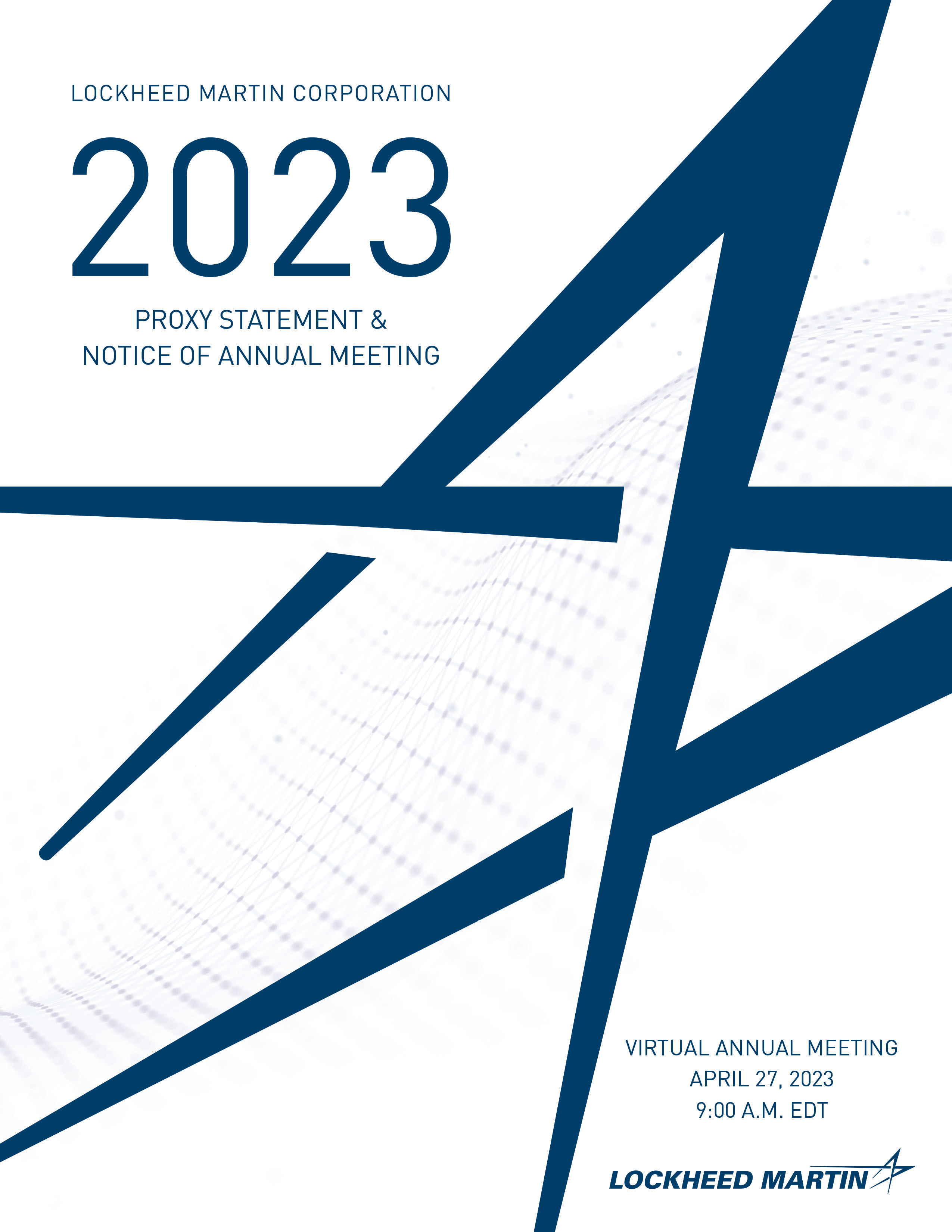















































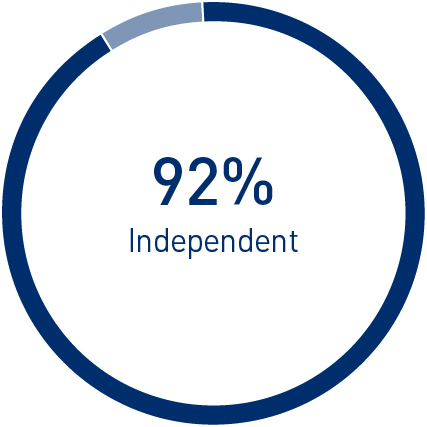


















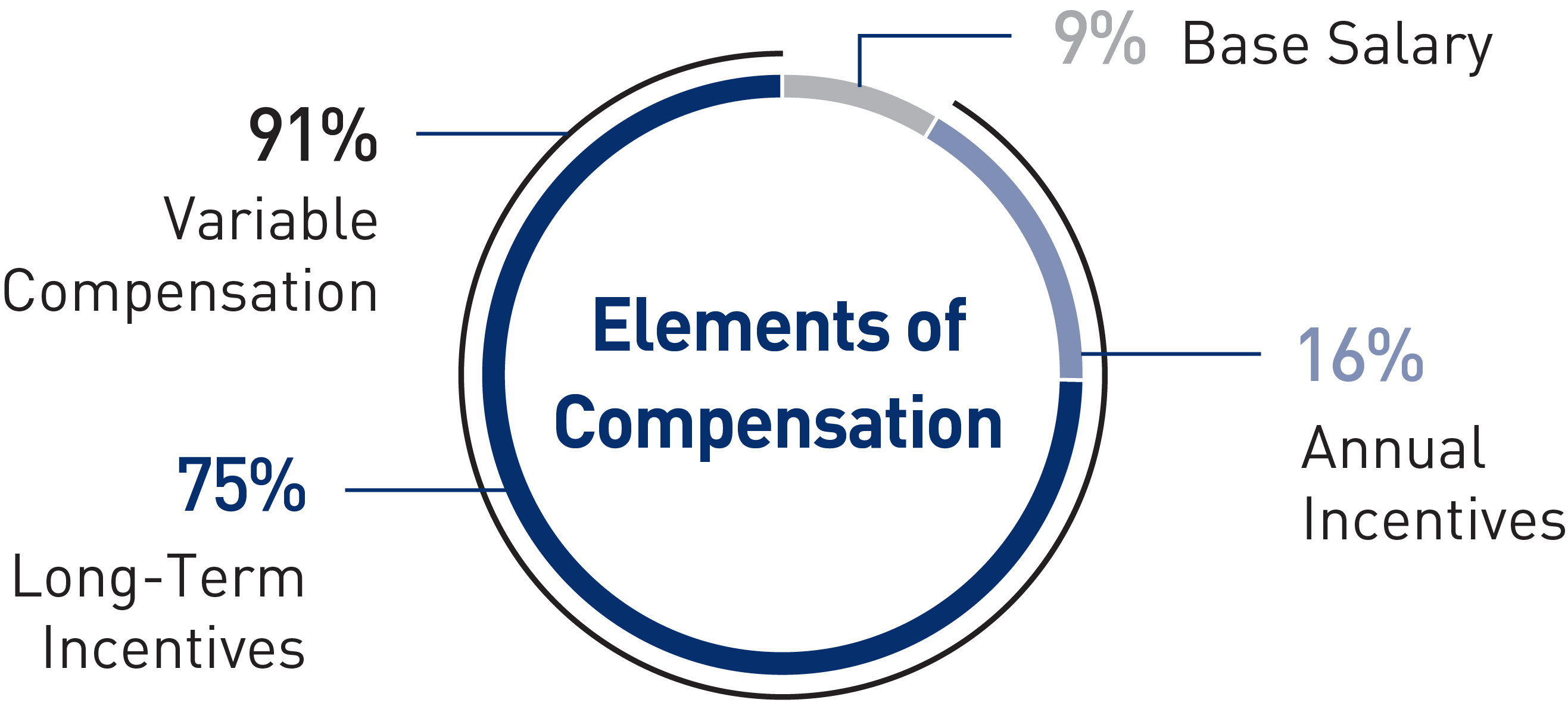

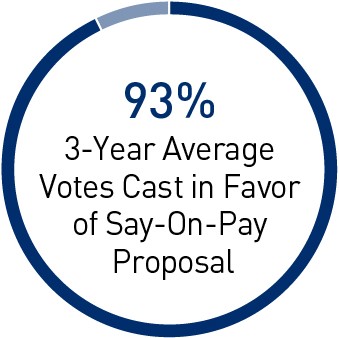









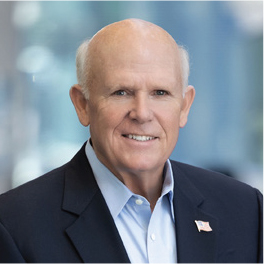

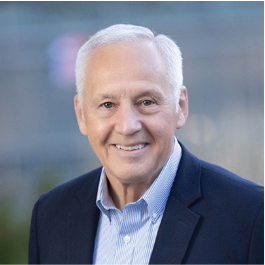











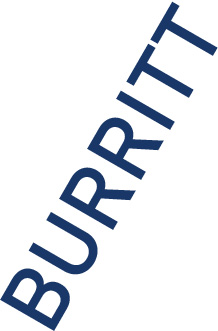
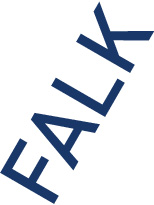

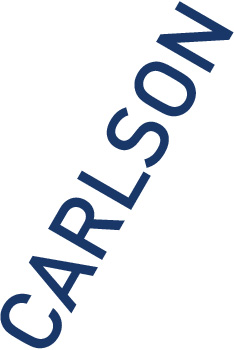
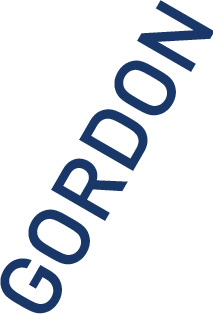



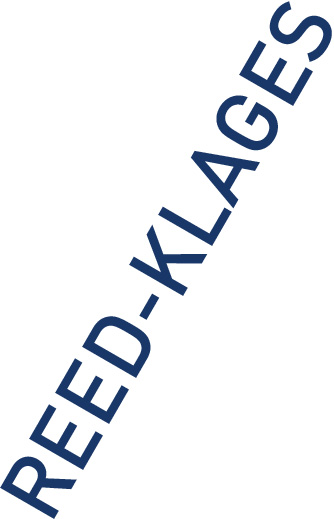
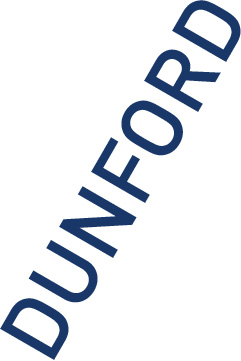
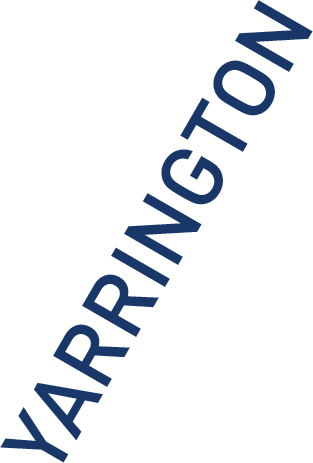
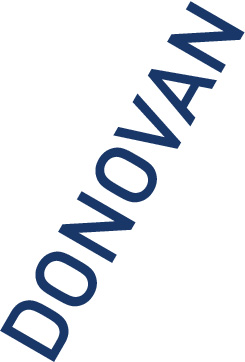





























































































































 Annual election of directors
Annual election of directors Majority voting standard for uncontested director elections
Majority voting standard for uncontested director elections  Directors not receiving majority support must tender resignation to Board for consideration
Directors not receiving majority support must tender resignation to Board for consideration  Market-standard proxy access right for stockholders
Market-standard proxy access right for stockholders  No poison pill
No poison pill  Full disclosure on corporate governance and Board practices
Full disclosure on corporate governance and Board practices One class of voting stock
One class of voting stock  “One share, one vote” standard
“One share, one vote” standard Proactive, year-round engagement with stockholders, including participation of independent directors as appropriate
Proactive, year-round engagement with stockholders, including participation of independent directors as appropriate  Engagement topics during 2022 included: Board composition, diversity and refreshment, stockholder rights, climate risks and related climate change goals, workforce diversity and inclusion, executive compensation, human rights and our Human Rights Report, the conflict in Ukraine, lobbying and political spending and other environmental, social and governance (ESG) matters
Engagement topics during 2022 included: Board composition, diversity and refreshment, stockholder rights, climate risks and related climate change goals, workforce diversity and inclusion, executive compensation, human rights and our Human Rights Report, the conflict in Ukraine, lobbying and political spending and other environmental, social and governance (ESG) matters Engaged independent Lead Director
Engaged independent Lead Director  Annual review of Board leadership structure
Annual review of Board leadership structure  Independent chairs of all Board committees
Independent chairs of all Board committees 12 of 13 director nominees are independent; all Board committees are fully independent
12 of 13 director nominees are independent; all Board committees are fully independent  Four directors are women; one director is an African-American male
Four directors are women; one director is an African-American male  Significant Board refreshment yielding a diverse mix of skills and experiences
Significant Board refreshment yielding a diverse mix of skills and experiences Annual Board and committee self-assessments
Annual Board and committee self-assessments  2022 updates to Governance Guidelines make explicit the Company’s commitment to actively seek out gender and ethnically diverse Board candidates
2022 updates to Governance Guidelines make explicit the Company’s commitment to actively seek out gender and ethnically diverse Board candidates  Board access to officers and employees
Board access to officers and employees  2022 Board attendance of 99%
2022 Board attendance of 99% Overboarding policy ensures Board members can devote sufficient time to the Company
Overboarding policy ensures Board members can devote sufficient time to the Company Compensation programs actively reviewed by the Board and include short- and long-term goals tied to the long-range plan and that underpin our long-term strategy
Compensation programs actively reviewed by the Board and include short- and long-term goals tied to the long-range plan and that underpin our long-term strategy











